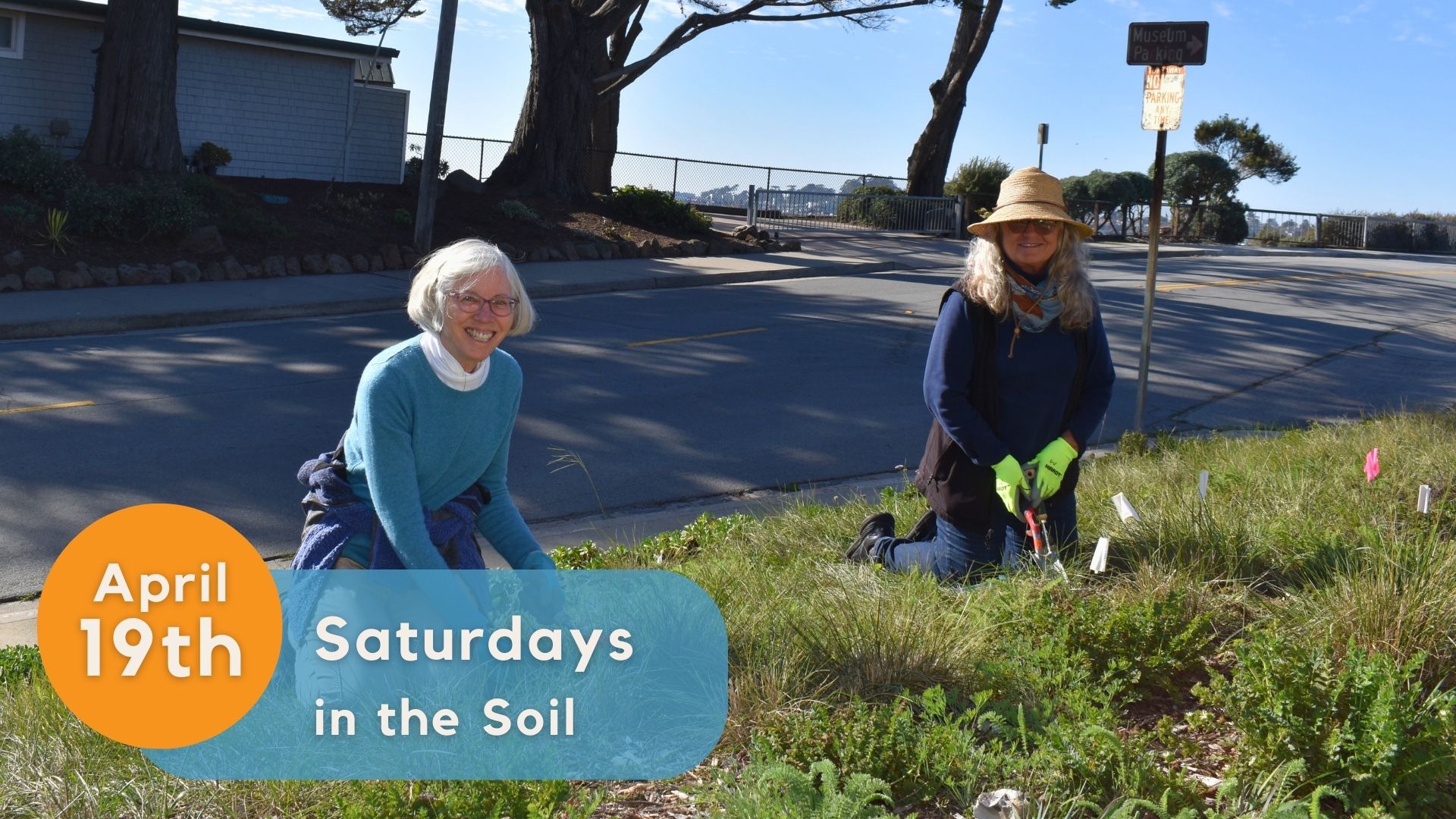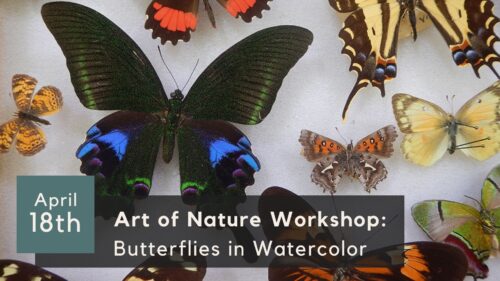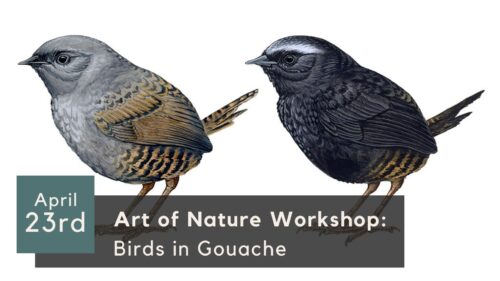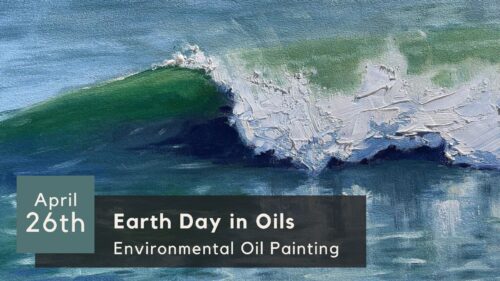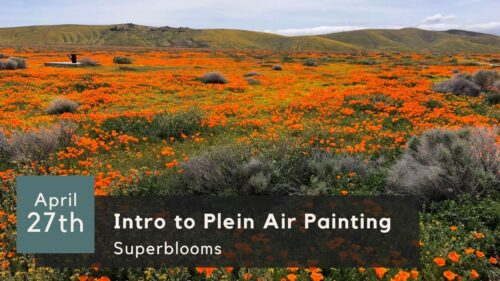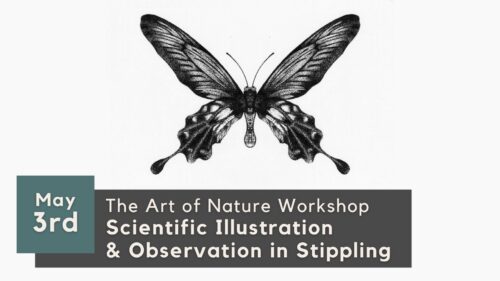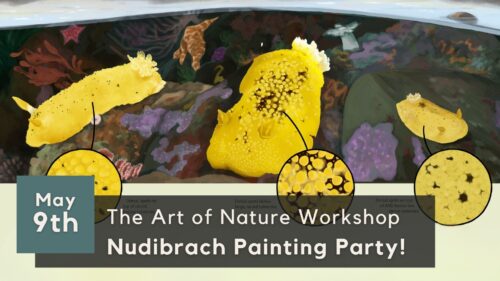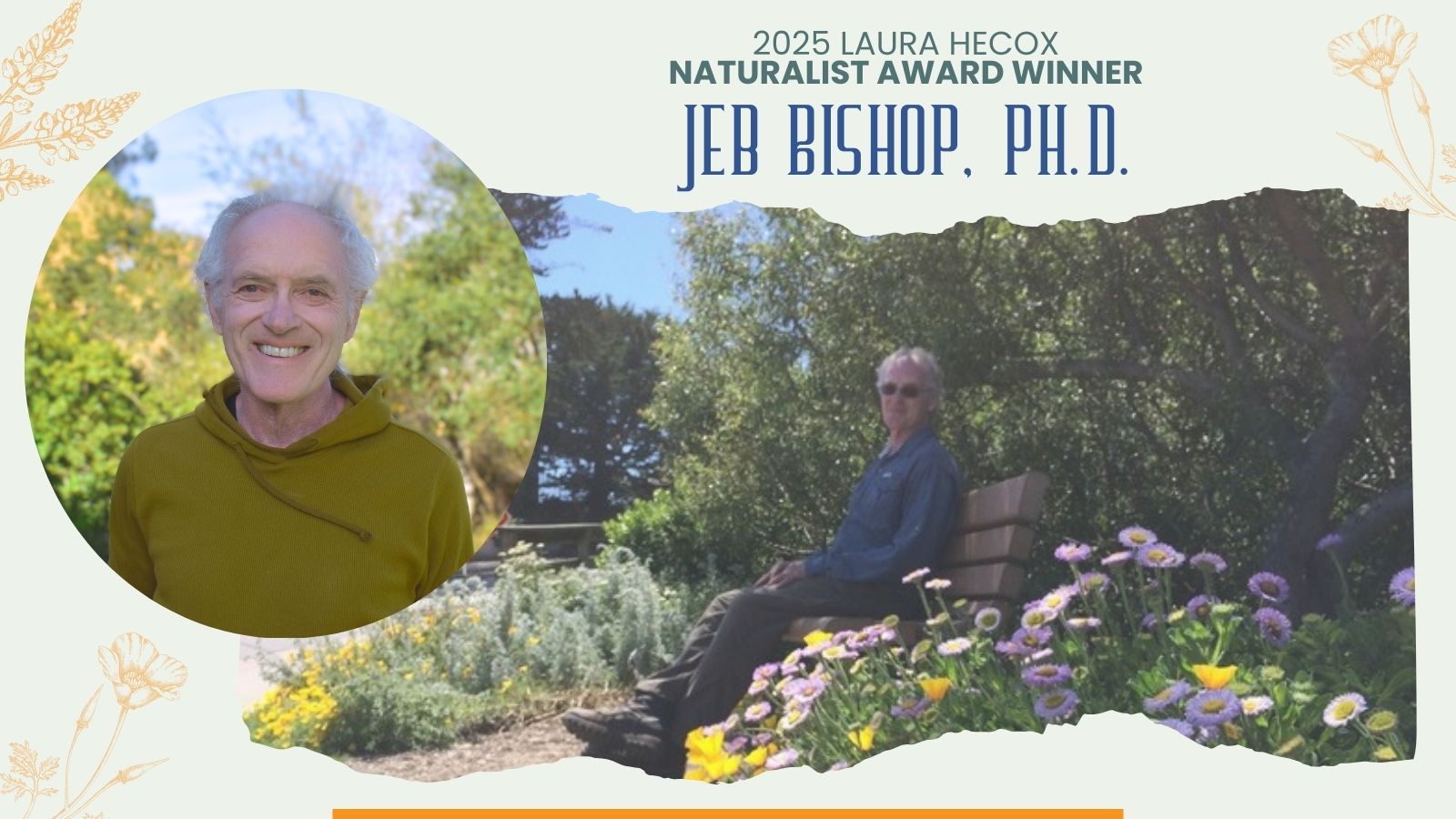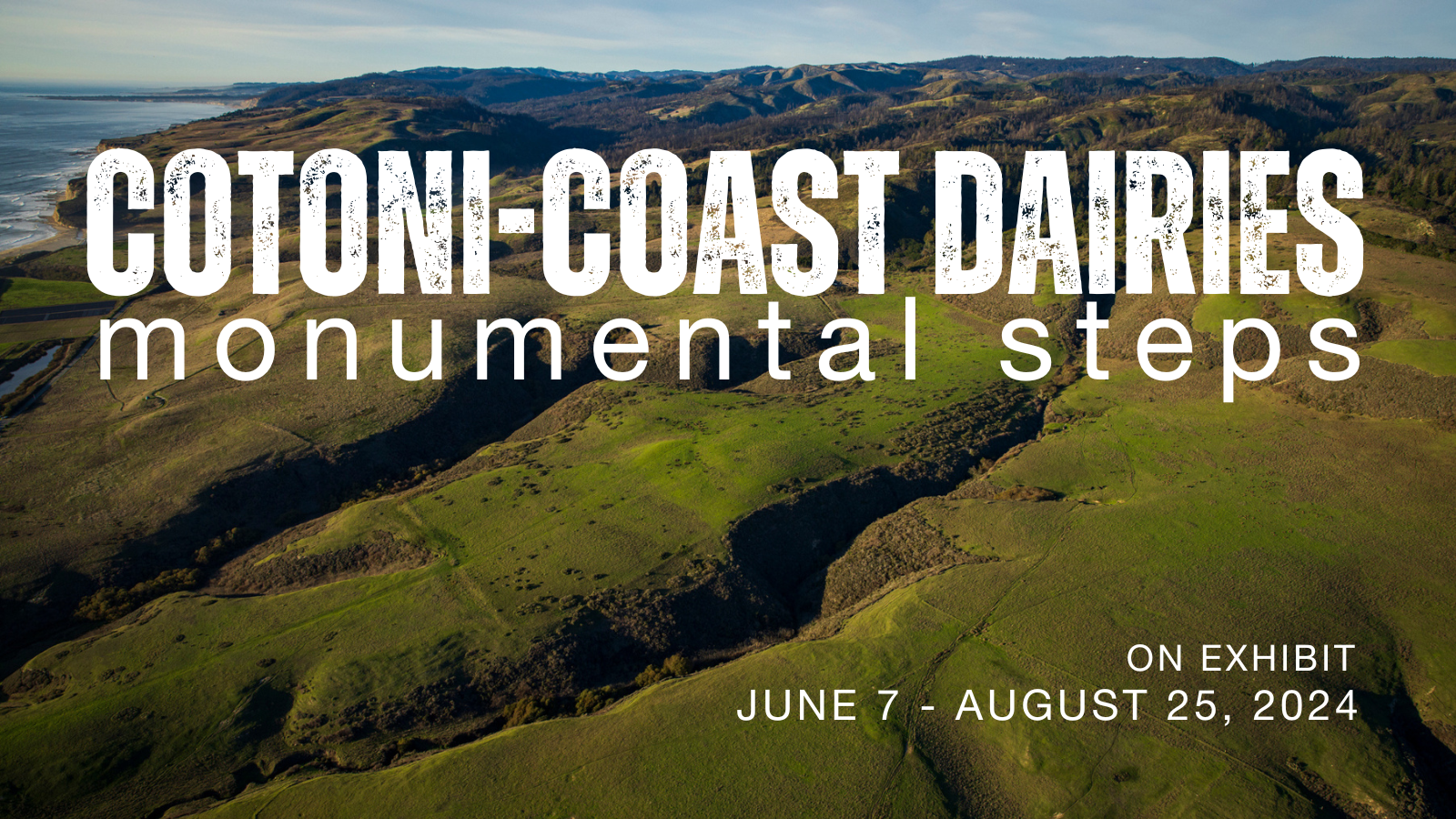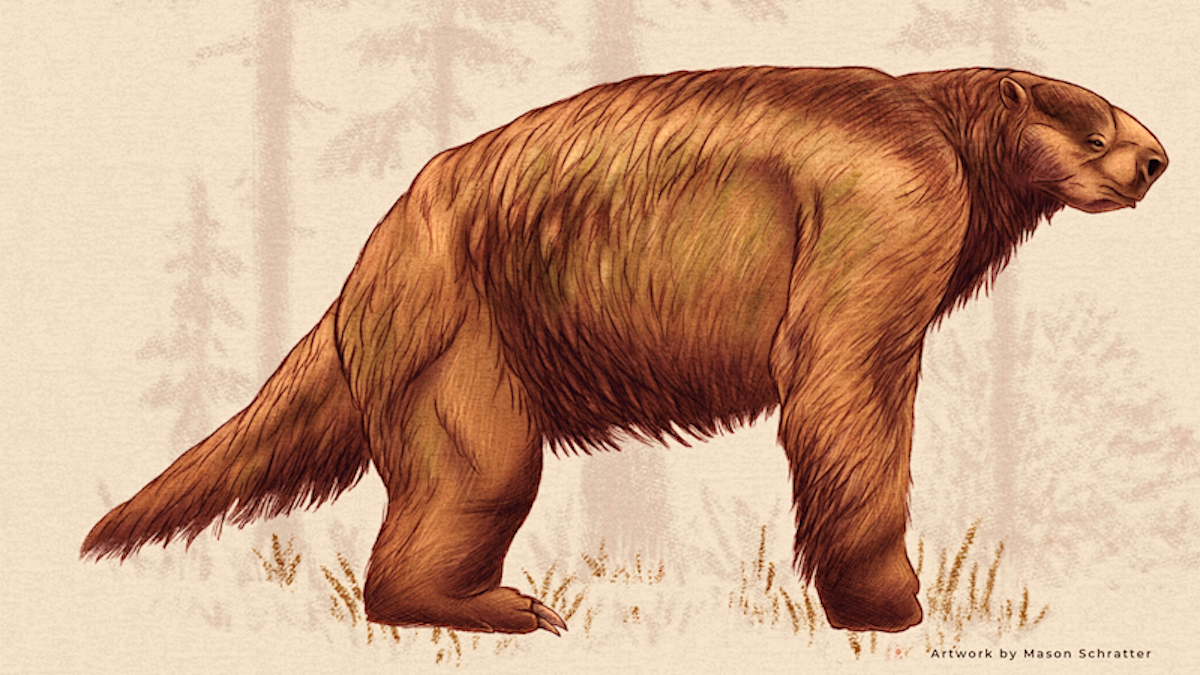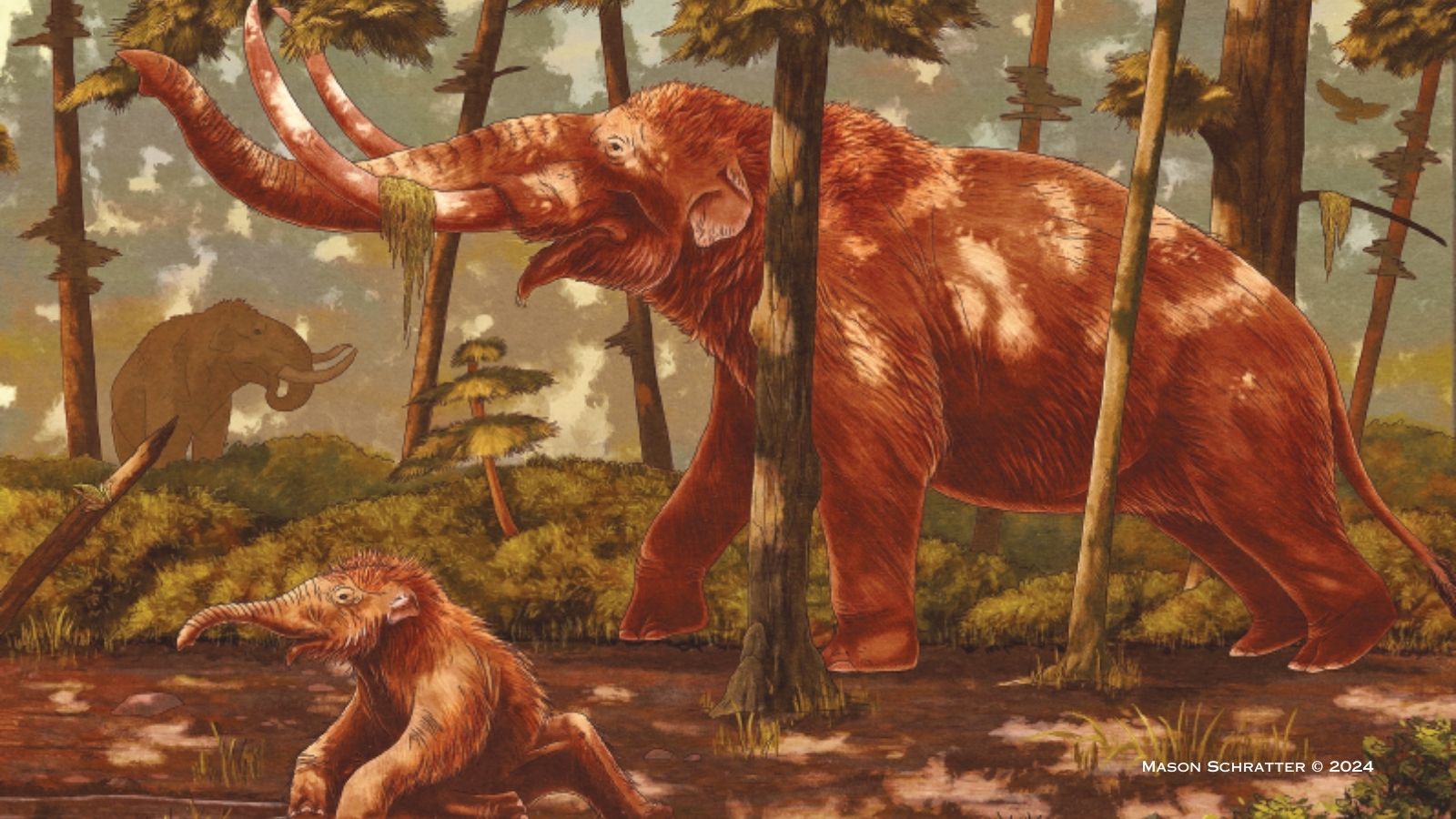4/18 Art of Nature Workshop: Butterflies in Watercolor
As part of this Springtime special, get up close and personal with the art of arthropods!
Featuring beautiful insect displays, from the rarely seen insect taxidermy collection, this program is perfect for aspiring artists and entomologists alike.
Taught by a professional entomological illustrator, this workshop will begin with a scientific presentation on insects before transitioning to the painting portion. Using the Museum’s taxidermy collections as references, participants will learn the basics of watercolor and sketching with step-by-step instruction.
No prior experience required. Participants will have a completed art piece to take home at the conclusion of the workshop. Open to ages 16+/all experience levels. All supplies included.
This class takes place indoors. Supplies may get messy, so casual attire is recommended.
📆 Friday, April 18th
⏱️ 6 – 8 p.m.
📍 Santa Cruz Museum of Natural History
1305 East Cliff DR, Santa Cruz, CA 95062
Materials Fee: All supplies are included in class fee.
Class Fee: $36 – Museum Members receive a special discounted price applied at checkout.
Instructor: Chloe Rickards
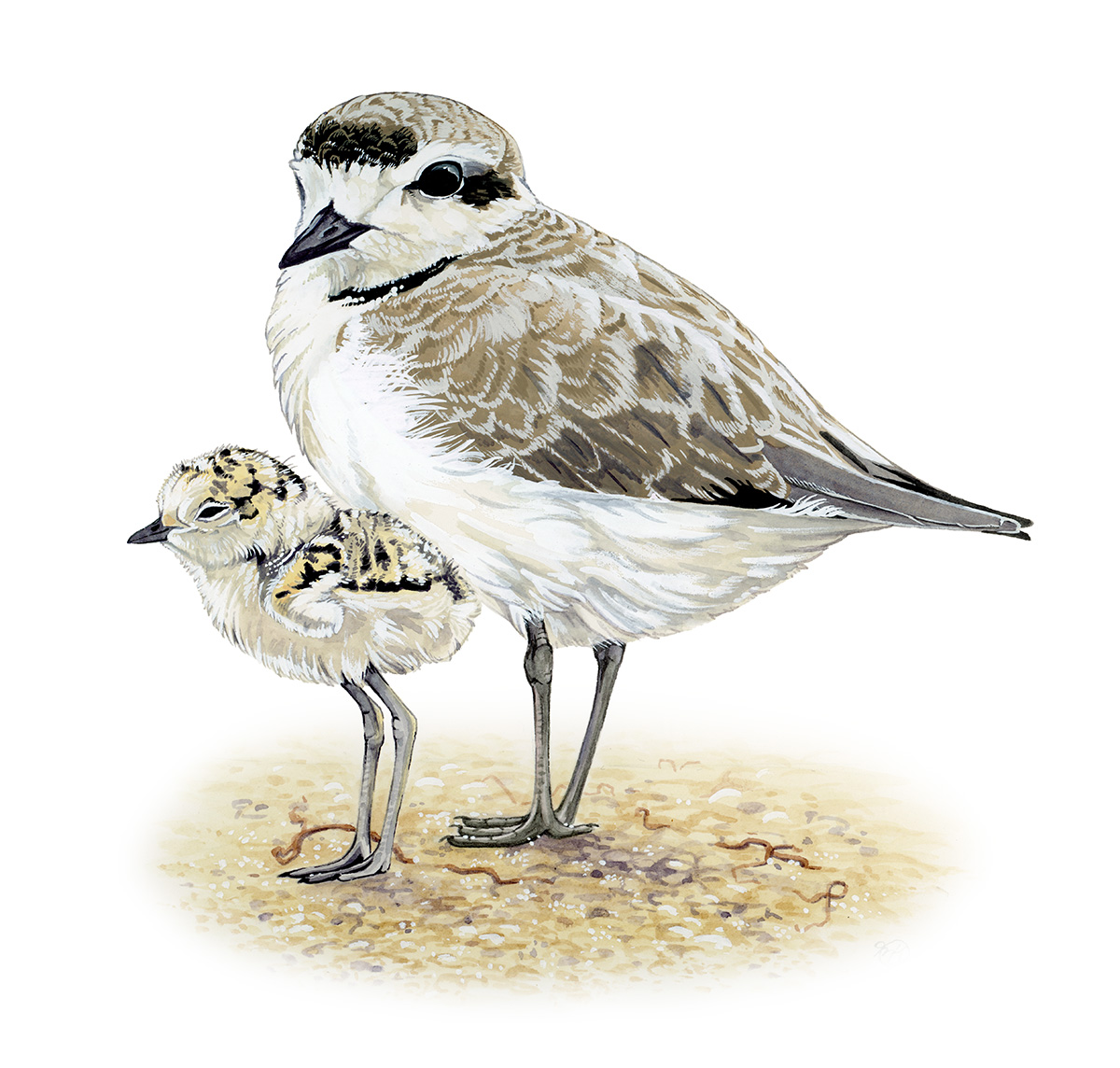
About the Exhibit: The Art of Nature
Scientific illustration brings to life the wonders of nature, from minute zooplankton to extinct megafauna. Explore the beauty and fine details of the world around us in the special exhibit featuring works from 46 local artists in a variety of mediums, all sure to inspire curiosity and deepen connections with science and nature. The Museum has been exhibiting science illustration since 1989 and this beloved annual show is guaranteed to appeal to lovers of both science and art. On view March 28th – June 8th, 2025.
Artwork by: Maria Amorette Klos, 2024
- 4/18 Art of Nature Workshop: Butterflies in WatercolorAs part of this Springtime special, get up close and personal with the art of arthropods! Featuring beautiful insect displays, from the … Read more
- 4/23 Art of Nature Workshop: Birds in GouacheAs part of this Art of Nature special, learn from one of the featured exhibitors on how to capture the intricate beauty … Read more
- 4/26 Earth Day in Oils – Environmental Oil PaintingLet’s go to the beach and learn to paint in oils! In recognition of Earth Day, learn how to use oil paints … Read more
- 4/27 Intro to Plein Air Painting – SuperbloomsGo outside and learn to paint gouache and watercolor landscapes while surrounded by nature as inspiration. This open-air art workshop will teach … Read more
- 5/3 Scientific Illustration & Observation in StipplingLove nature, science, and art but don’t know where to start? Here is your opportunity to master a new skill and bring … Read more
- 5/9 Nudibranch Painting Party!As part of this Art of Nature exhibit special, join an esteemed artist as you learn the science and art behind the … Read more
The Art of Nature is supported by



Mobile Museums
Find our pop-up mobile museums at events around Santa Cruz County and beyond!
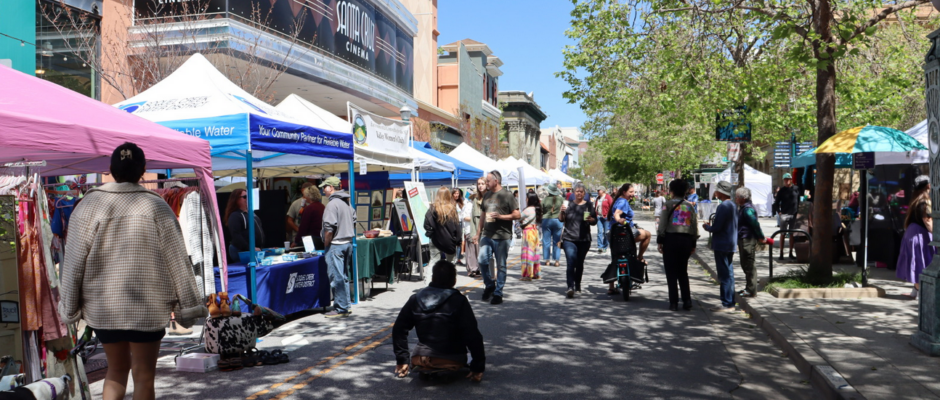
When: Saturday, April 19, 2025 from 11:00 AM to 4 PM
Where: Downtown Santa Cruz (Pacific Avenue, Cooper Street and Abbott Square Market)
4/19 Earth Day Santa Cruz
Find the Santa Cruz Museum of Natural History at Earth Day Santa Cruz! We’ll be hosting environmentally-inspired science activities and displaying wild artifacts from our collections.
Earth Day Santa Cruz is an annual event bringing our community together to promote environmental stewardship, healthy living, and sustainability. Together with local businesses, schools, and community organizations, we engage our citizens through education, hands-on learning, and inspirational activities, and place a special emphasis on youth participation. We strive to celebrate the importance of protecting our Earth’s resources and to collaborate on empowering the environmental movement in Santa Cruz County and beyond.
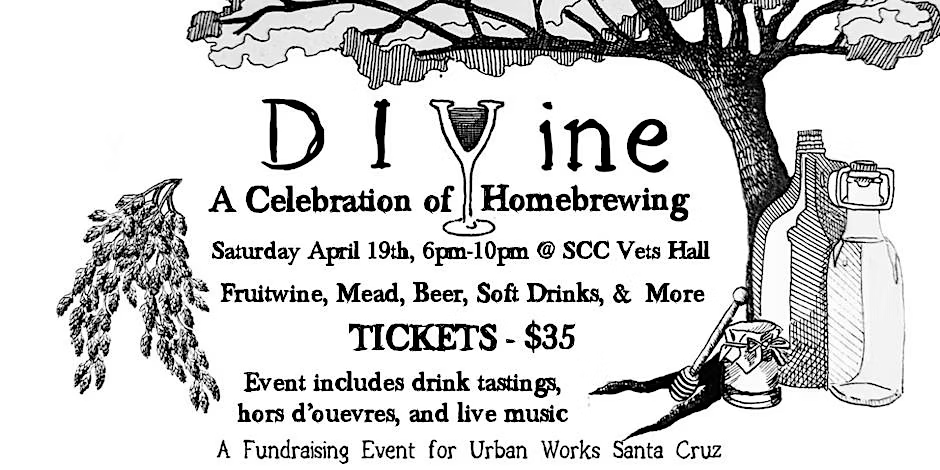
Location: Veterans Memorial Building, 846 Front Street Santa Cruz, CA 95060
Date and Time: Saturday, April 19 · 6 – 10pm PDT. Doors at 5:50pm
Reminder: Guests under 21 must be accompanied by an adult.
4/19 Santa Cruz Brewing Festival
Find the Santa Cruz Museum of Natural History at the Santa Cruz Brewing Festival! The Museum will host a history booth and an activity station.
Connect with other community partners, brewers, and hobbyists. Enjoy drinks in a tasting room, live music, food, and much more.
As a bonus for finding this event on the Museum’s website, you’re entitled to a special discounted ticket. Enter “SCMNH15” at checkout for 15% off!
Get your tickets here:

About the Event:
Artists and art-lovers, this one’s for you! Join us at Wilder Ranch State Park on April 26th from 11-4 for our new special event: Art in the Park!
This event is free, day-use parking is $10.
4/26 Wilder Ranch’s Art in the Park
Find the Santa Cruz Museum of Natural History at Wilder Ranch’s Art in the Park! We’ll be hosting environmentally-inspired art activities and displaying beautiful artifacts from our collections.
Come celebrate the incredible artistic talent we have in our community, especially artists inspired by nature. Bring your art supply of choice and get creative, or take a peek at the park through an artists eyes if you’re not feeling artistic. Enjoy fun activities, participate in mini-workshops, get to know local artists and art organizations by visiting booths, and soak up the spring sun. We hope to see you there! Rain cancels.
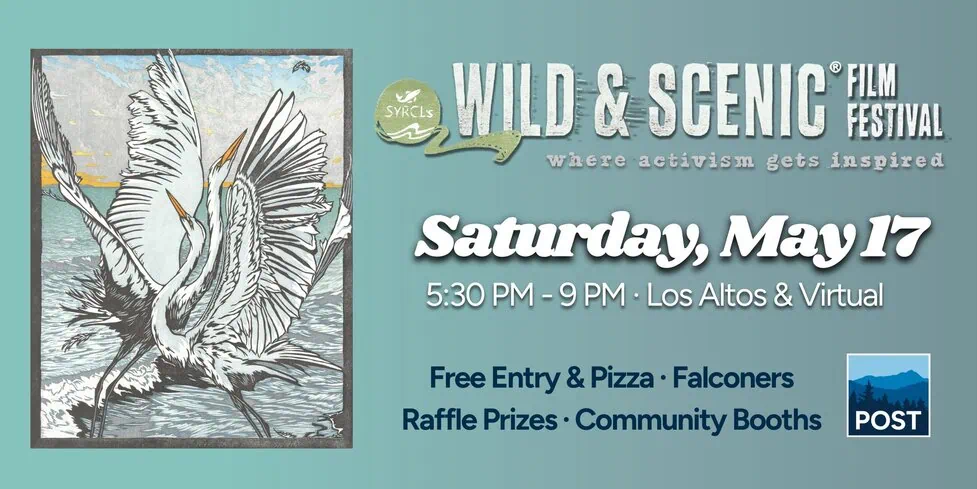
Activities to Enjoy:
- Film screening at the Smithwick Theater, Foothill College
- Live music
- Food trucks
5/17 Wild & Scenic Film Festival with the Peninsula Open Space Trust
Join the Santa Cruz Museum of Natural History as we team up with the Peninsula Open Space Trust for an unforgettable evening at the 2025 Wild & Scenic Film Festival. Inspiring environmental films, live music, and an engaging Community Fair all come together for a night of fun and environmental connections!
The Wild & Scenic Film Festival is the largest film festival of its kind, showcasing the best and brightest in environmental and adventure films. Festival viewers can expect to see award-winning, environmentally inspired short films and learn more about POST and our partners’ work here on the Peninsula and in the South Bay.
Details of the Festival:
- Date: Saturday, May 17th
- Time: 5:30 p.m. – 9 p.m.
- Location: The Smithwick Theatre is located at Foothill College, 12345 El Monte Road, Los Altos Hills, CA 94022
- Cost: Free, limited space
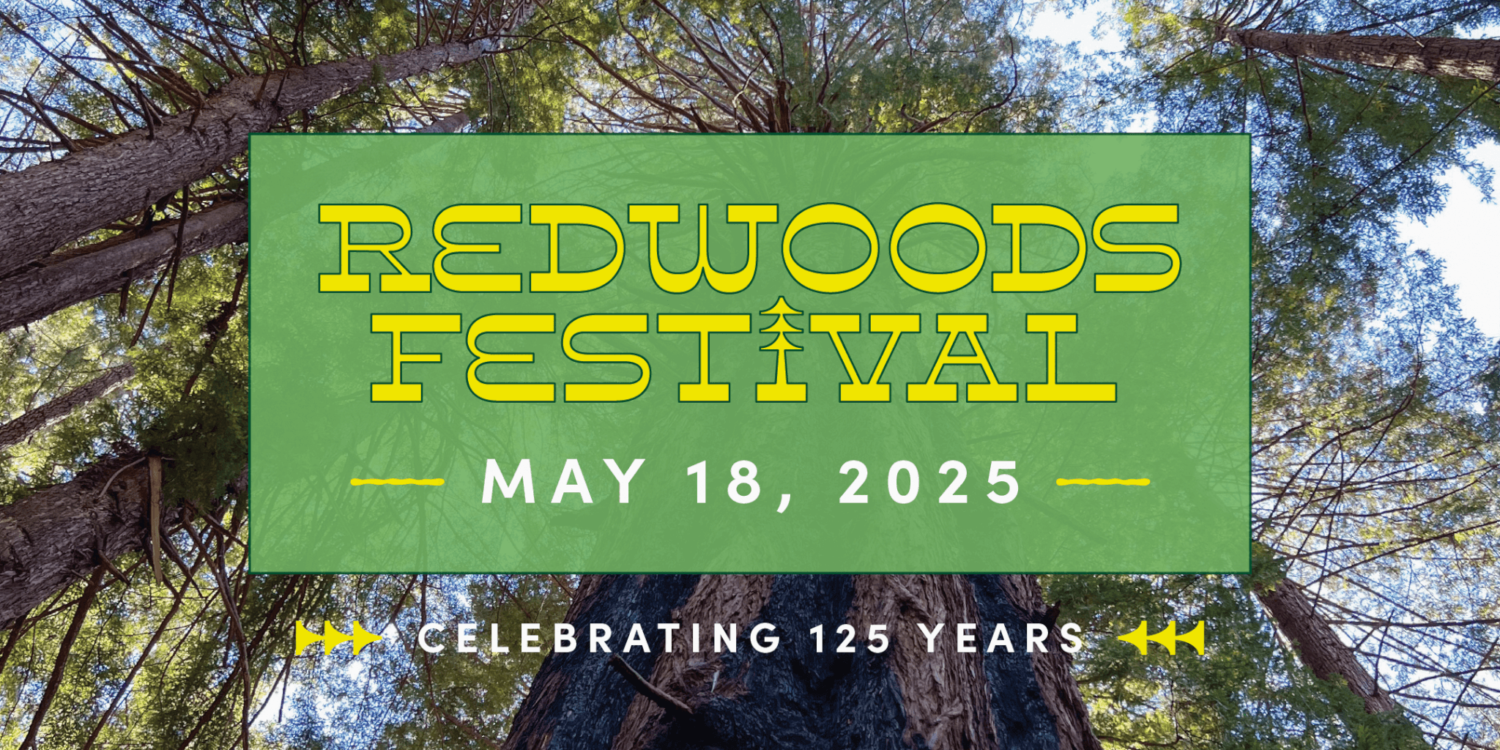
Activities to Enjoy:
- A scenic train ride through the beautiful Santa Cruz Mountains
- Guided hikes in partnership with Henry Cowell State Park
- Live music
- Food trucks
5/18 The Redwoods Festival with the Sempervirens Fund
Join the Santa Cruz Museum of Natural History as we team up with the Sempervirens Fund to celebrate 125 years of protecting redwoods in the Santa Cruz Mountains!
Hosted among the redwoods at the historic Roaring Camp, our first-ever Redwoods Festival will celebrate the redwoods. A day filled with fun, connection, and a celebration of the incredible work we’ve accomplished together to protect these majestic redwood forests
Details of the Festival:
- Date: Sunday, May 18, 2025
- Time: 1:00 PM – 4:00 PM
- Location: Roaring Camp, 5401 Graham Hill Rd, Felton, CA 95018
- Cost: Parking only
Naturalist Award Recipient 2025: Jeb Bishop
Jeb Bishop Ecologist, Volunteer, and Advocate for Native Plant Restoration
The Santa Cruz Museum of Natural History is pleased to announce Dr. Jeb Bishop as the 2025 Laura Hecox Naturalist Award recipient. Jeb Bishop is a passionate ecologist and community leader dedicated to native plant restoration and ecological conservation. With an innate curiosity for the natural world, Jeb earned a Ph.D. in biochemistry from the University of Michigan and enjoyed a successful career in the medical diagnostics industry before retiring in 2014.

Jeb’s interest in sustainable landscaping and drought-tolerant plants was sparked when he moved to California in 1990 during the tail end of a seven-year drought. His early efforts taking on the landscaping for his local homeowners association engendered his appreciation for native ecosystems and propelled him into volunteering in habitat restoration across Santa Cruz County. Over many years, he gained extensive knowledge of native flora and invasive species through hands-on experience and collaboration with fellow volunteers. Linda Brodman, leader of the local CNPS habitat restoration team, was a seminal influence on Jeb’s early development in restoration, providing inspiration, education, and mentoring.
Jeb gravitated over time towards two restoration projects both within walking distance of his home in the Seabright neighborhood. A few years before his retirement, he became the first volunteer in the new group formed by Nancy Lenz to restore Pilkington Creek to native habitat. Gaining experience with Nancy’s support, he became more knowledgeable in riparian woodland ecology. He later went on to lead this project for four years.
At the point of retiring in 2014, Jeb shifted his focus to a second restoration project, on Seabright State Beach, being led by Bill Henry, the founder and director of Groundswell Coastal Ecology. Acquiring new perspectives and learning dune and coastal bluff ecology under Bill’s mentorship, Jeb went on to lead a team of volunteers for eight years. They successfully transformed this area, reducing invasive species cover from about 90% to just 10% and replacing them with thriving native vegetation.
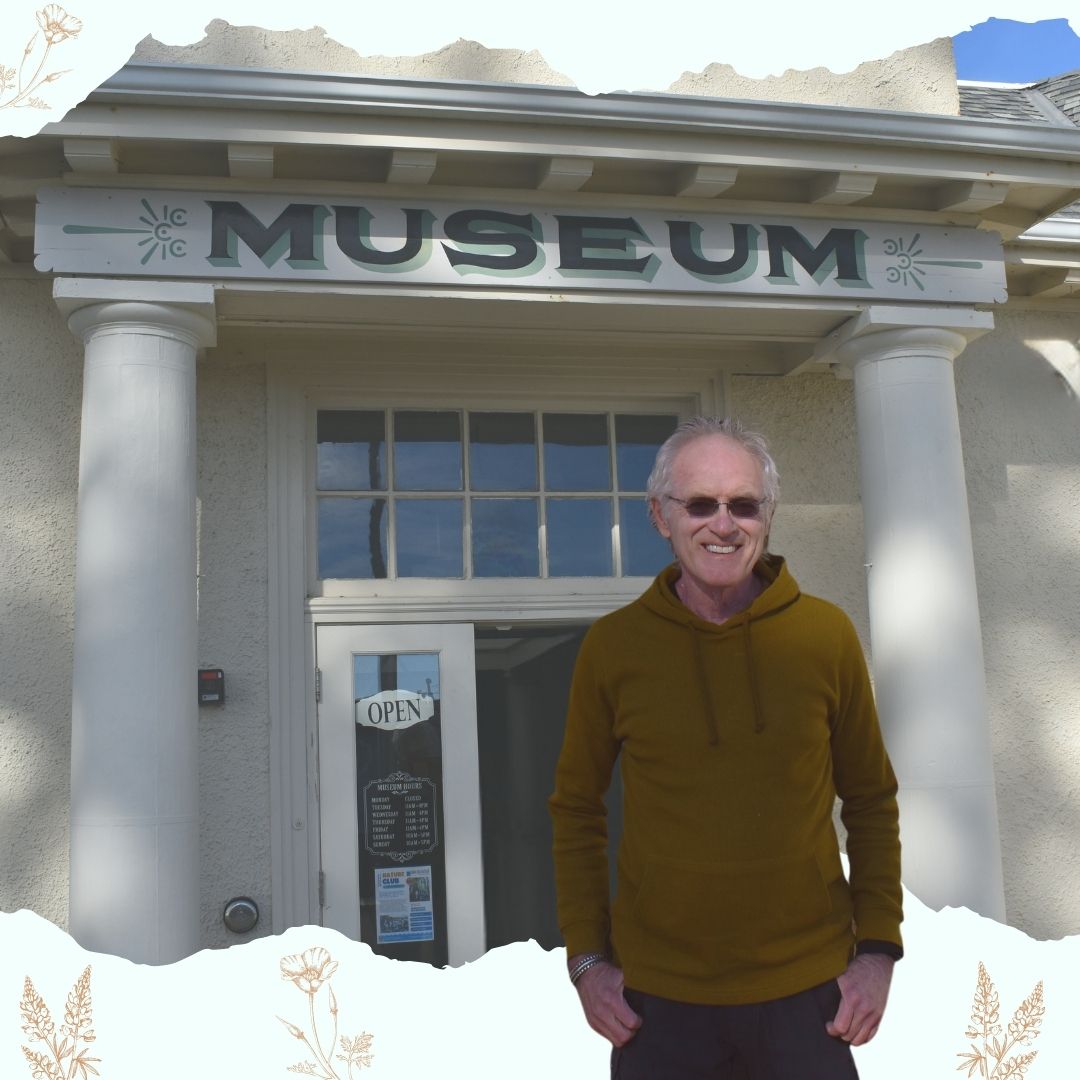
Jeb was a longterm volunteer with restoration projects at Pilkington Creek and Seabright Beach. Both within walking distance of his home in the Seabright neighborhood and the Santa Cruz Museum of Natural History.
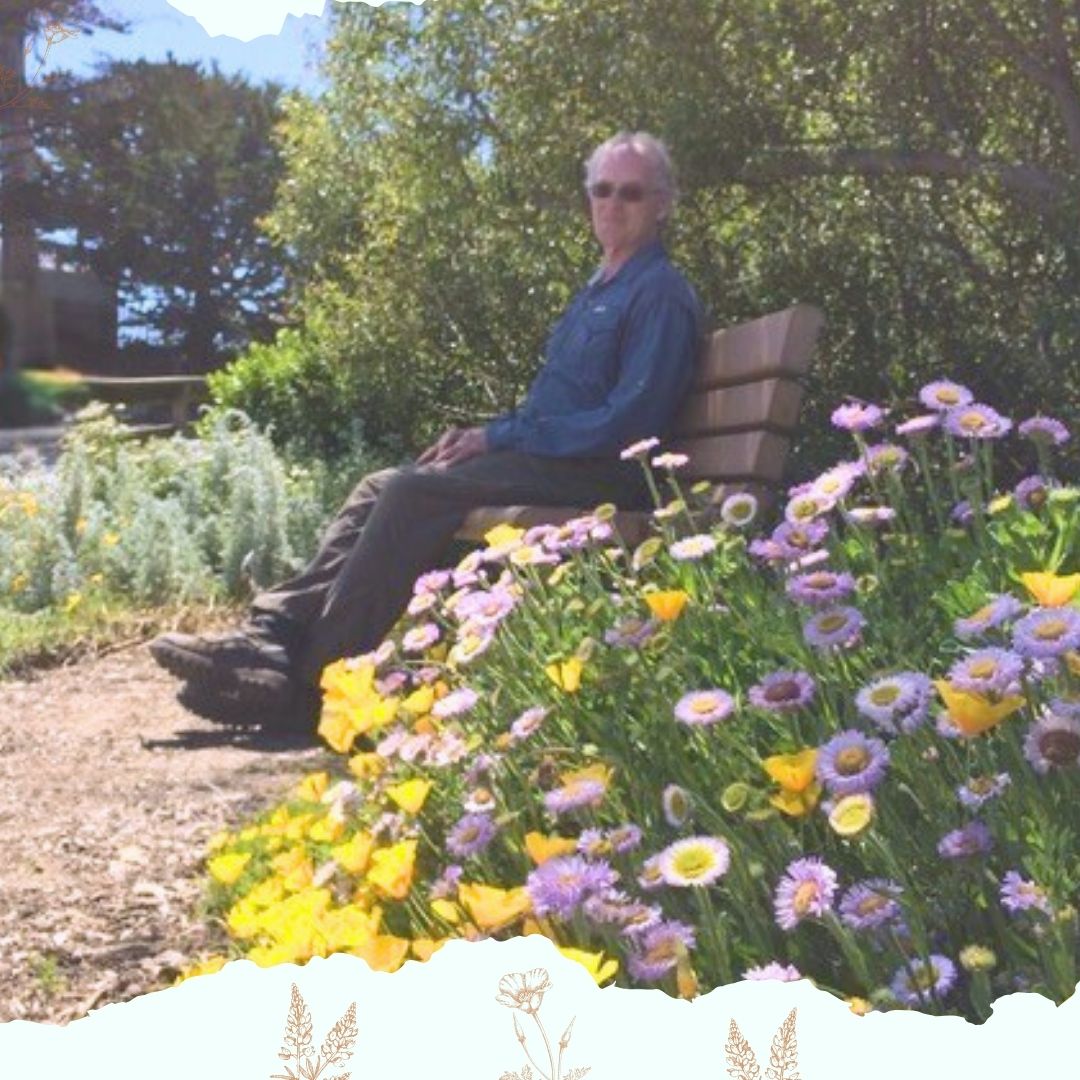
In both his work at Seabright Beach and Pilkington Creek a hallmark of Jeb’s approach to ecological restoration was his meticulous attention to soil conditions, sunlight, and seasonal factors to ensure the long-term survival of native plants. Another hallmark was persistence – returning to the same locations again and again and again over years, weeding and watering repetitively until the plants were well established and self-sustaining. These efforts revitalized the local environment, creating vital habitats for native wildlife and pollinators, including bumblebees, butterflies, snowy plovers, a burrowing owl, and many other species. Pilkington Creek is now also an acknowledged birding hotspot.
Even as Jeb faced health challenges in very recent years, the organizational and team structures he built ensured that these projects remained vibrant. His collaborations with the City of Santa Cruz, the Santa Cruz Museum of Natural History, California State Parks, and Groundswell Coastal Ecology helped establish sustainable practices that continue to support them. By mentoring others and passing on his expertise, he fostered a culture of environmental stewardship that endures beyond his active involvement. His leadership inspired a community of
naturalists and volunteers and created a lasting legacy of ecological restoration. Today, Jeb’s efforts serve as a blueprint for community-driven conservation, exemplifying the power of collective action and education in preserving and restoring natural ecosystems.
Museum of the Macabre 2024 Photos
Thank you to the many community members who joined us for the 8th annual #MuseumOfTheMacabre! Please enjoy these photos and tag us @santacruzmuseum!


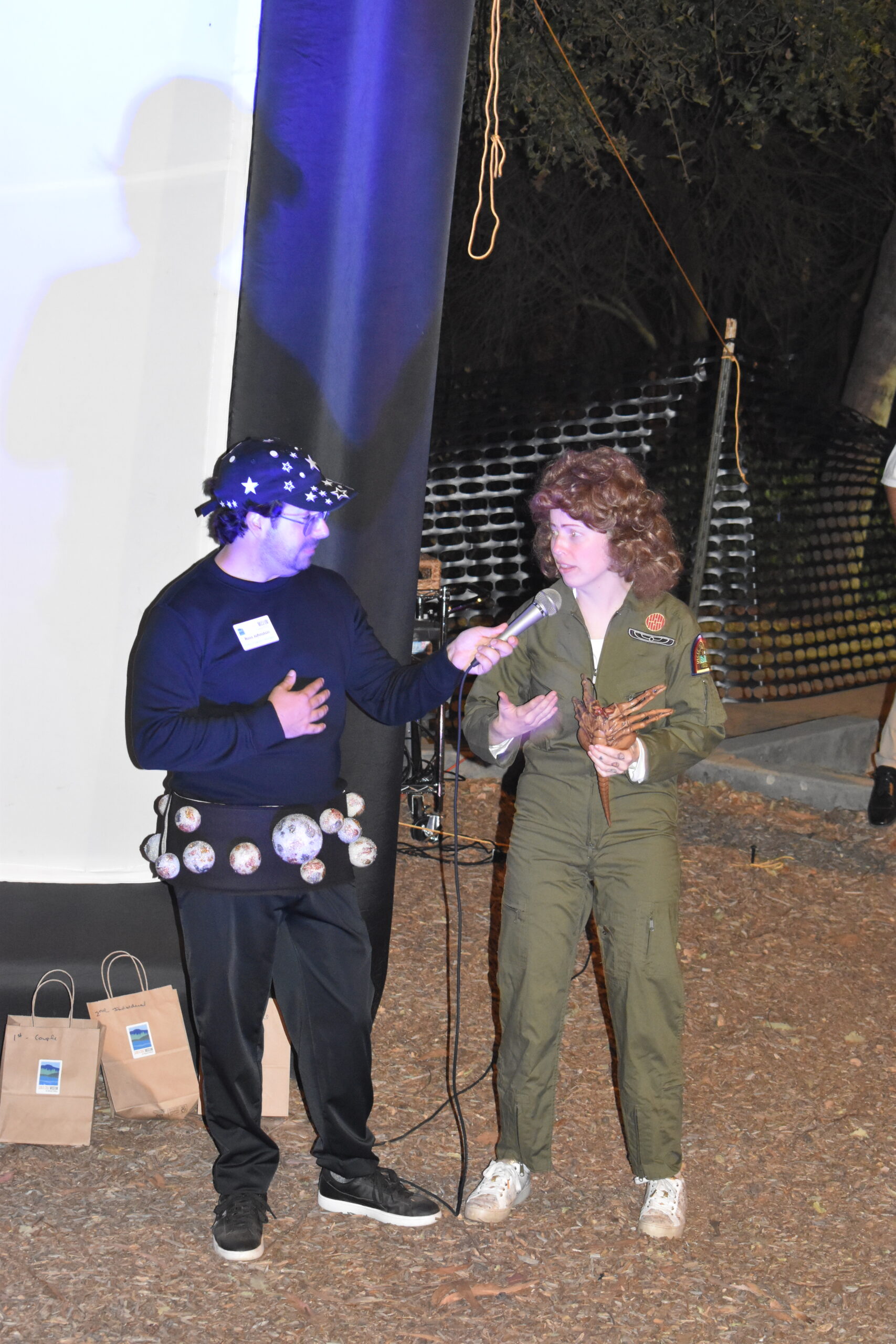
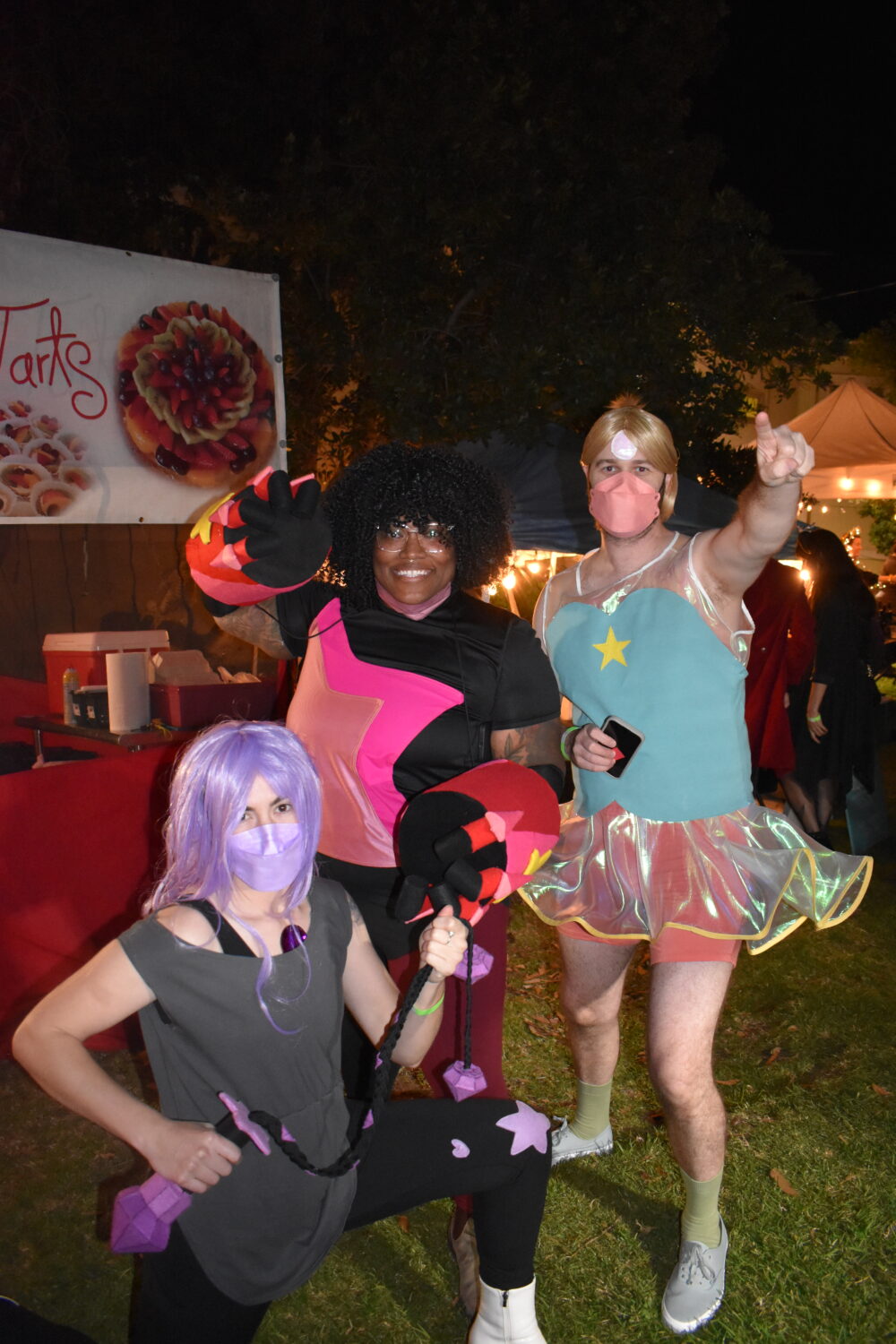
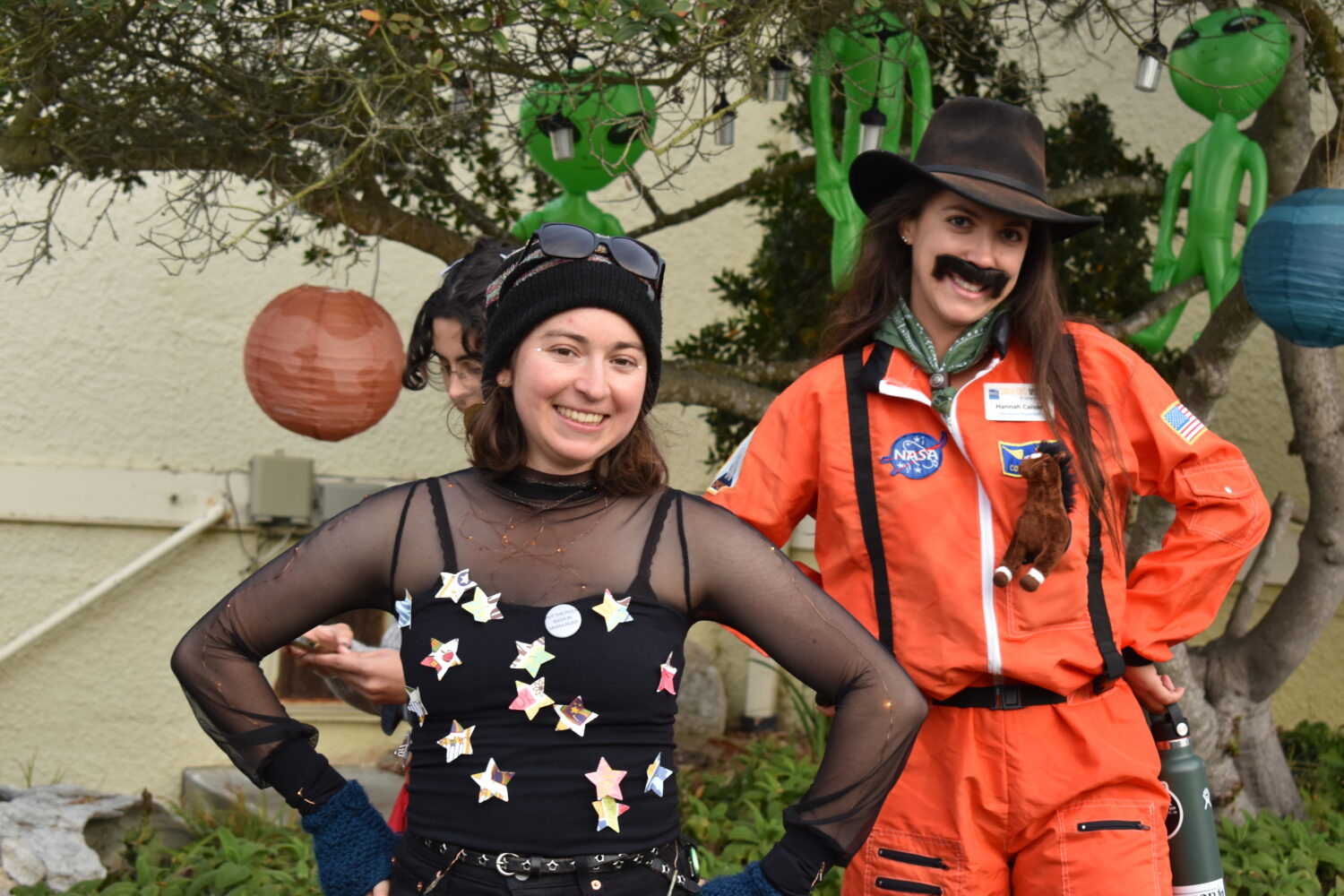

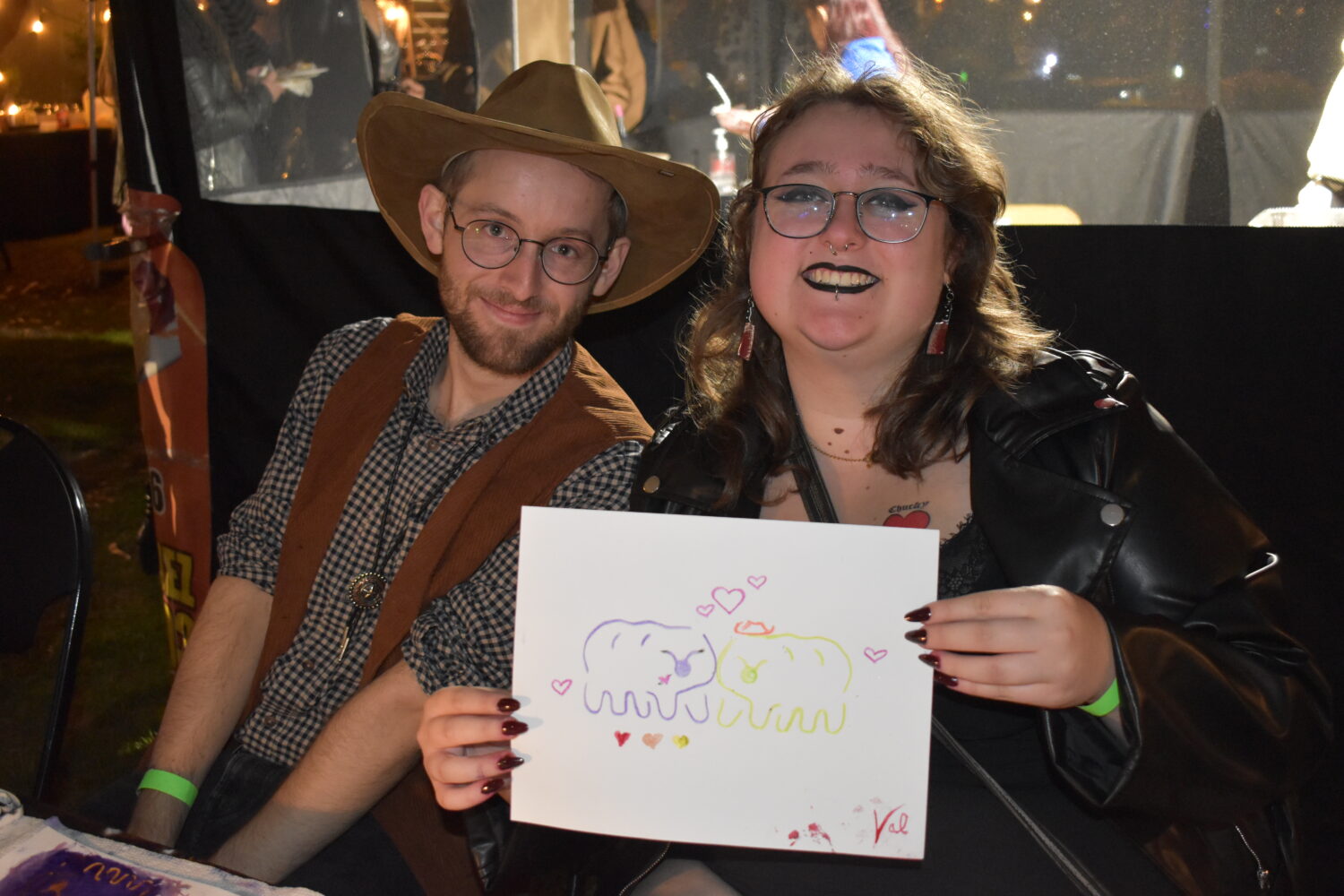



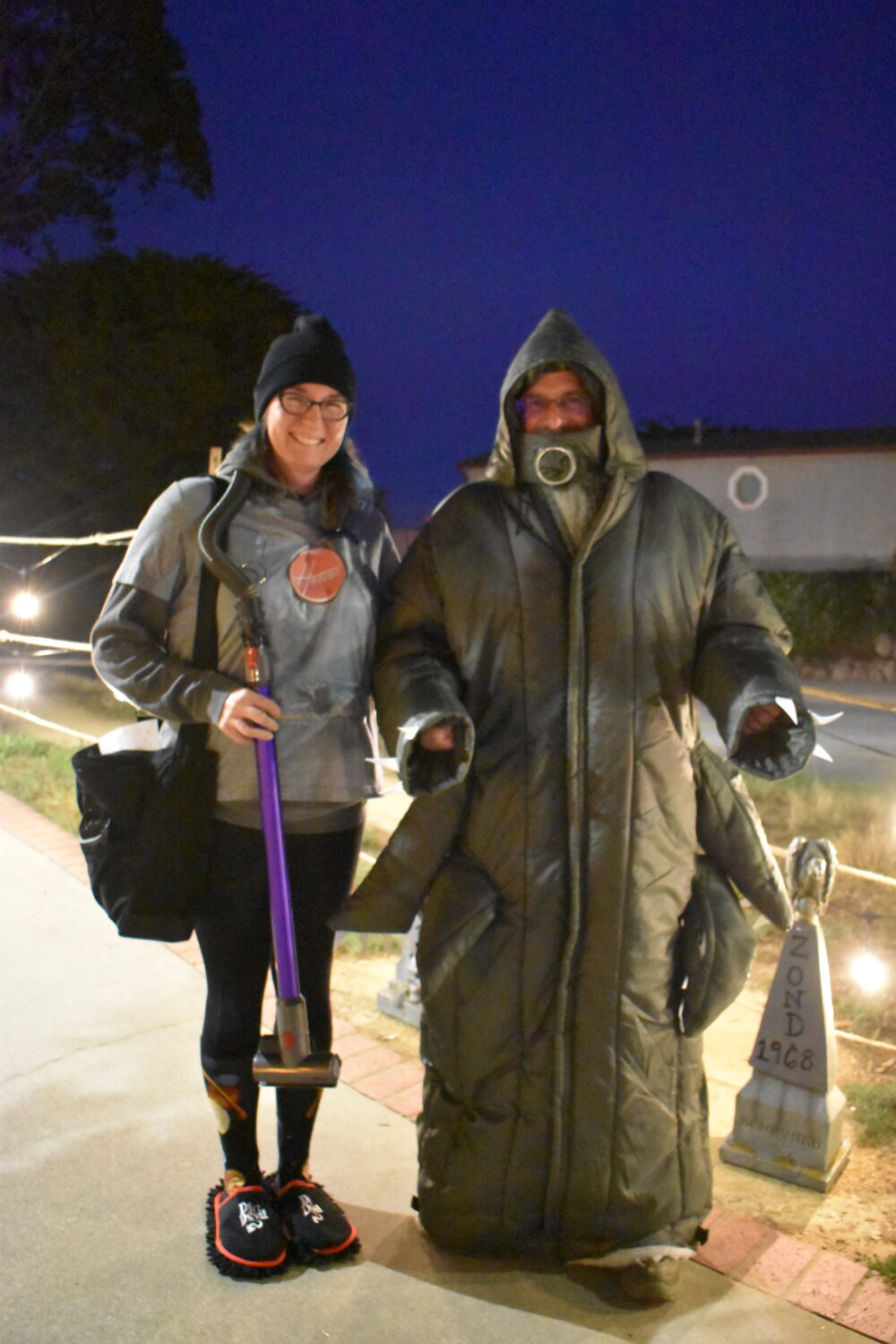


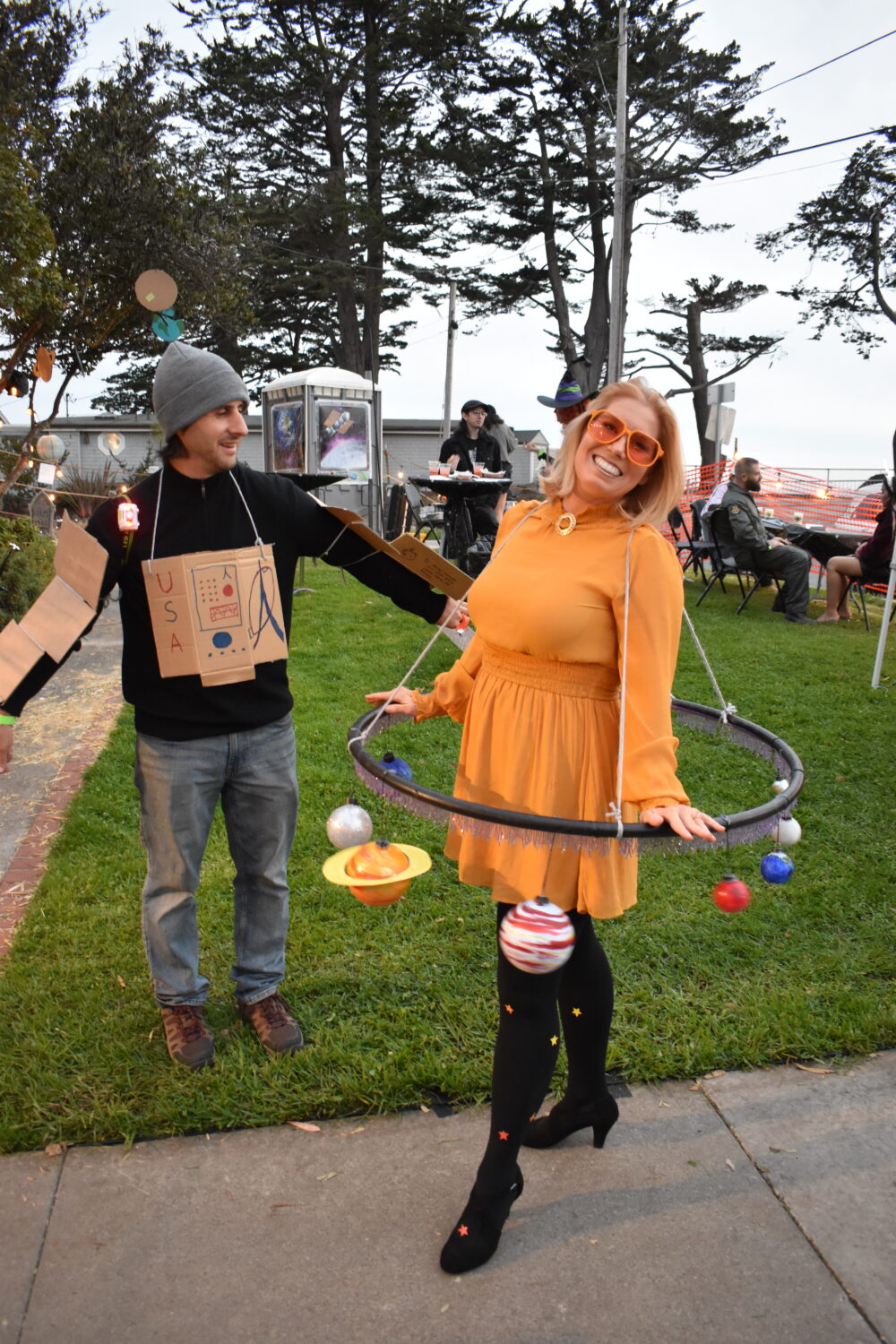
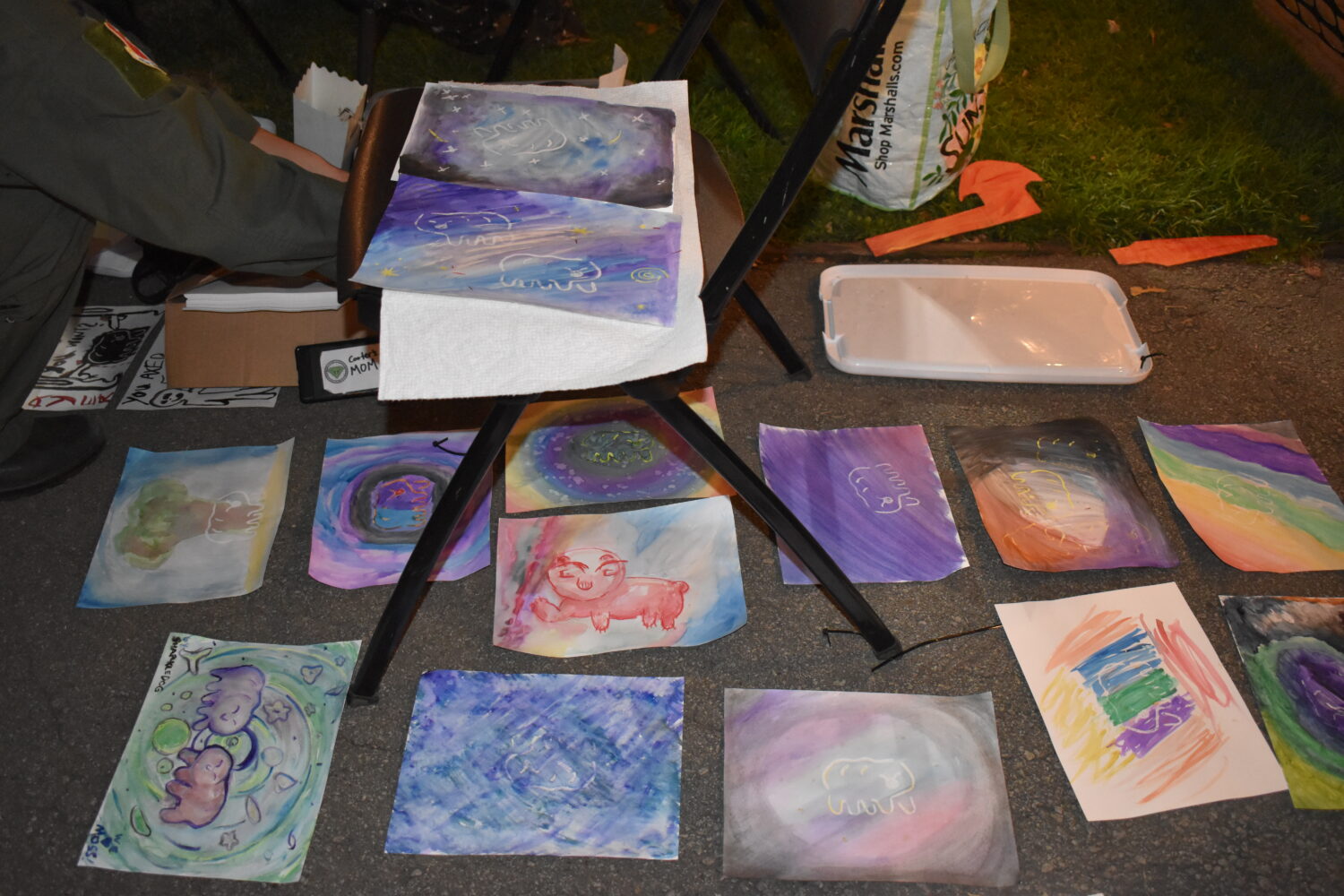
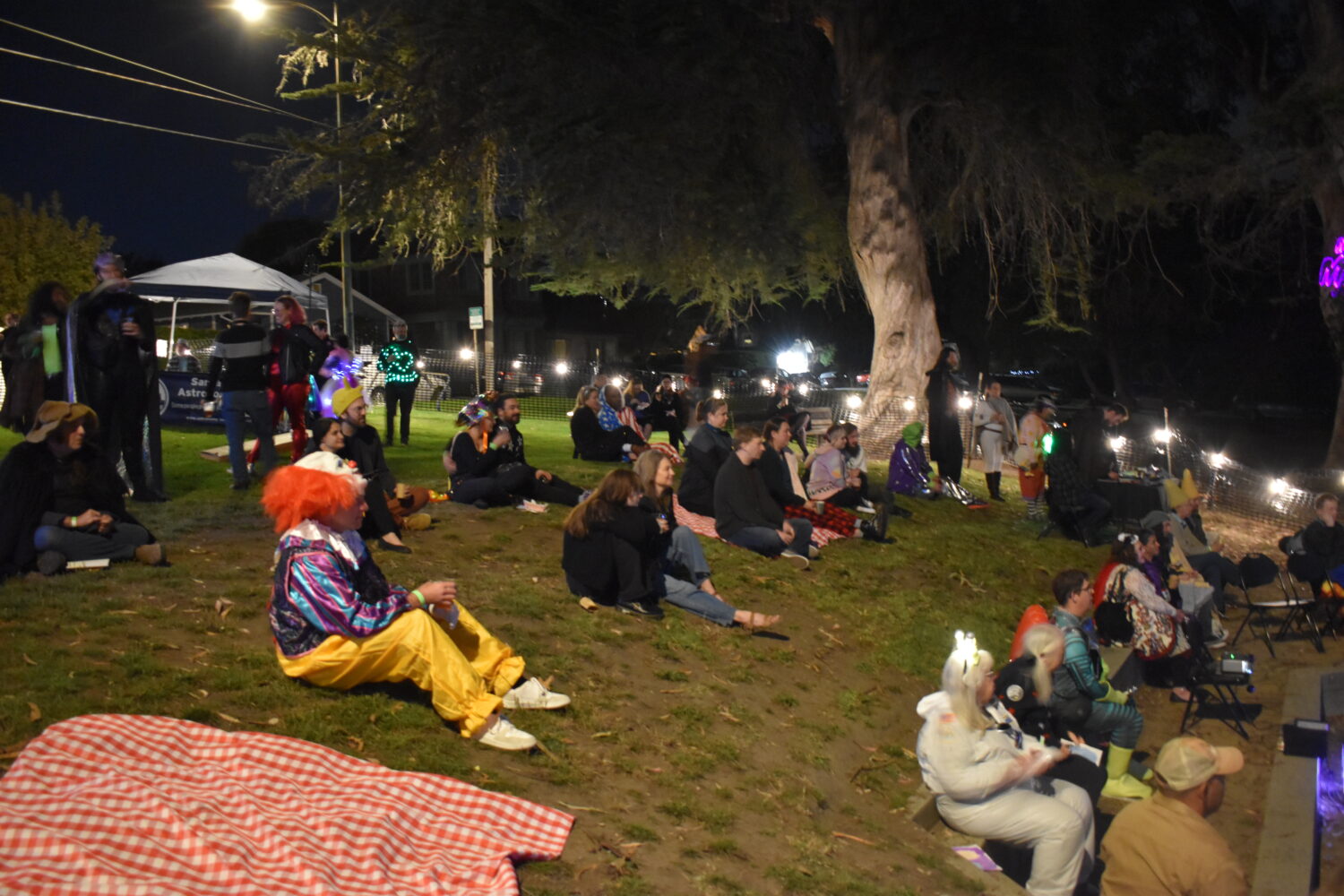

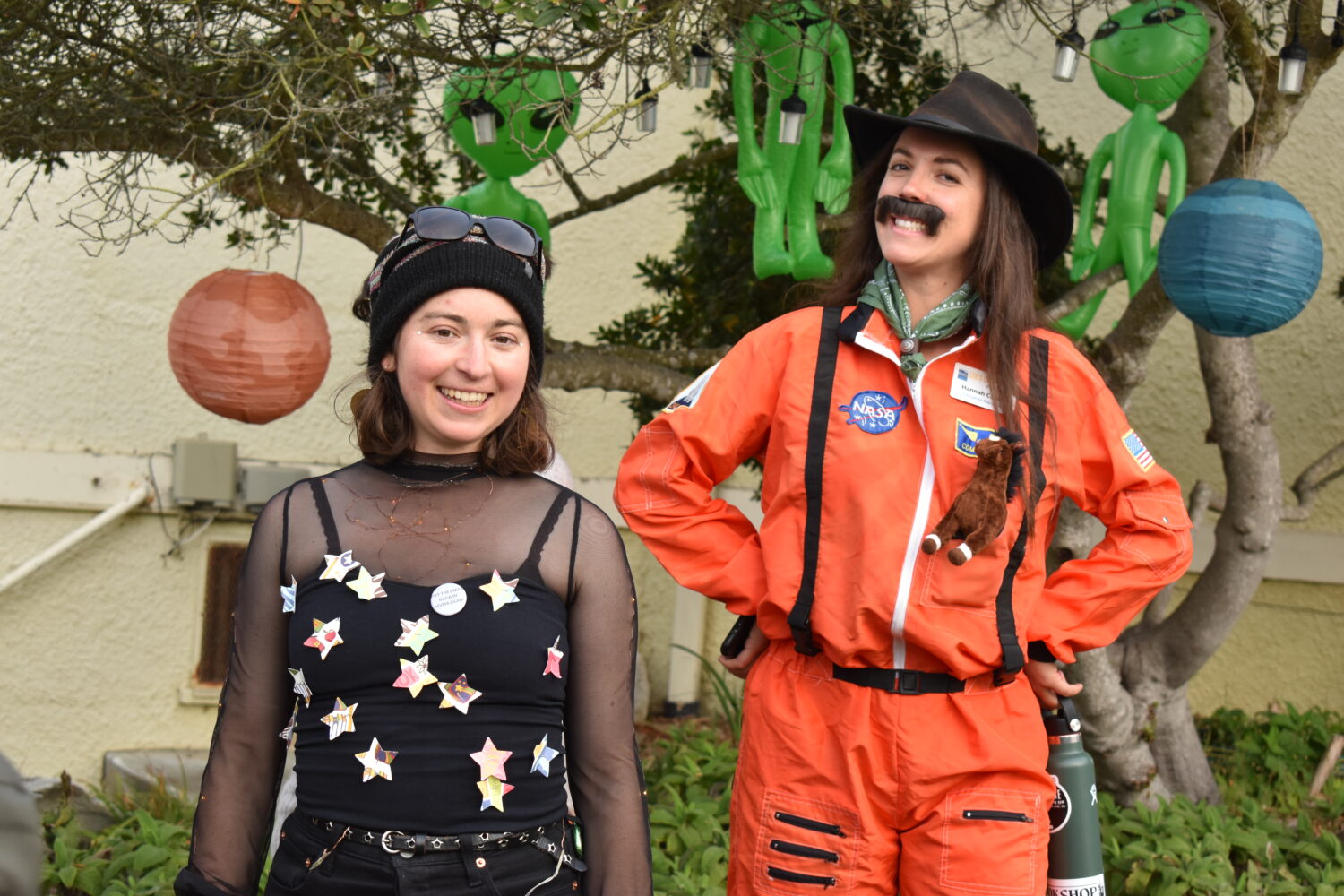
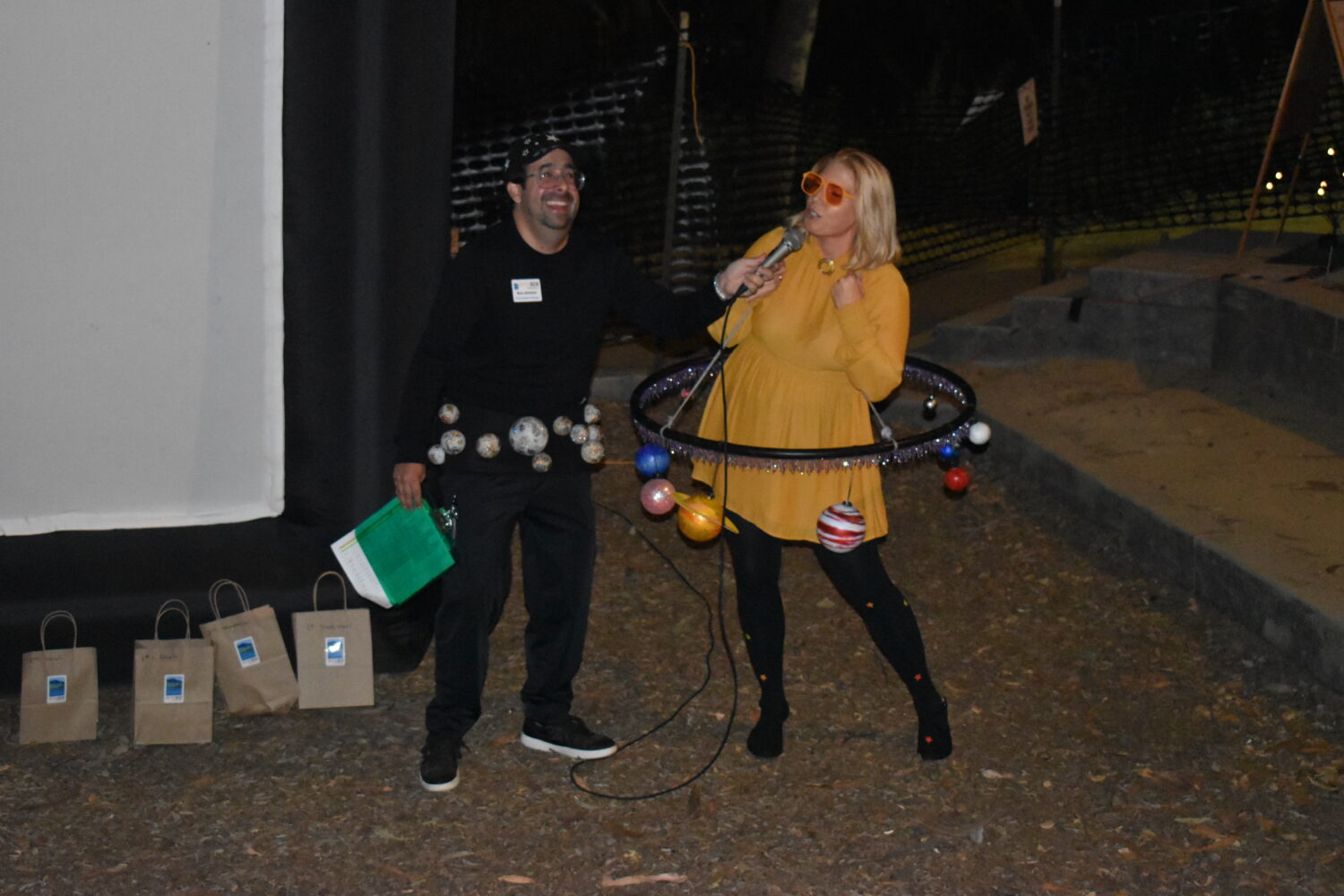



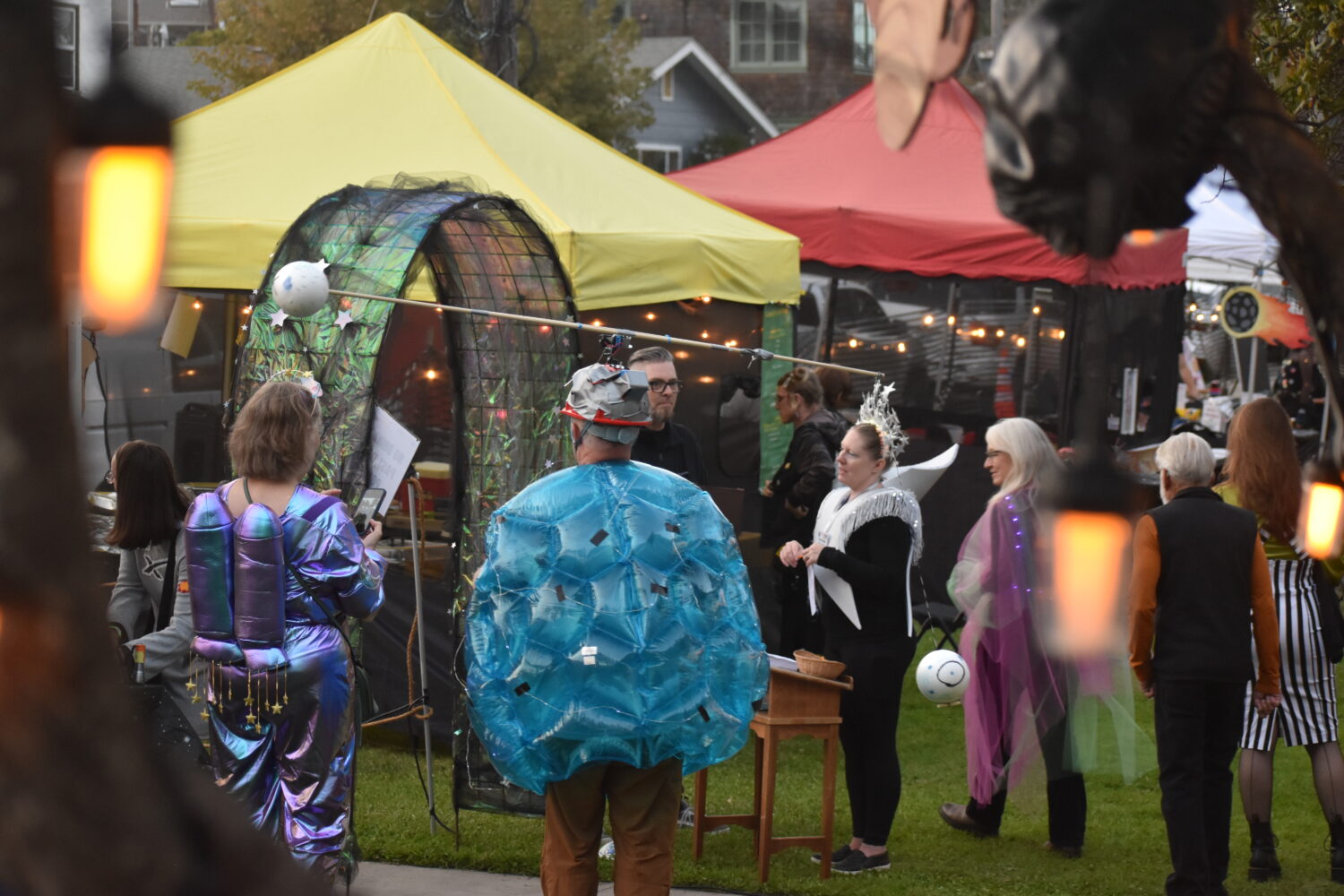

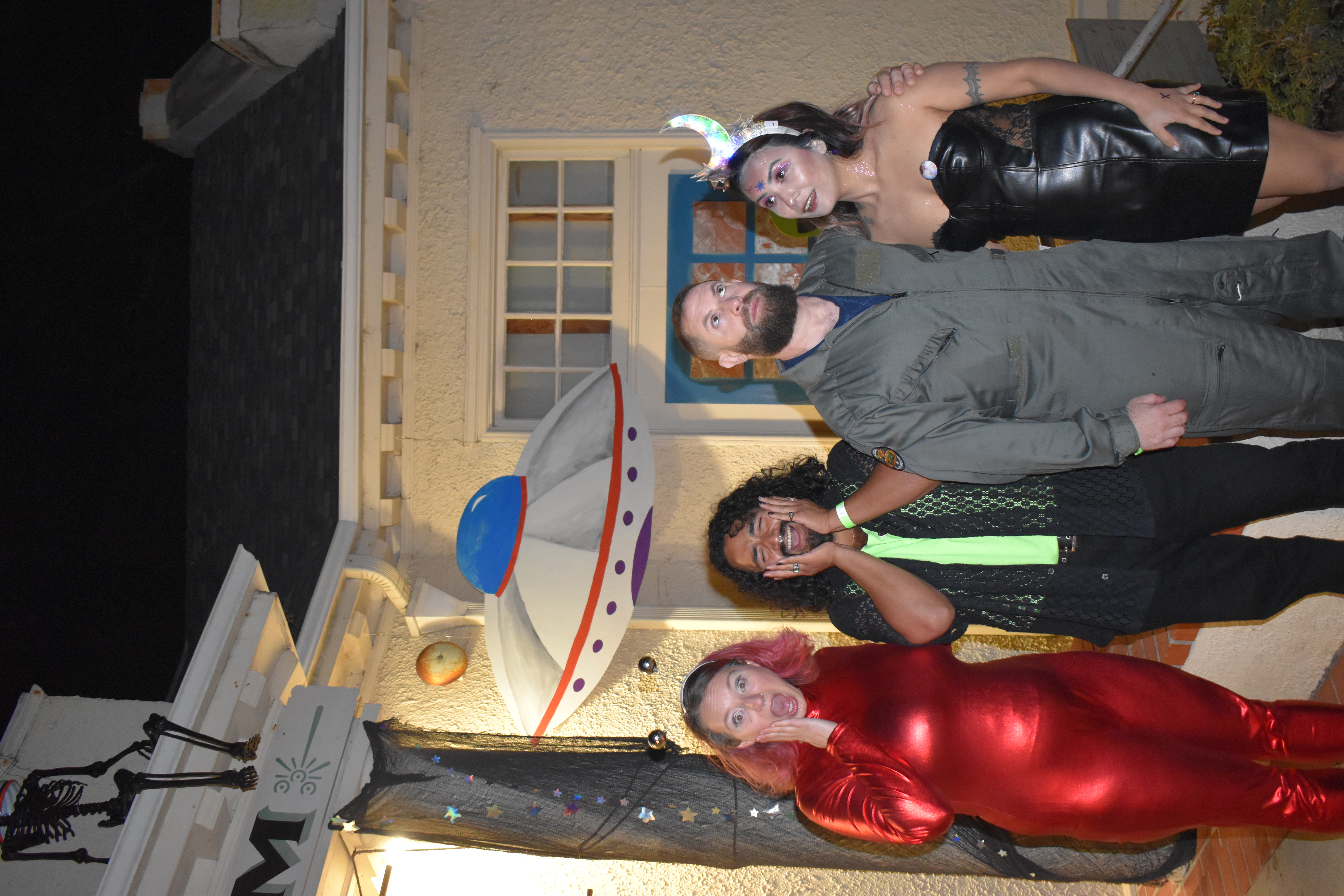

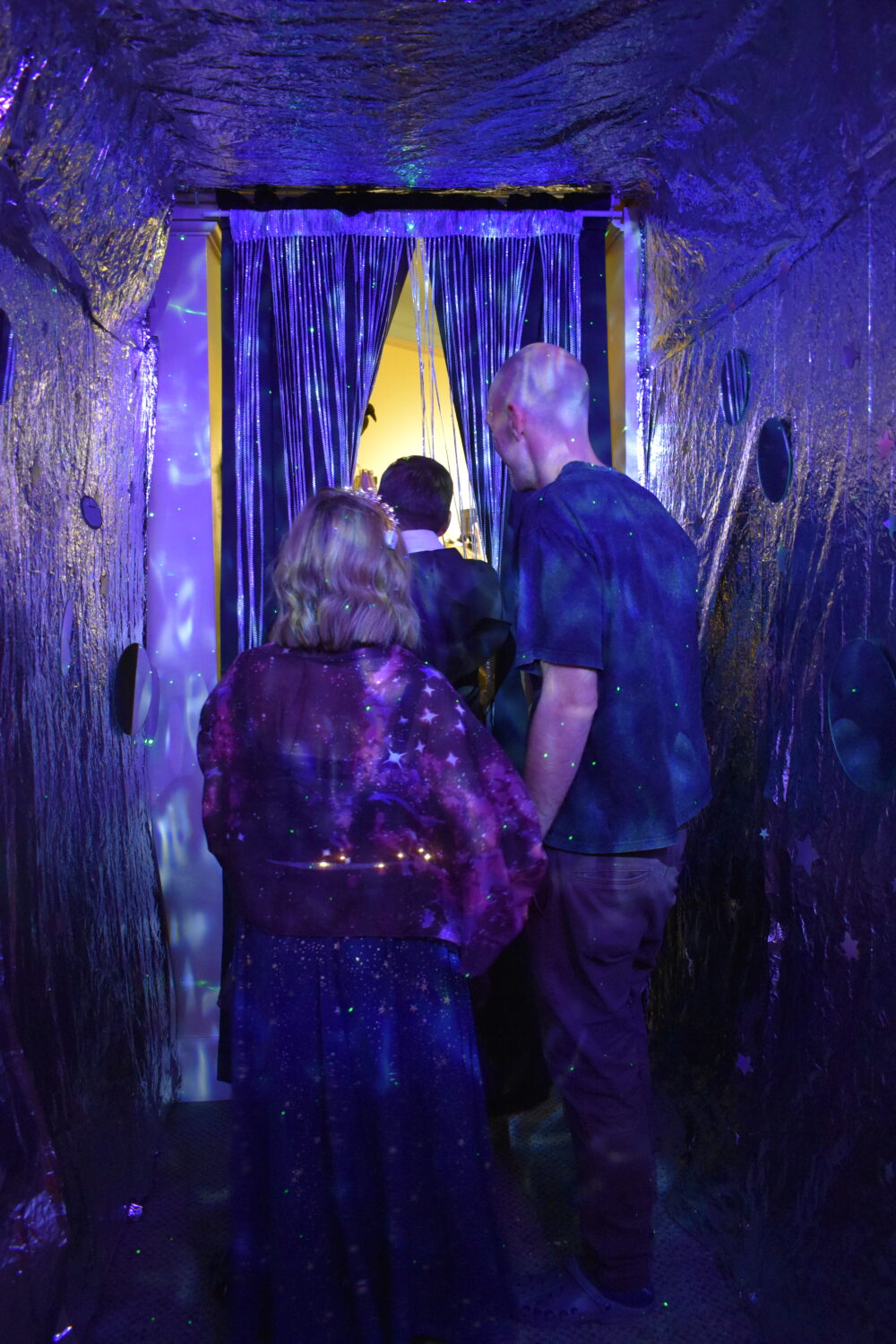
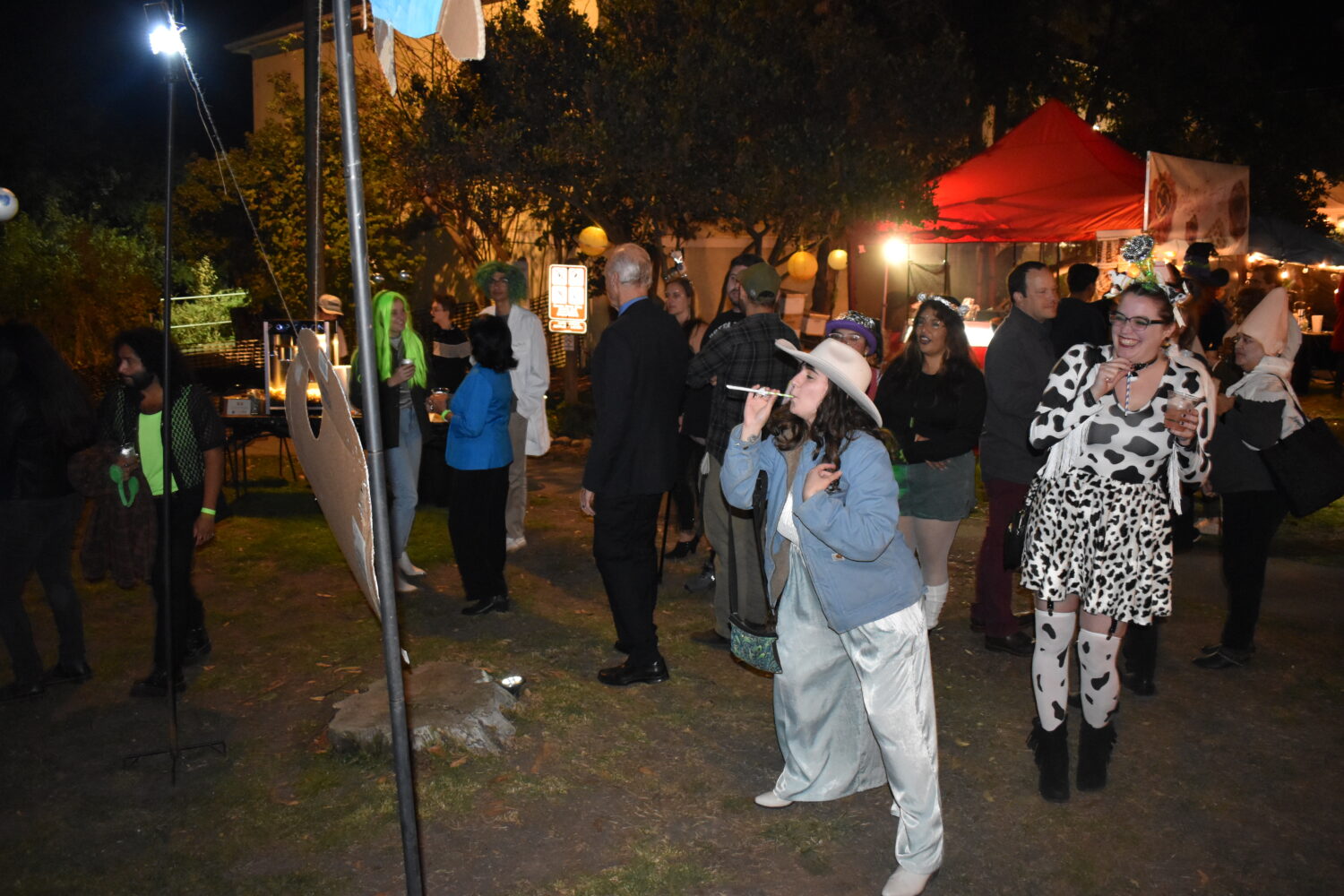


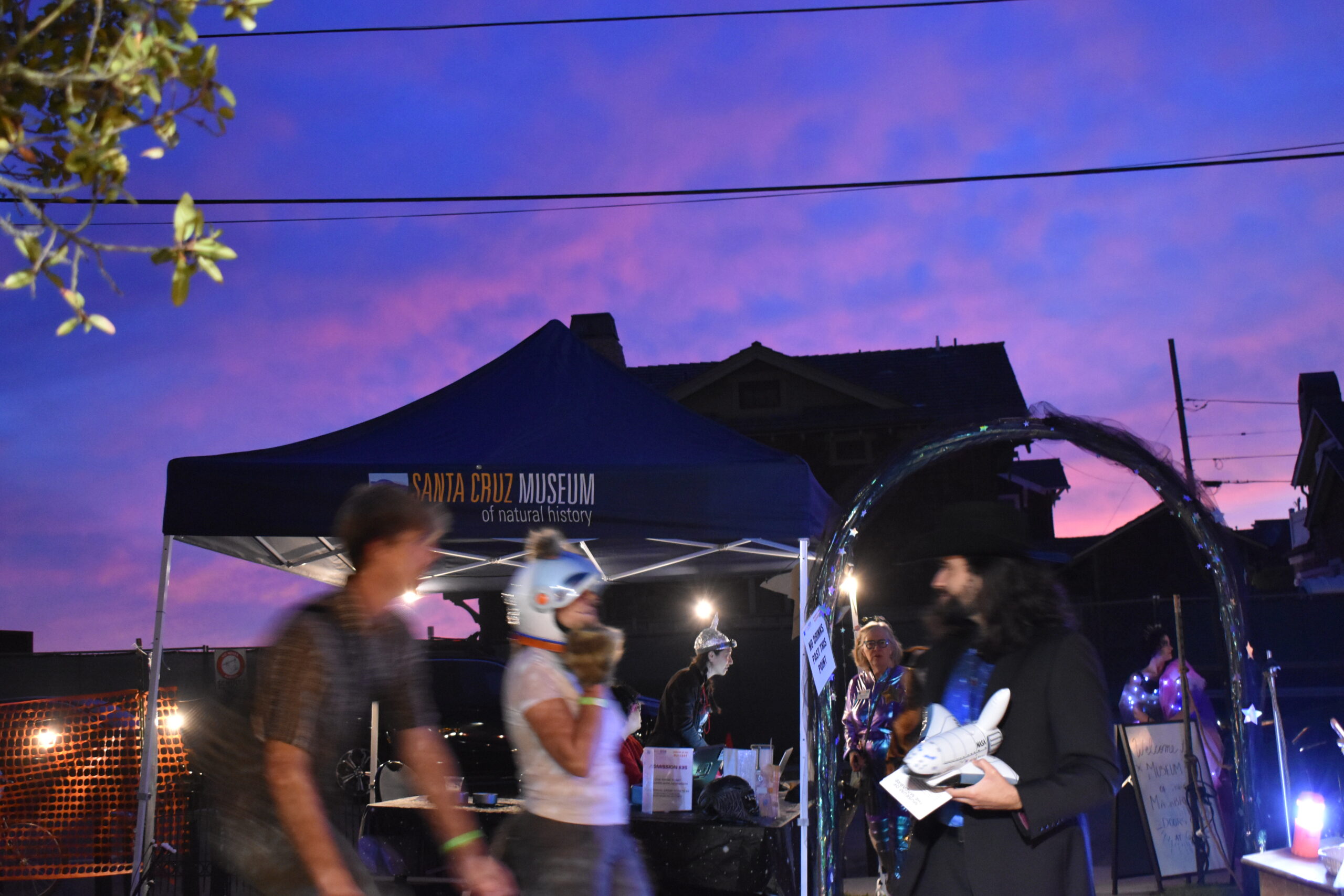


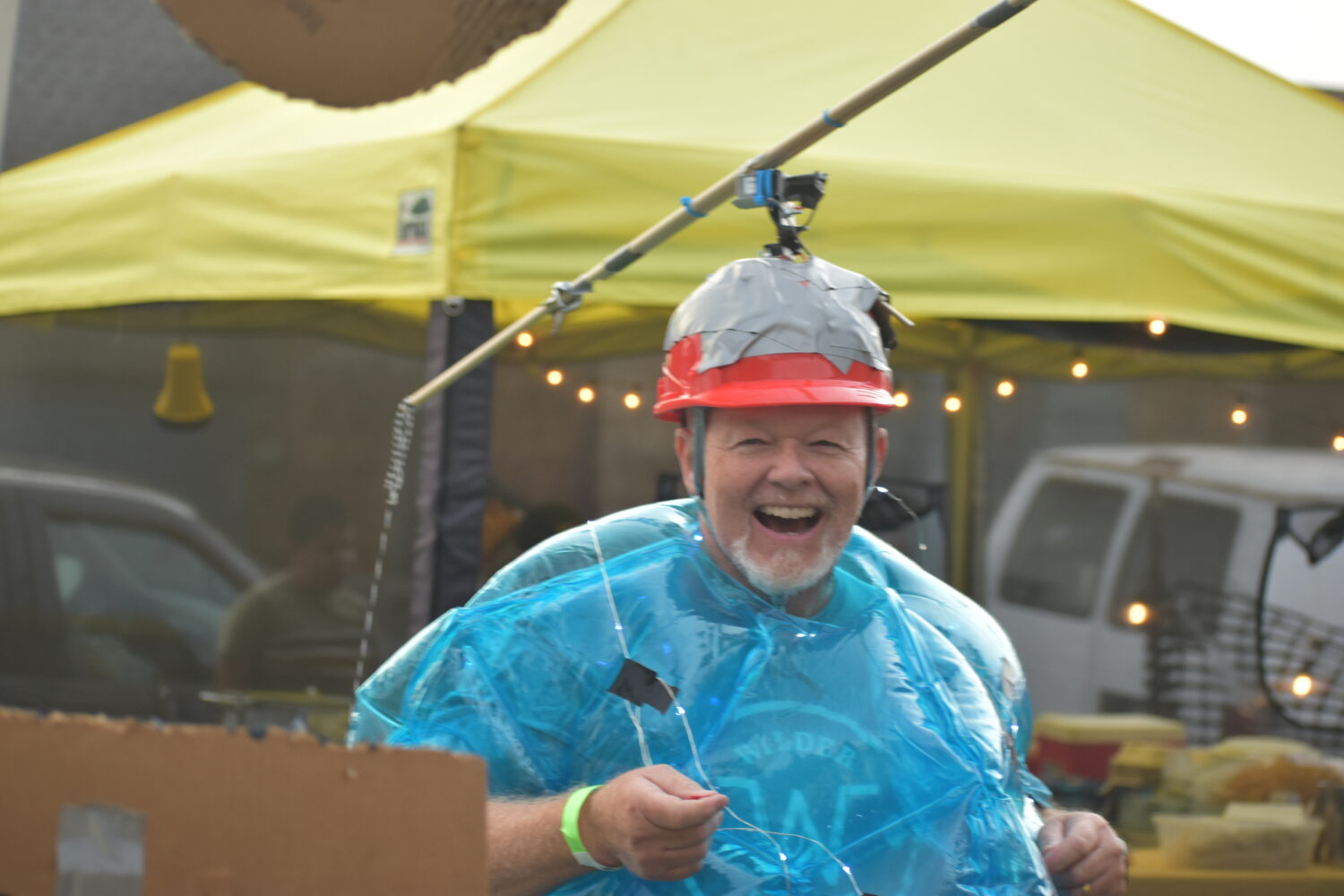
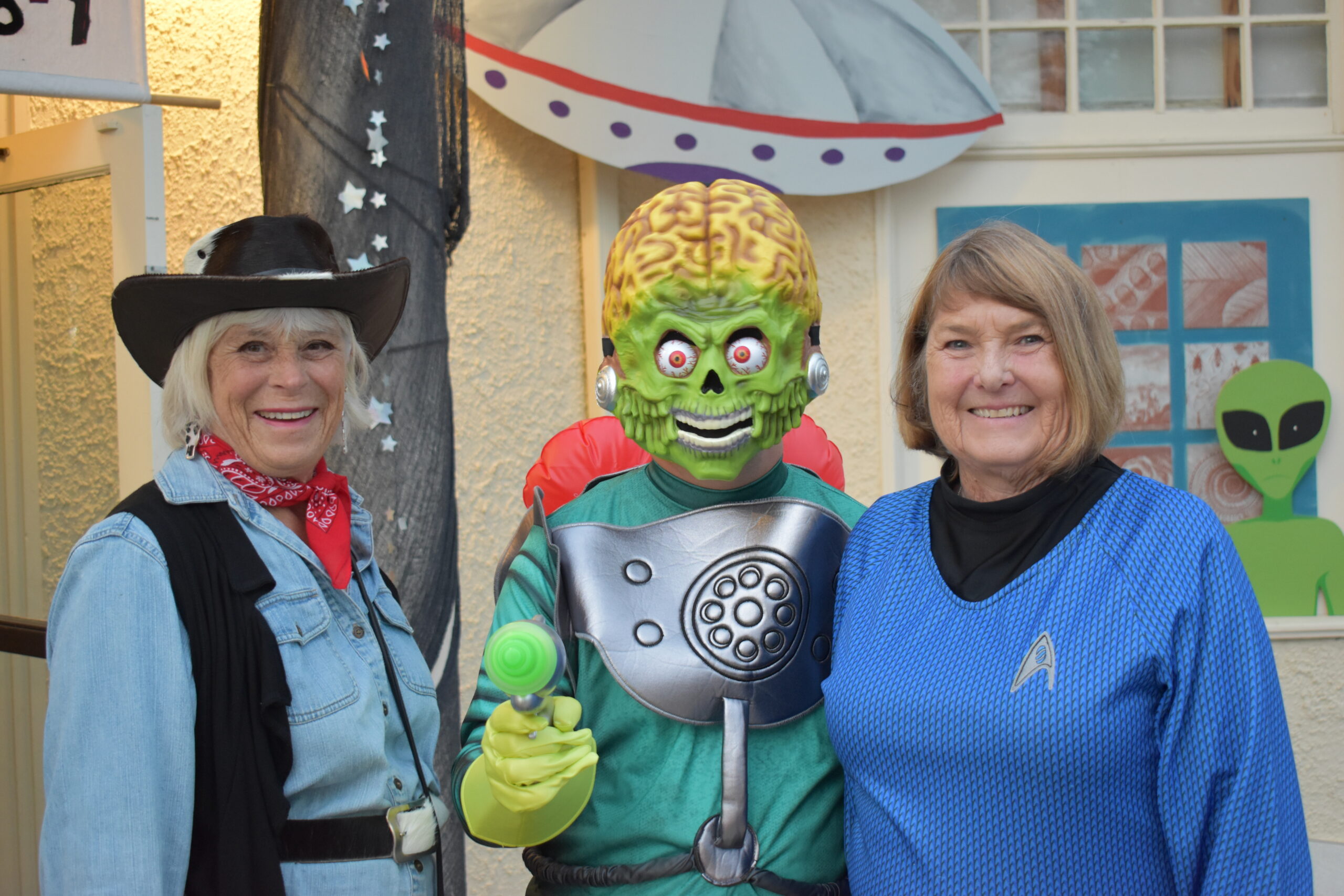


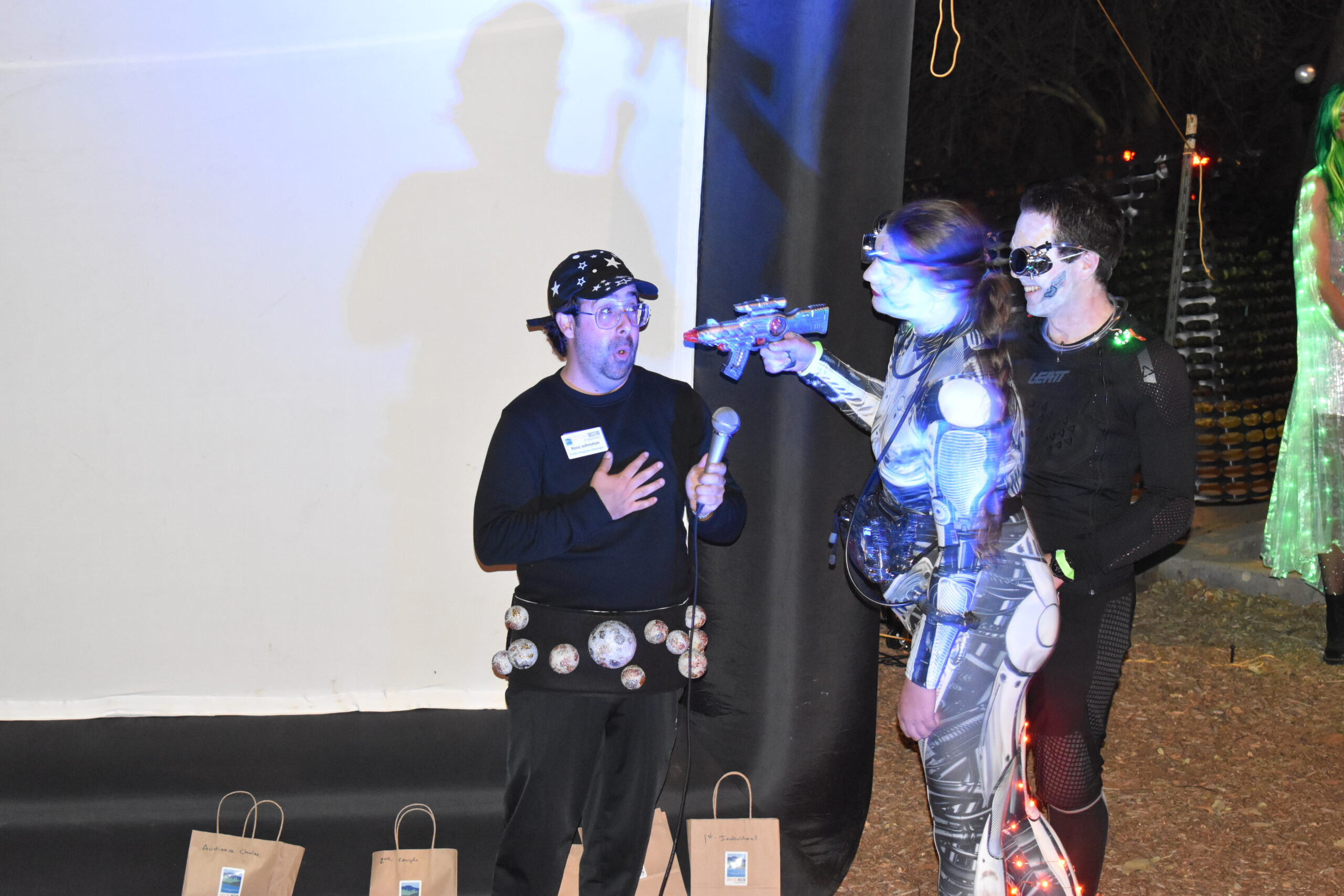

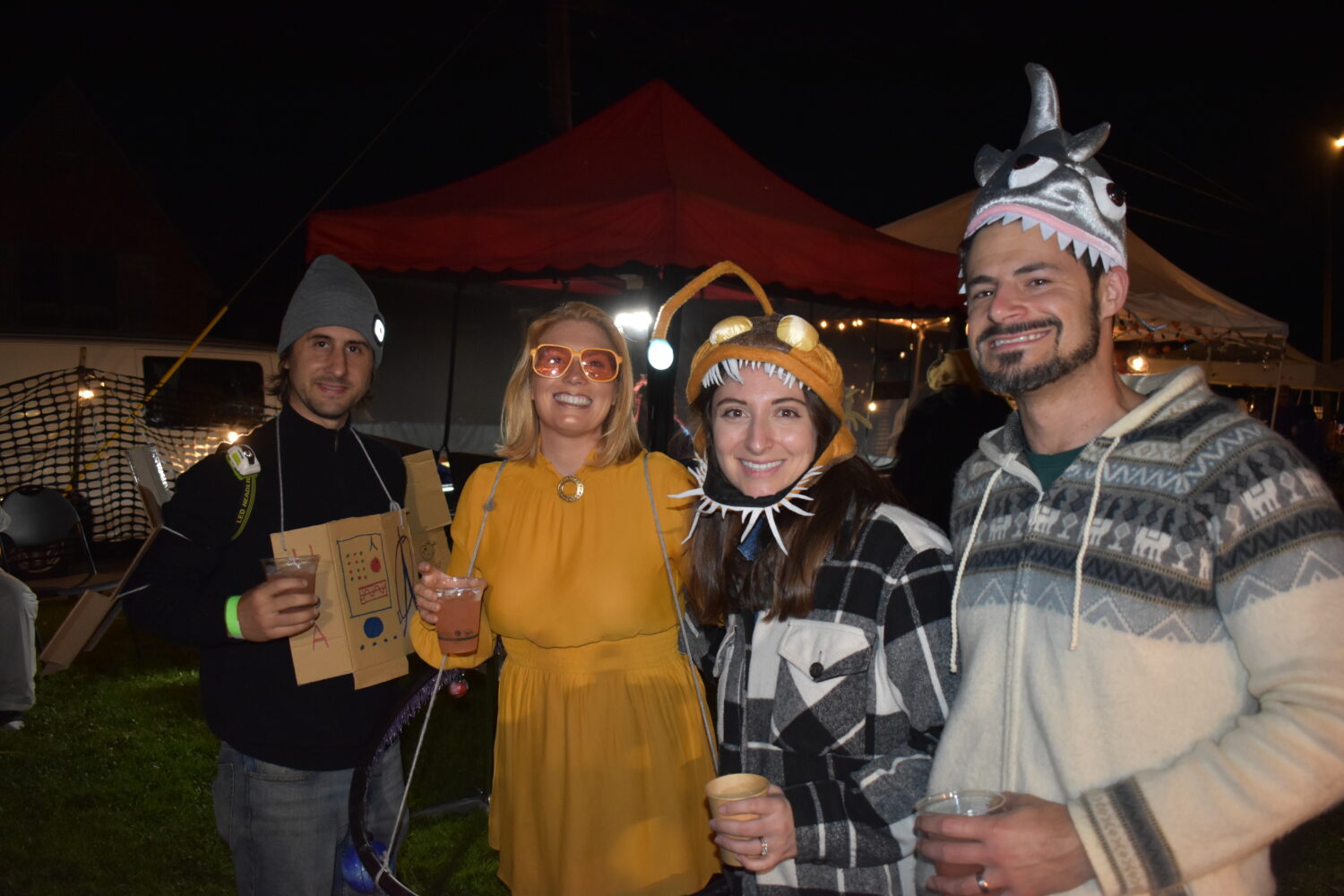
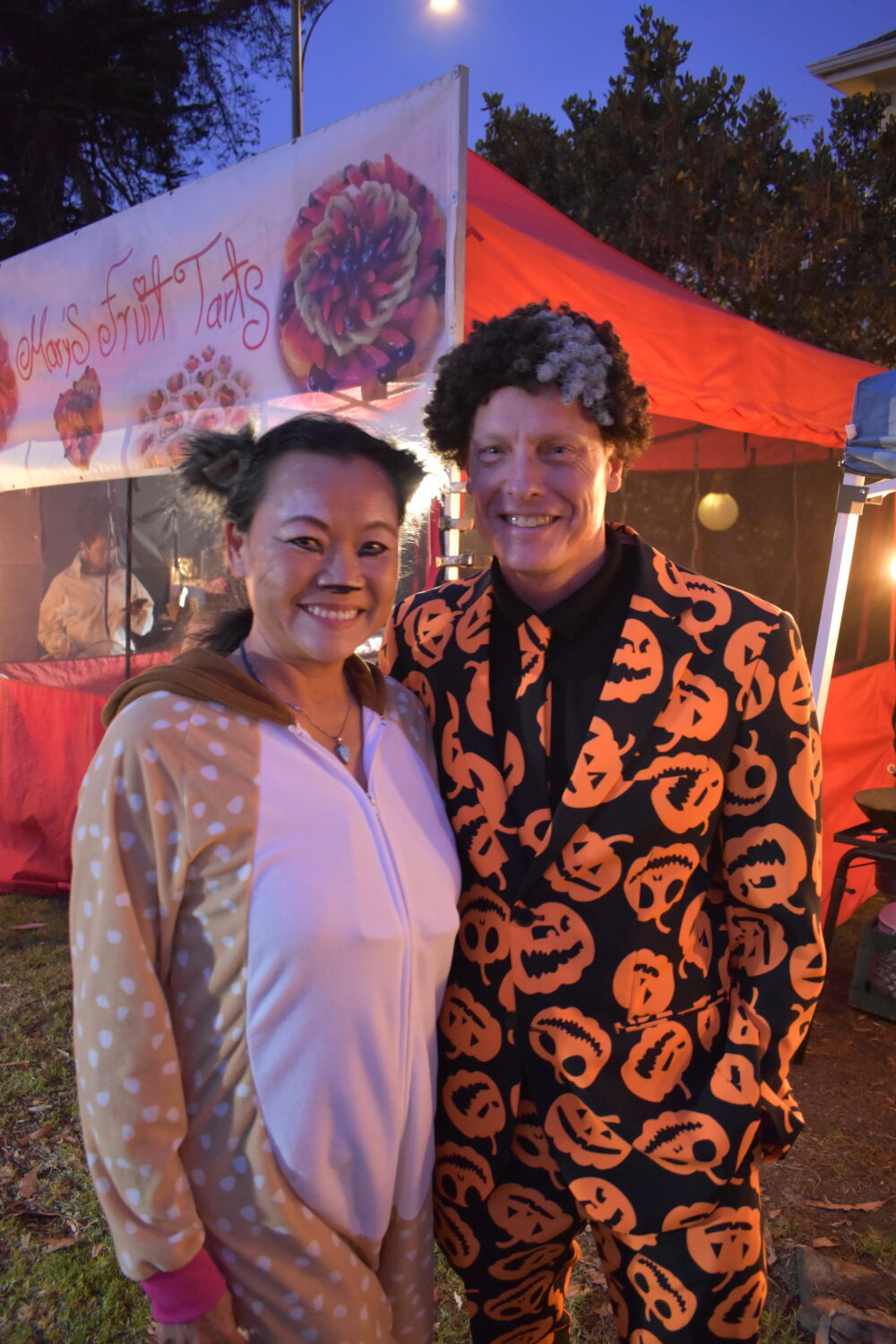



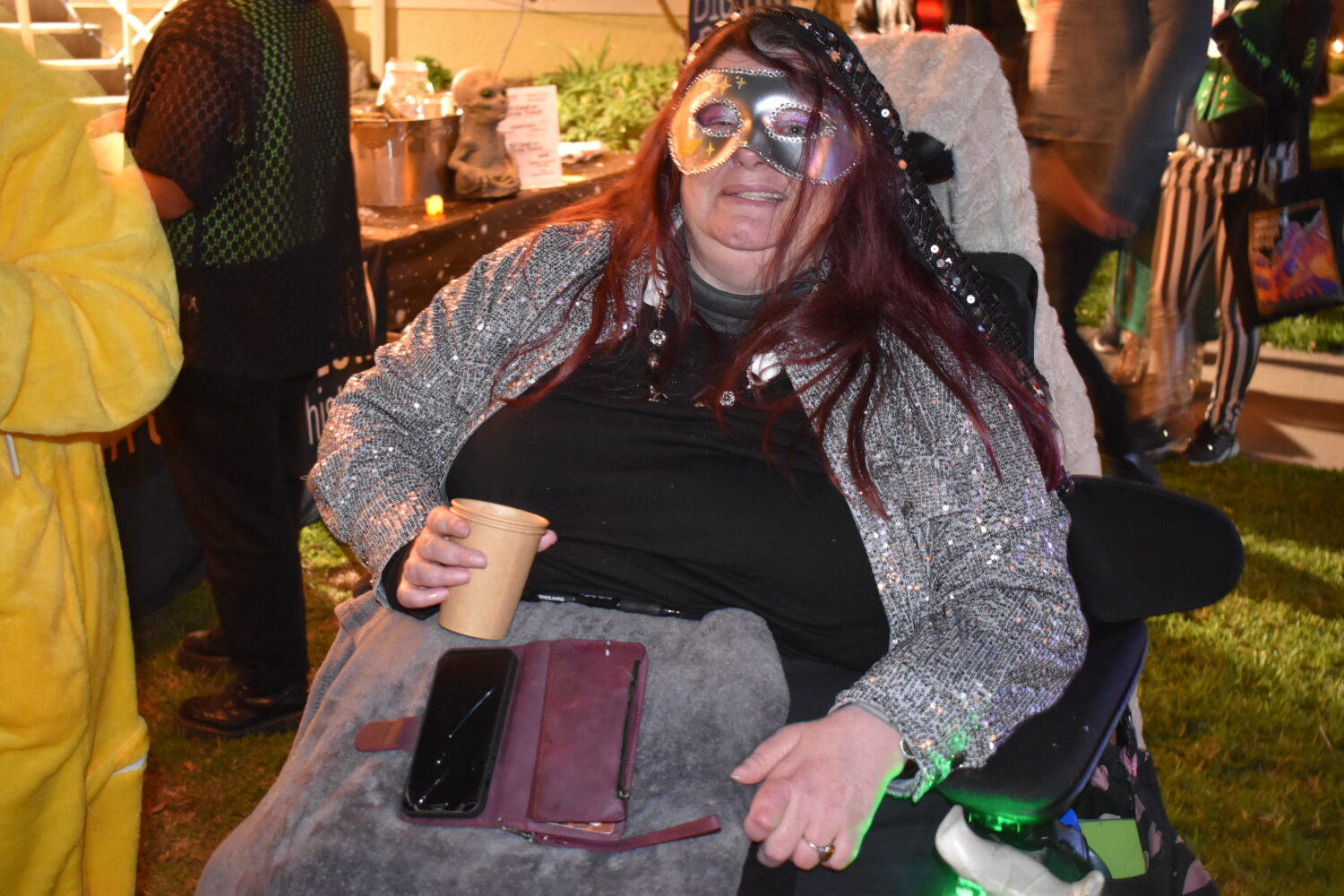
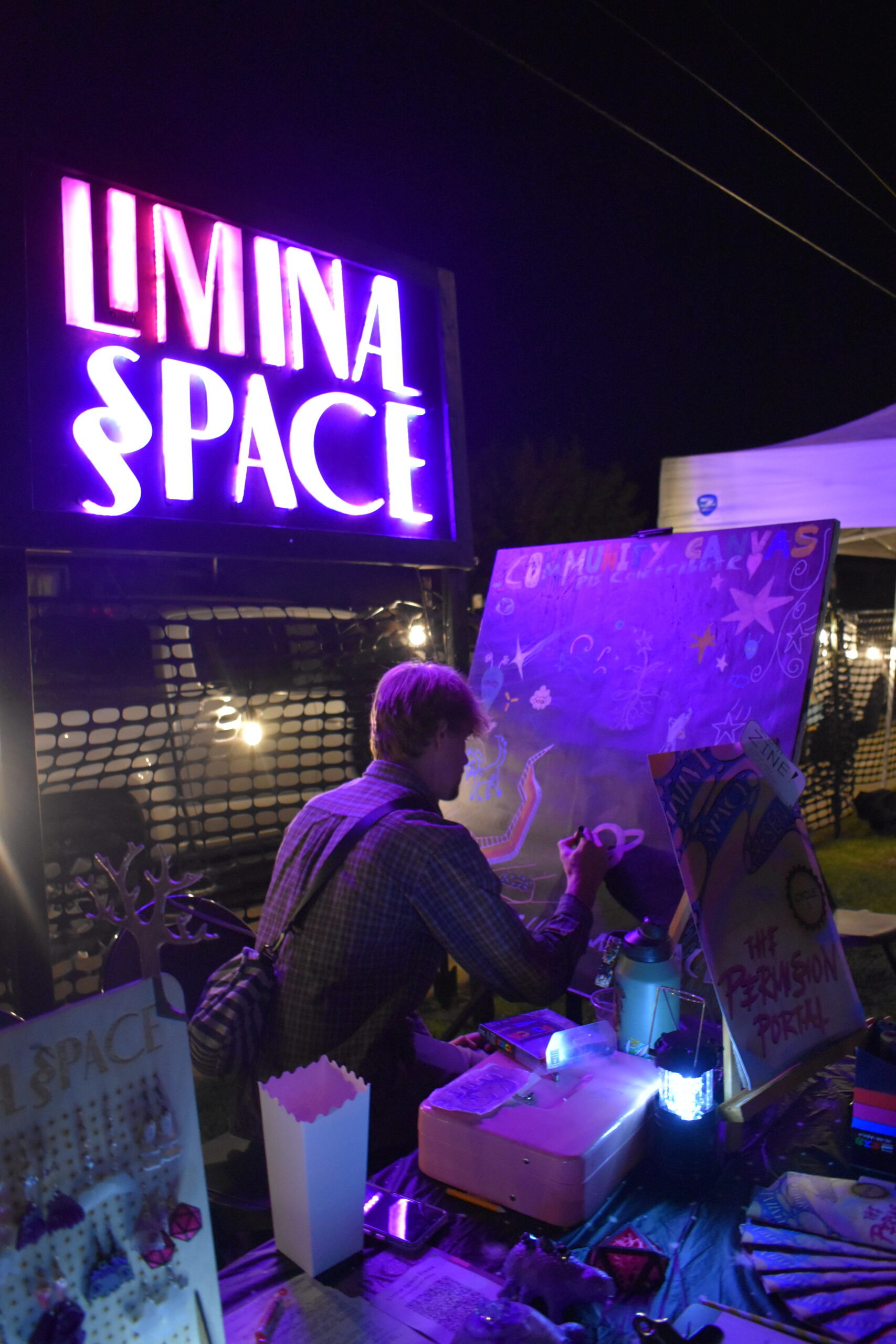


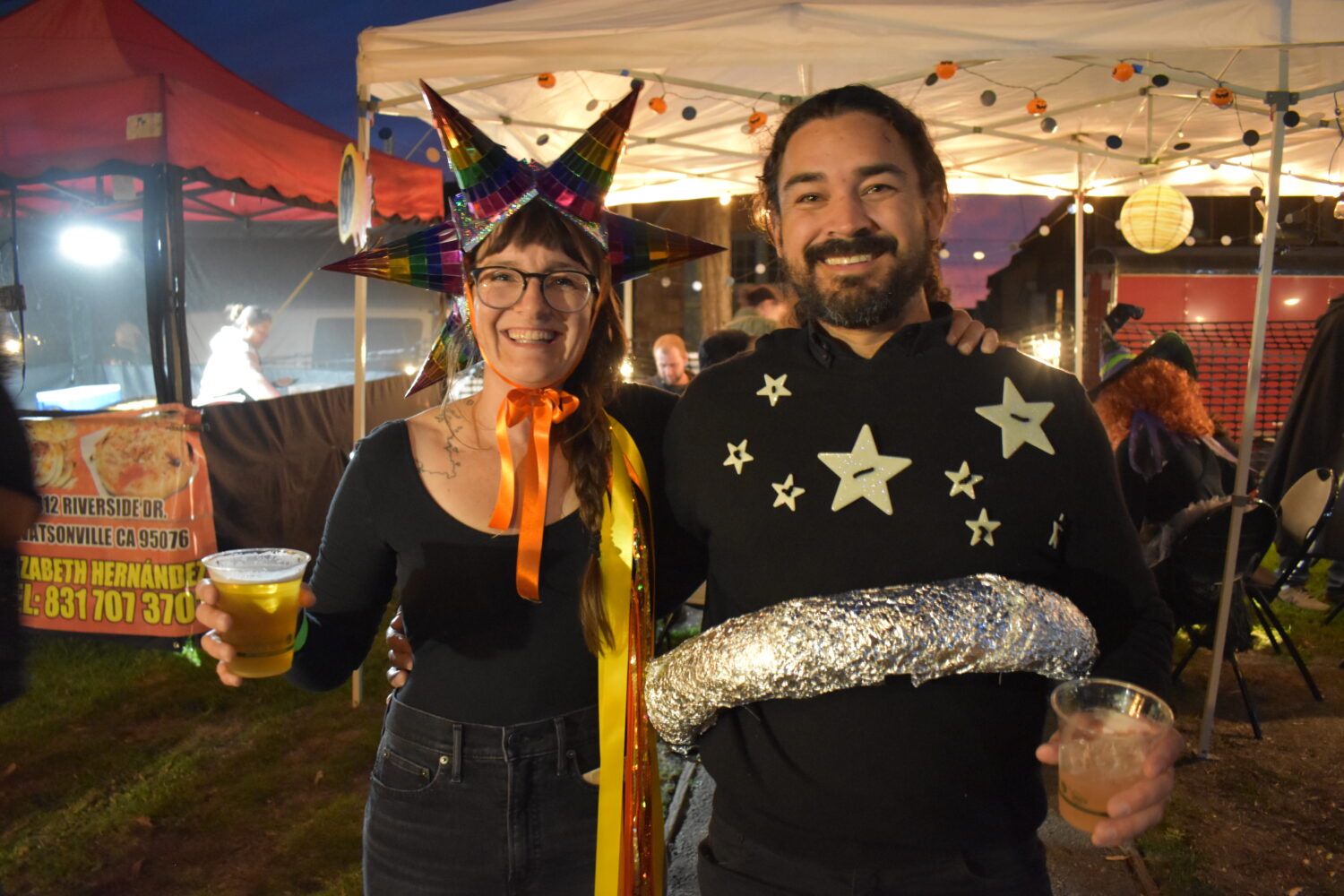
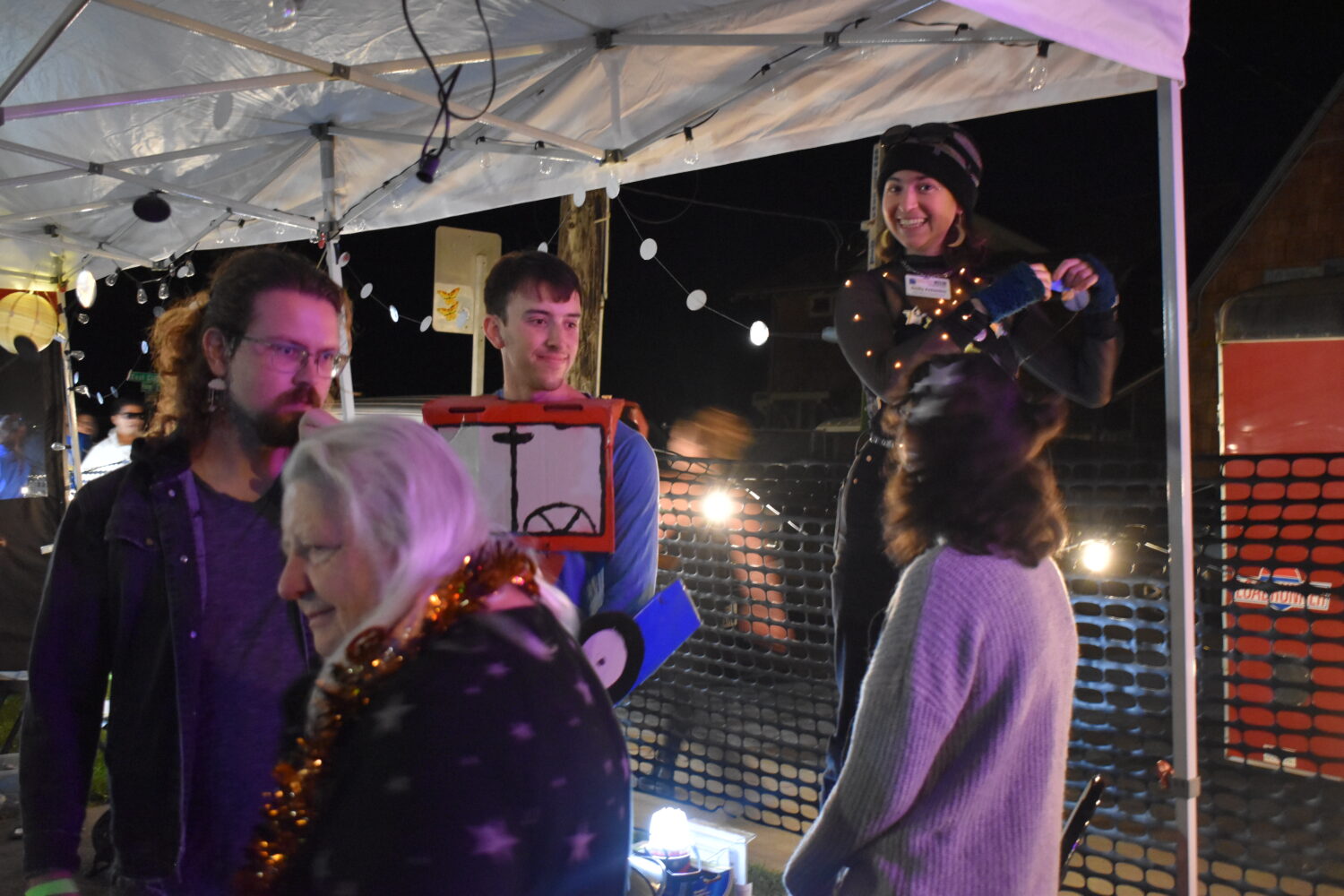

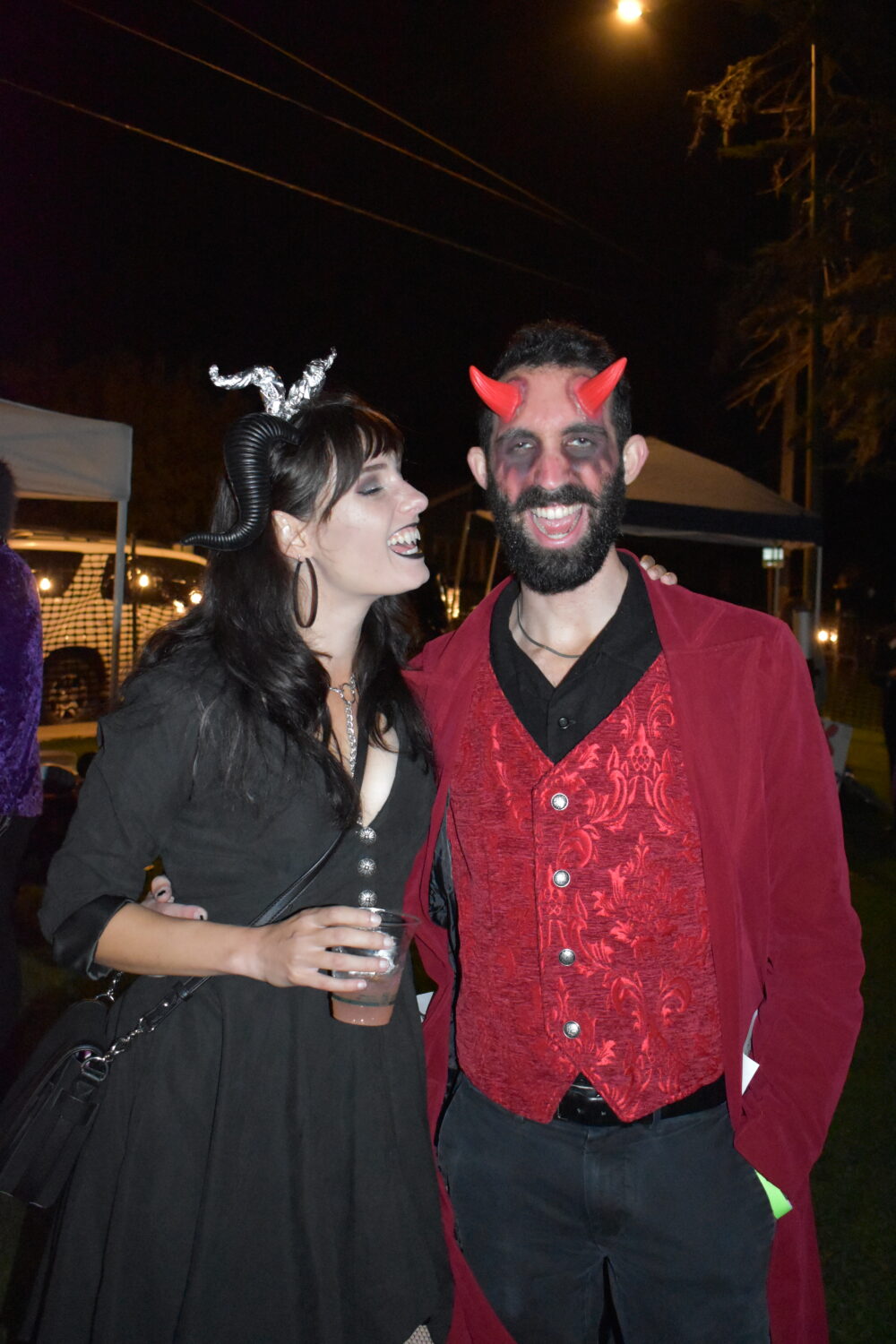
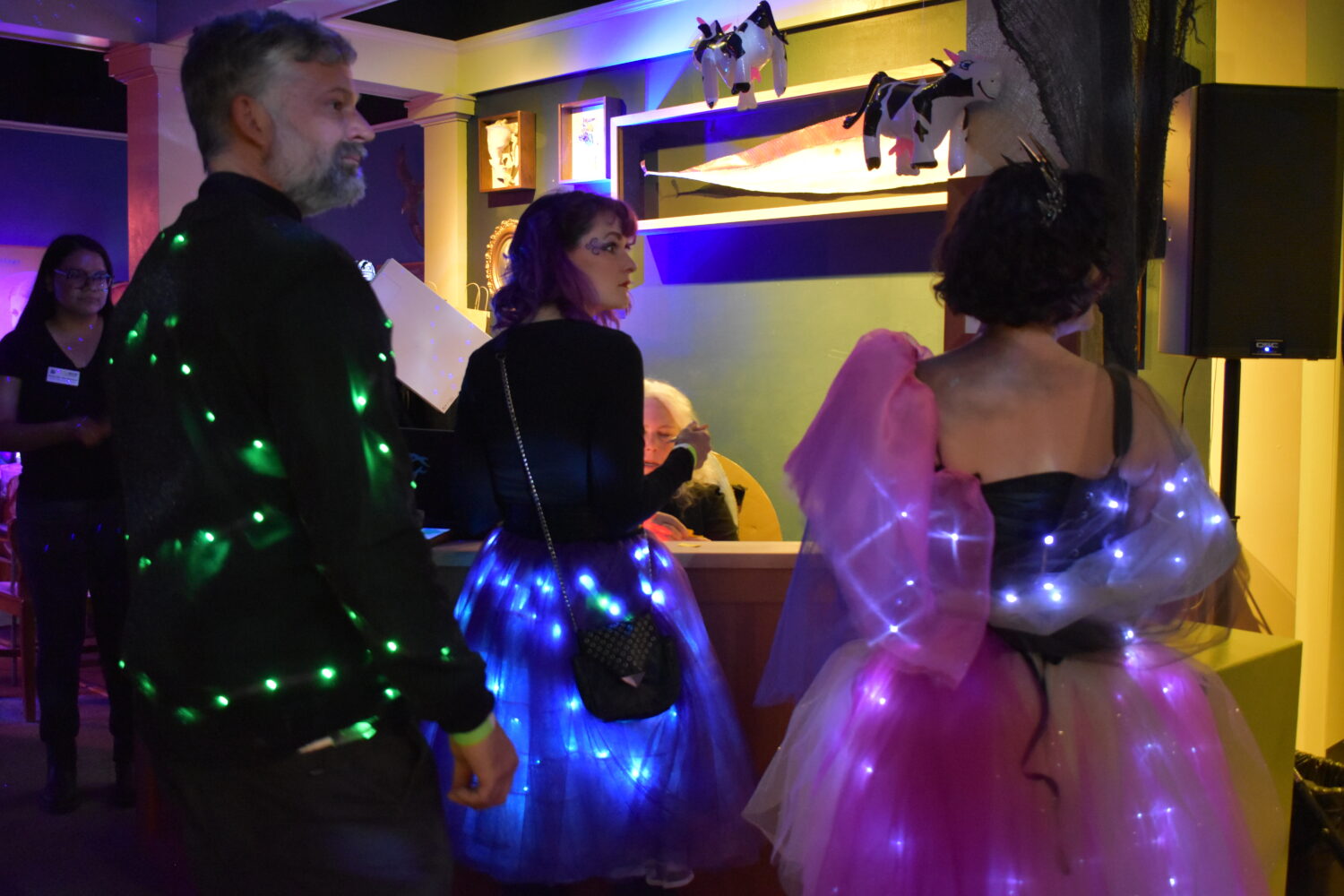

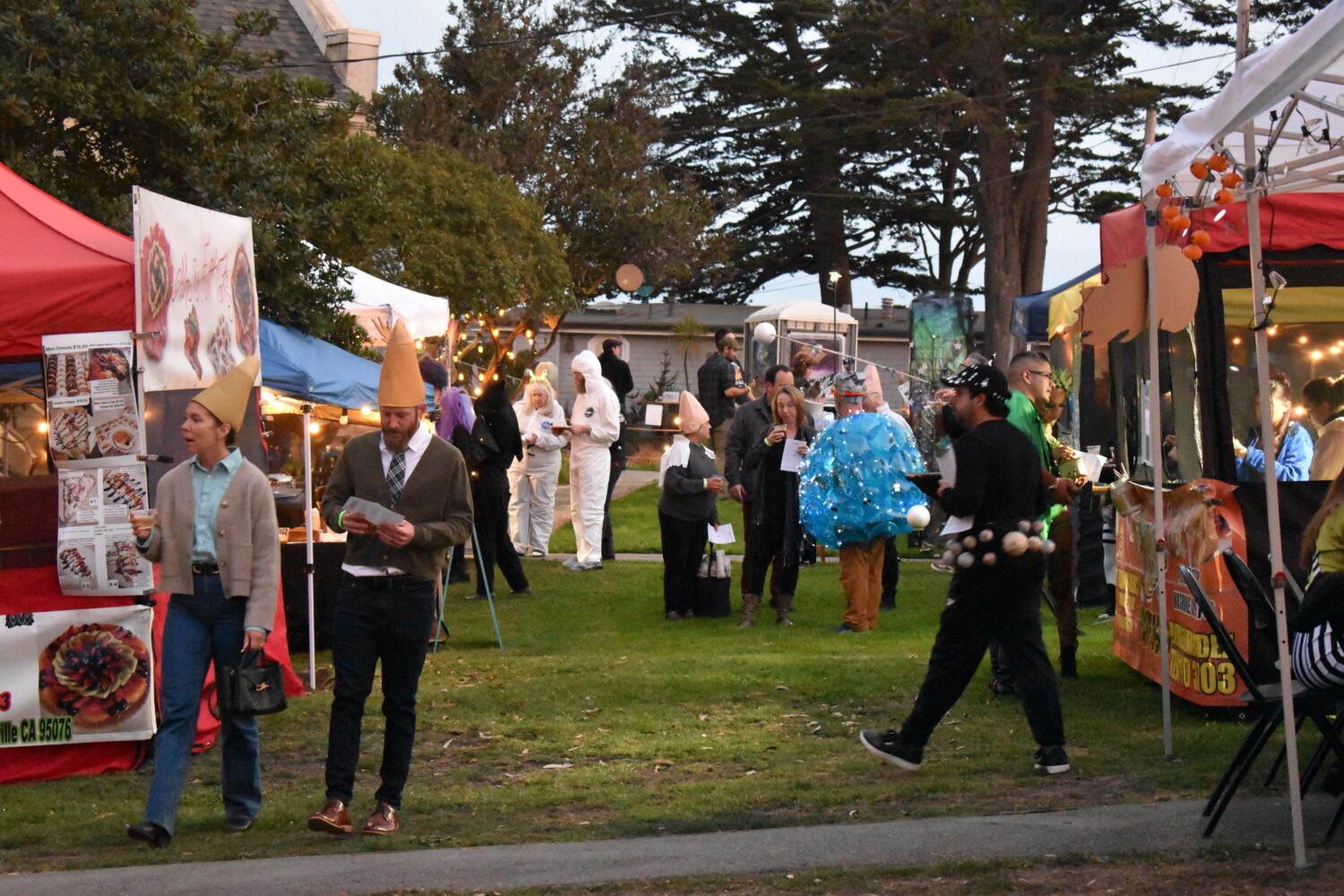
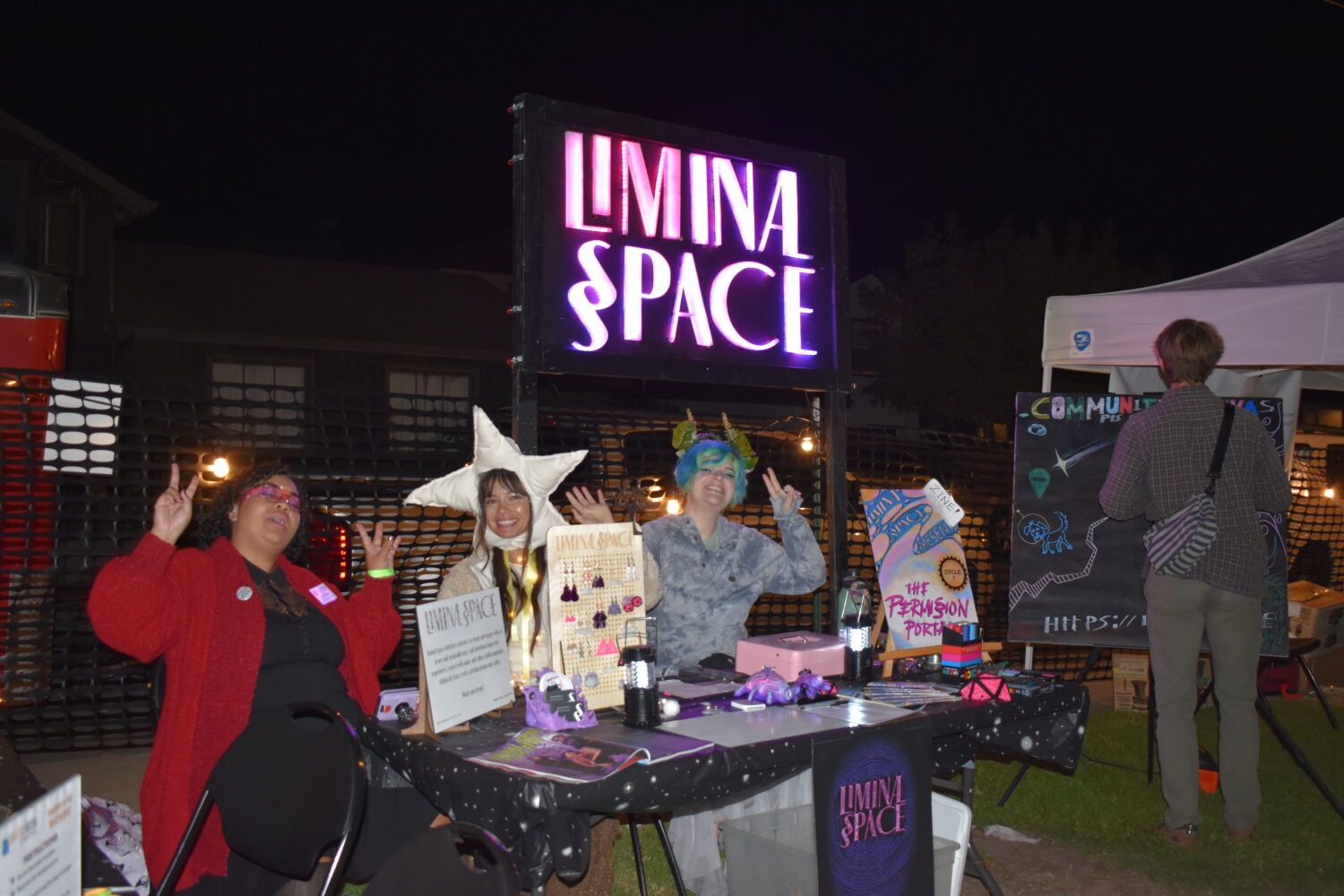
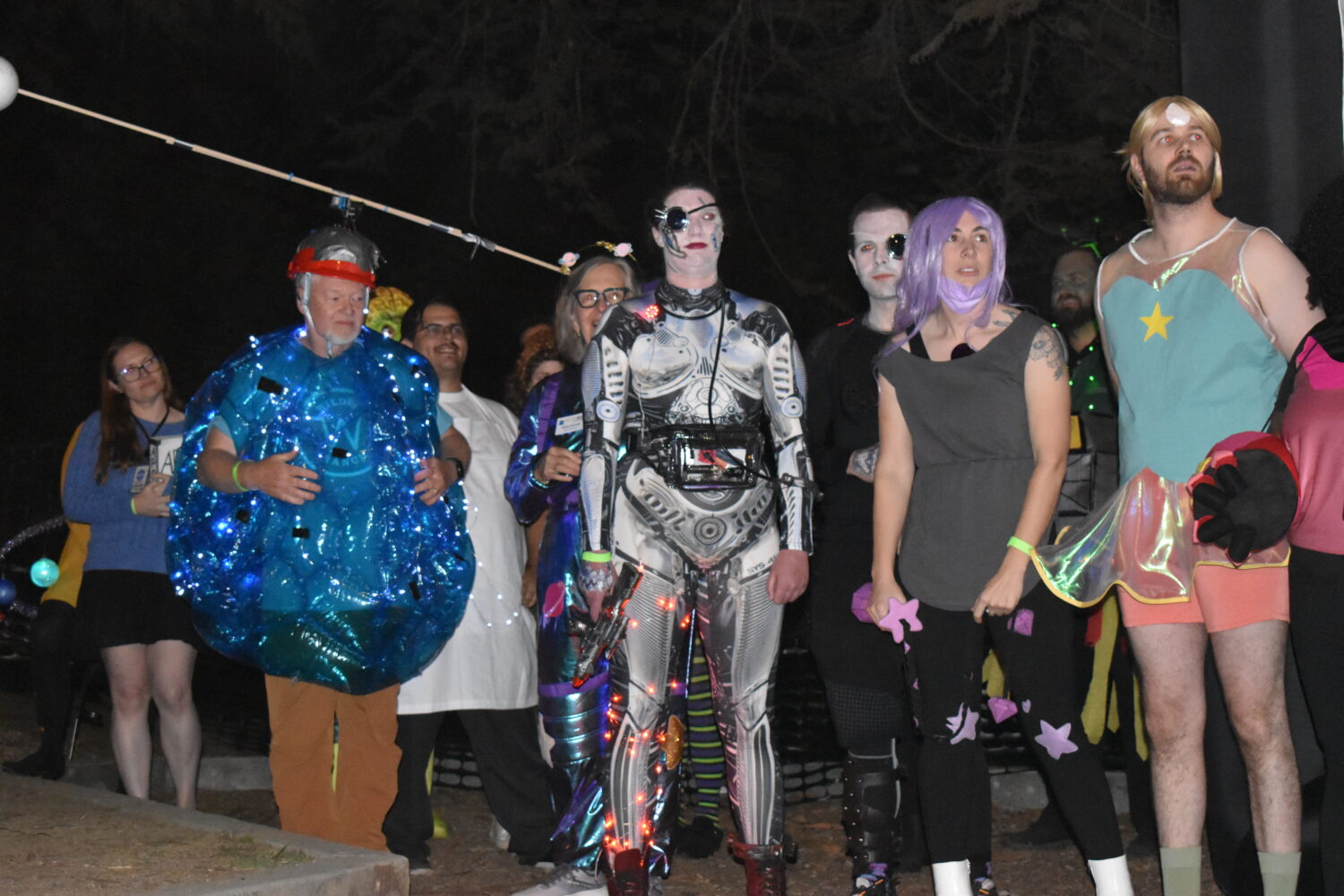

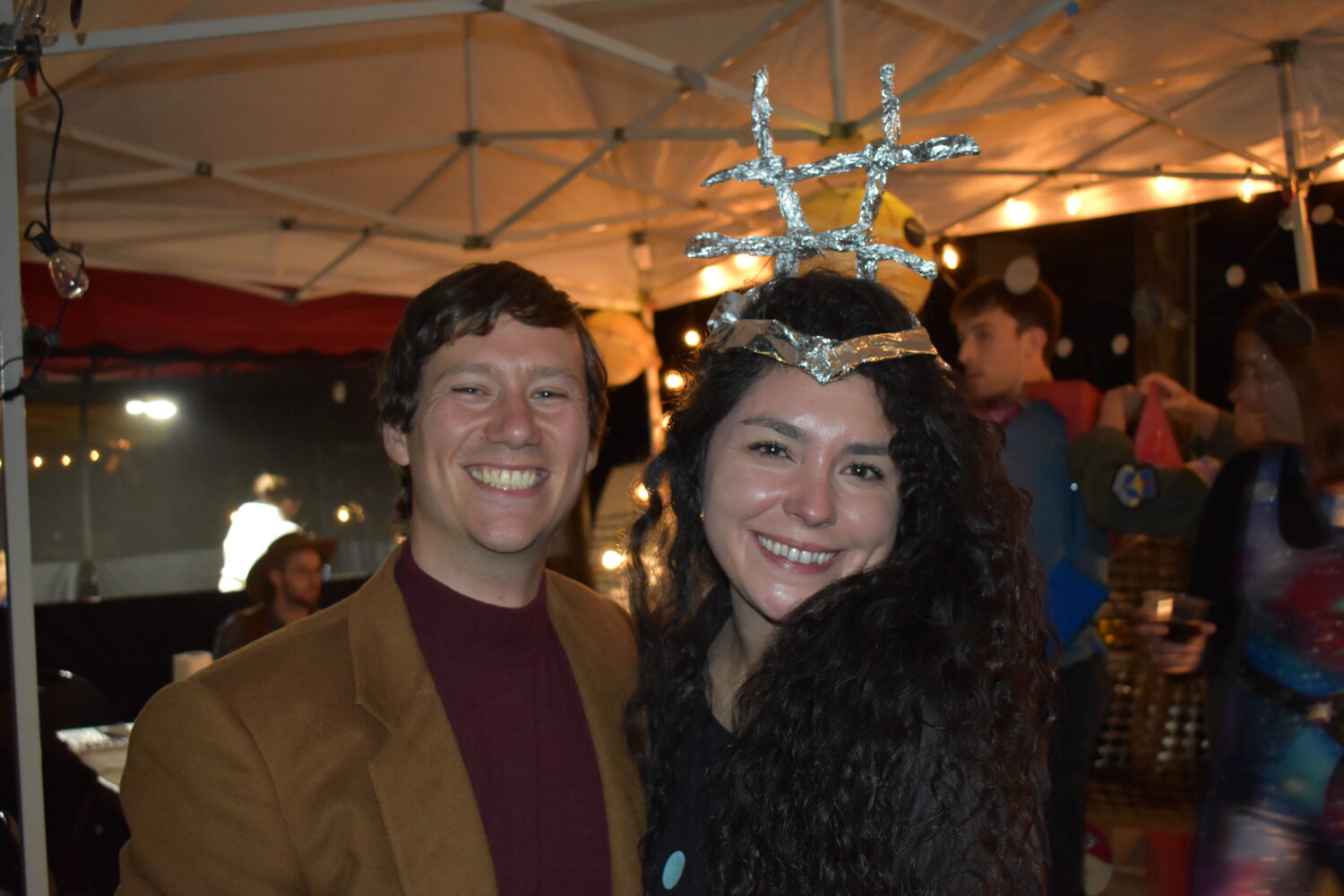

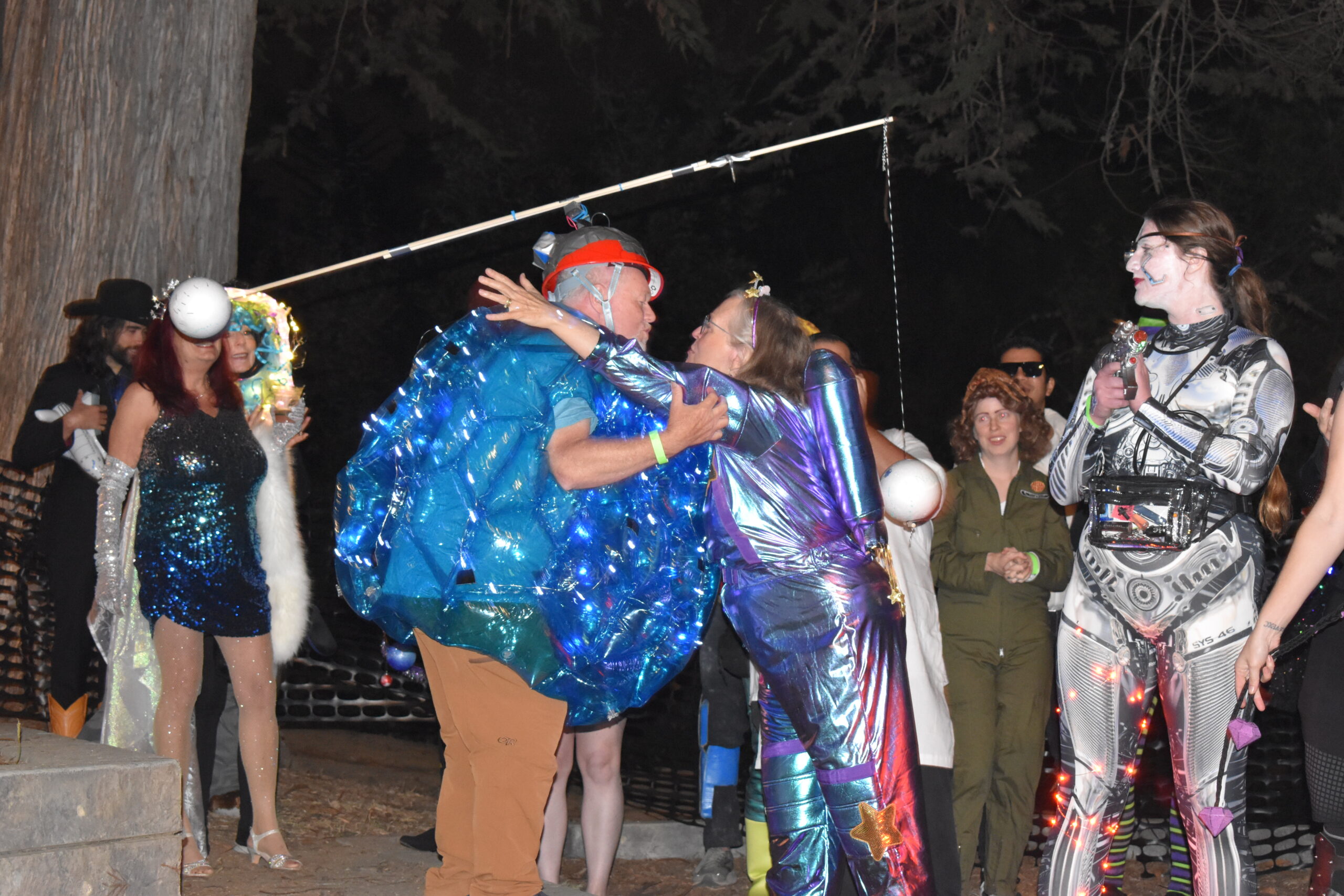
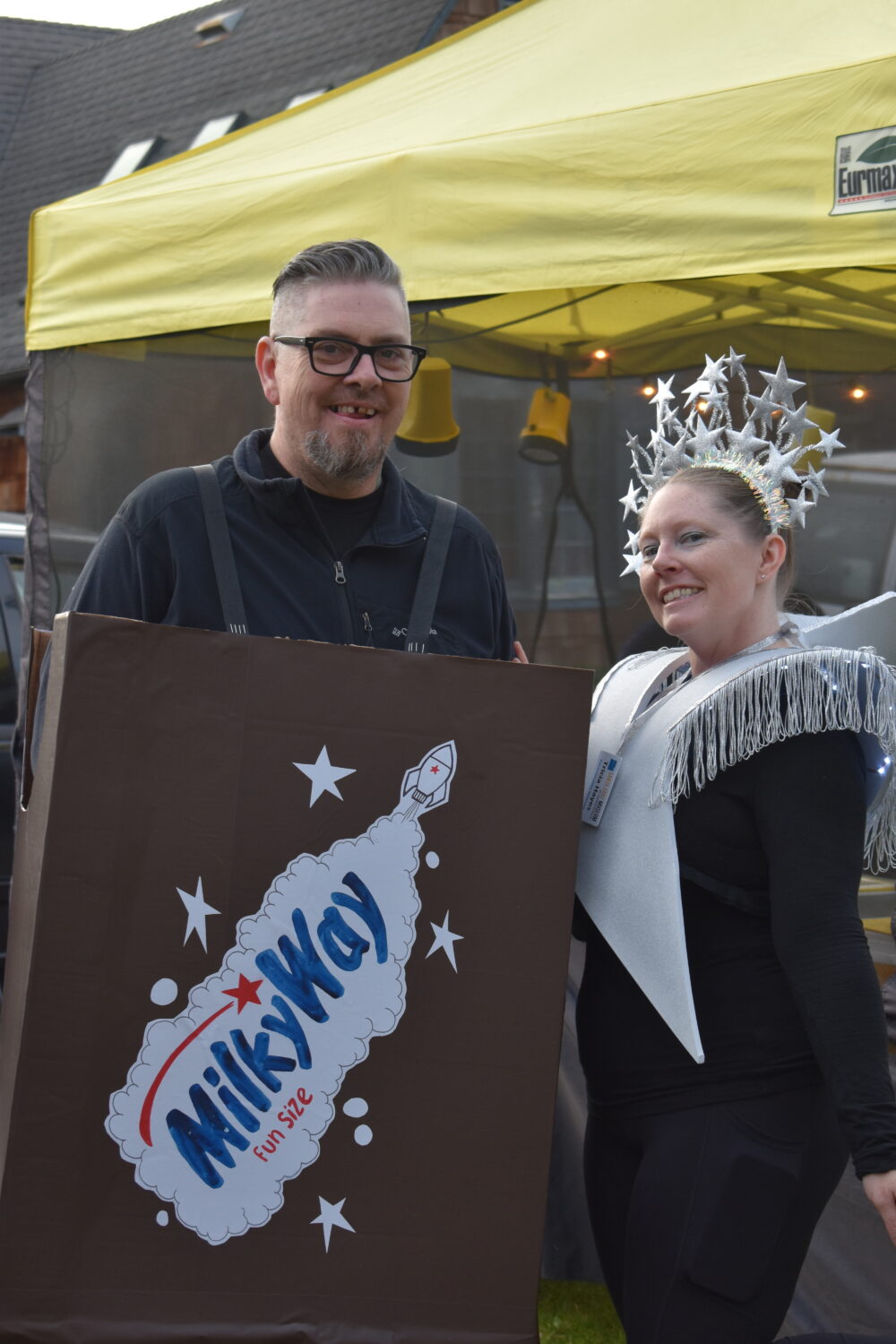
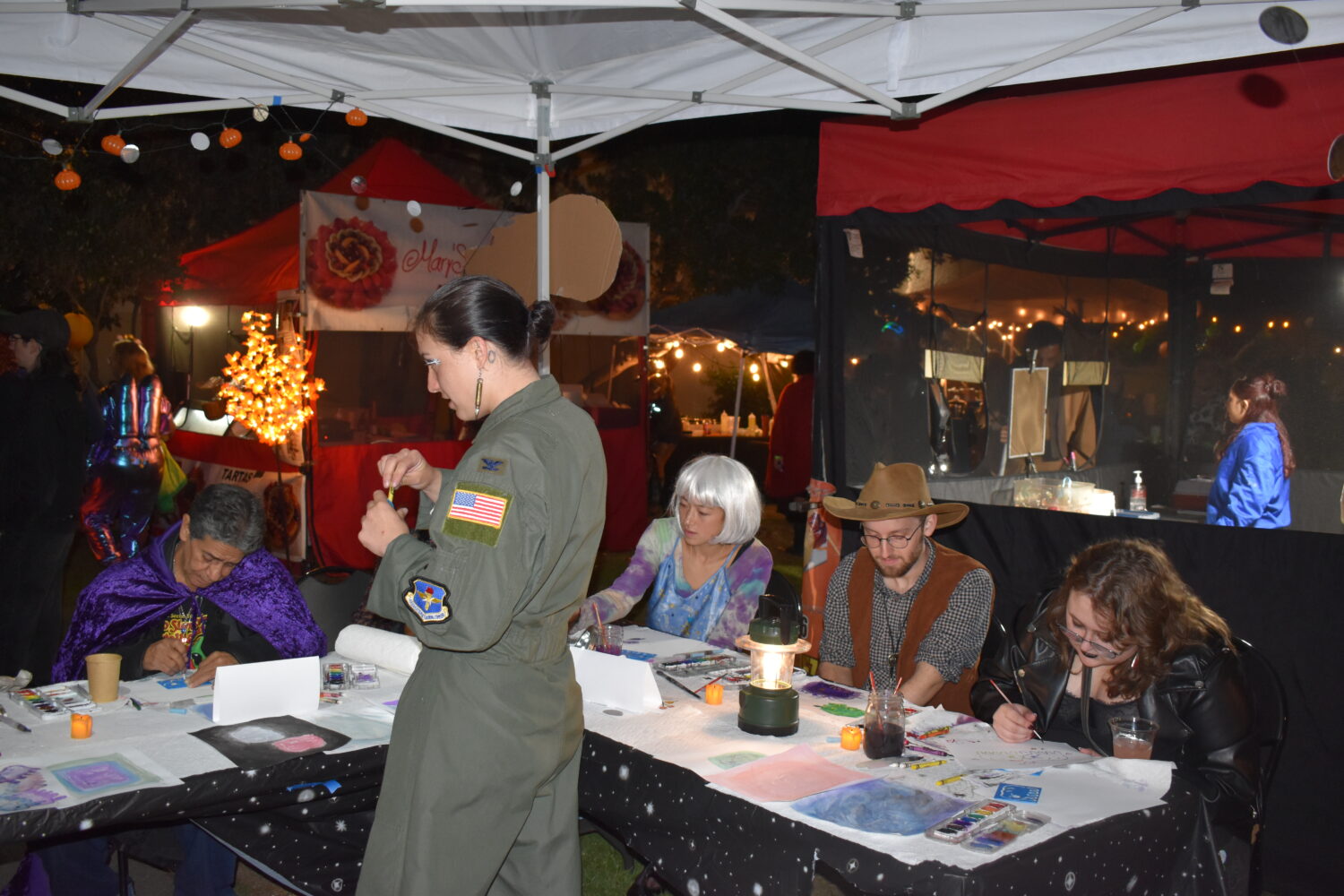


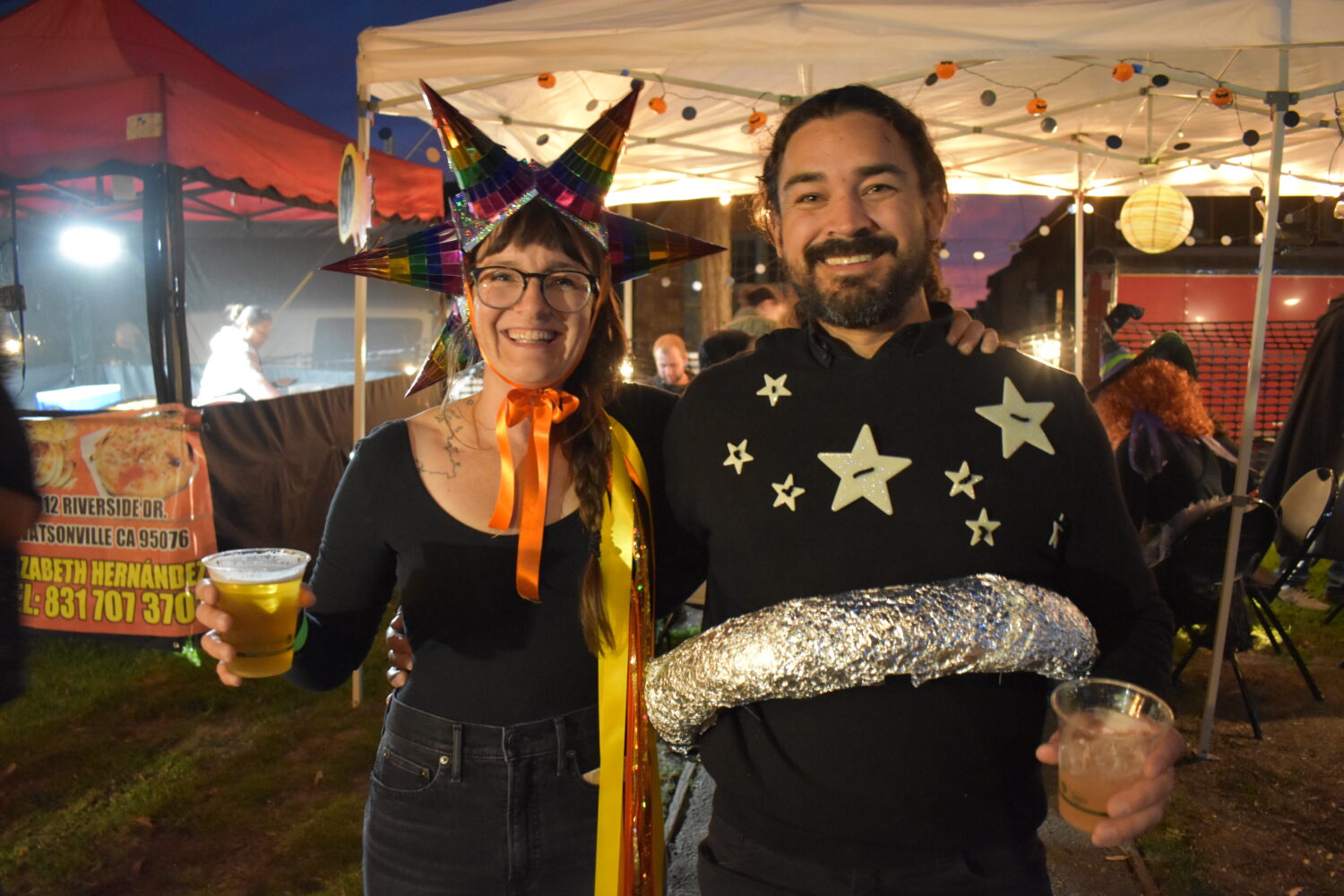

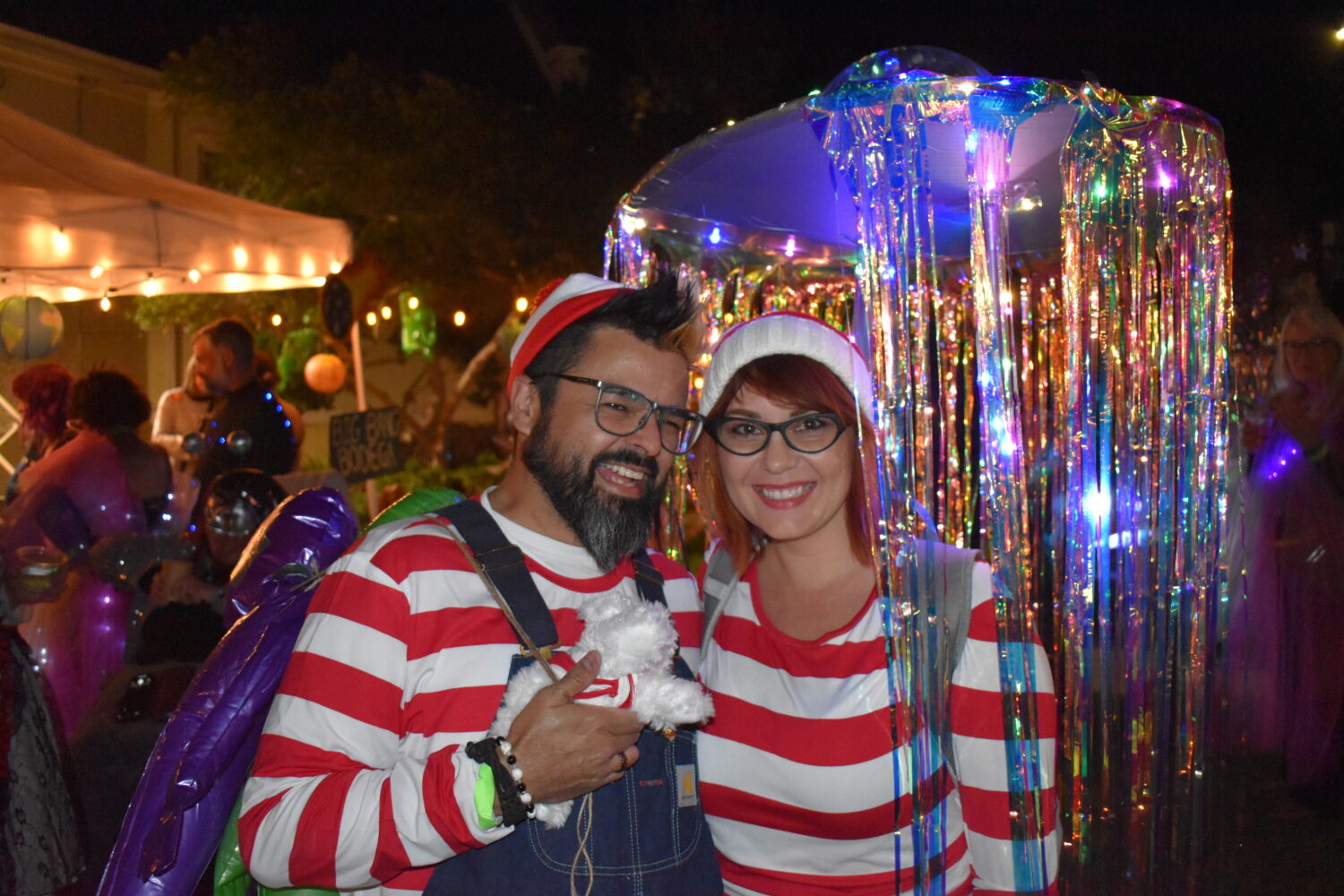
Find yourself in our photo booth!
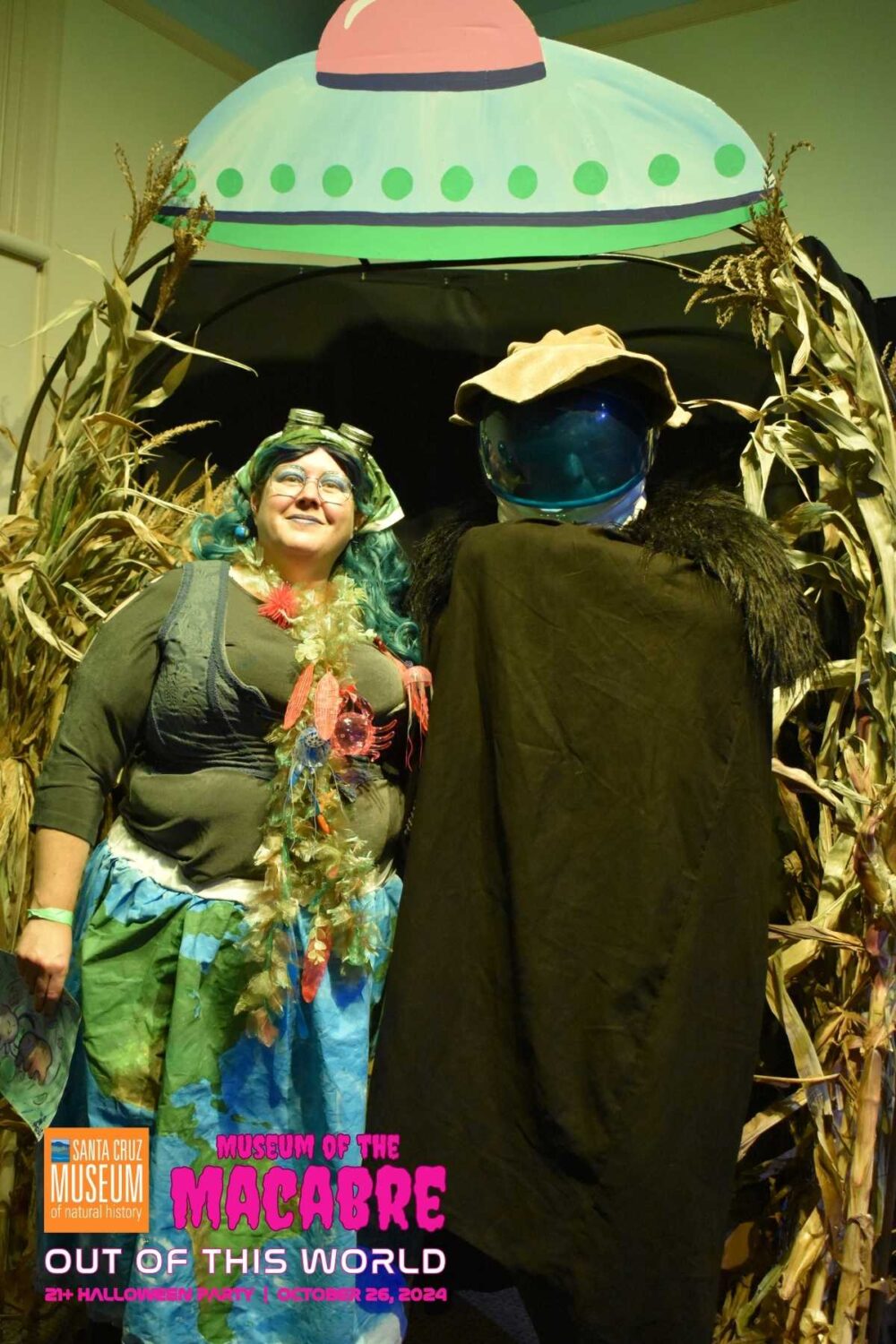
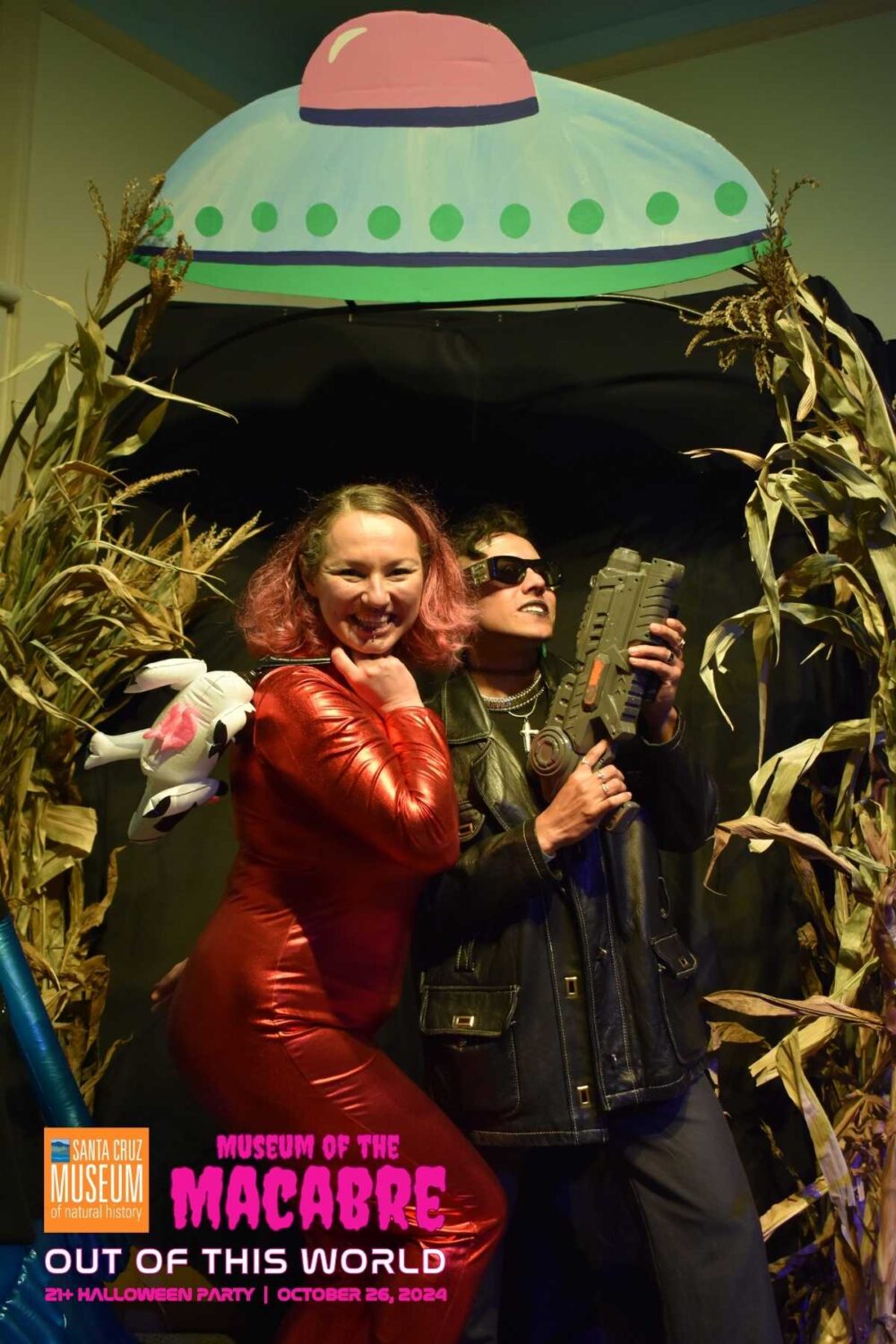
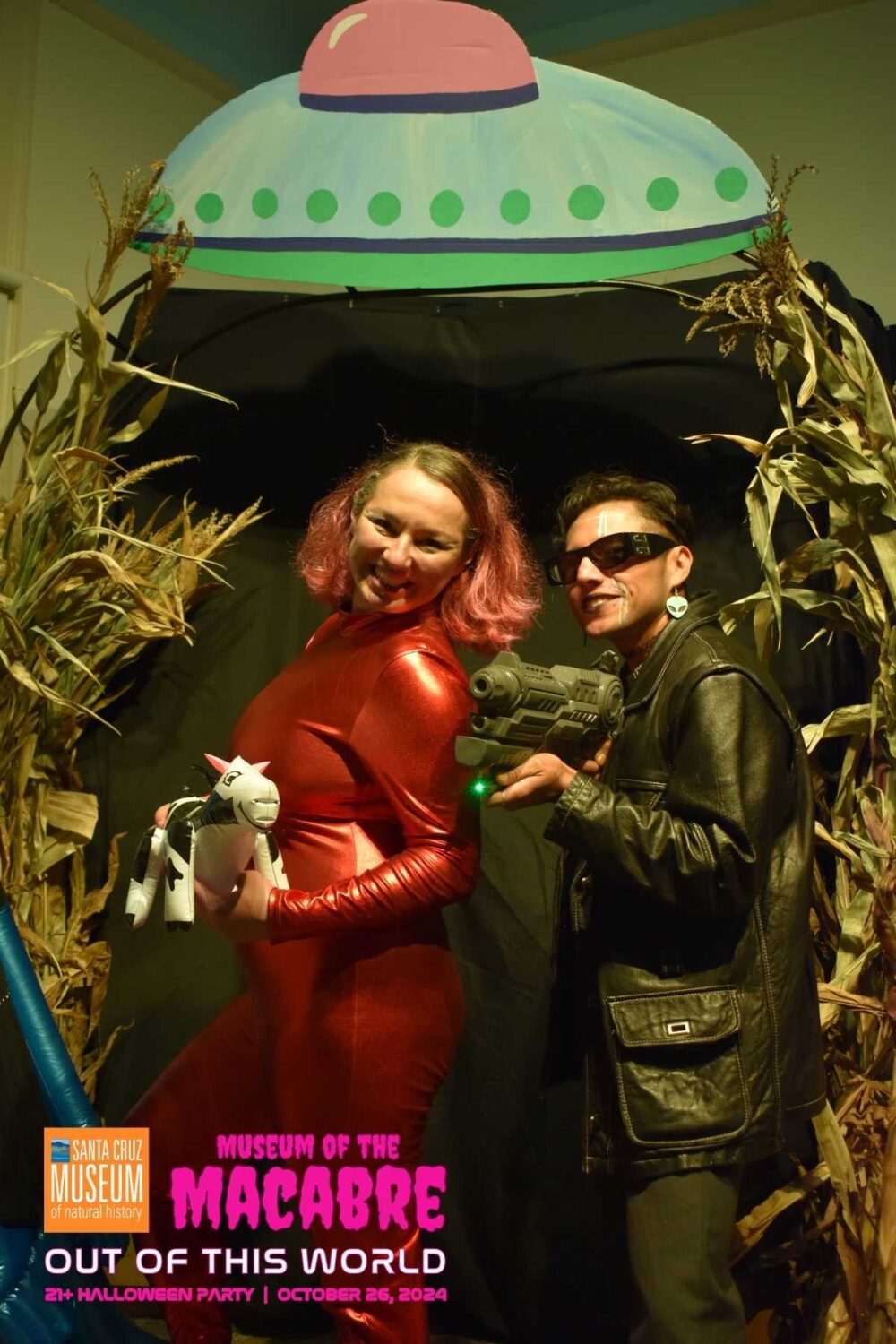
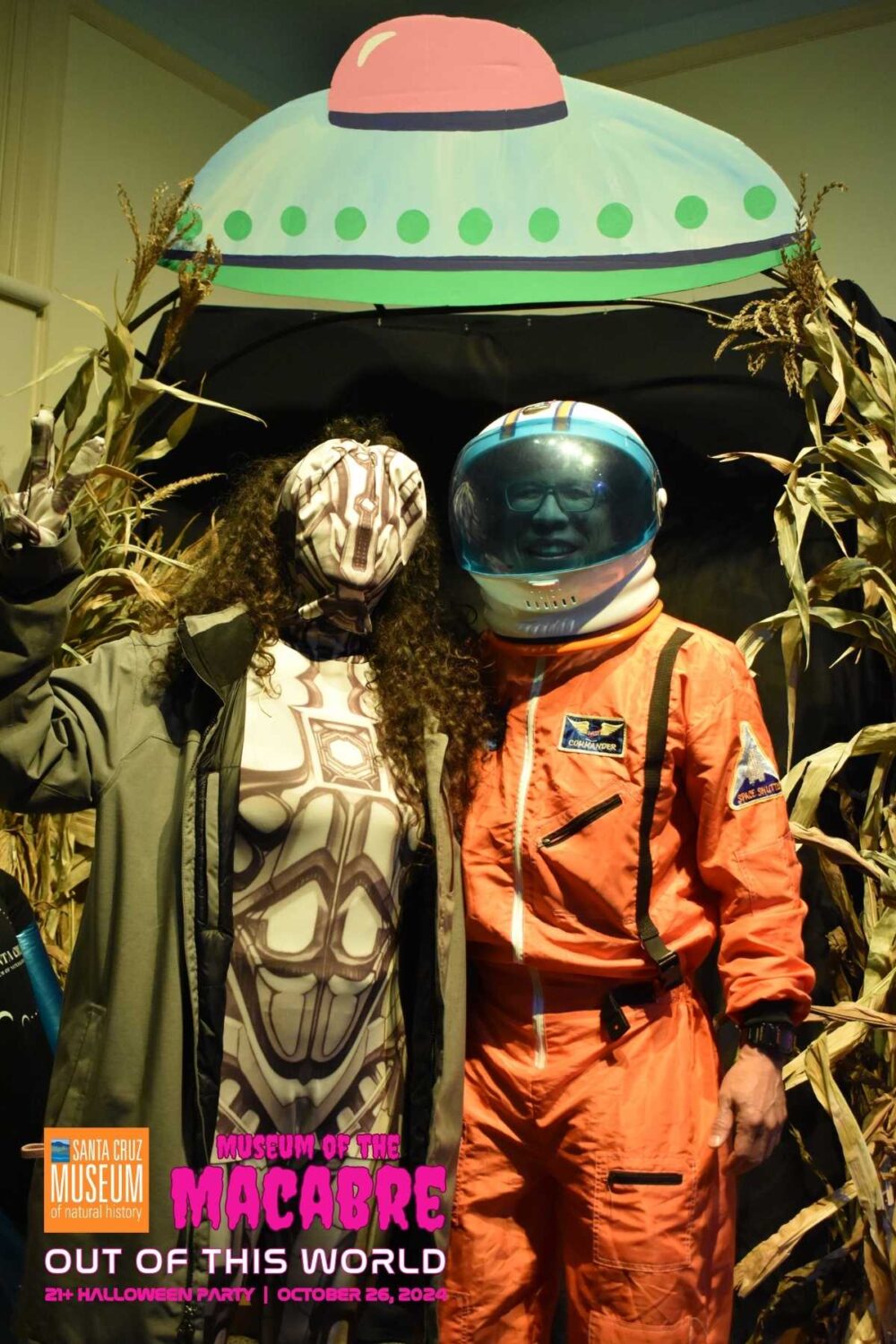
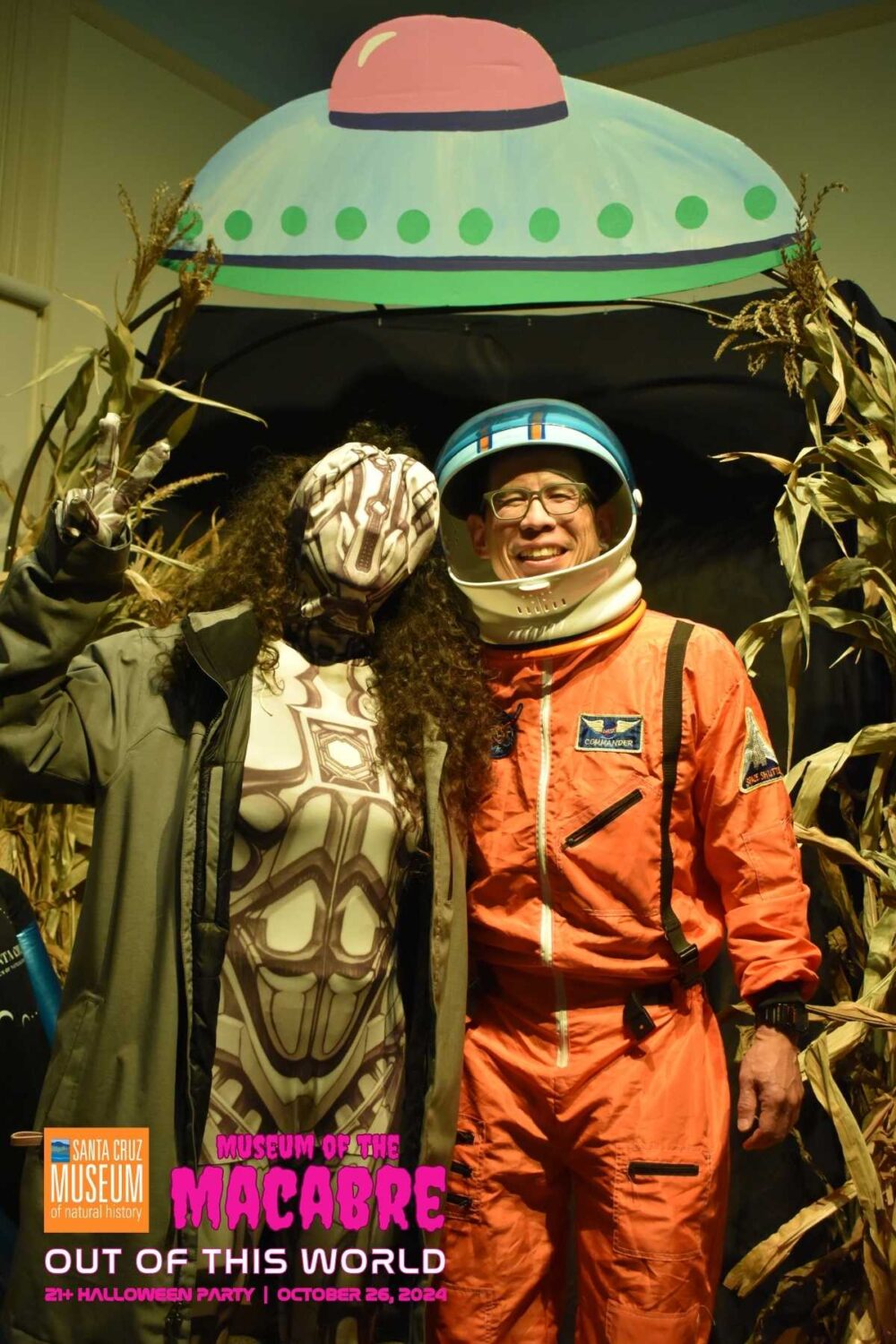
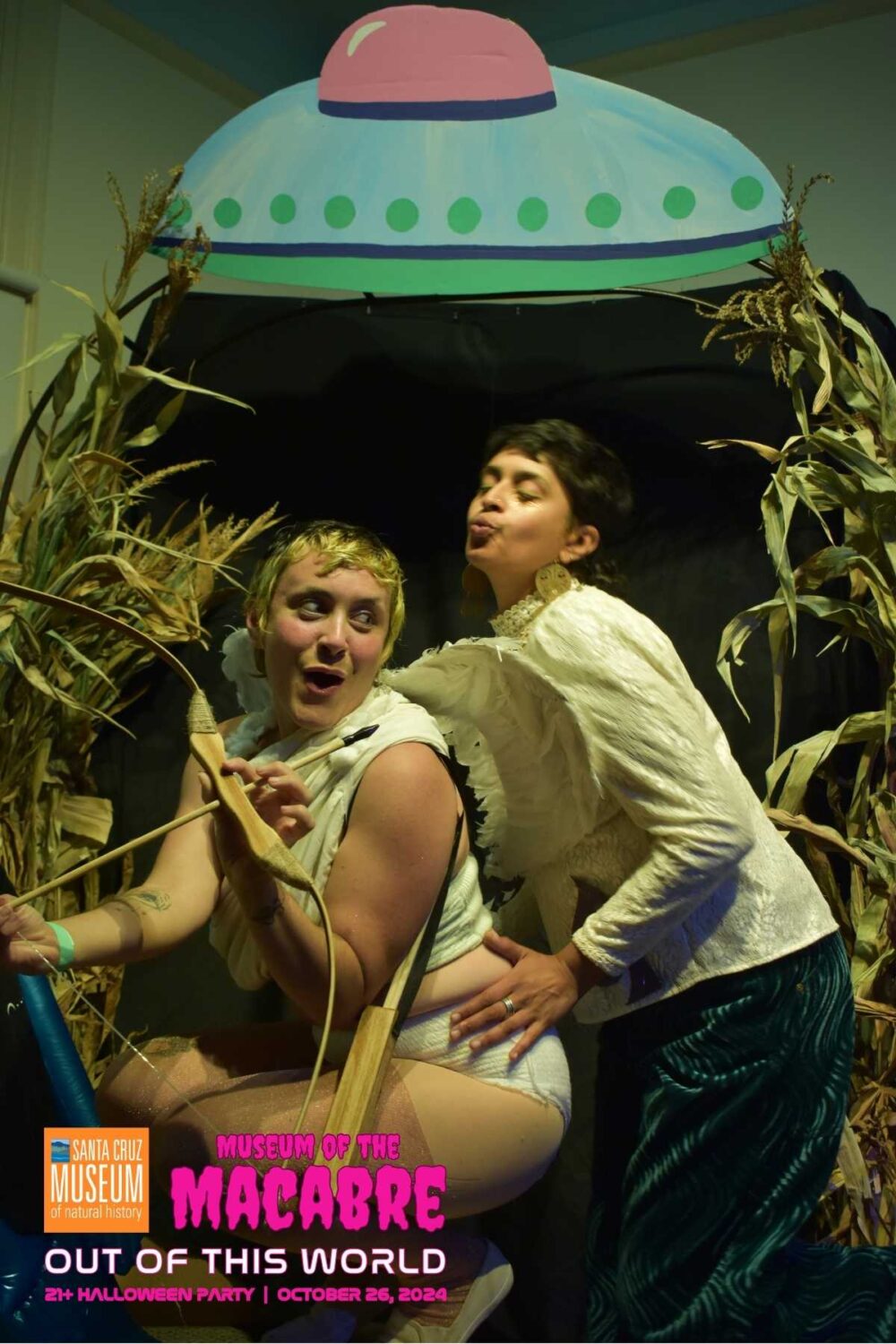
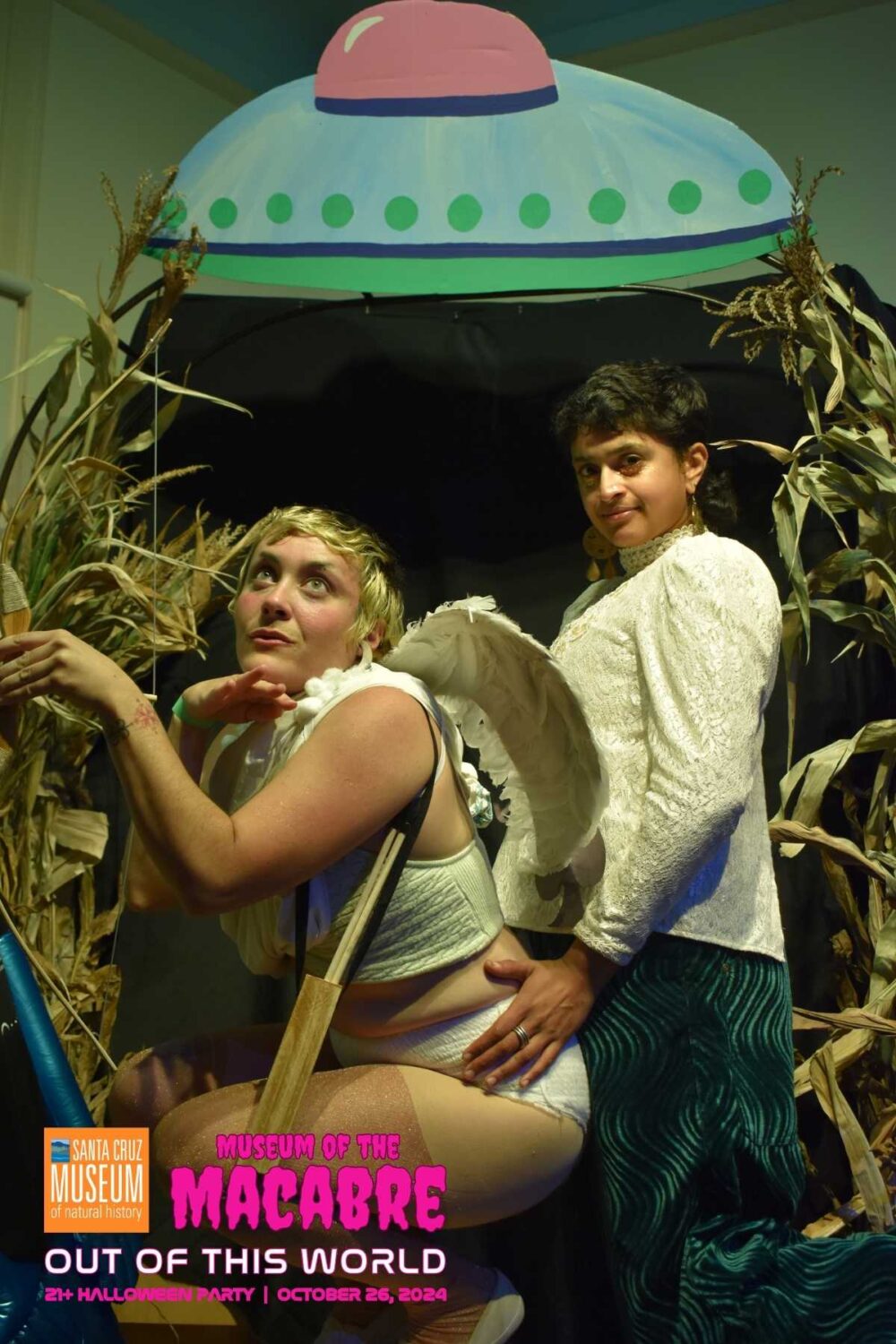
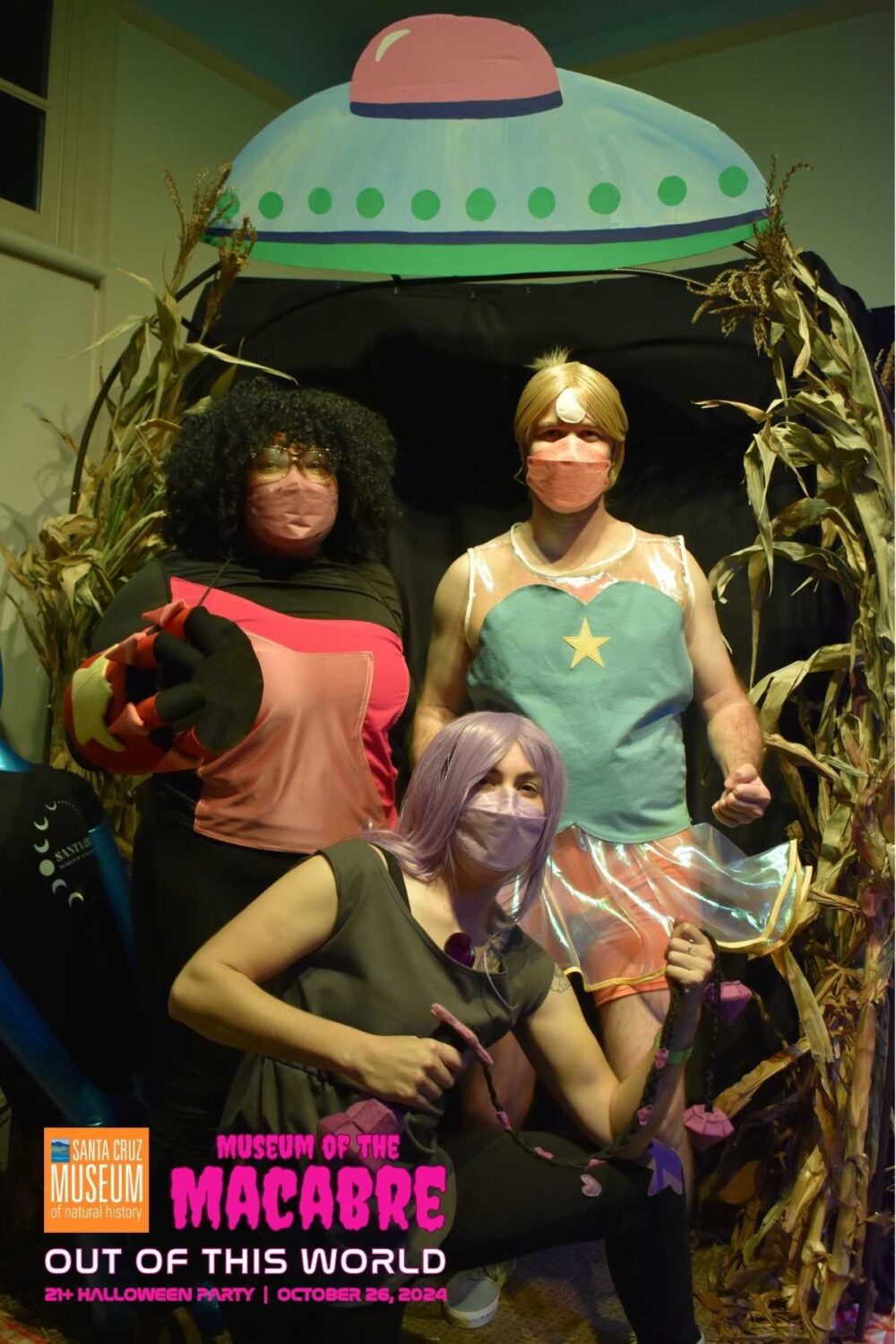
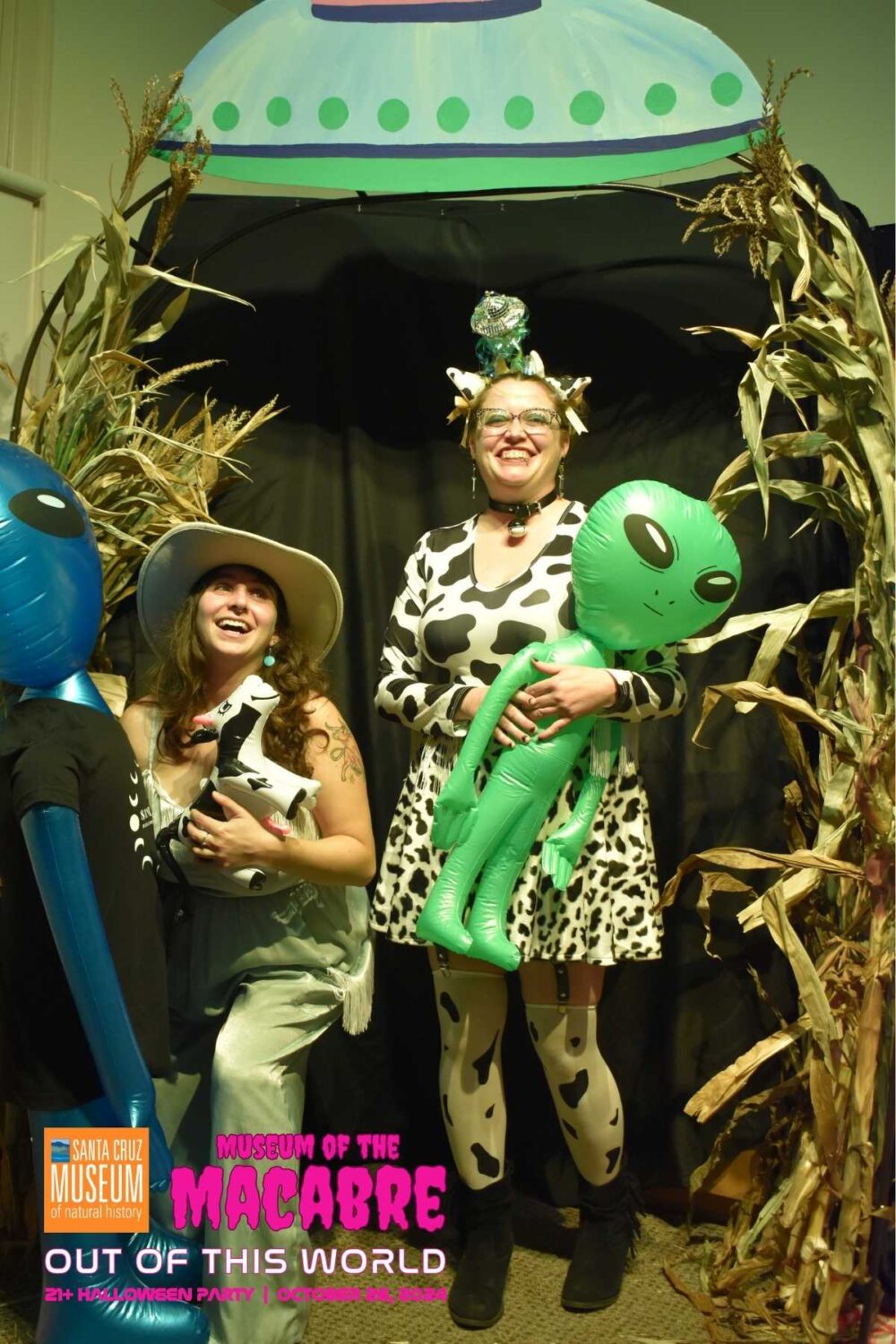
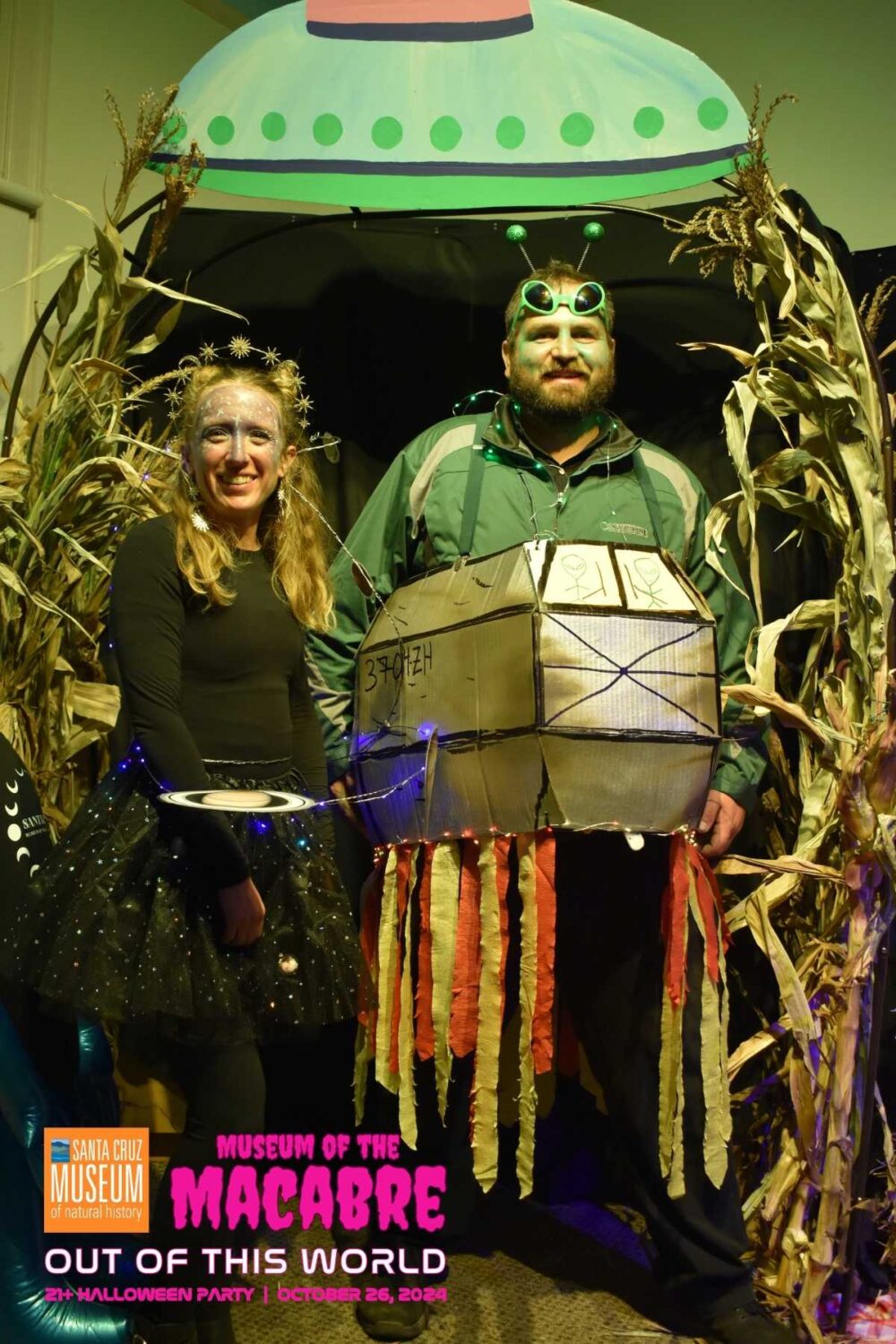
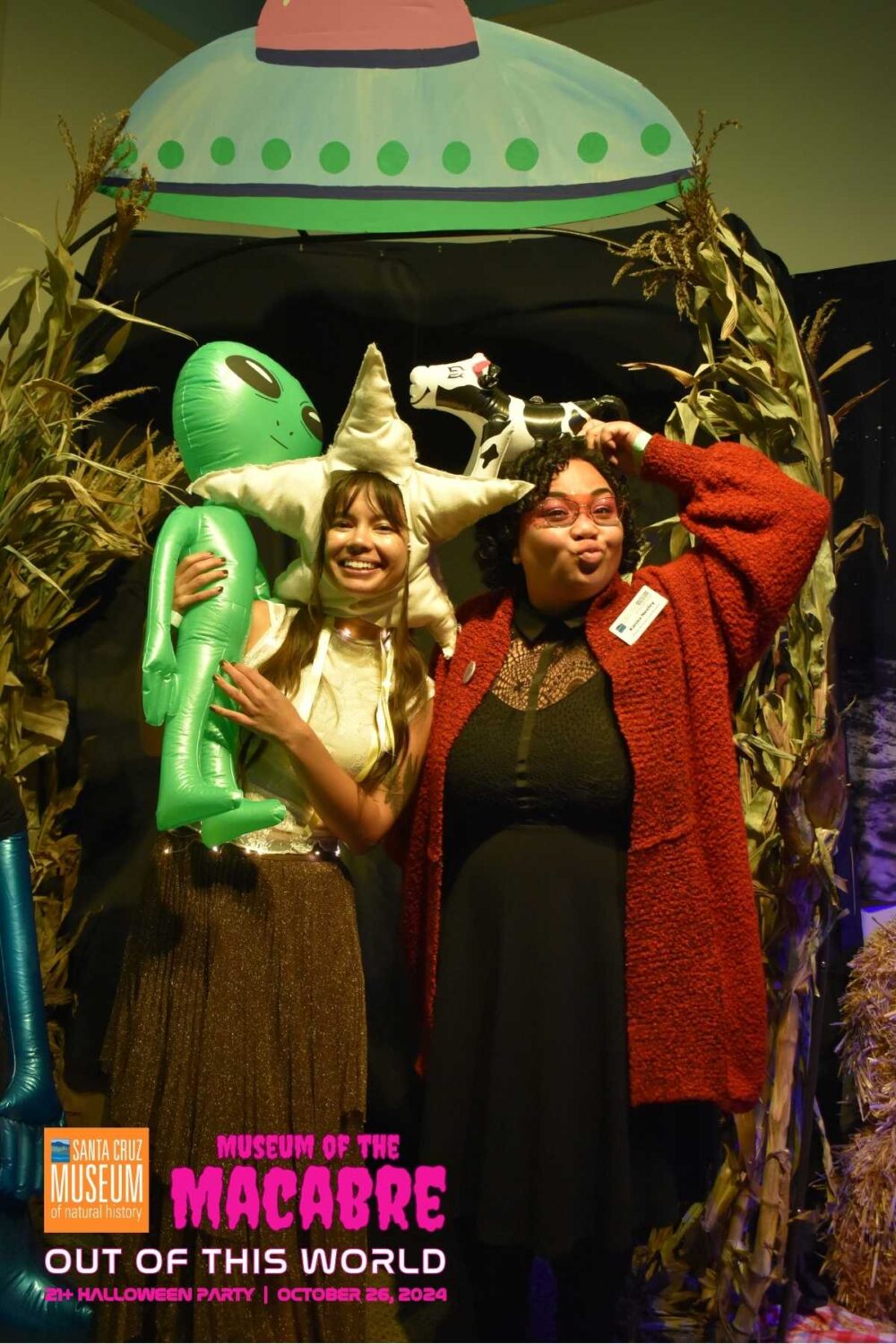
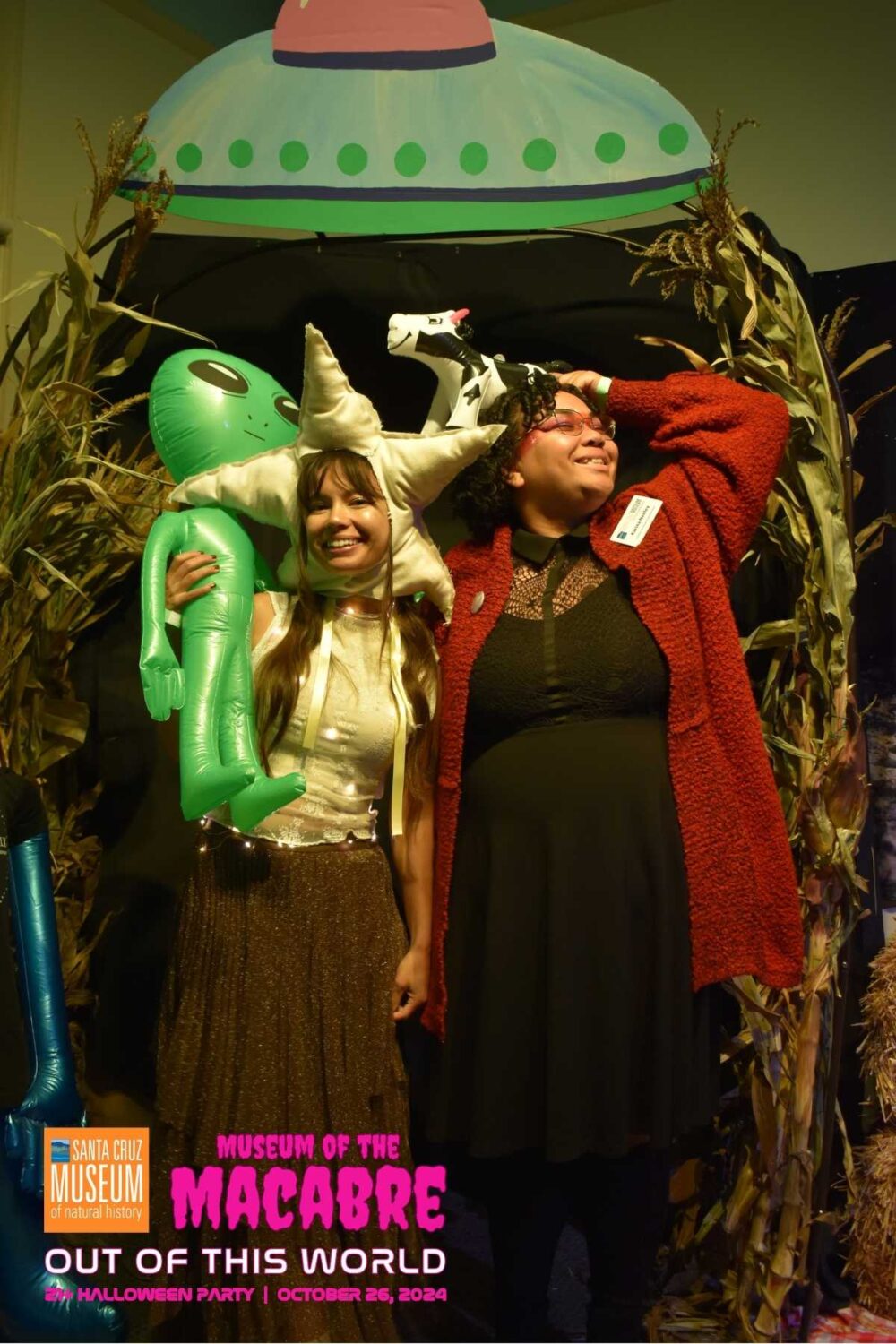

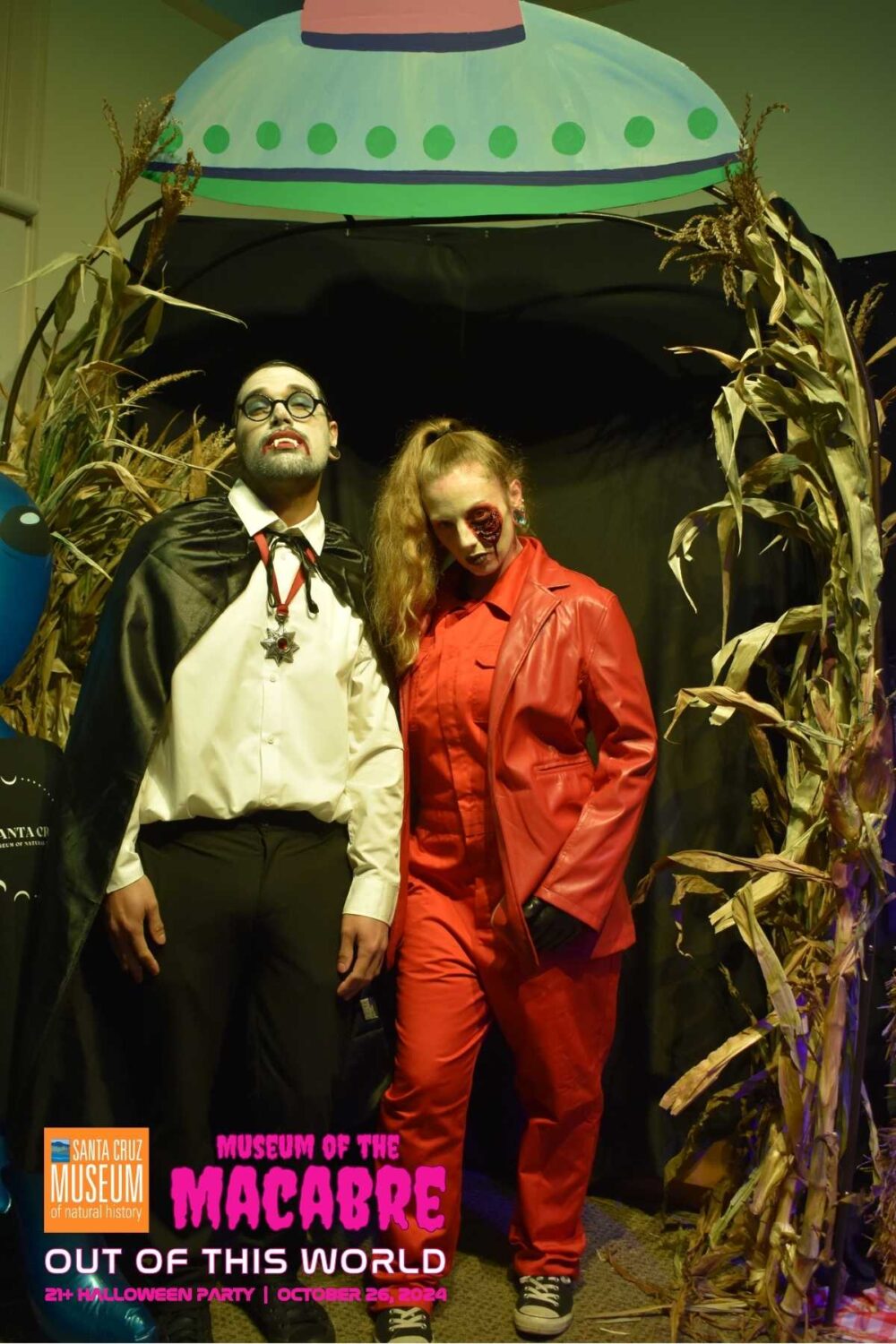

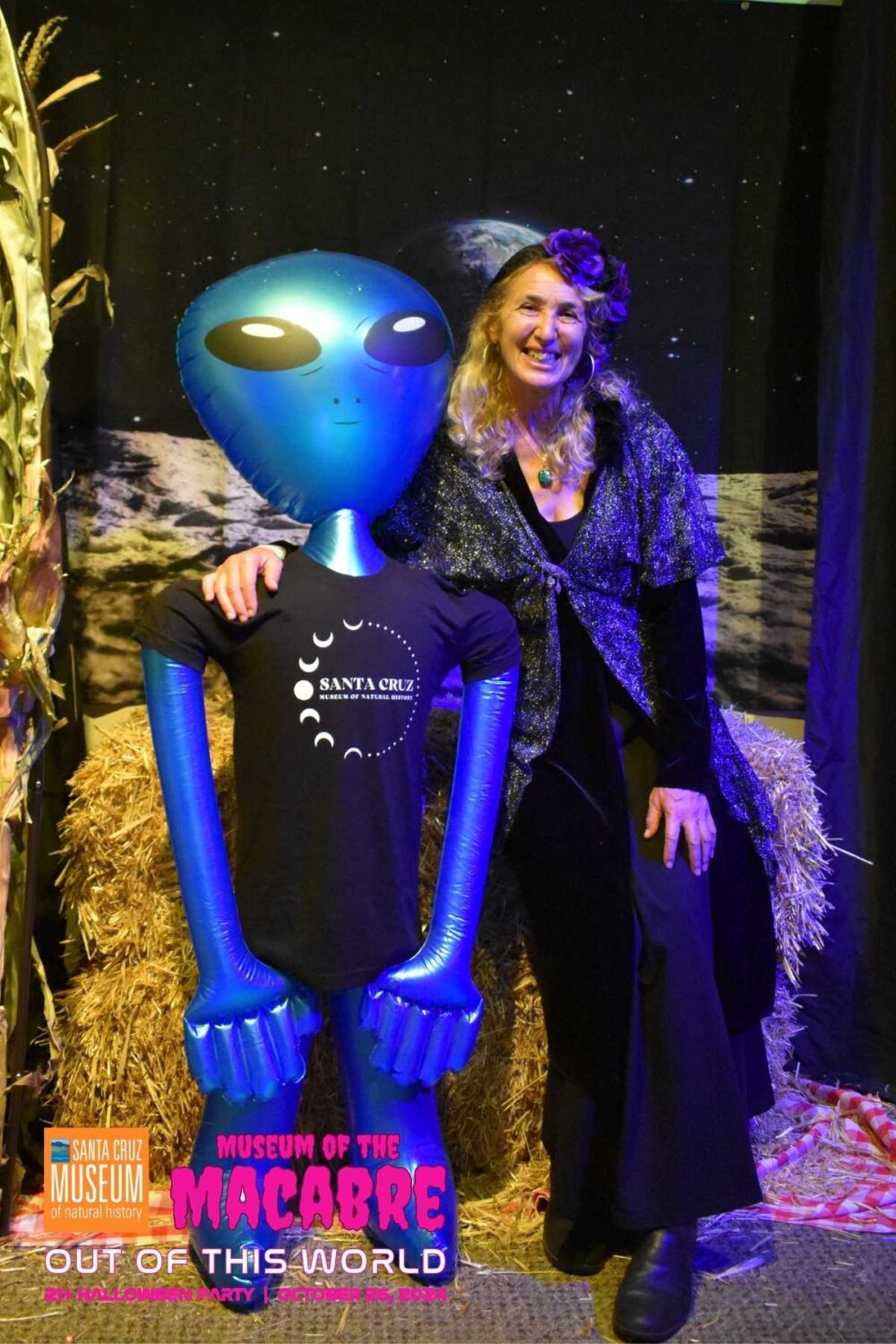
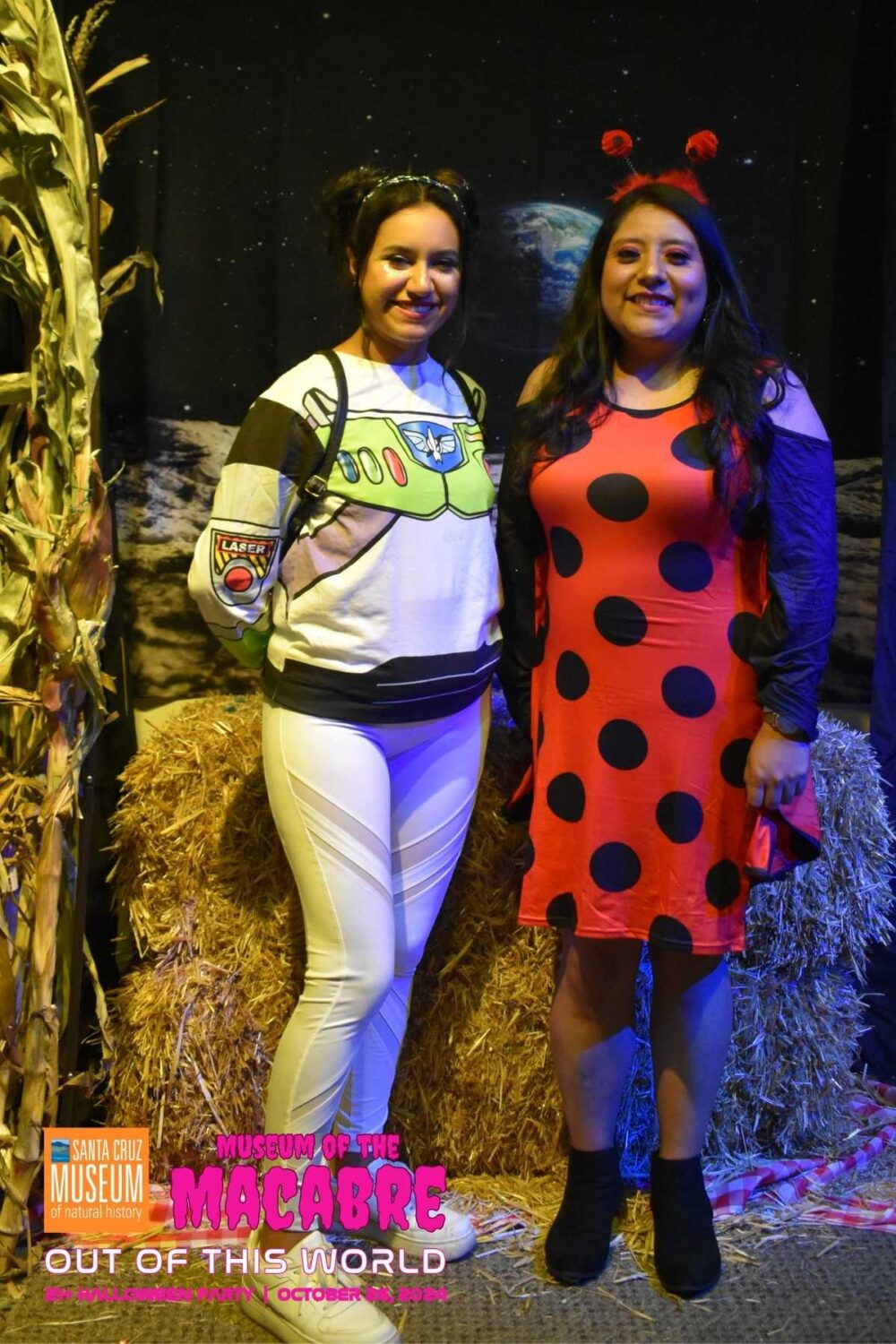

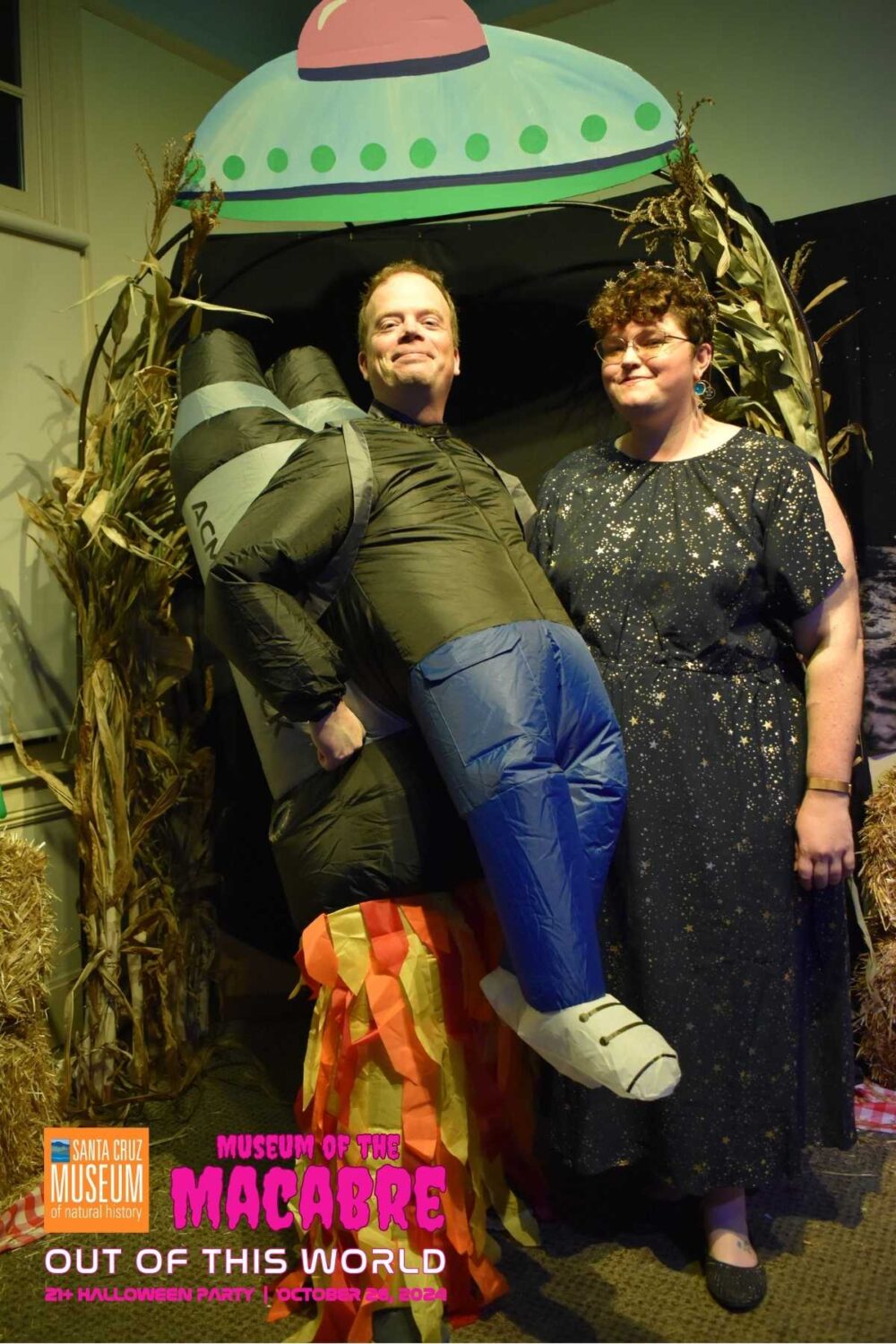
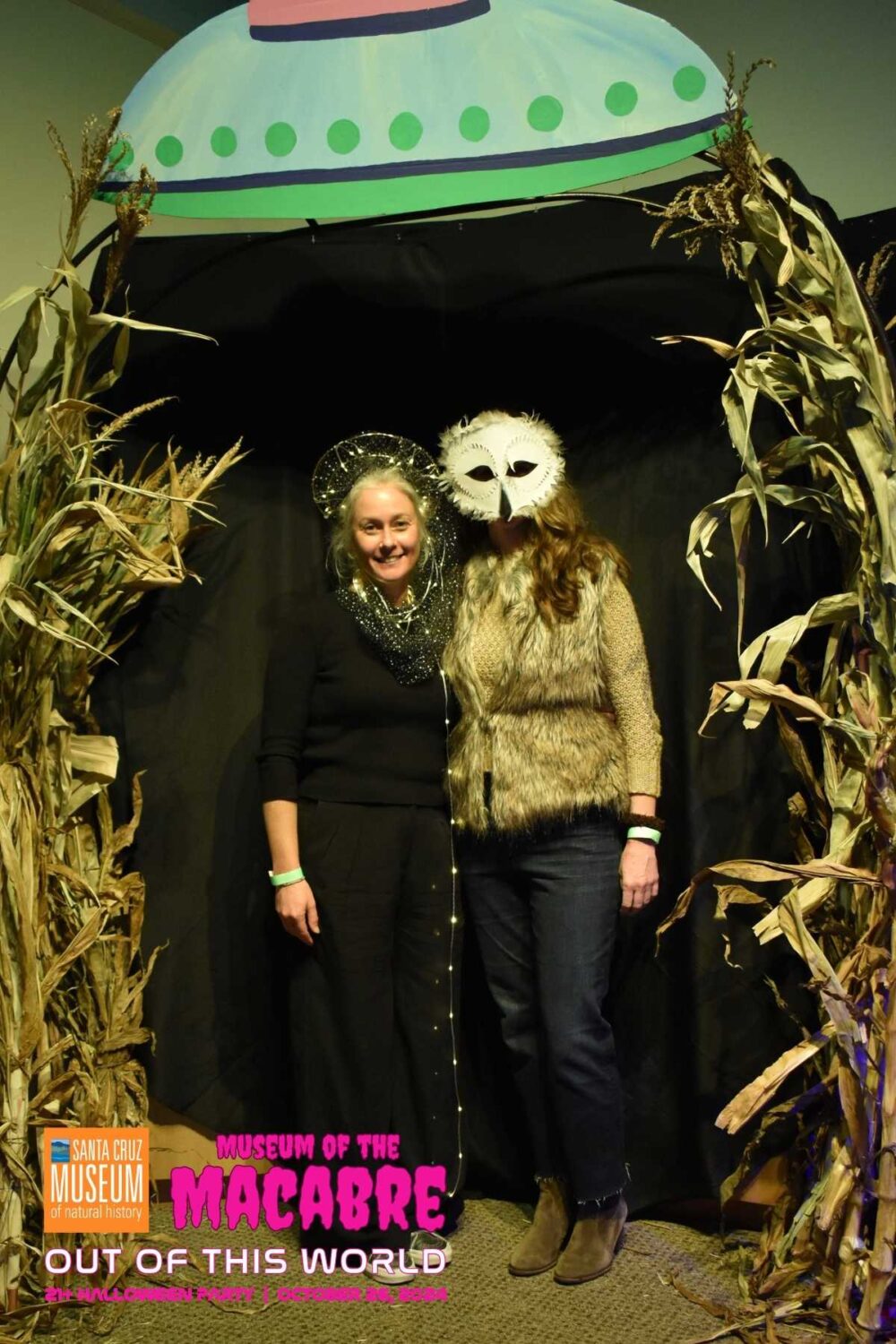
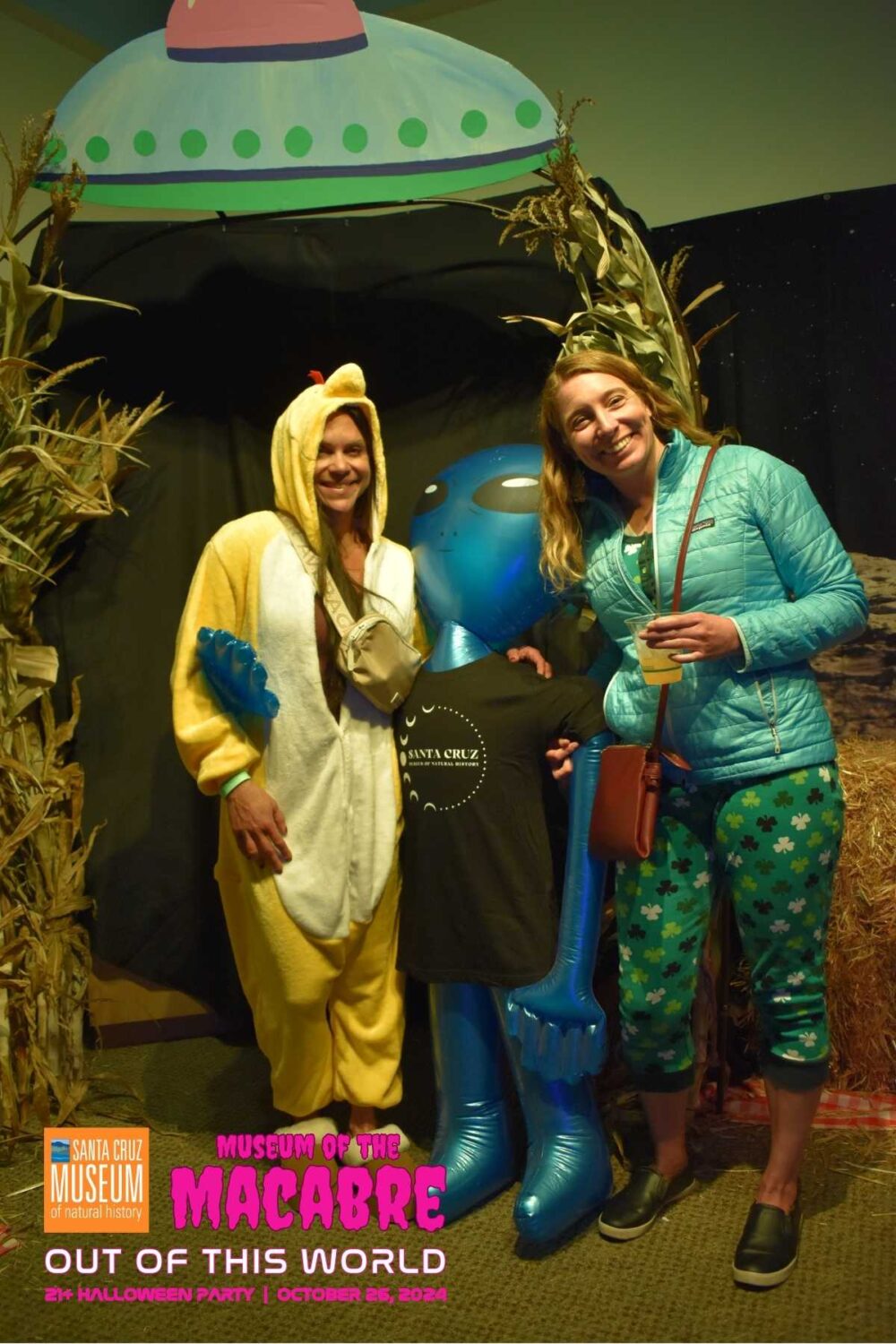
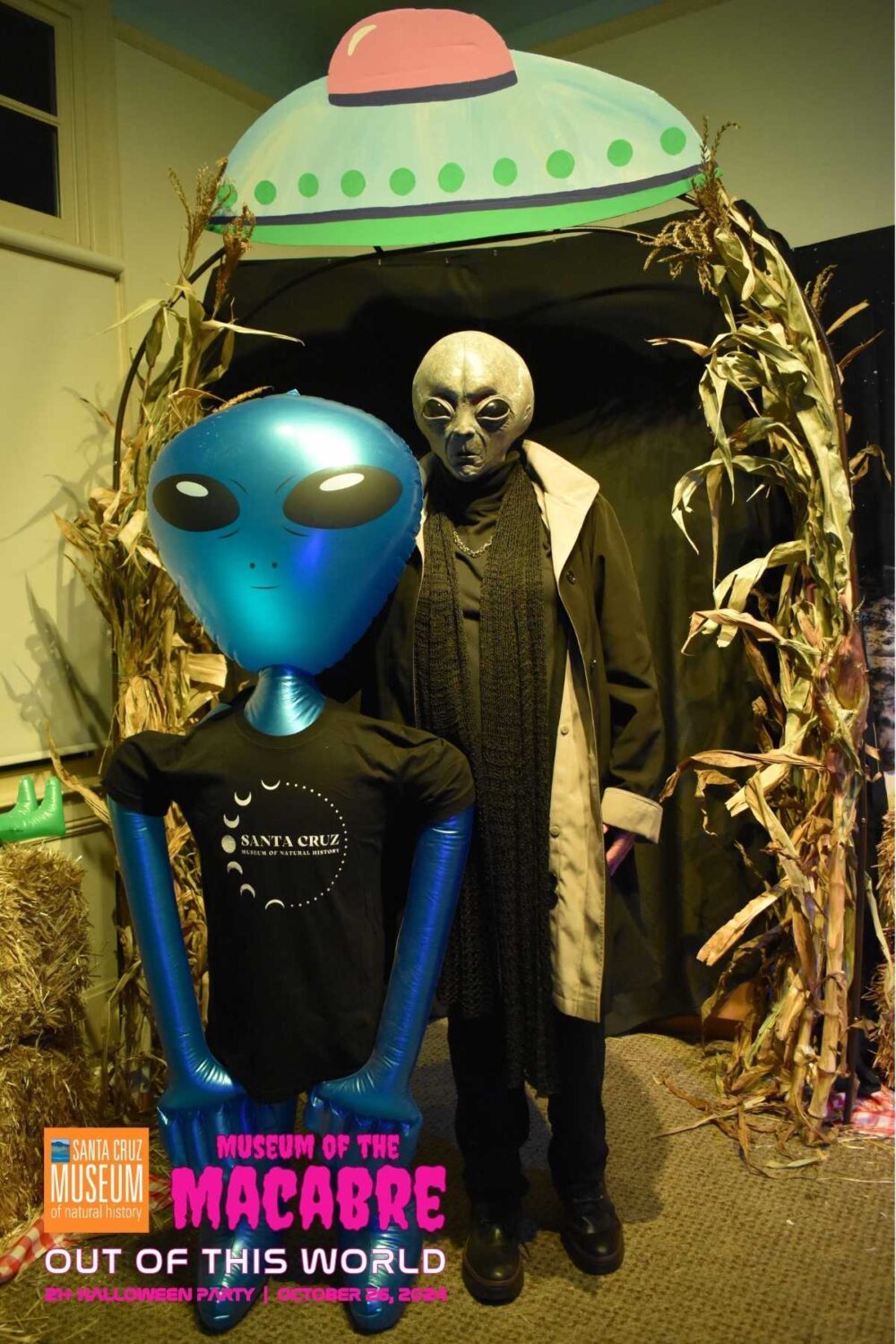

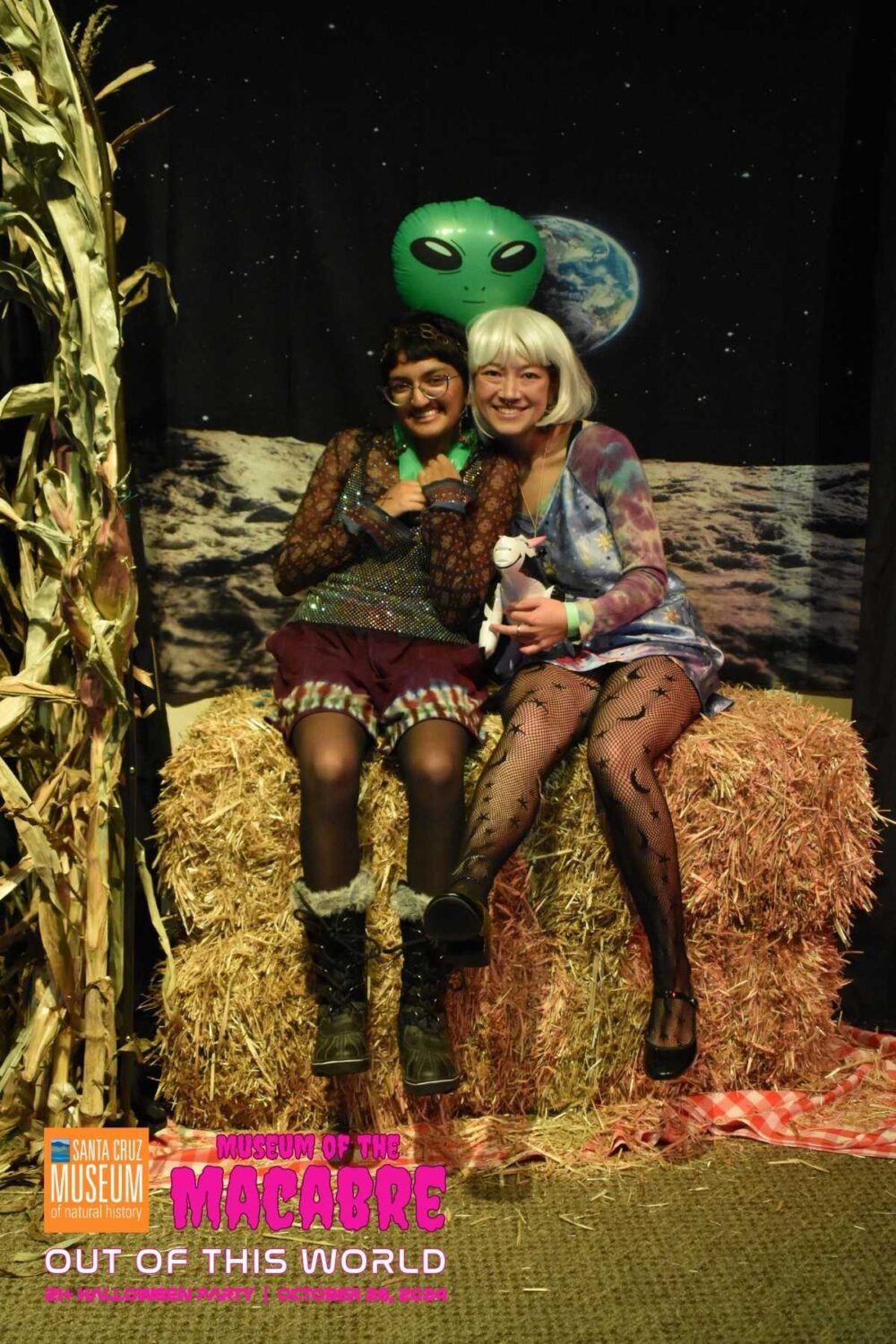
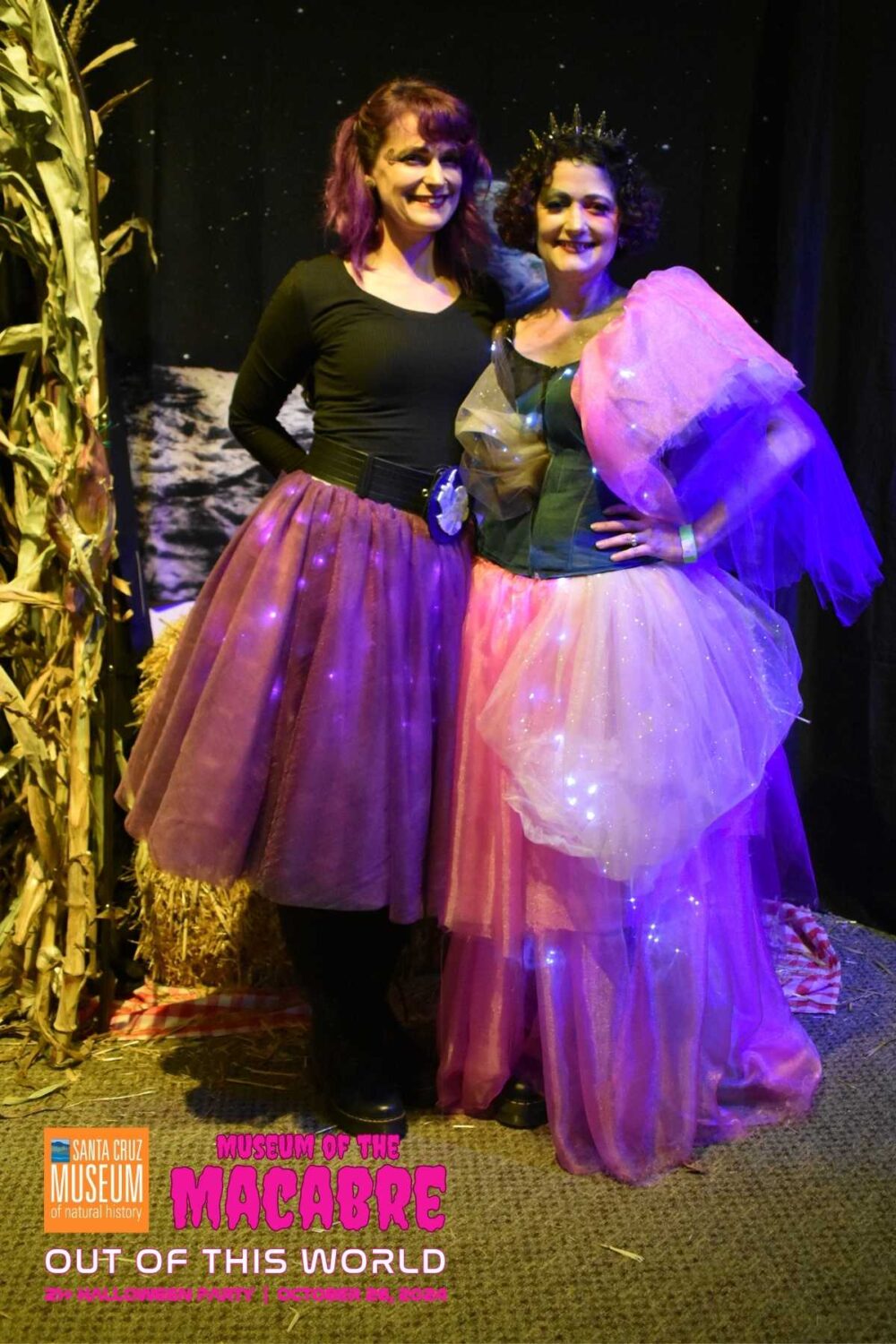
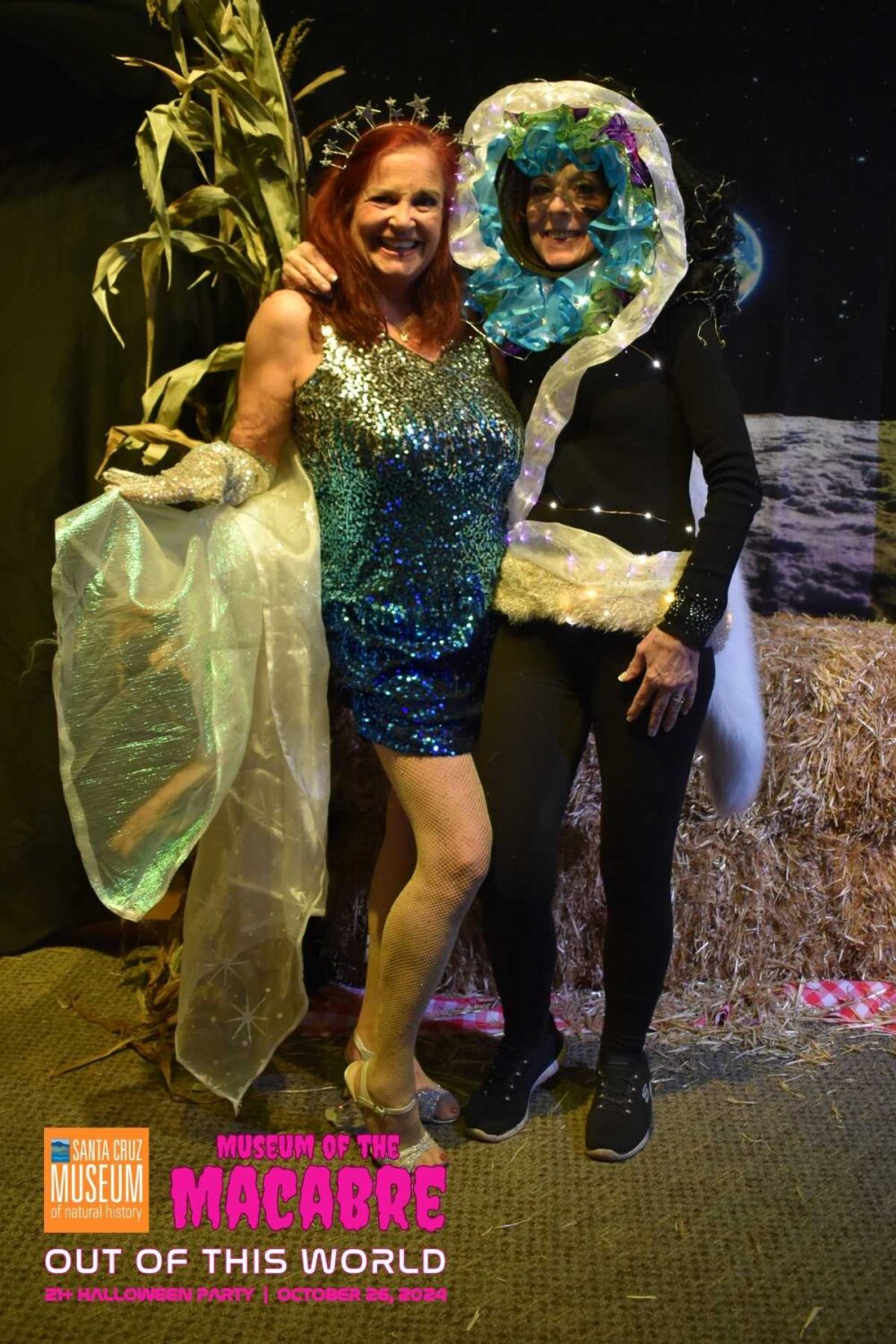


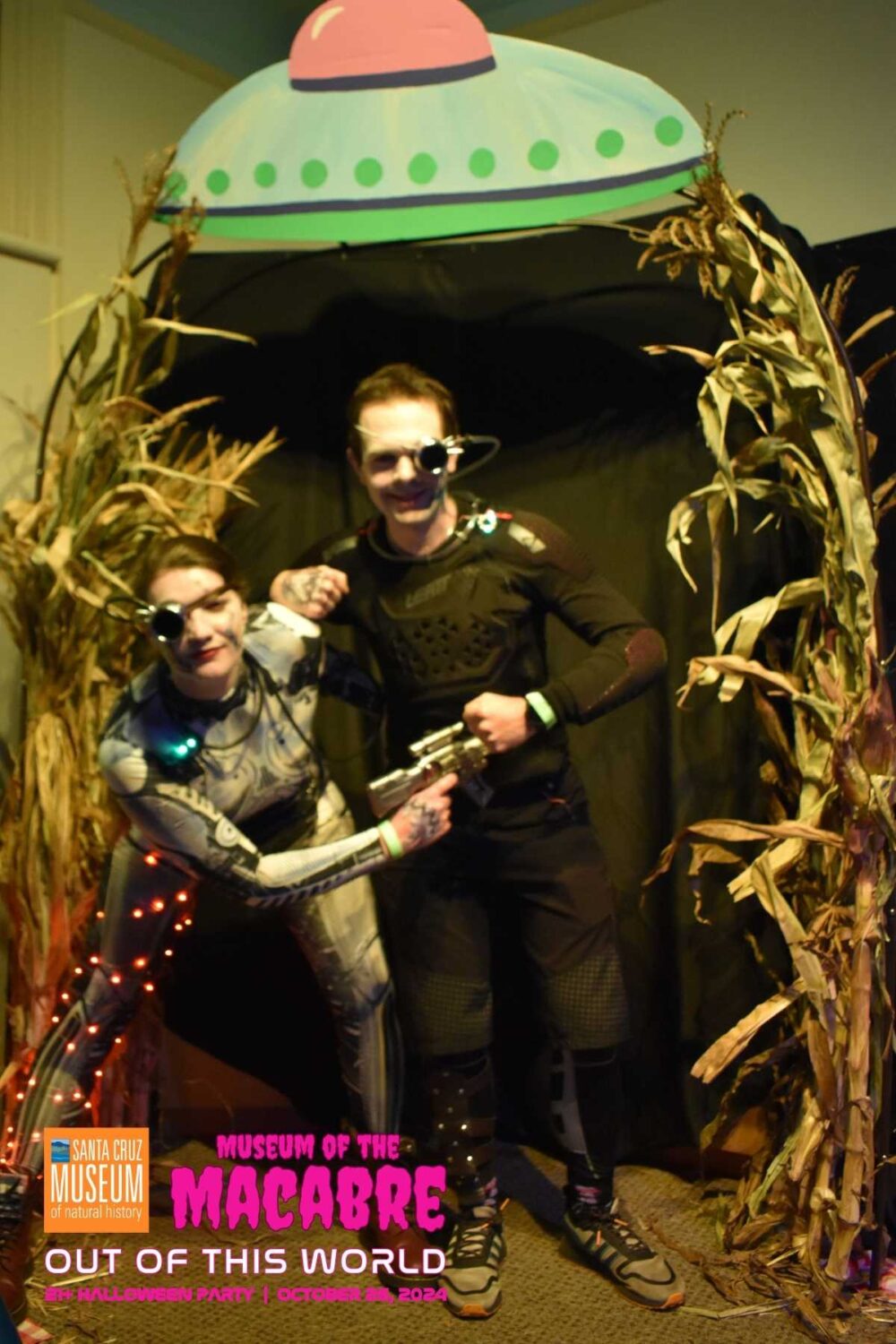
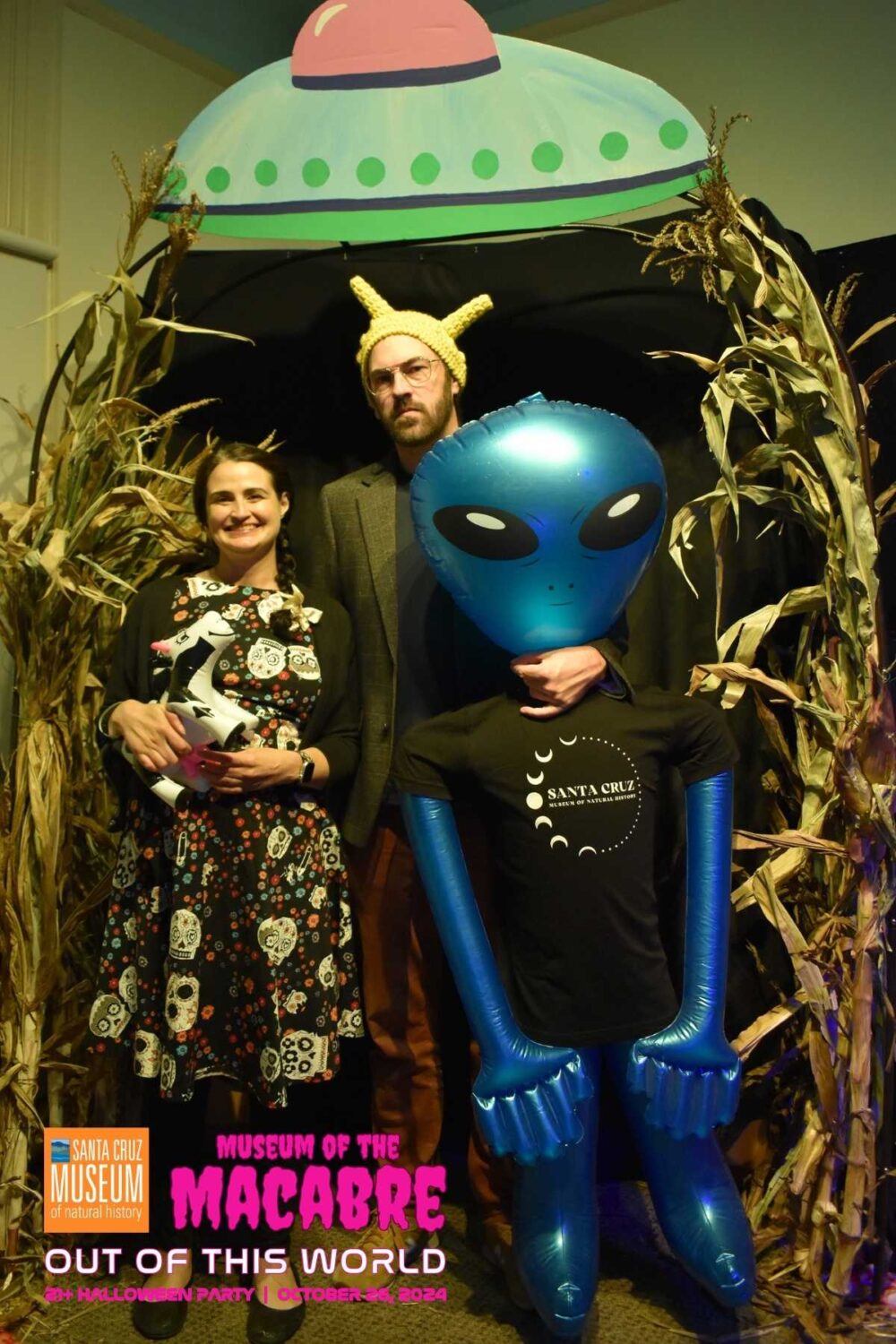
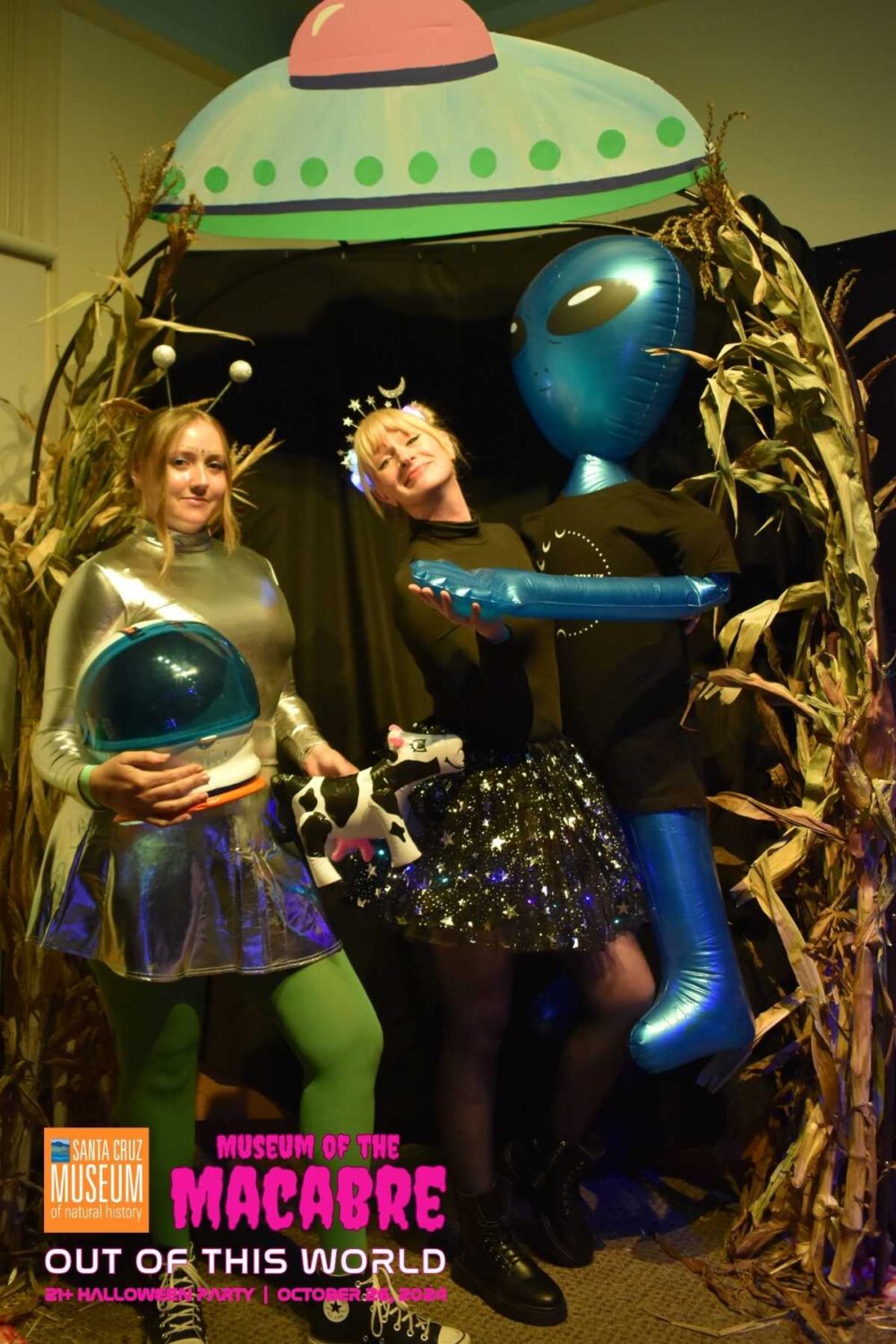

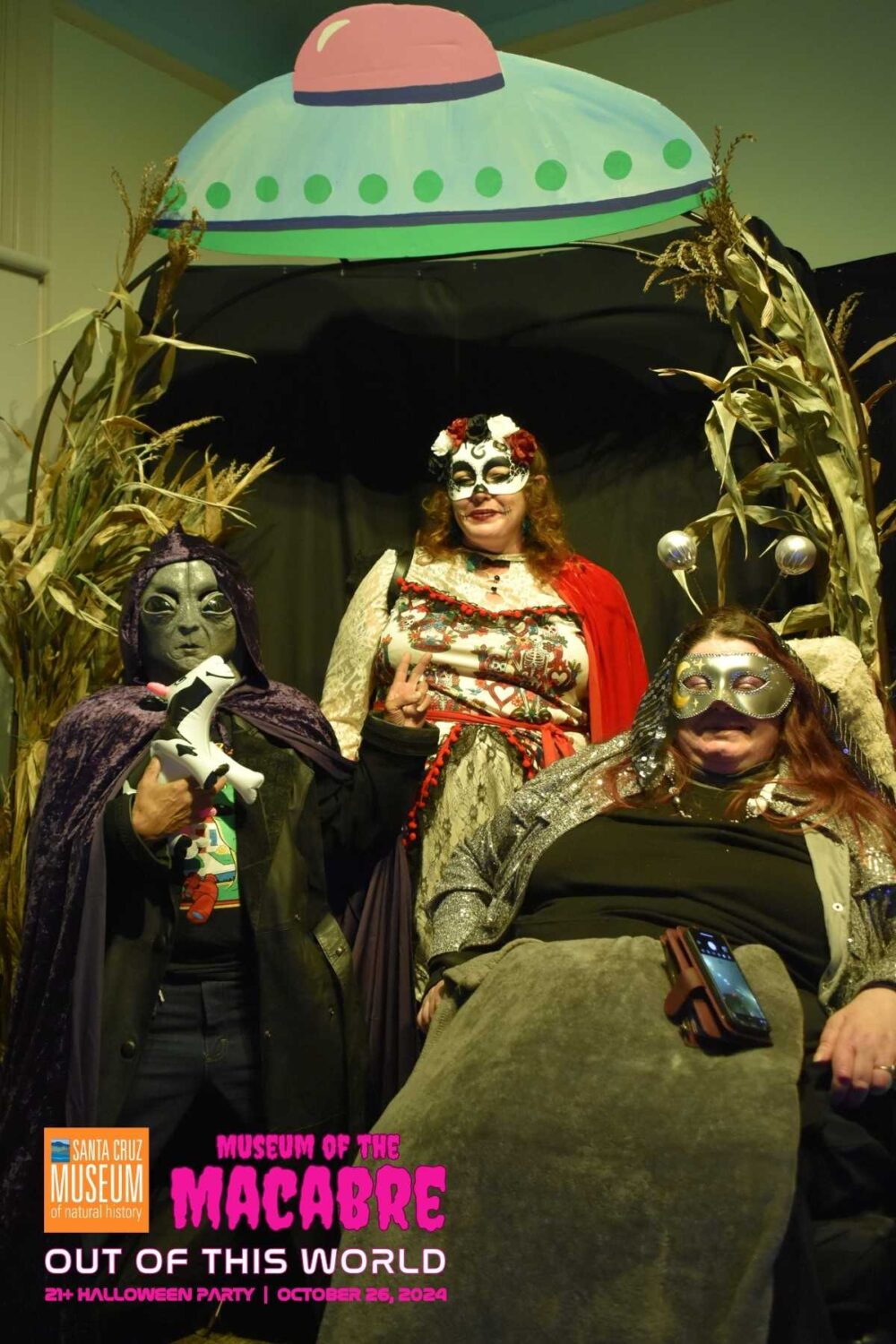
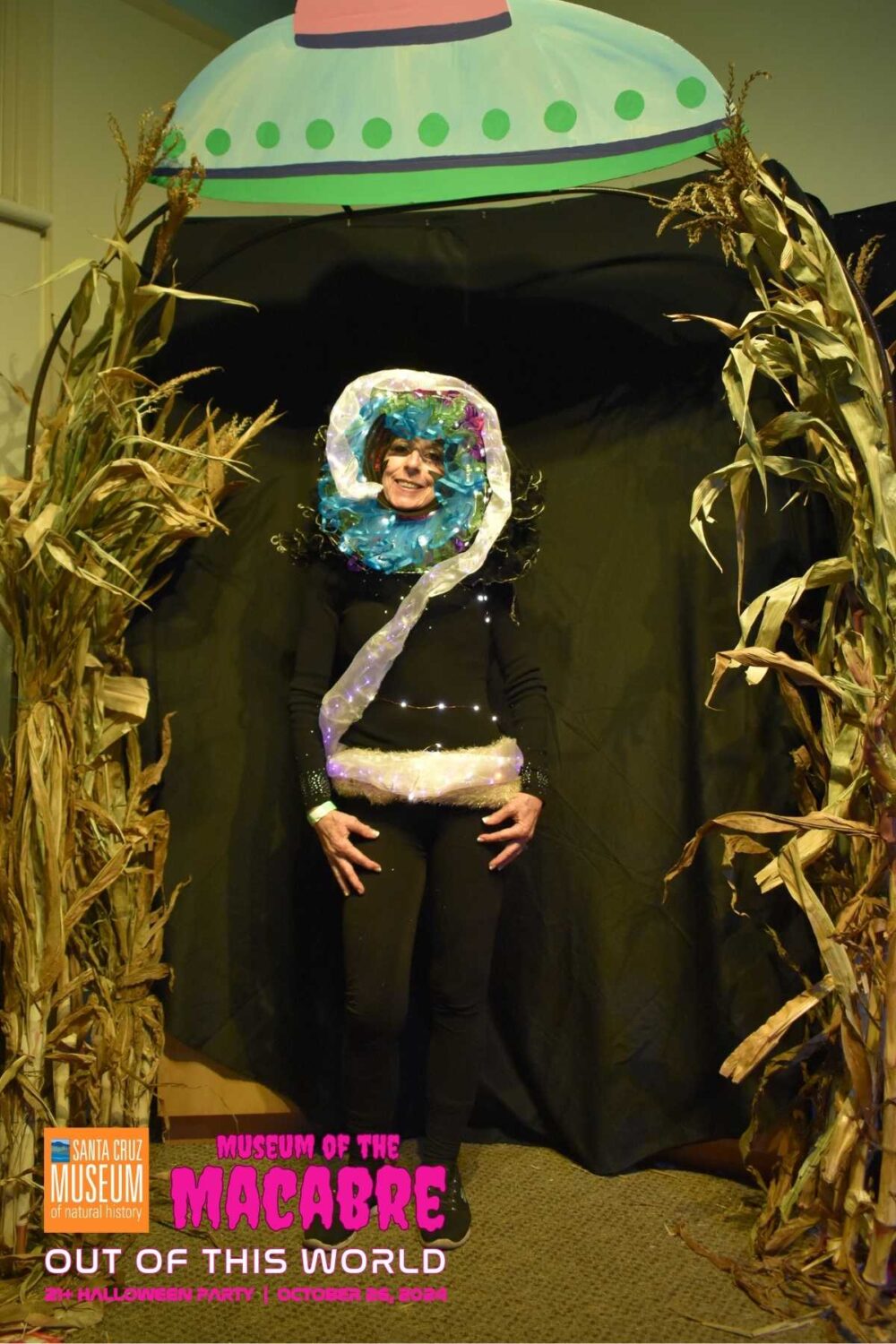
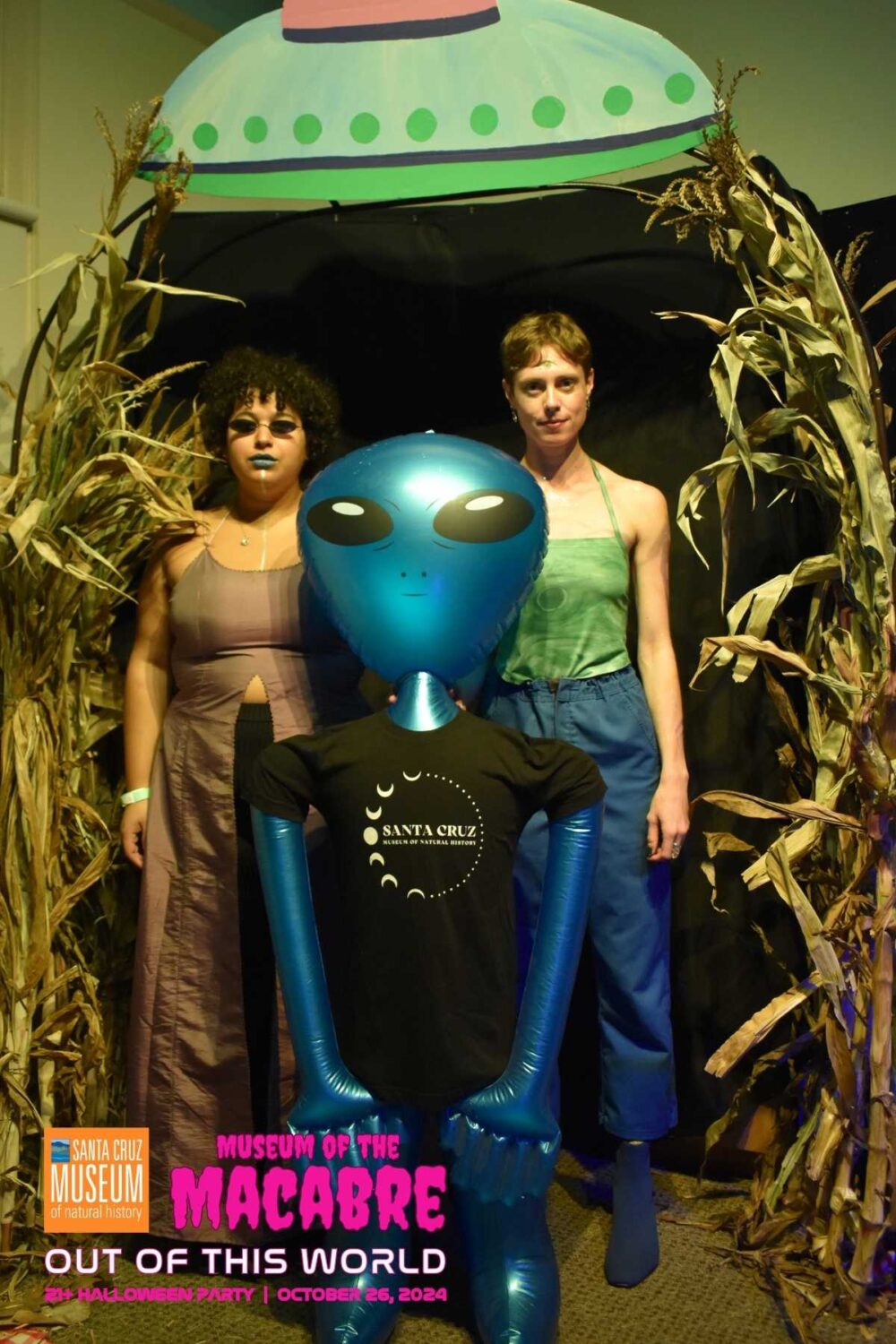

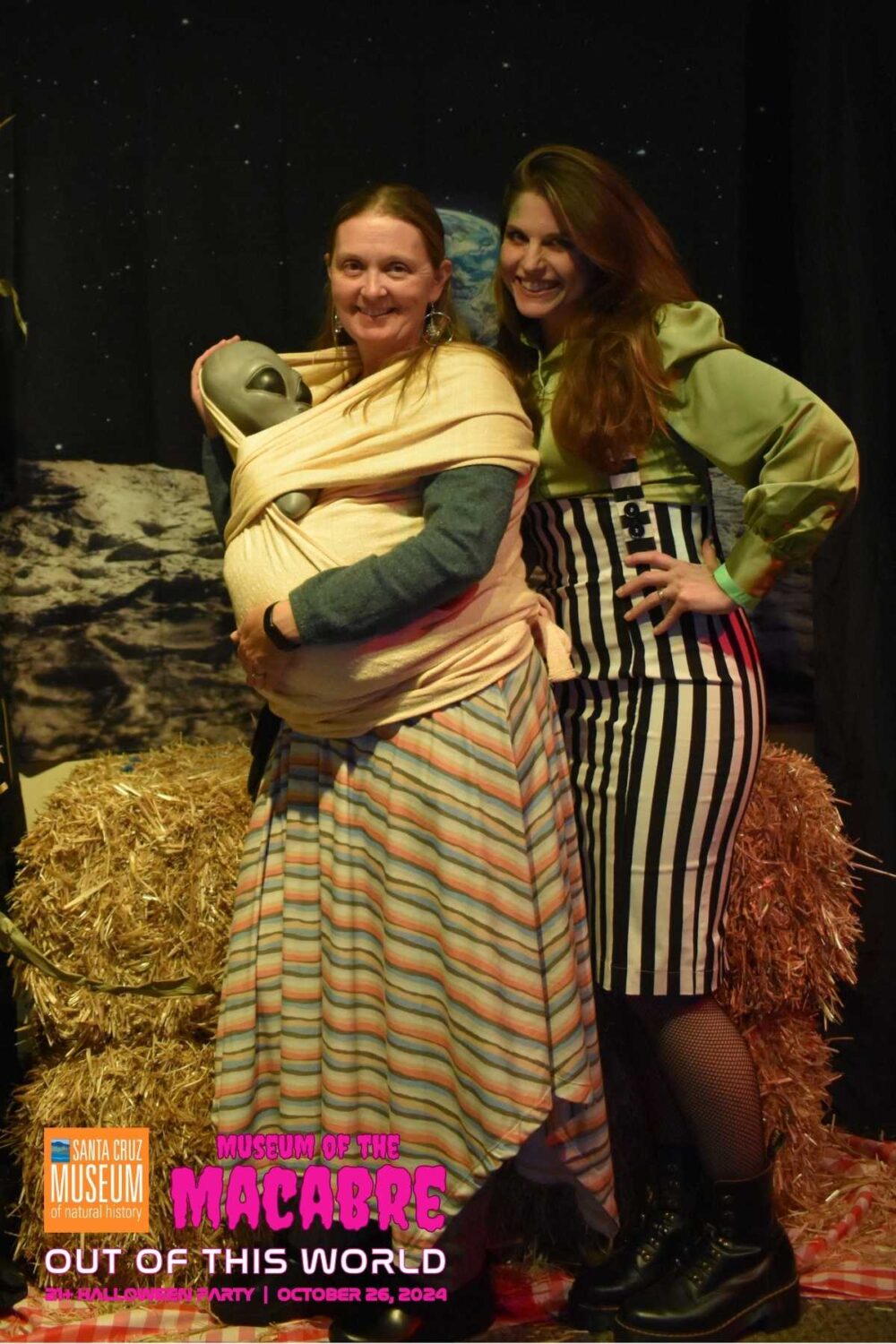
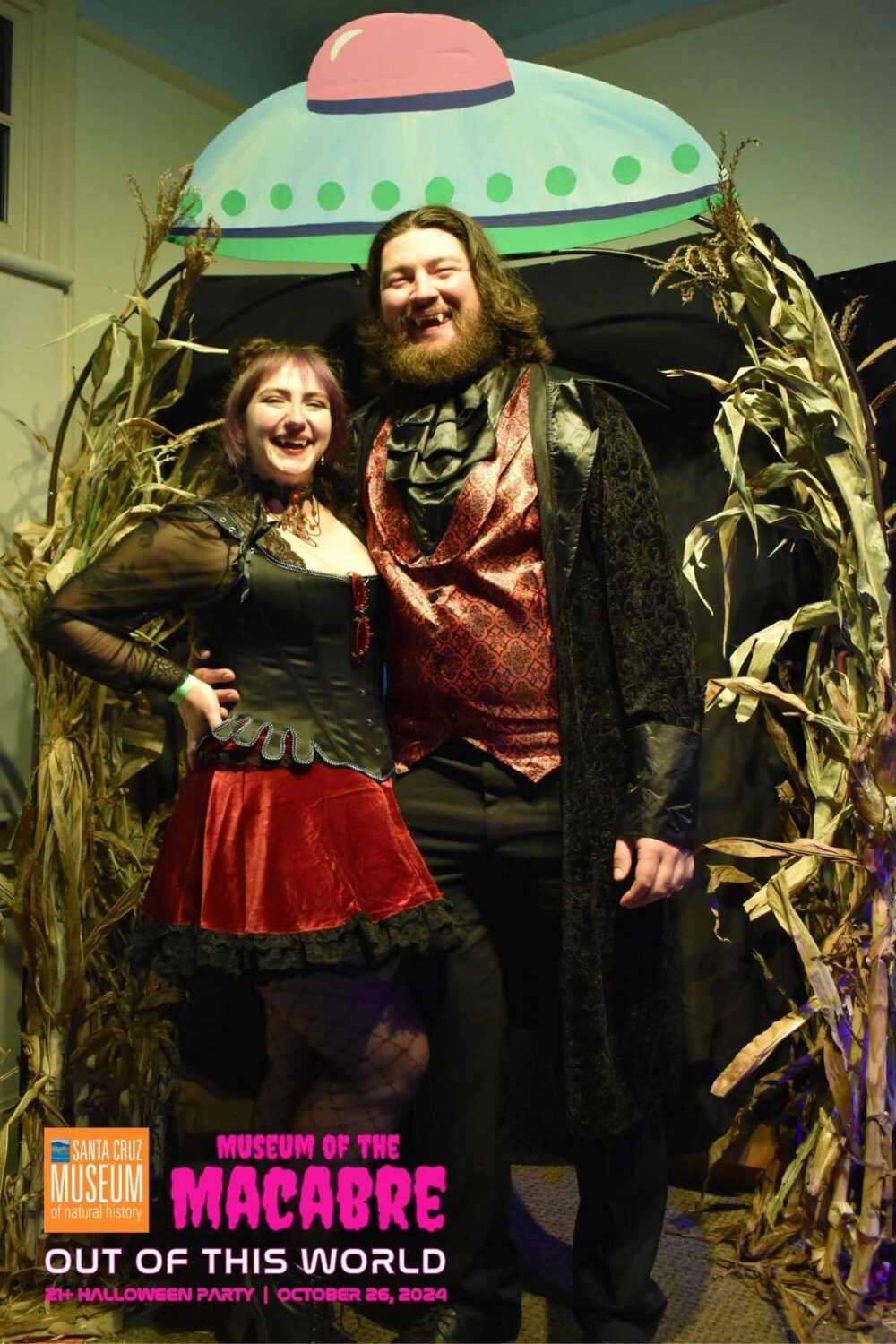
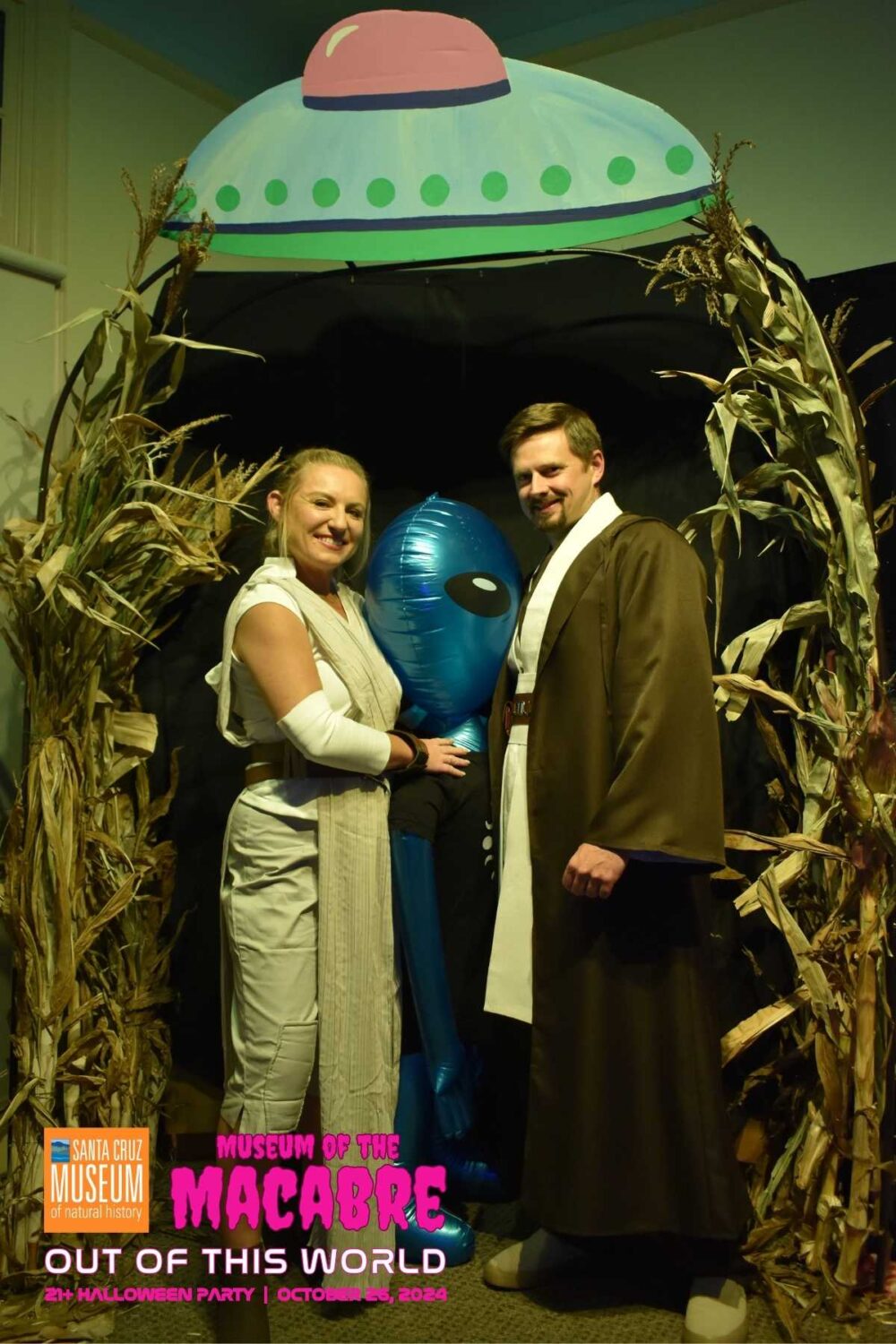
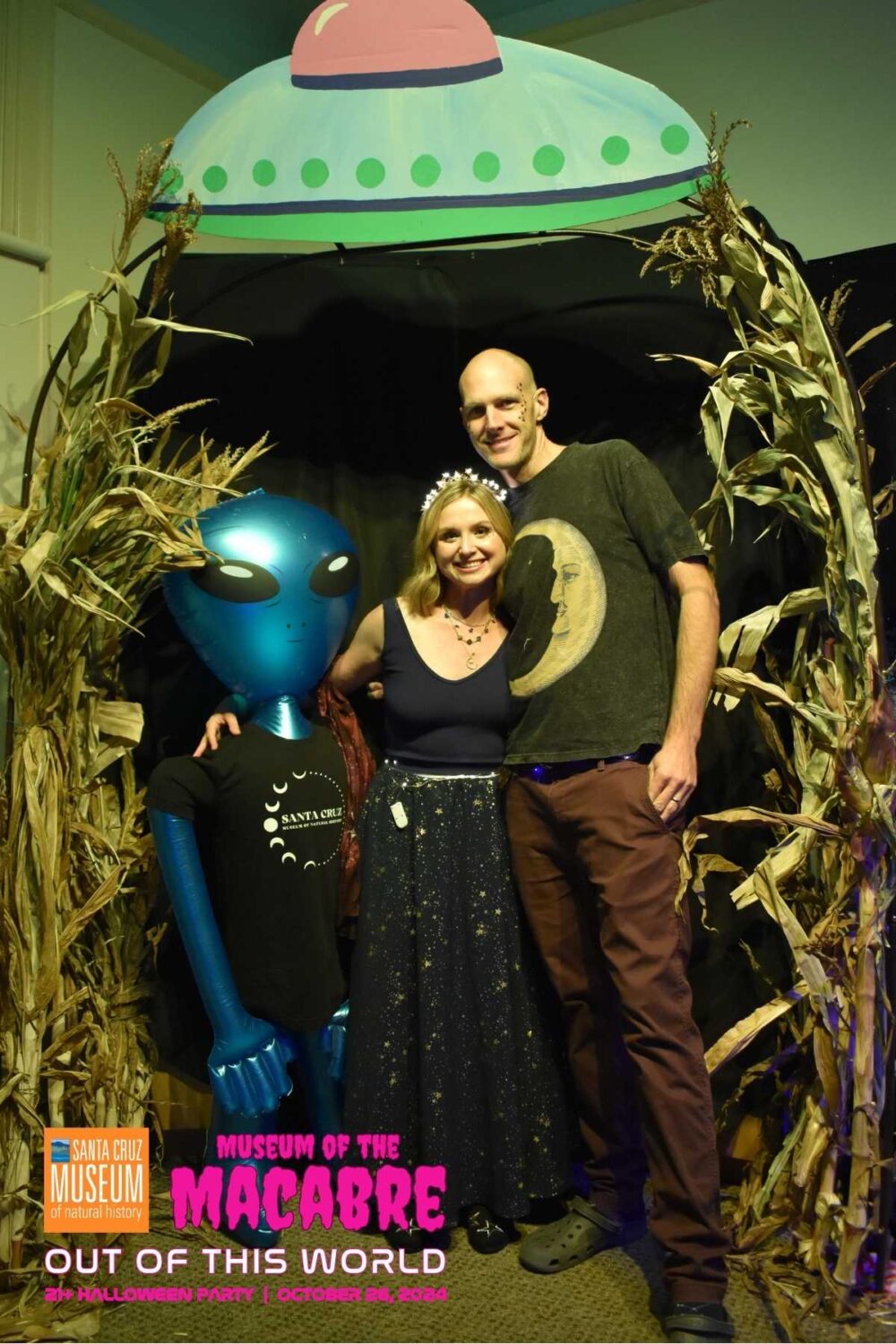
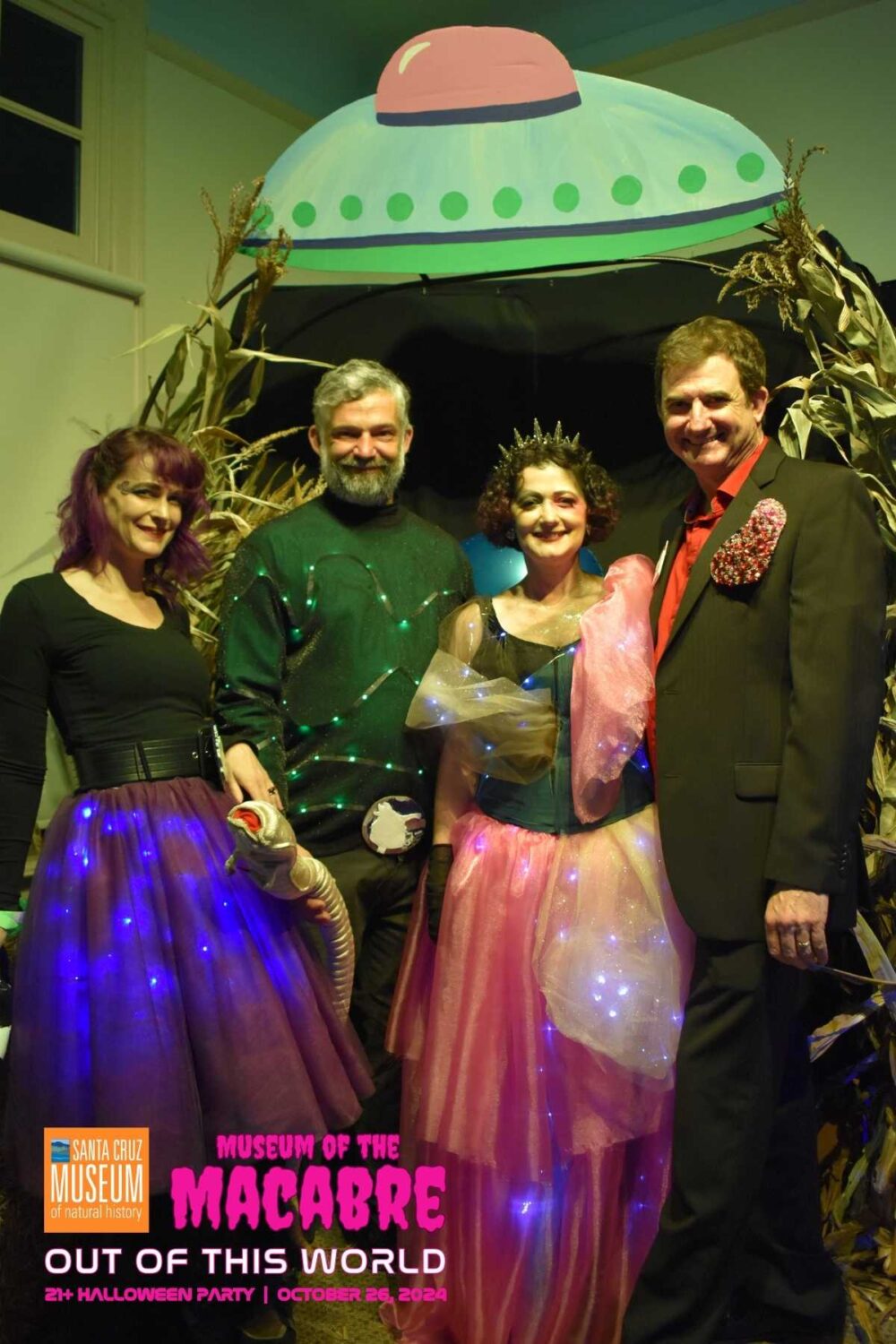
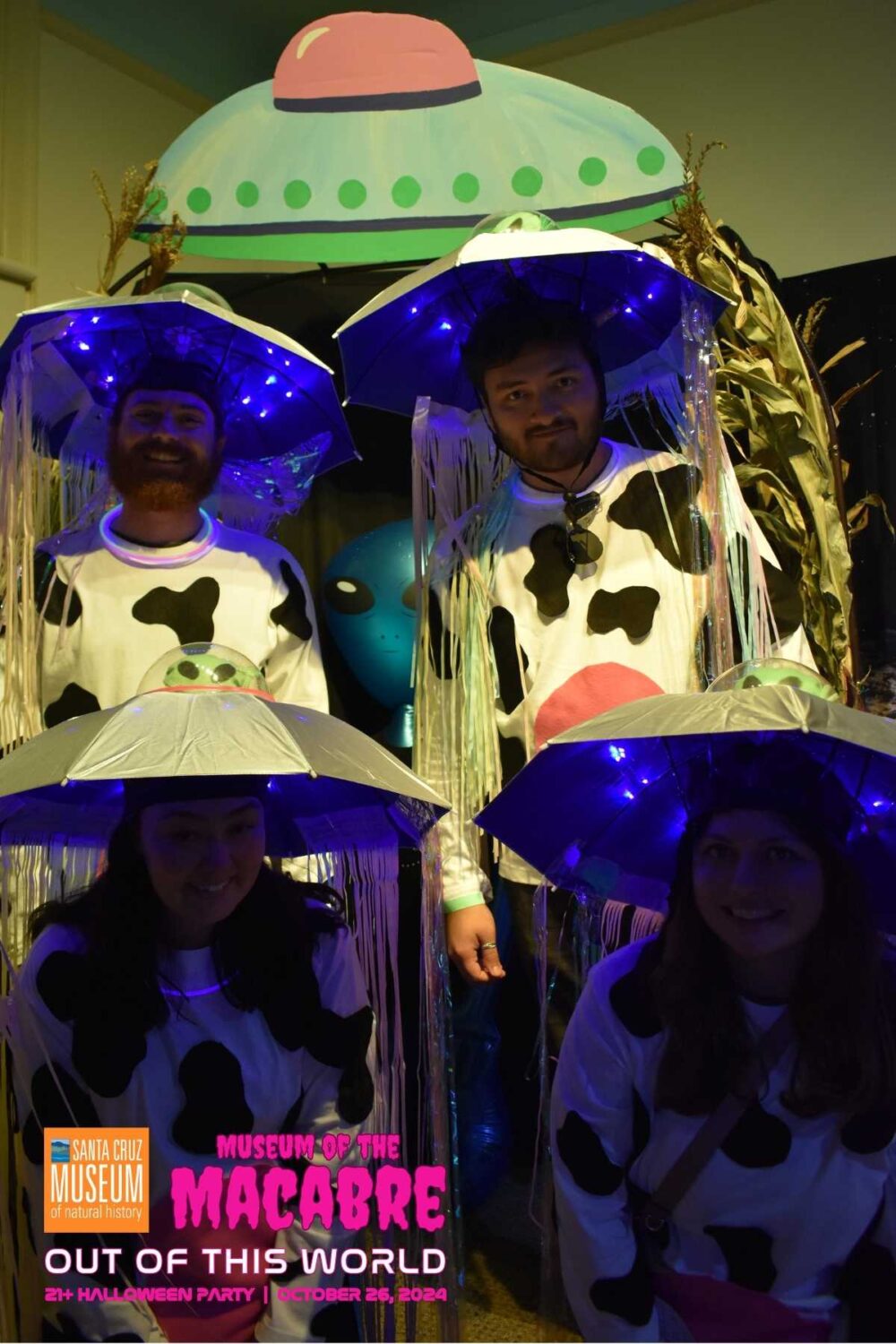
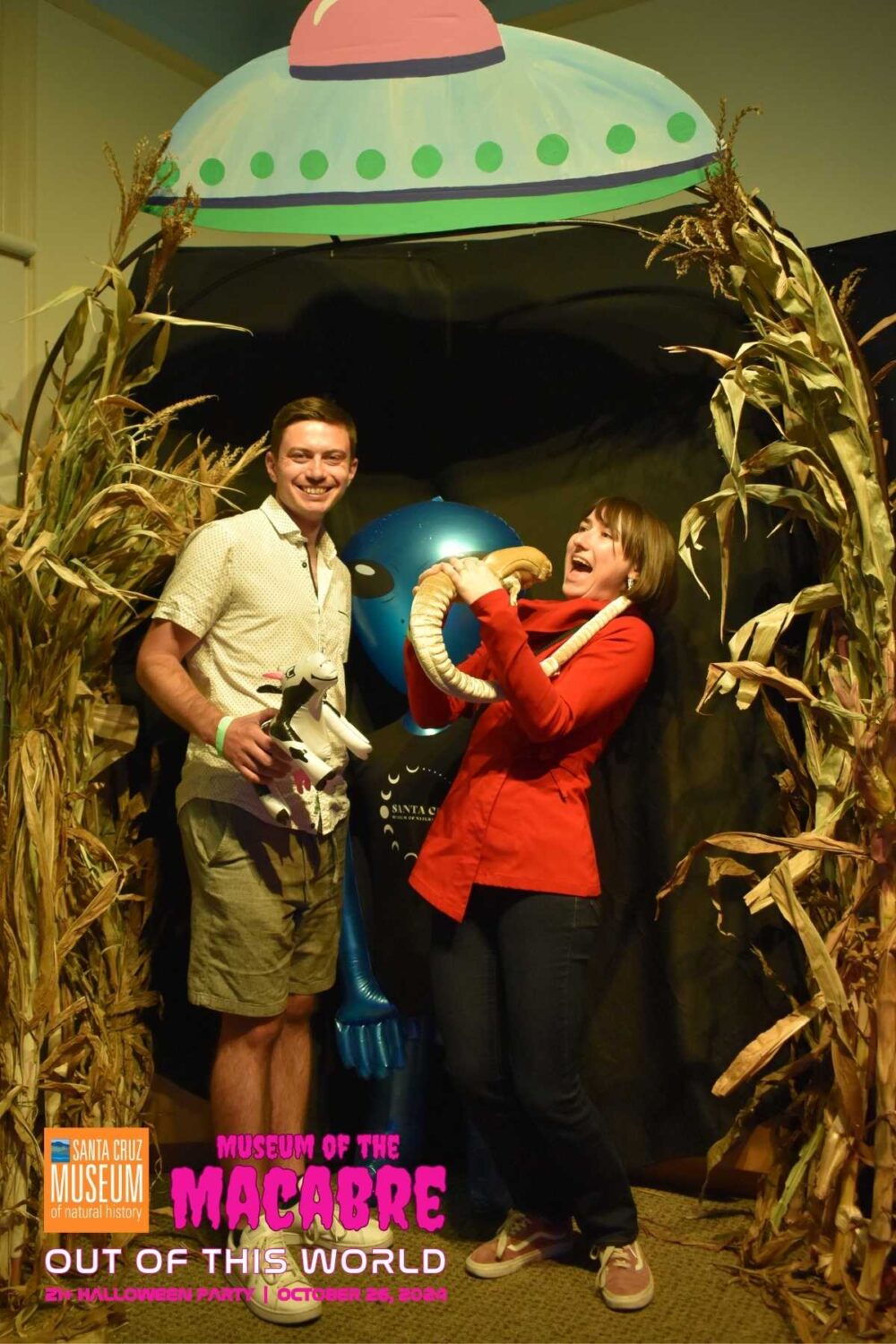
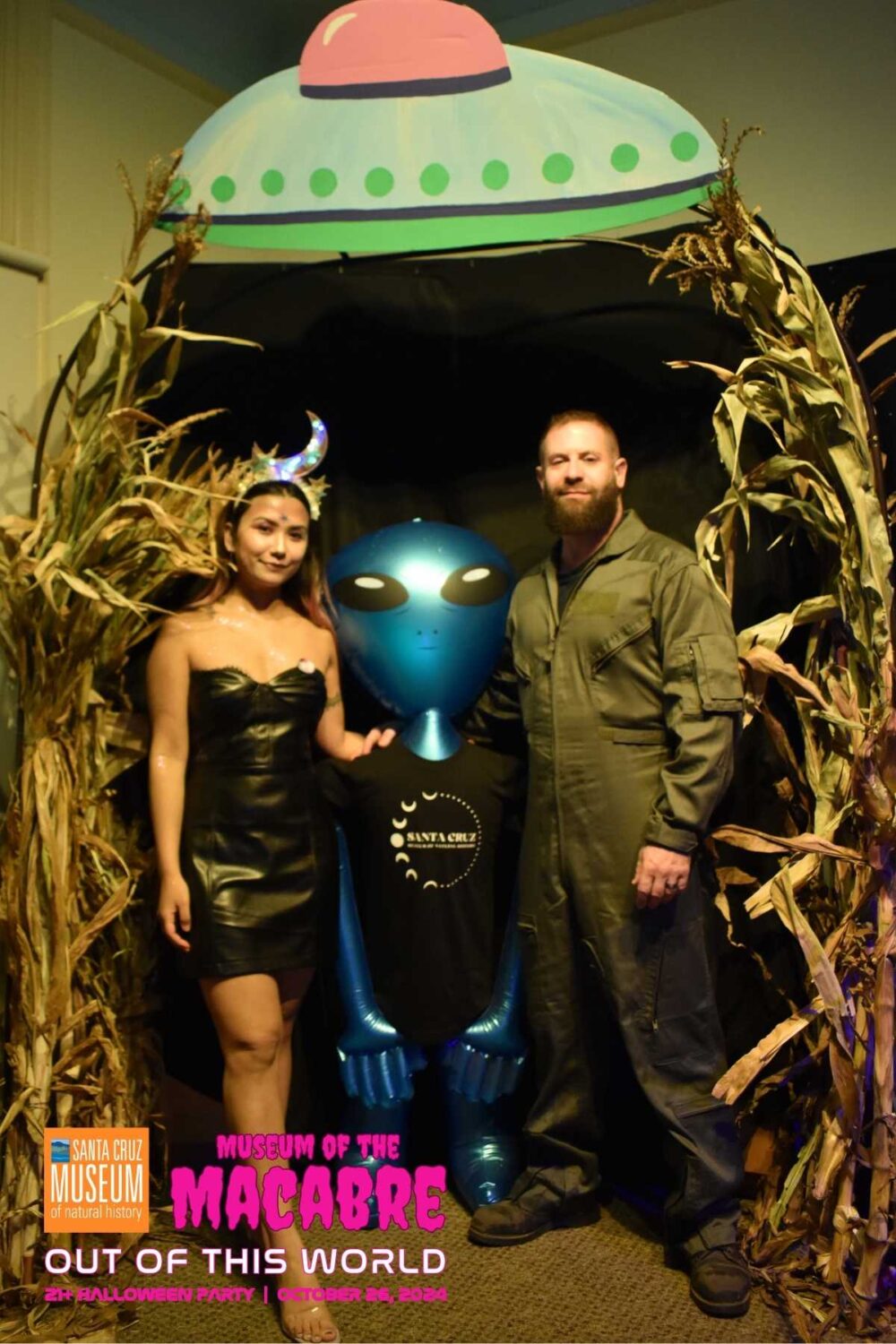
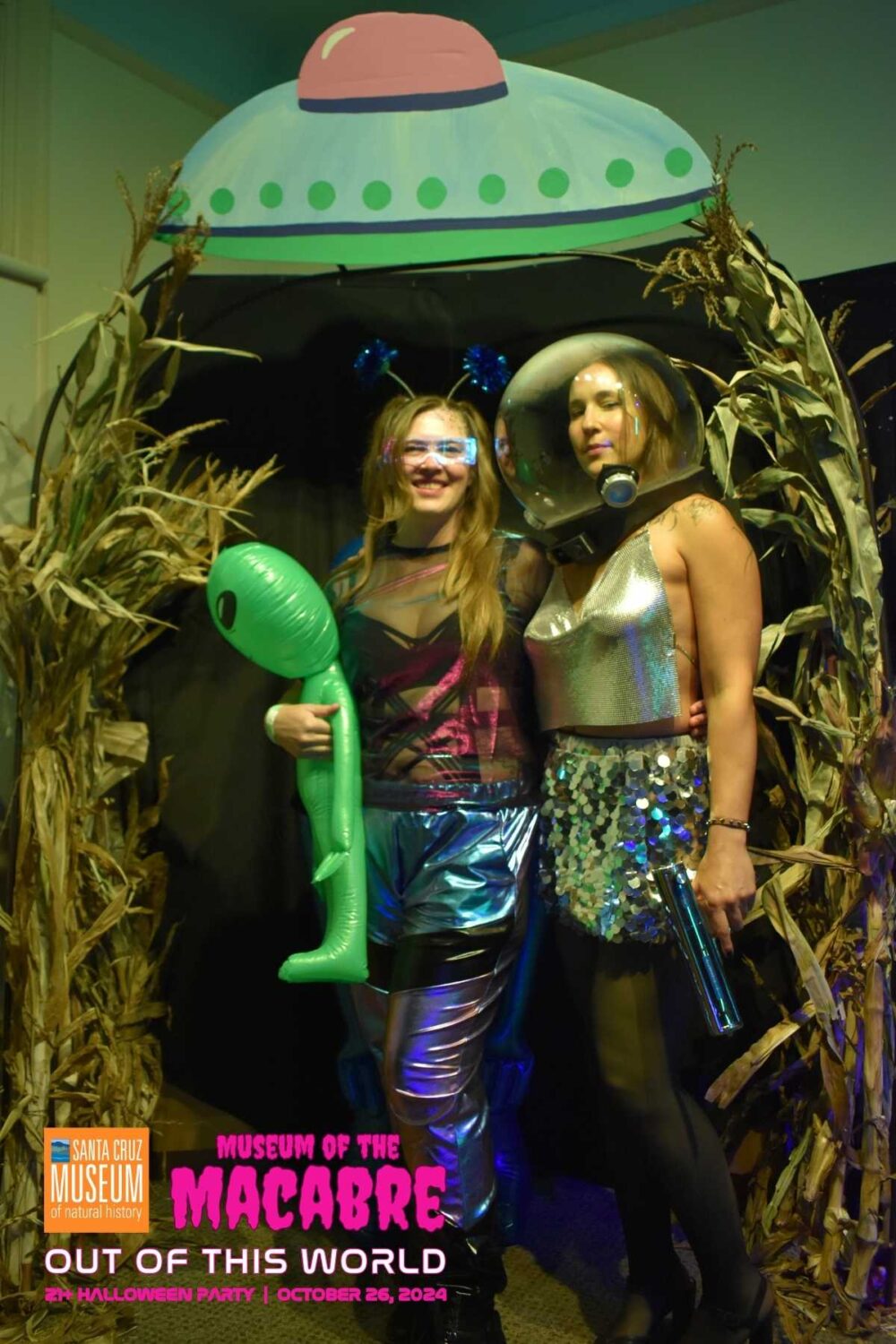
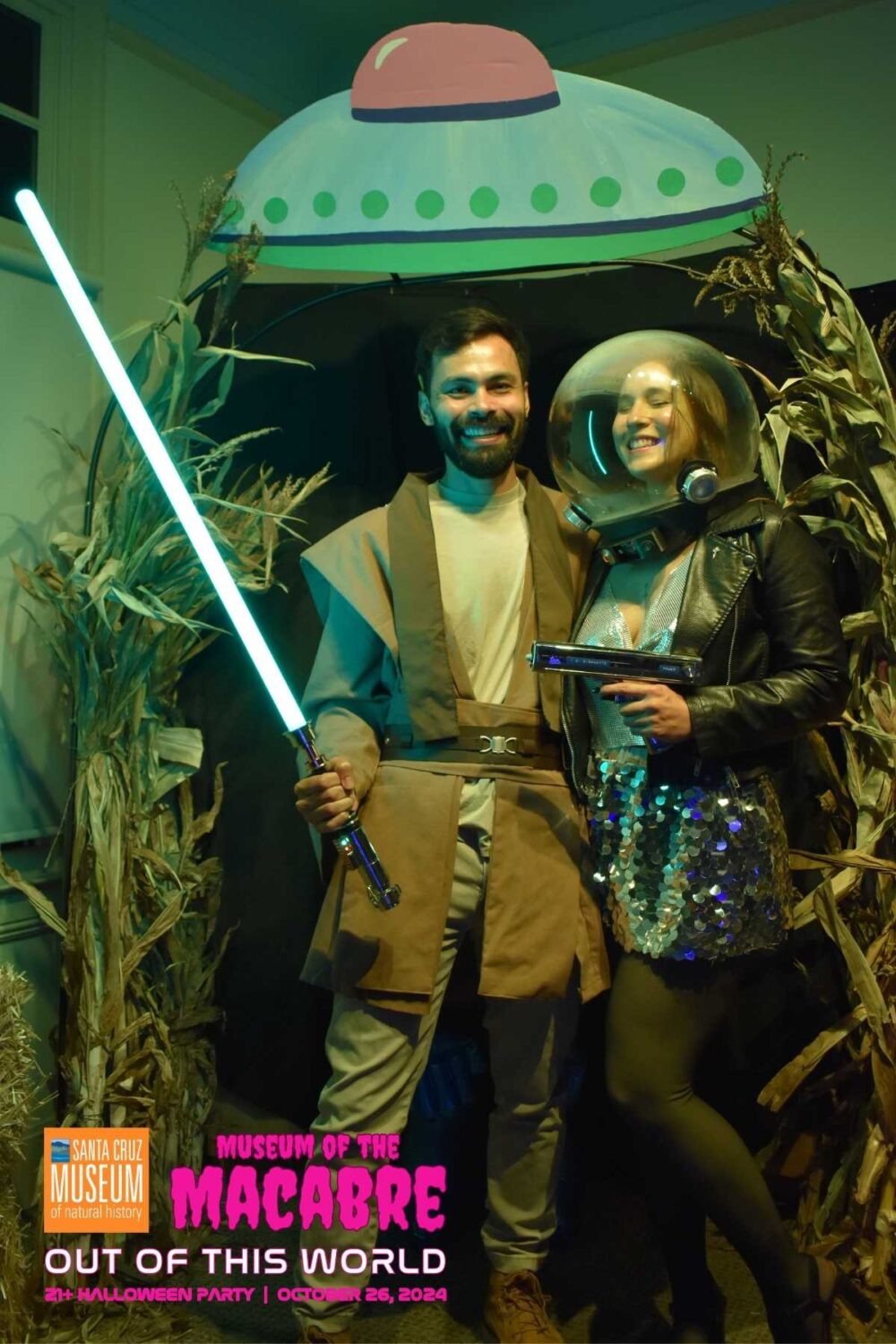

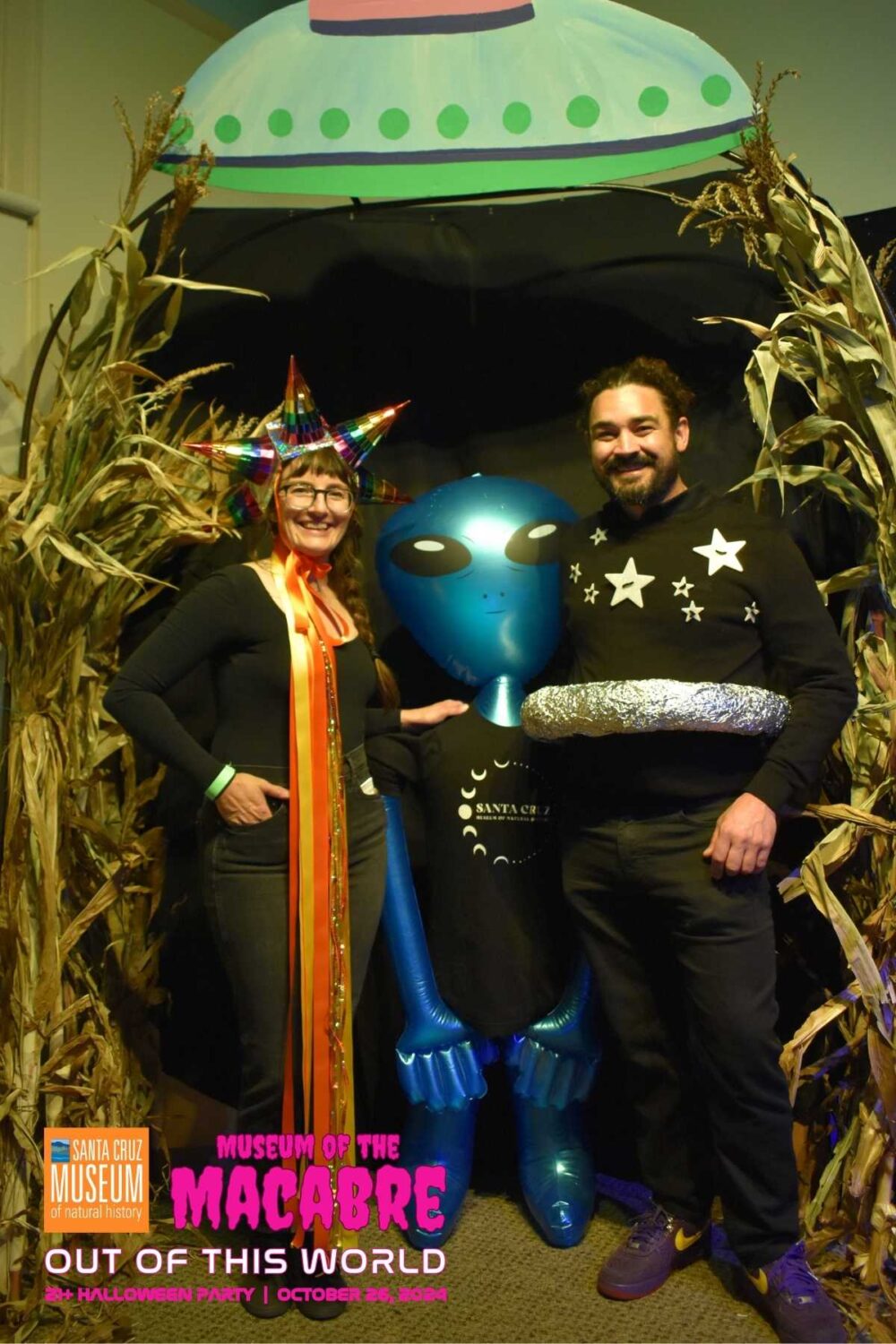
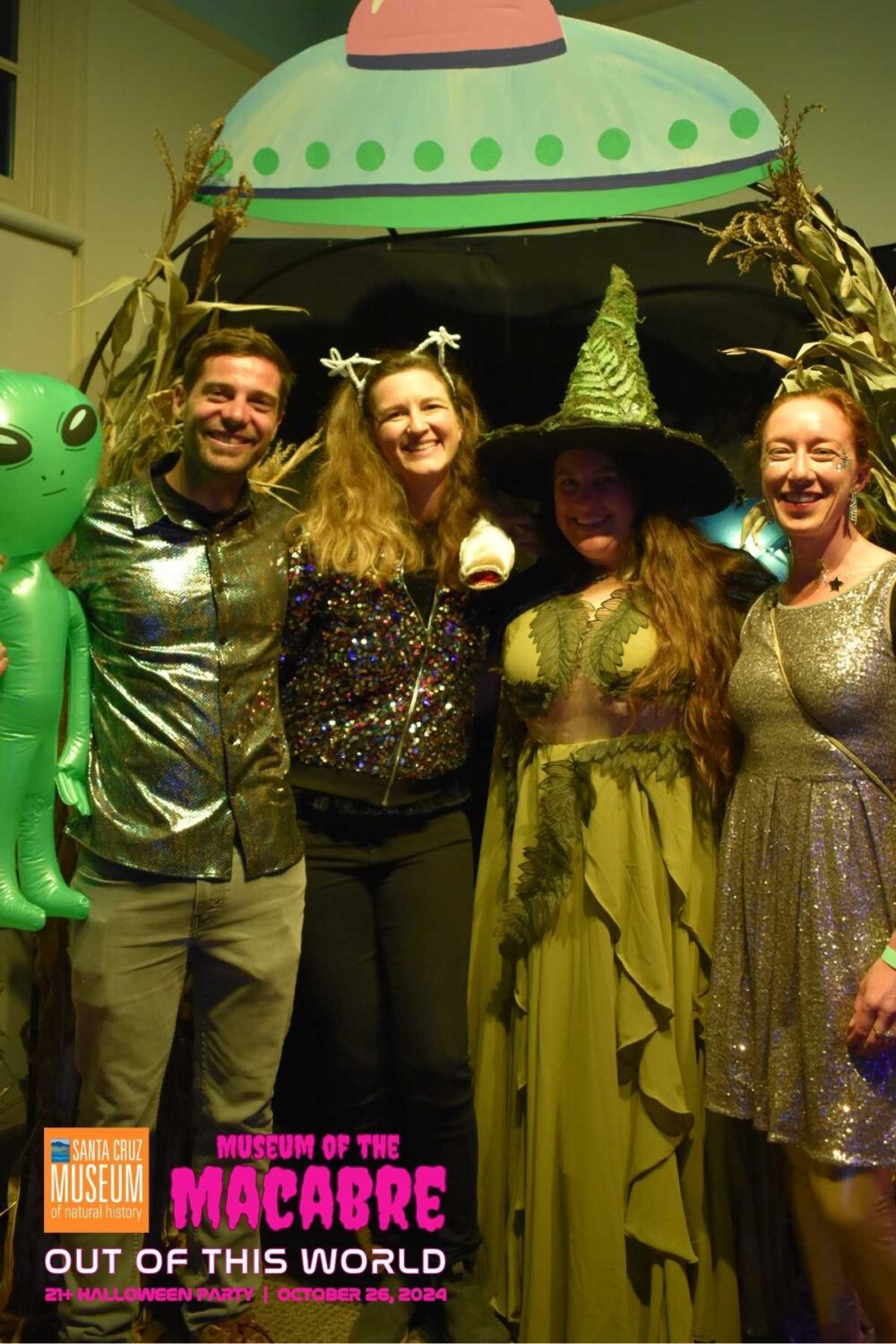
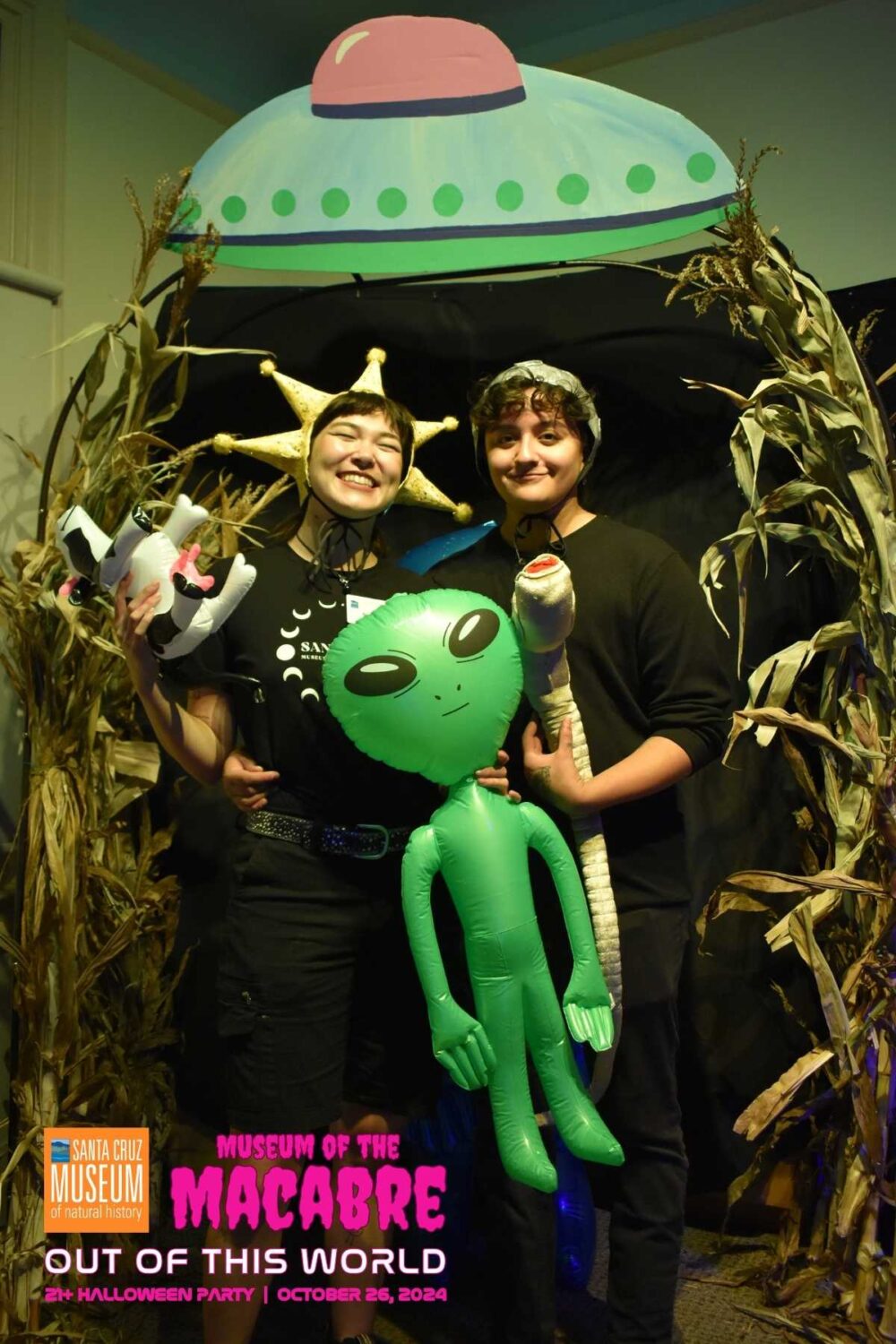
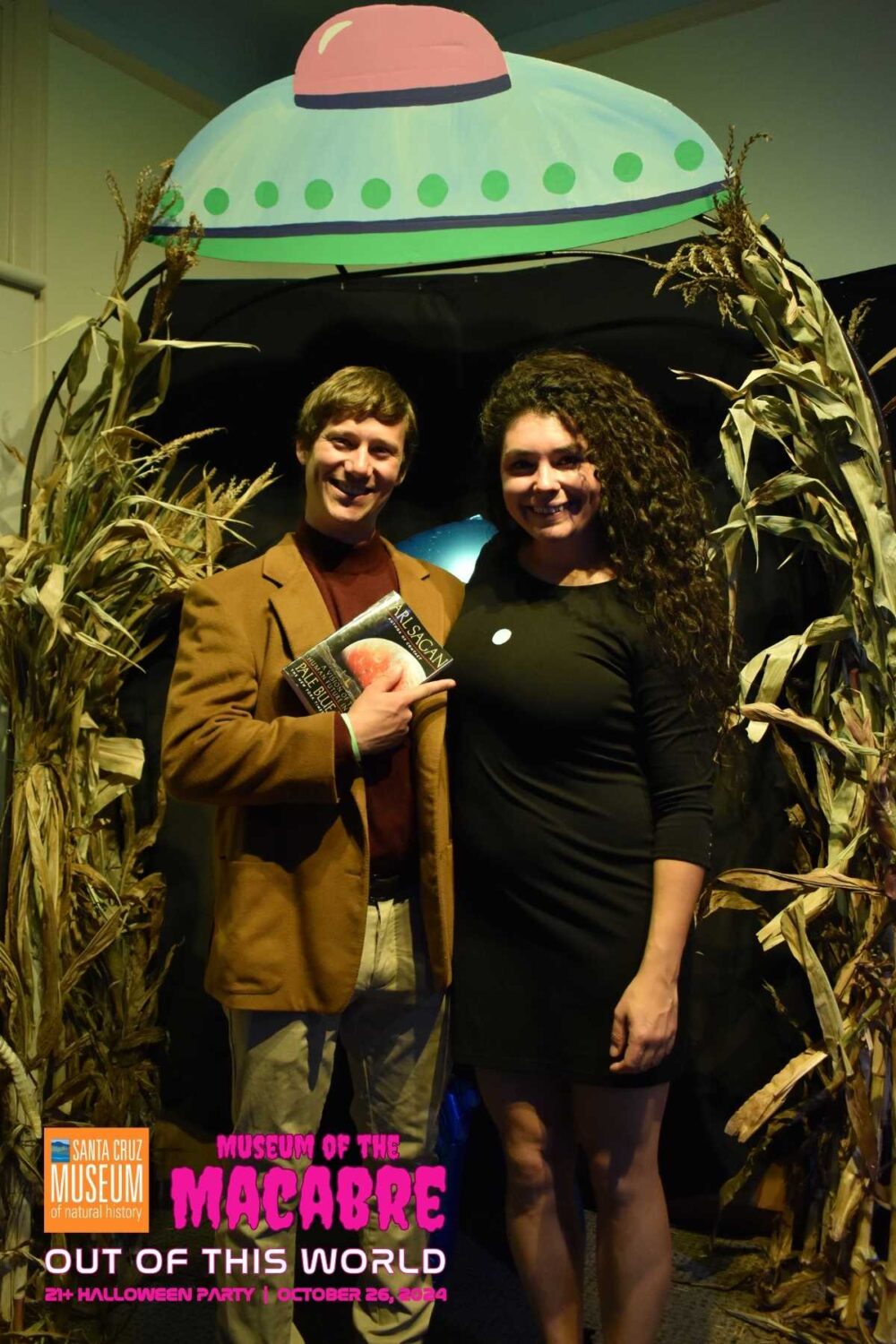

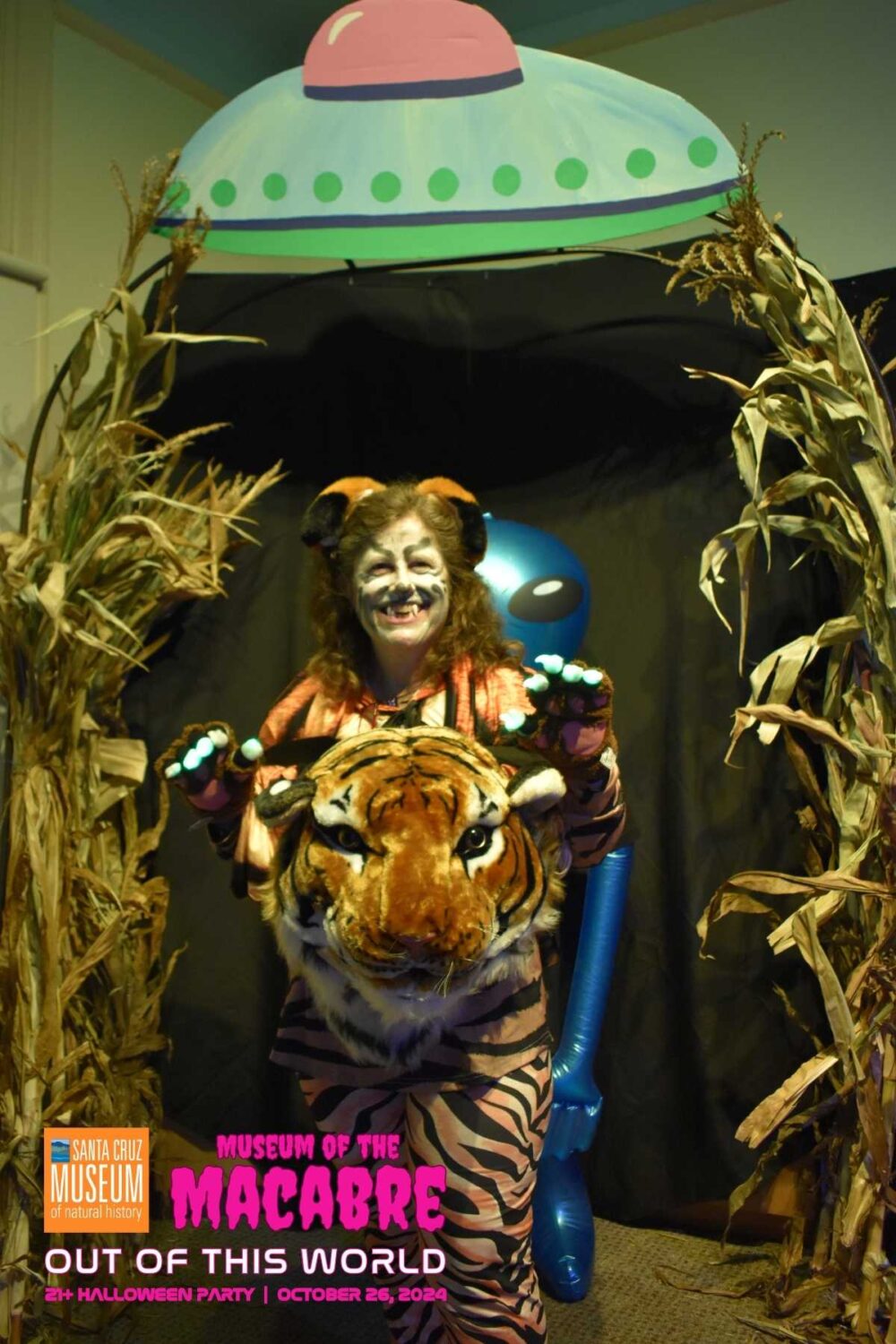
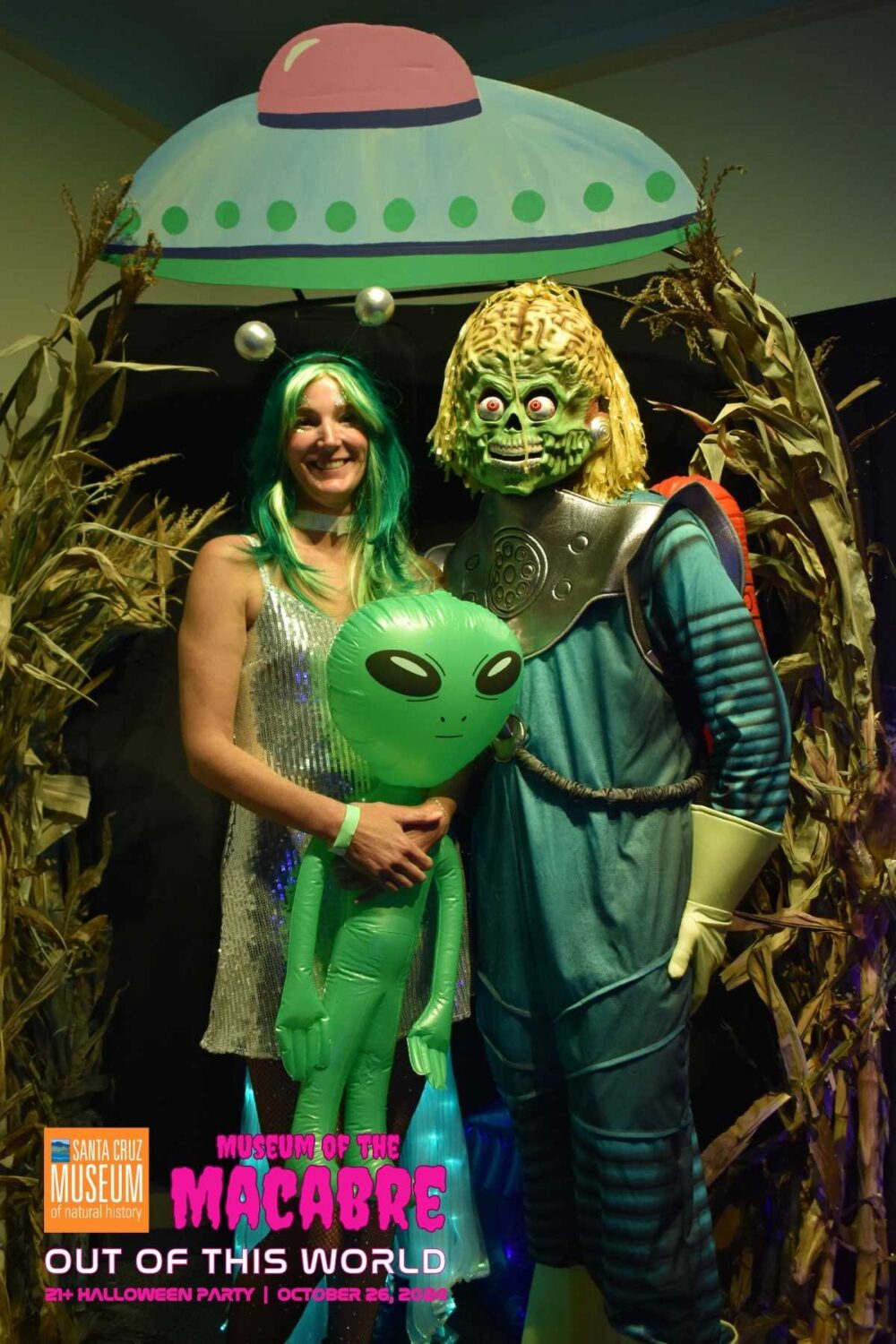
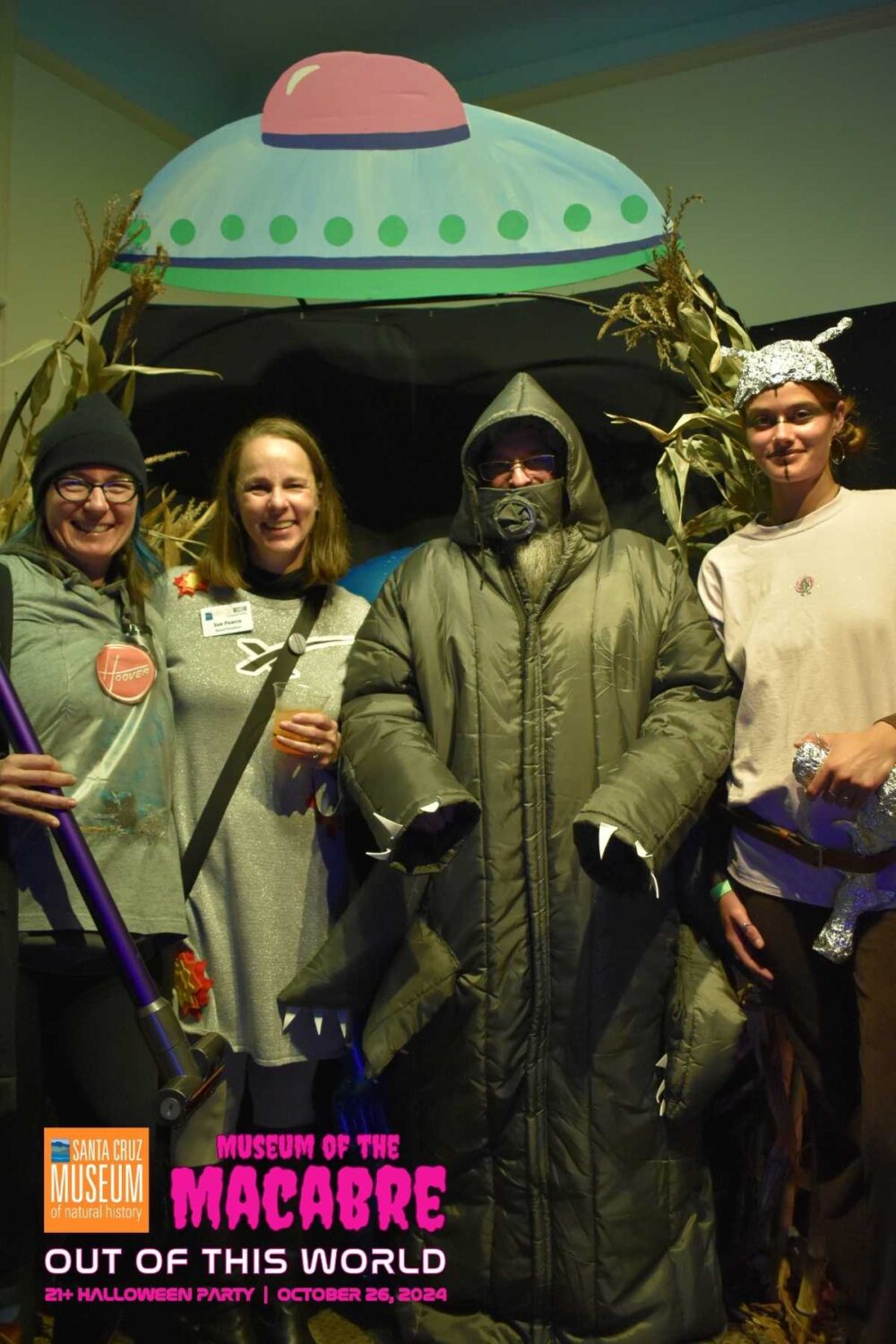
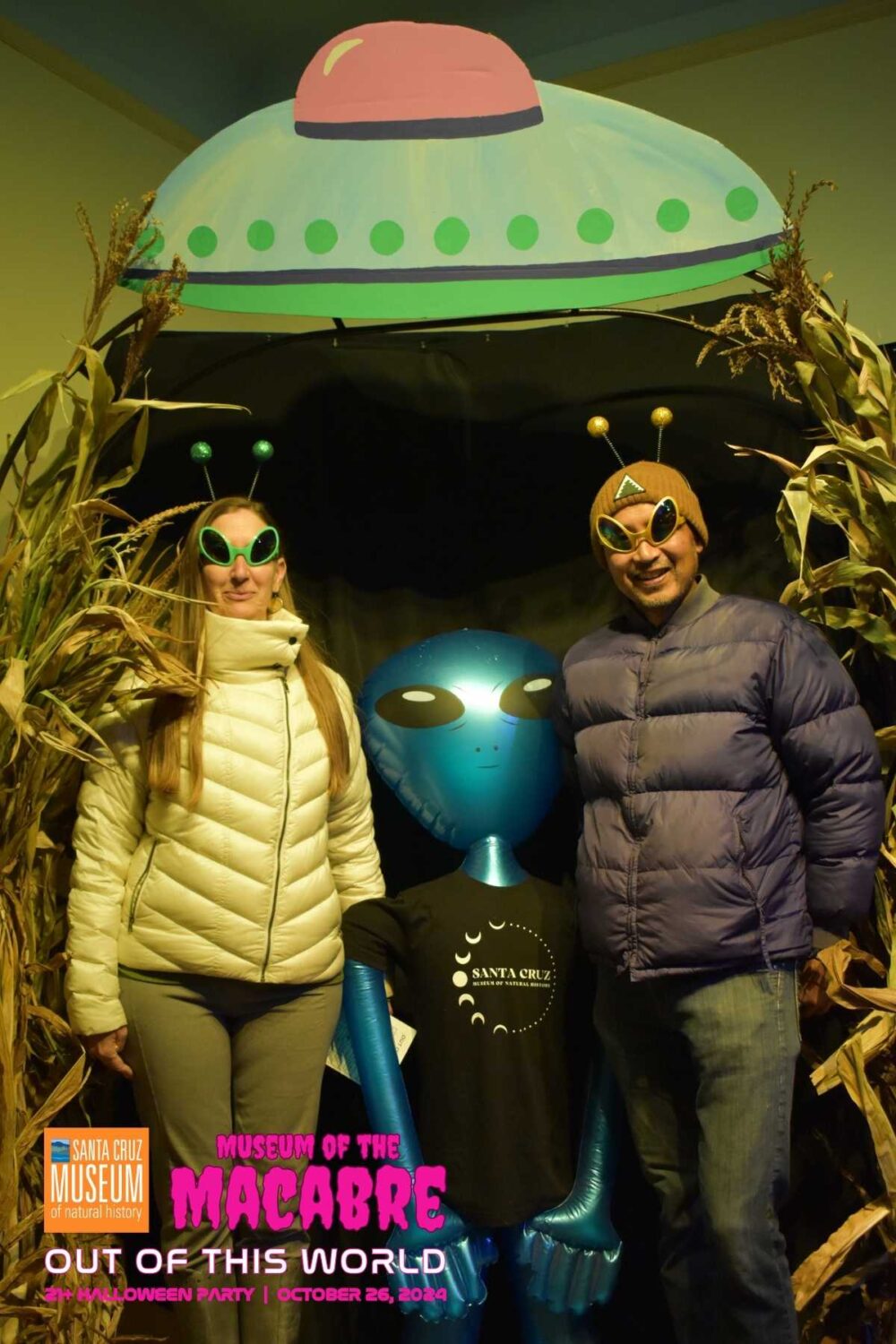
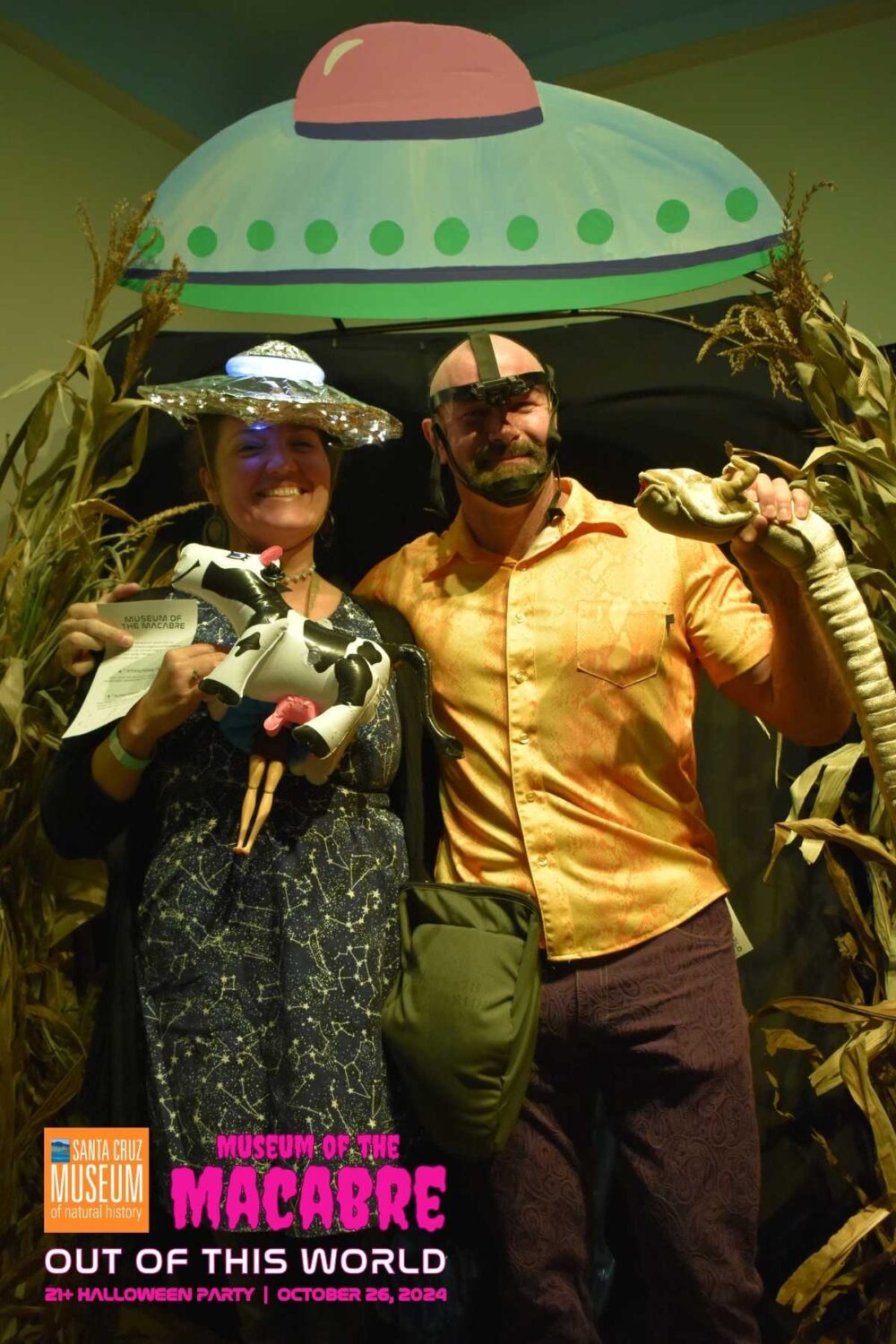
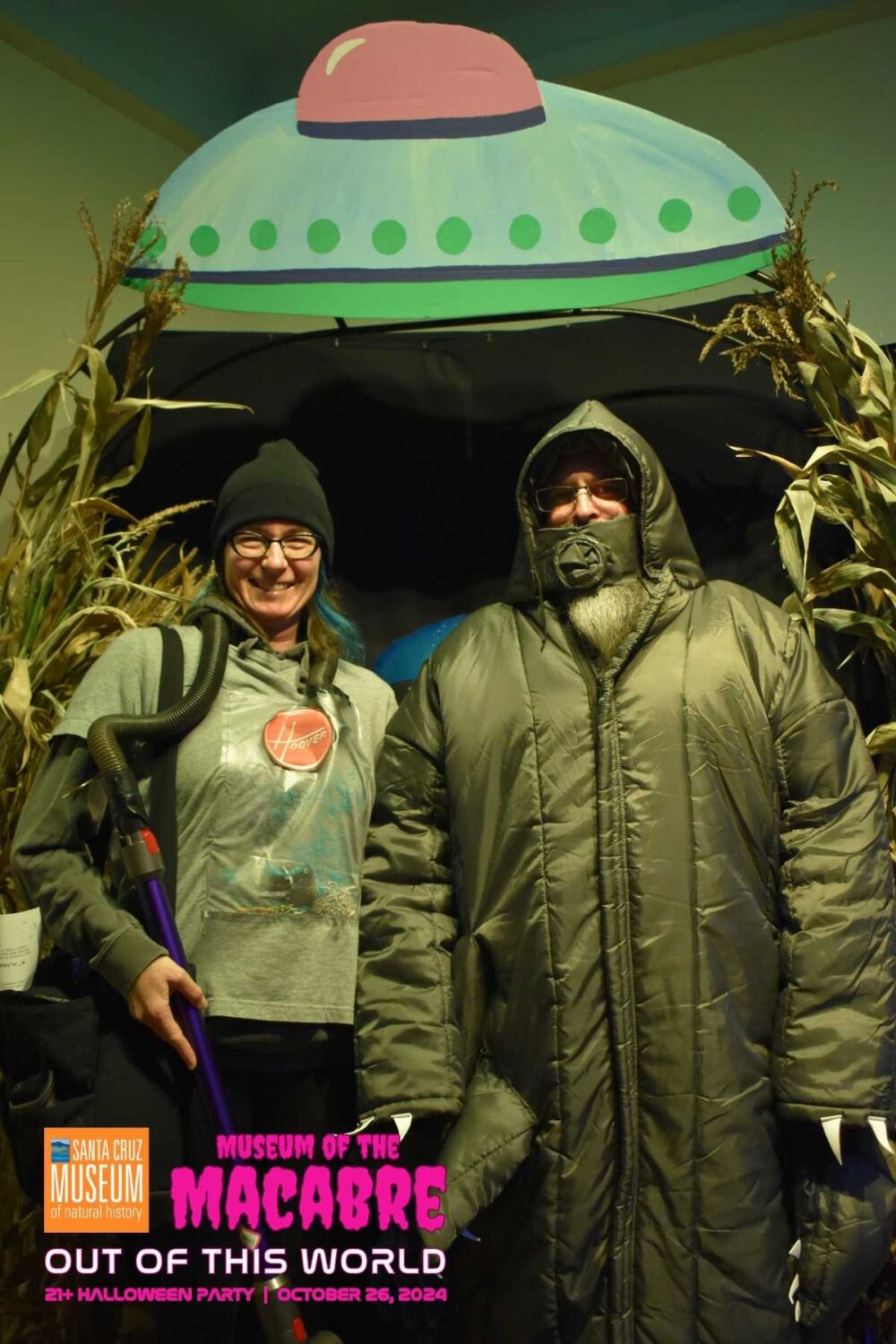

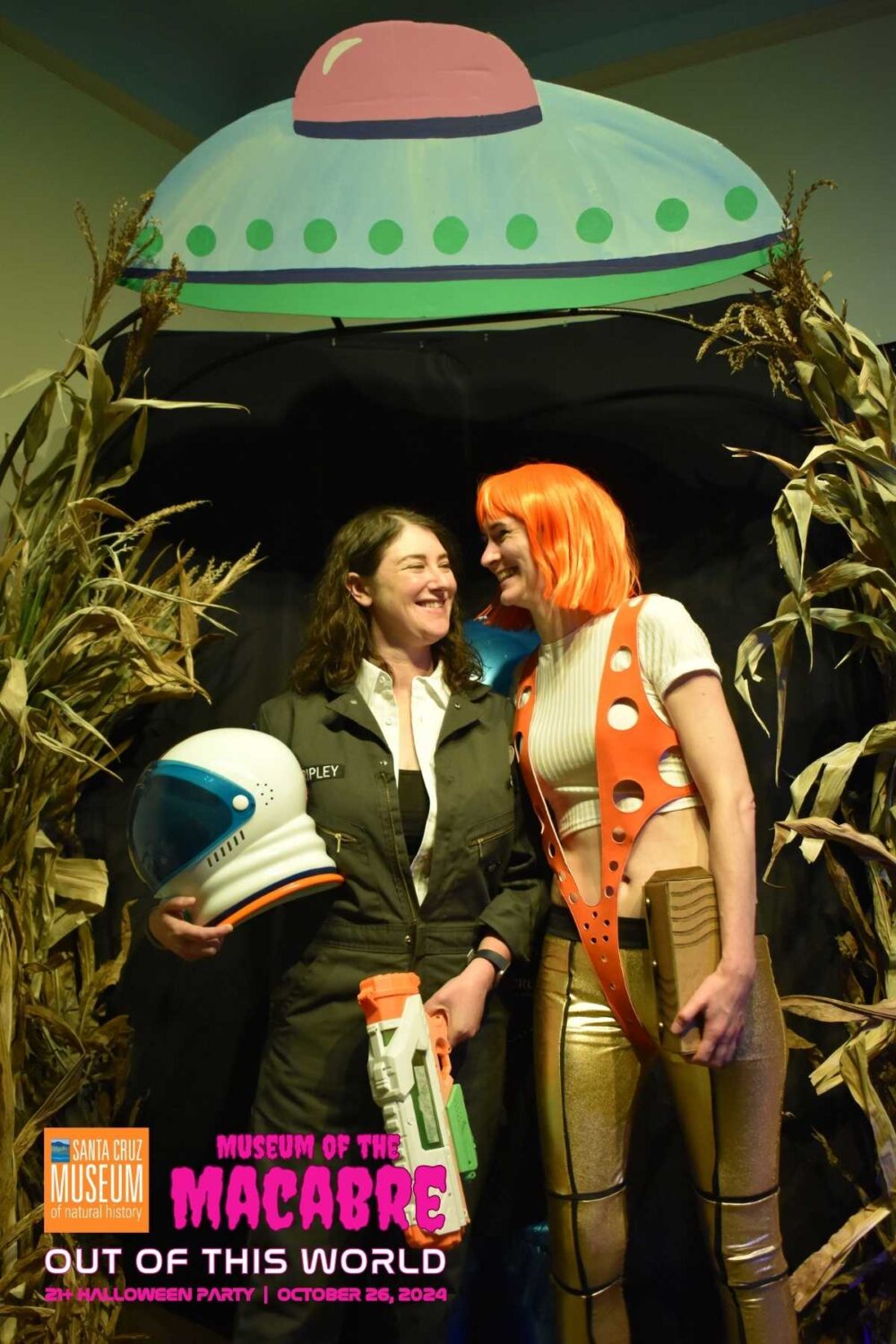
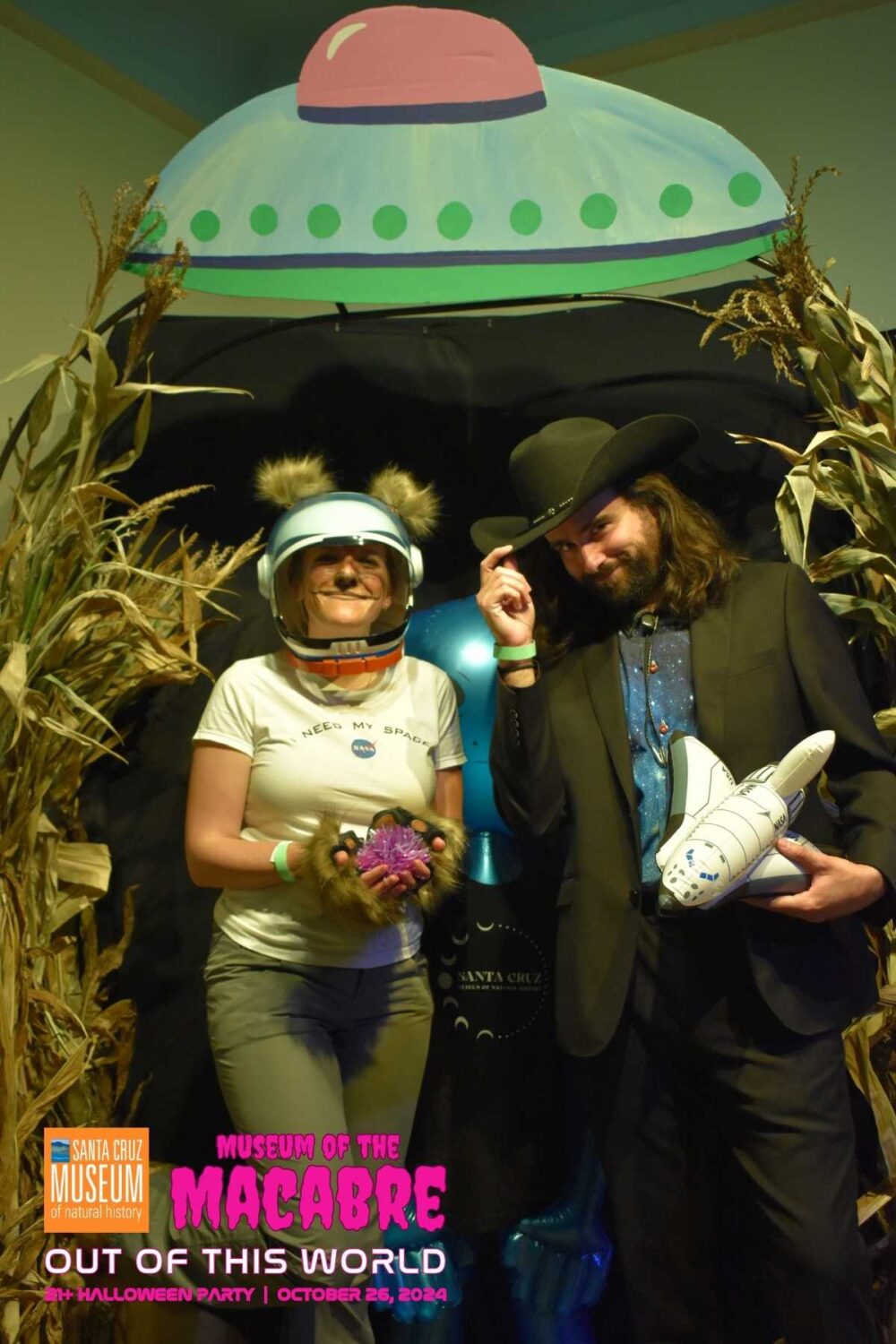
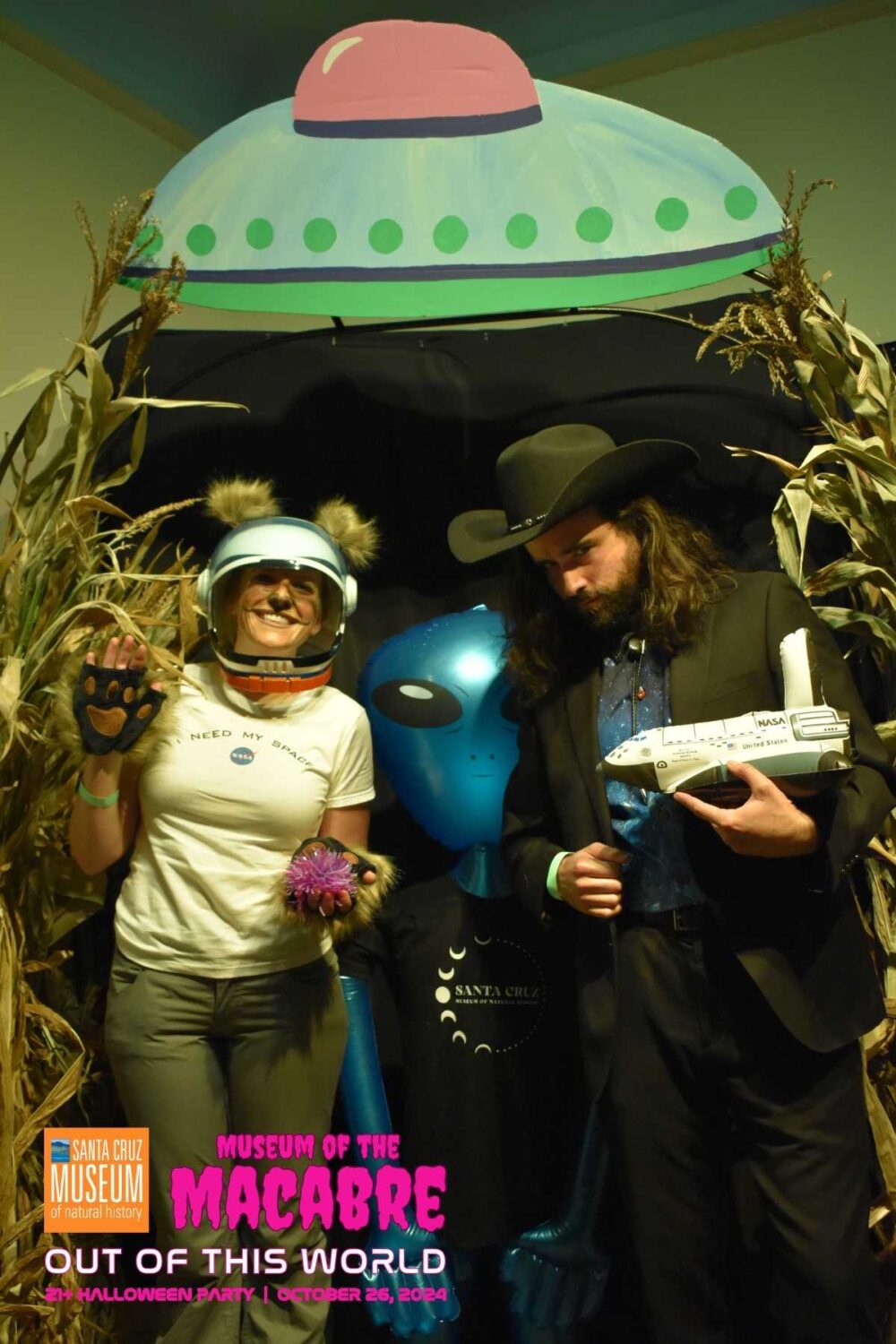
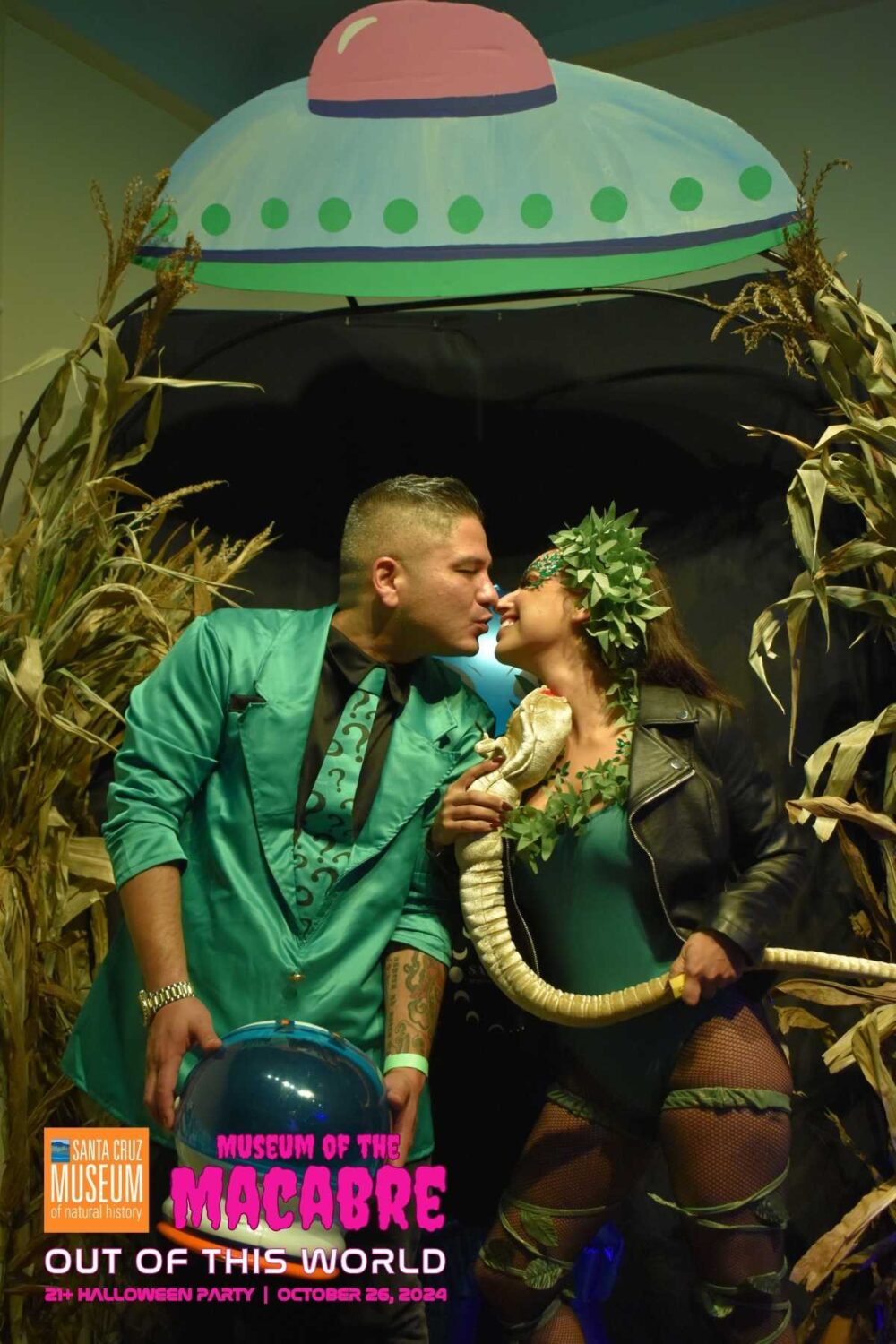
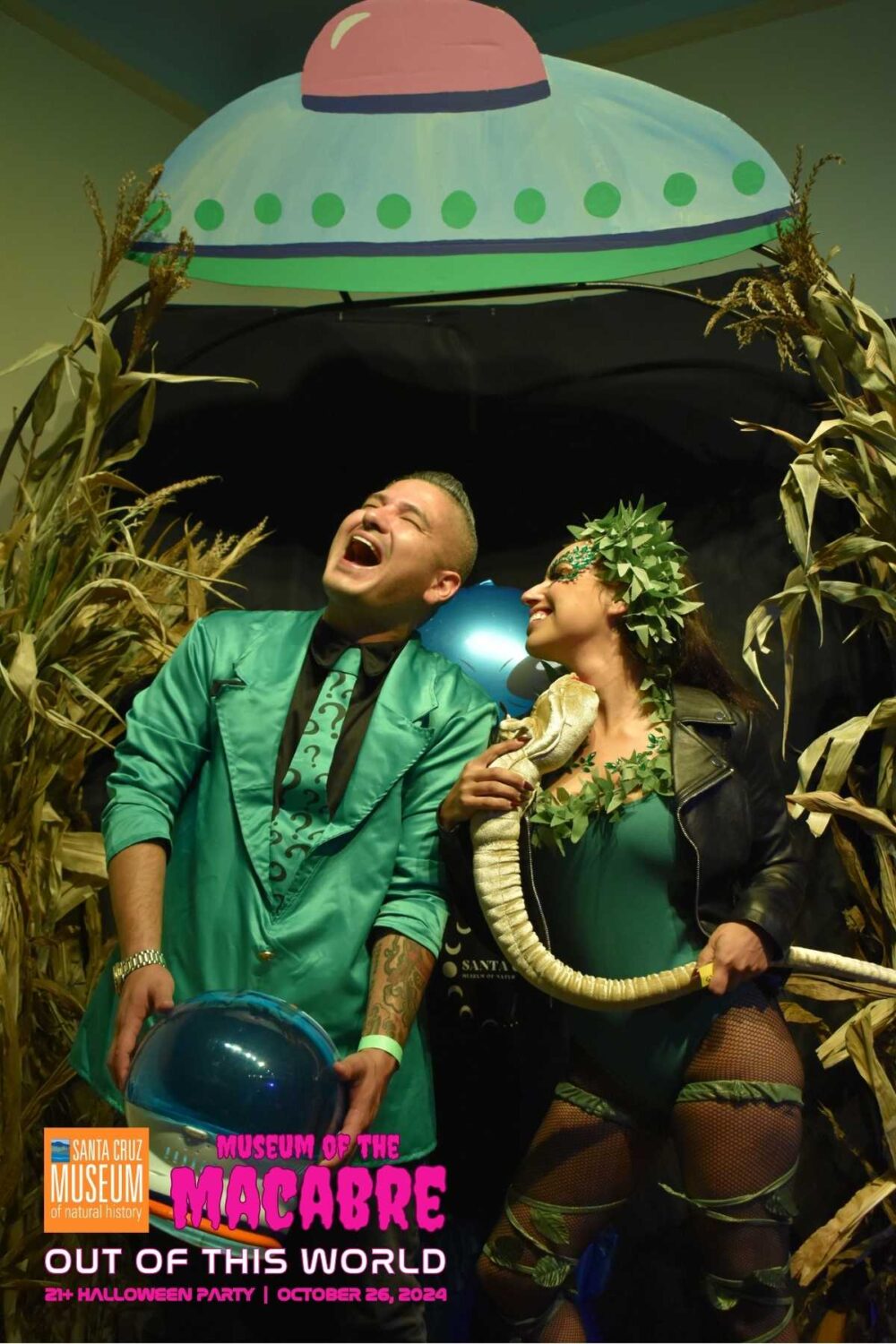
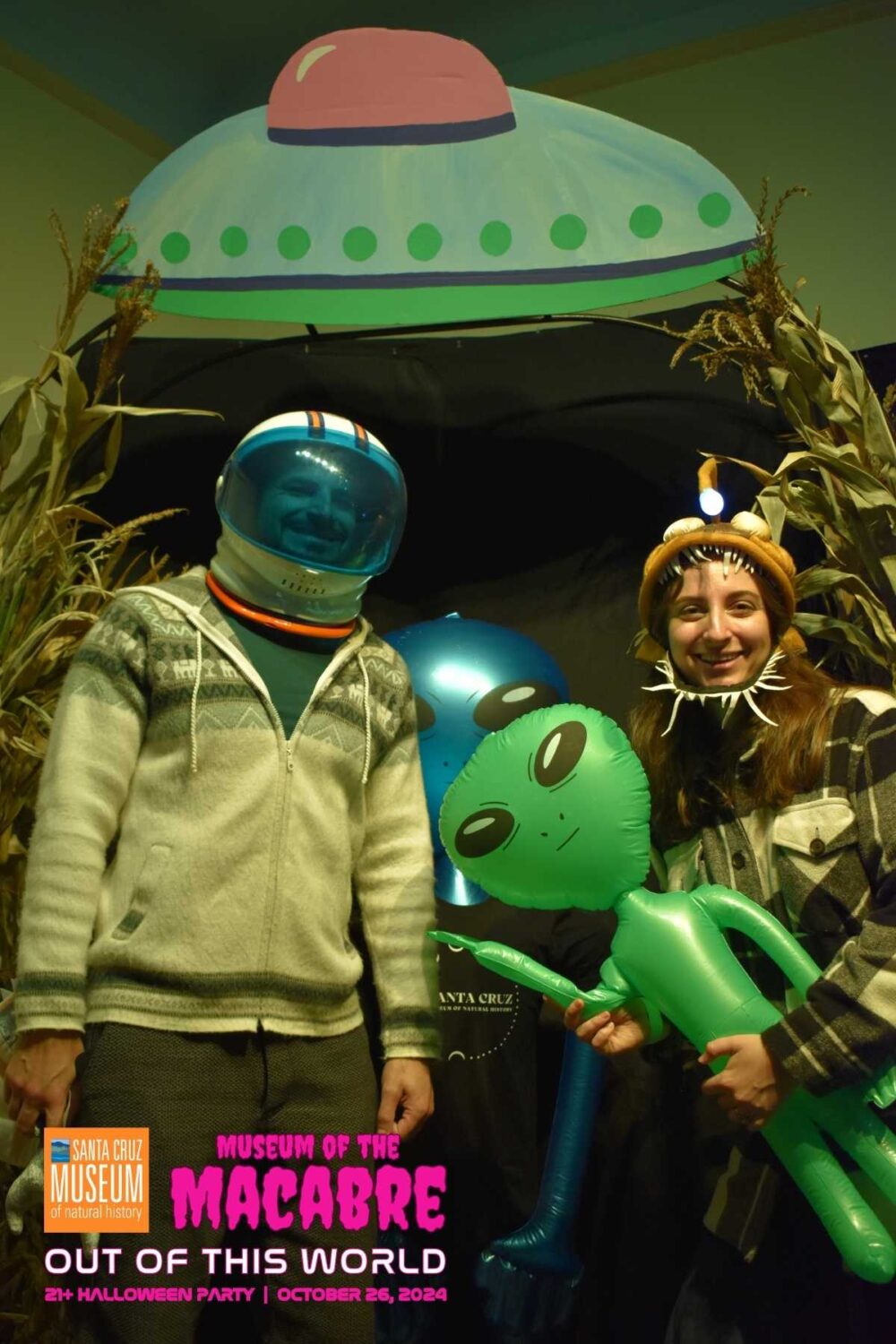
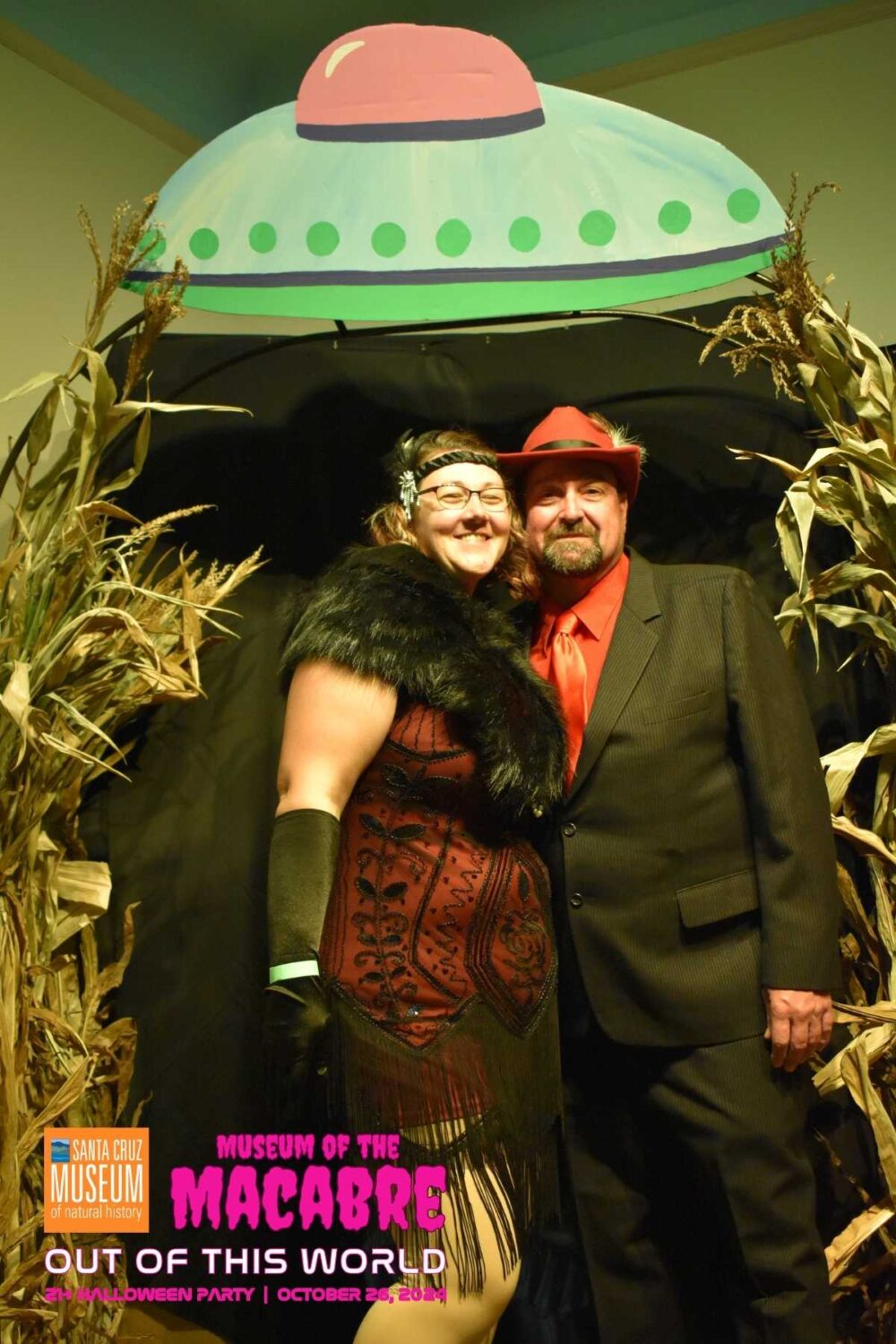
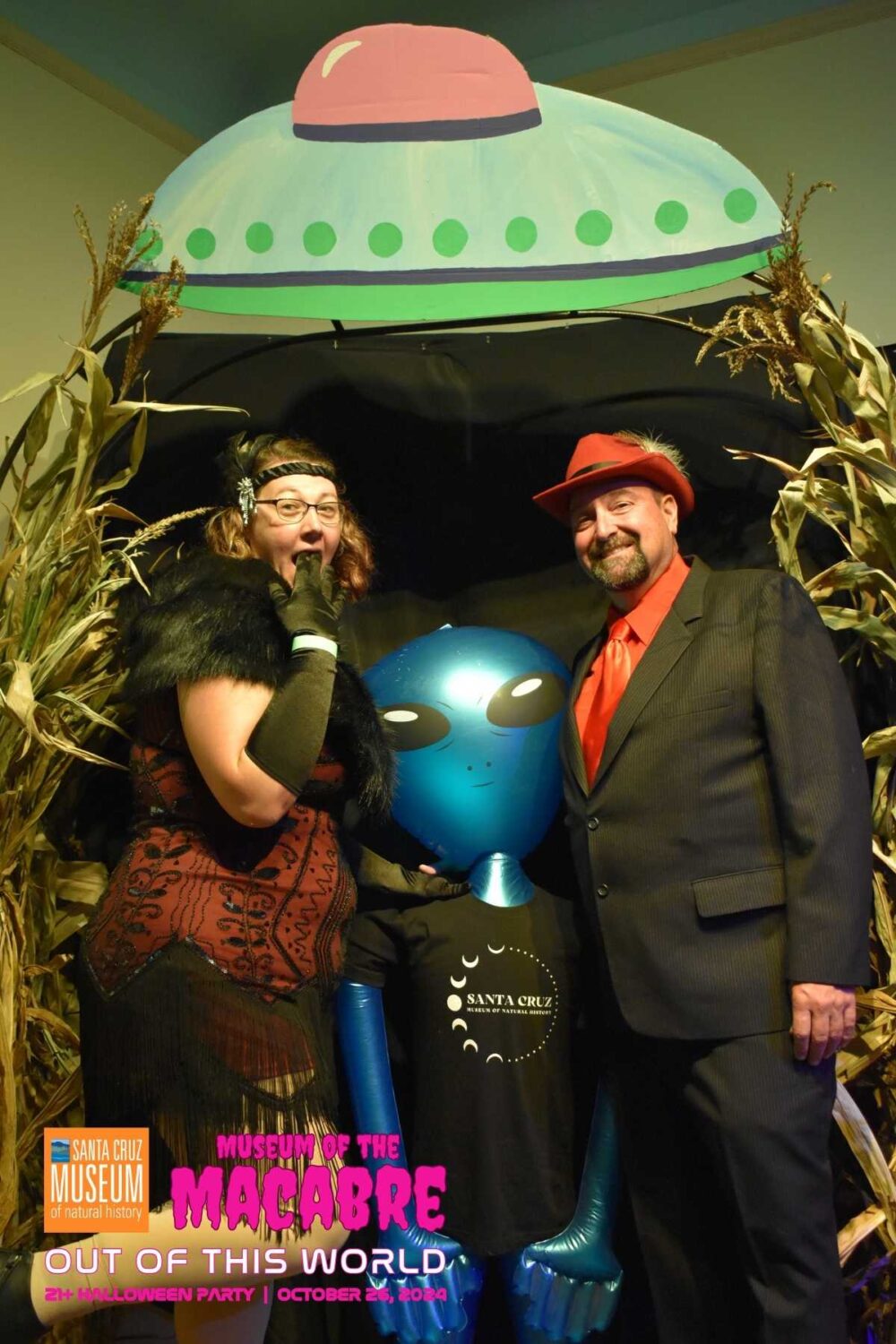
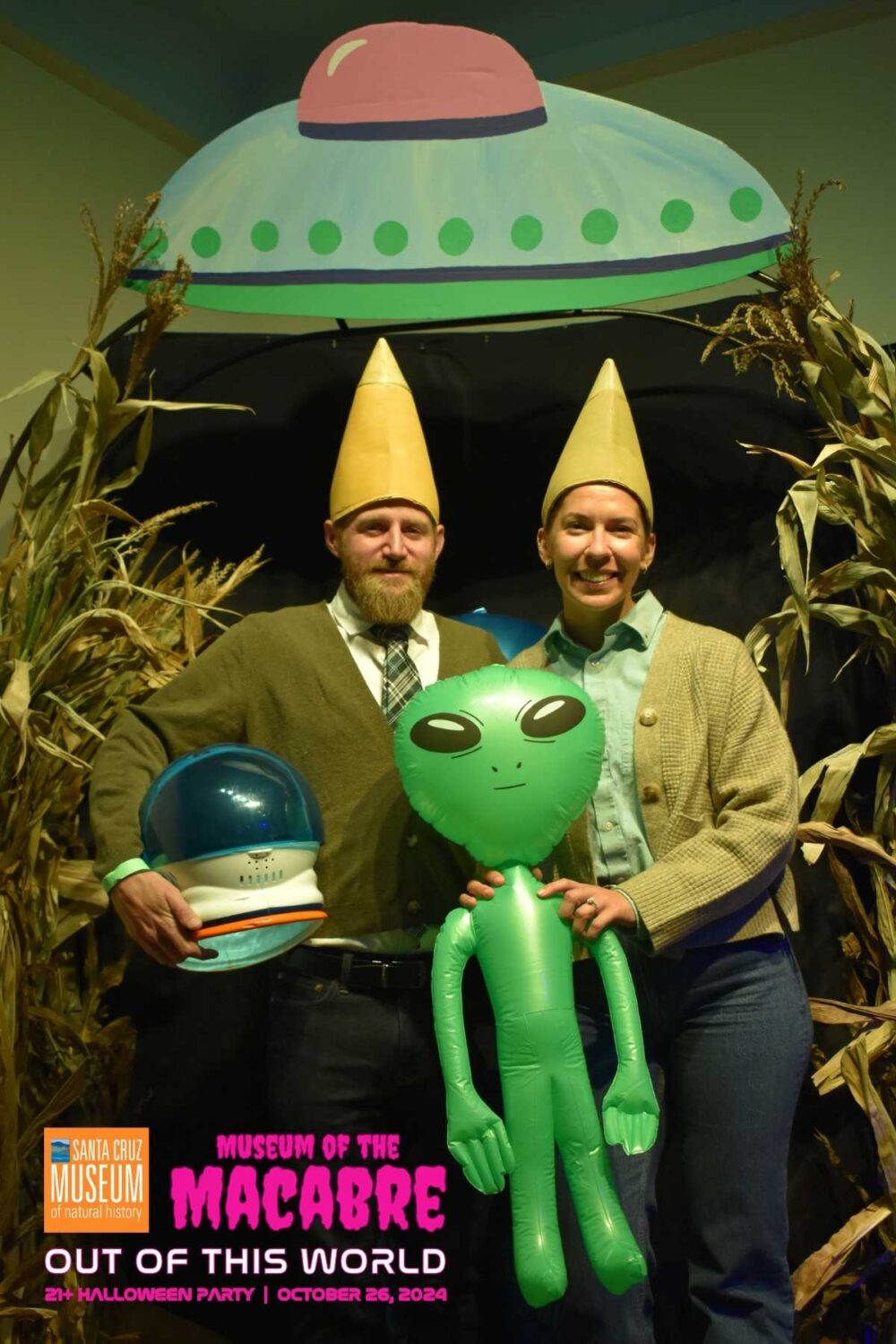
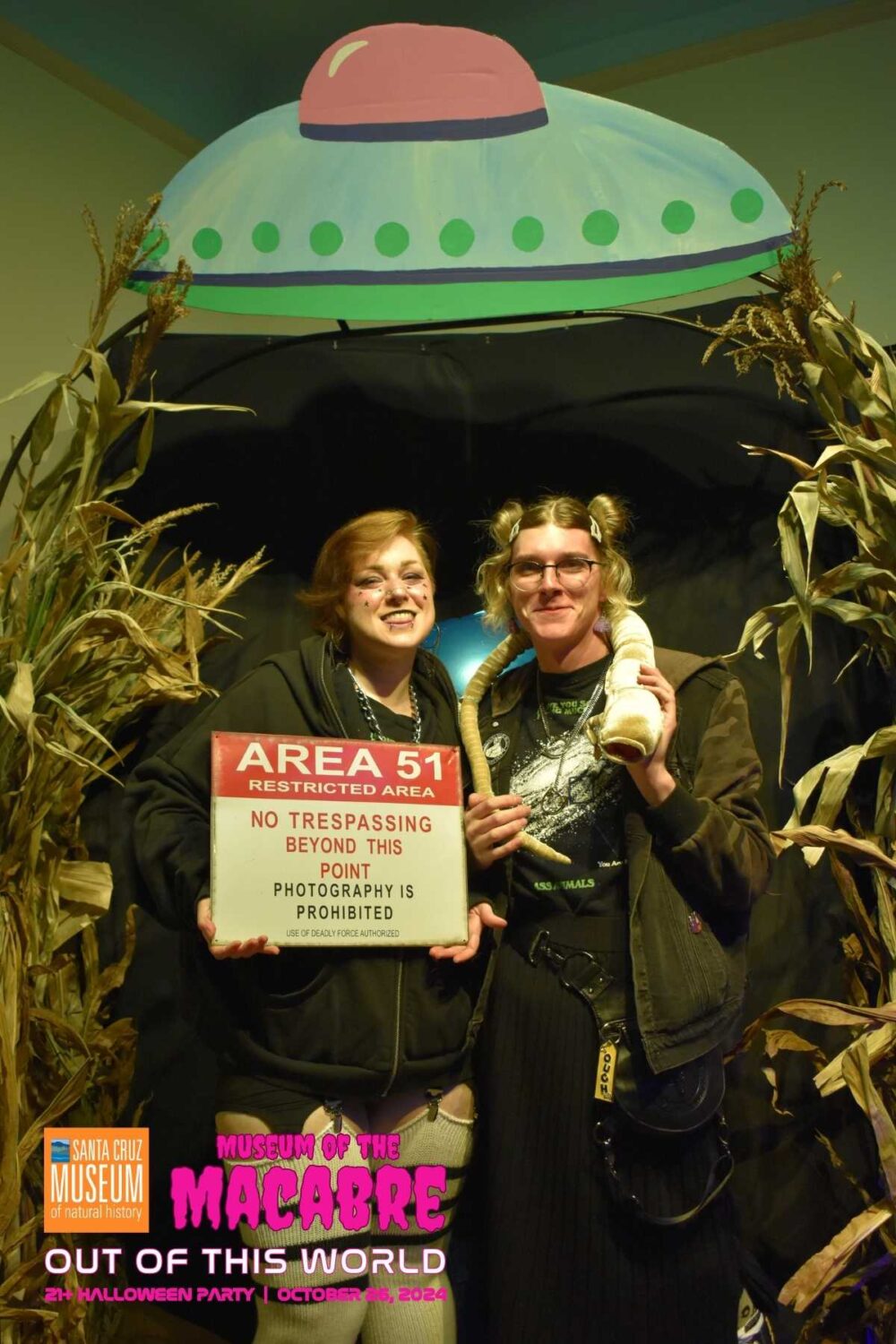
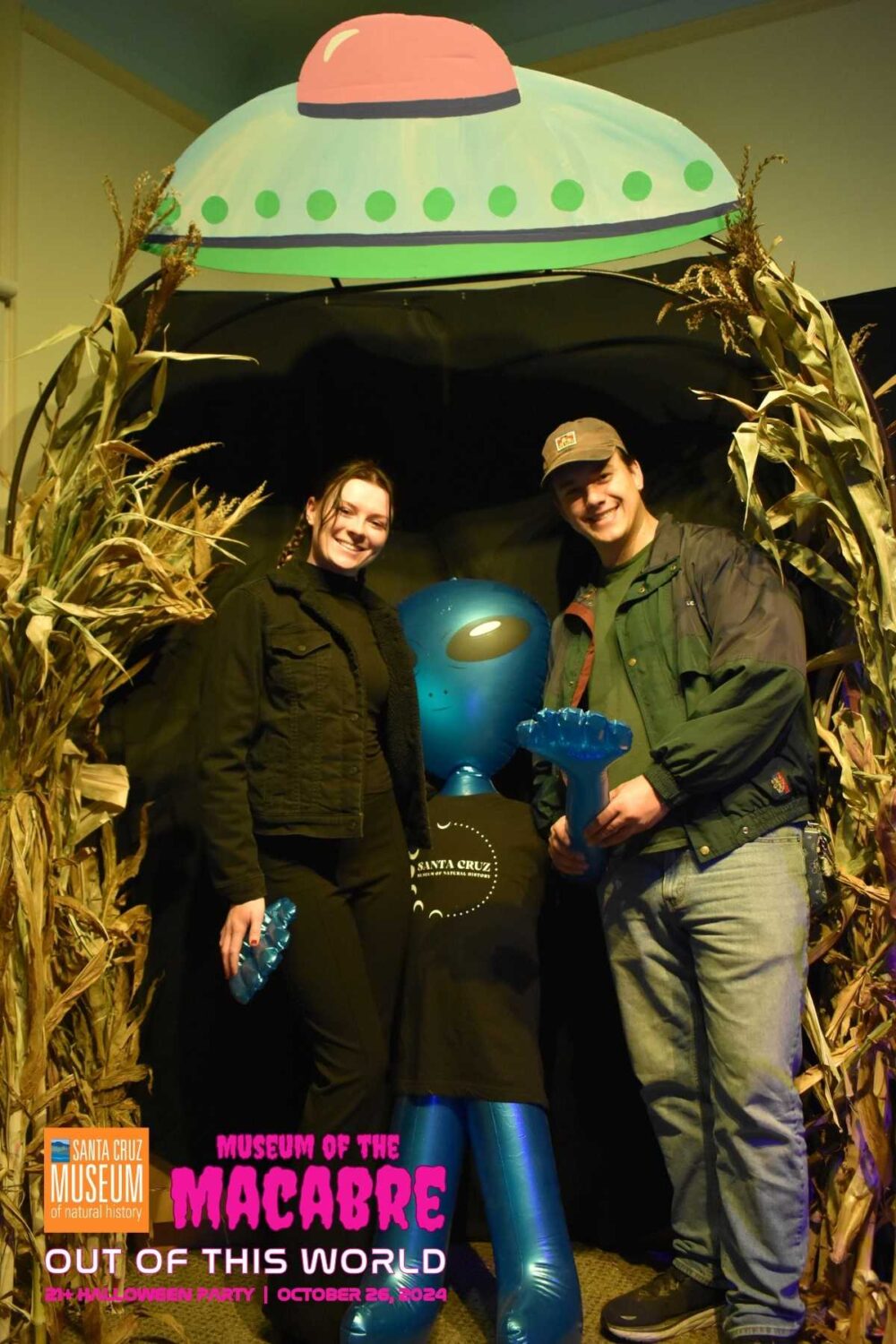
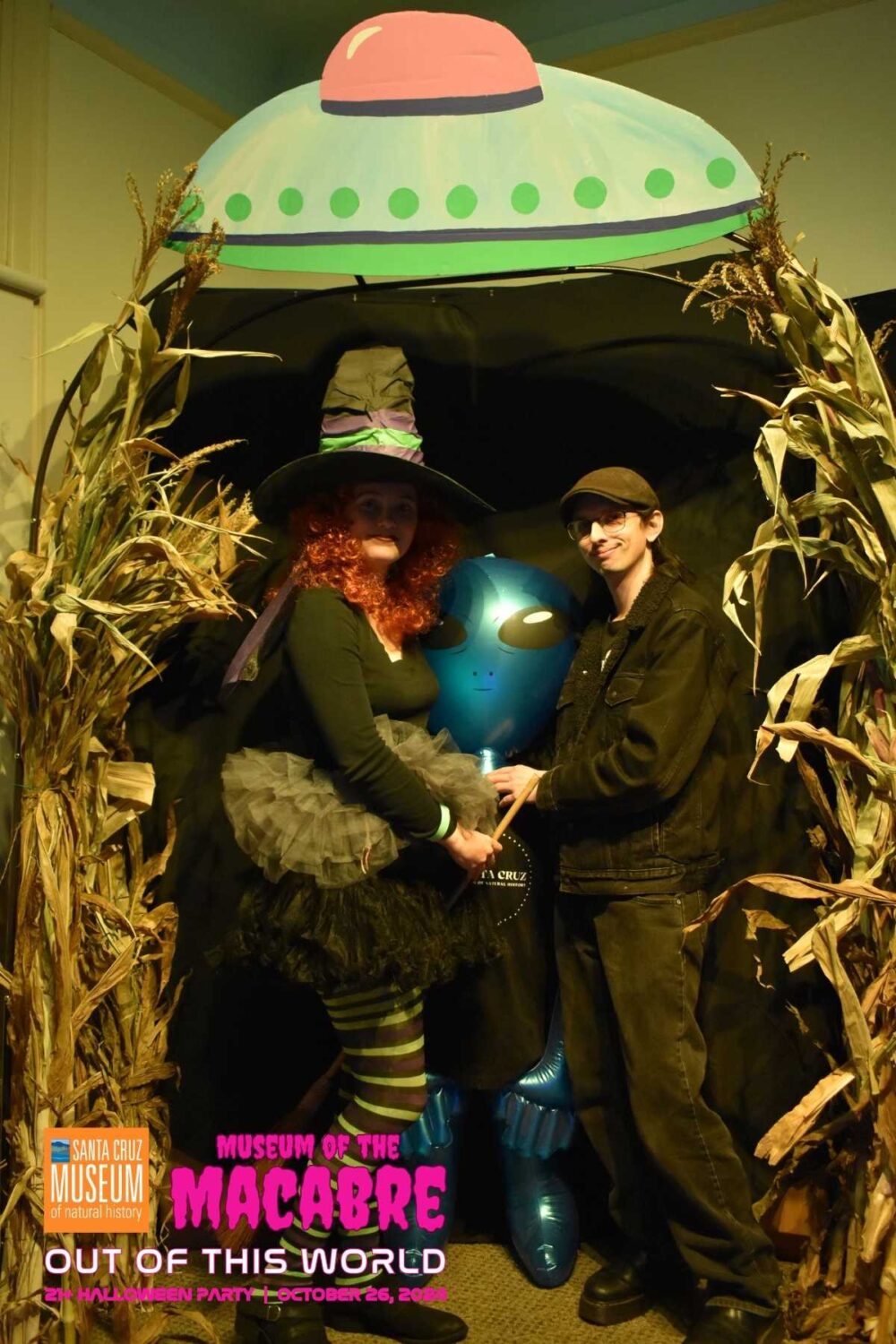
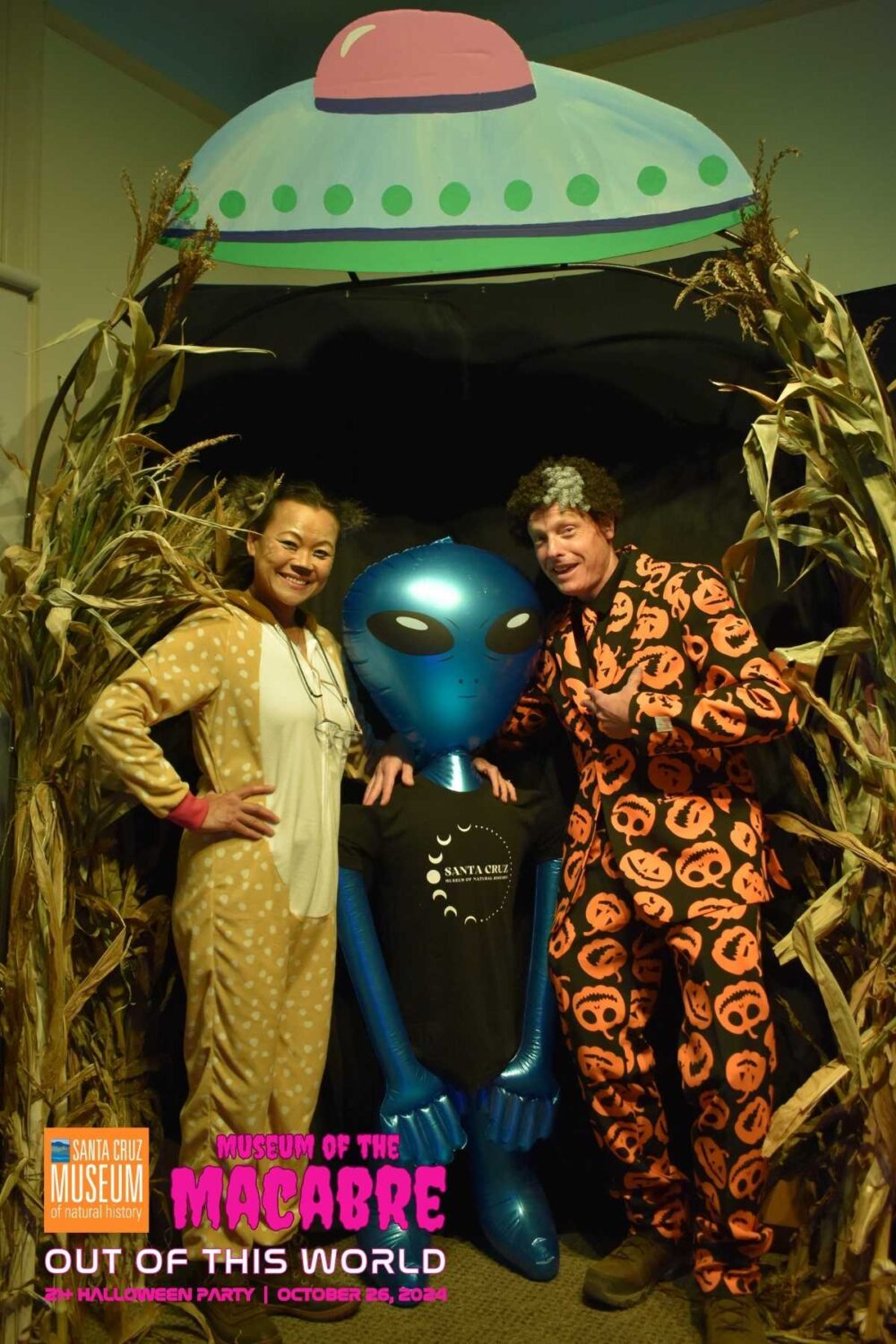

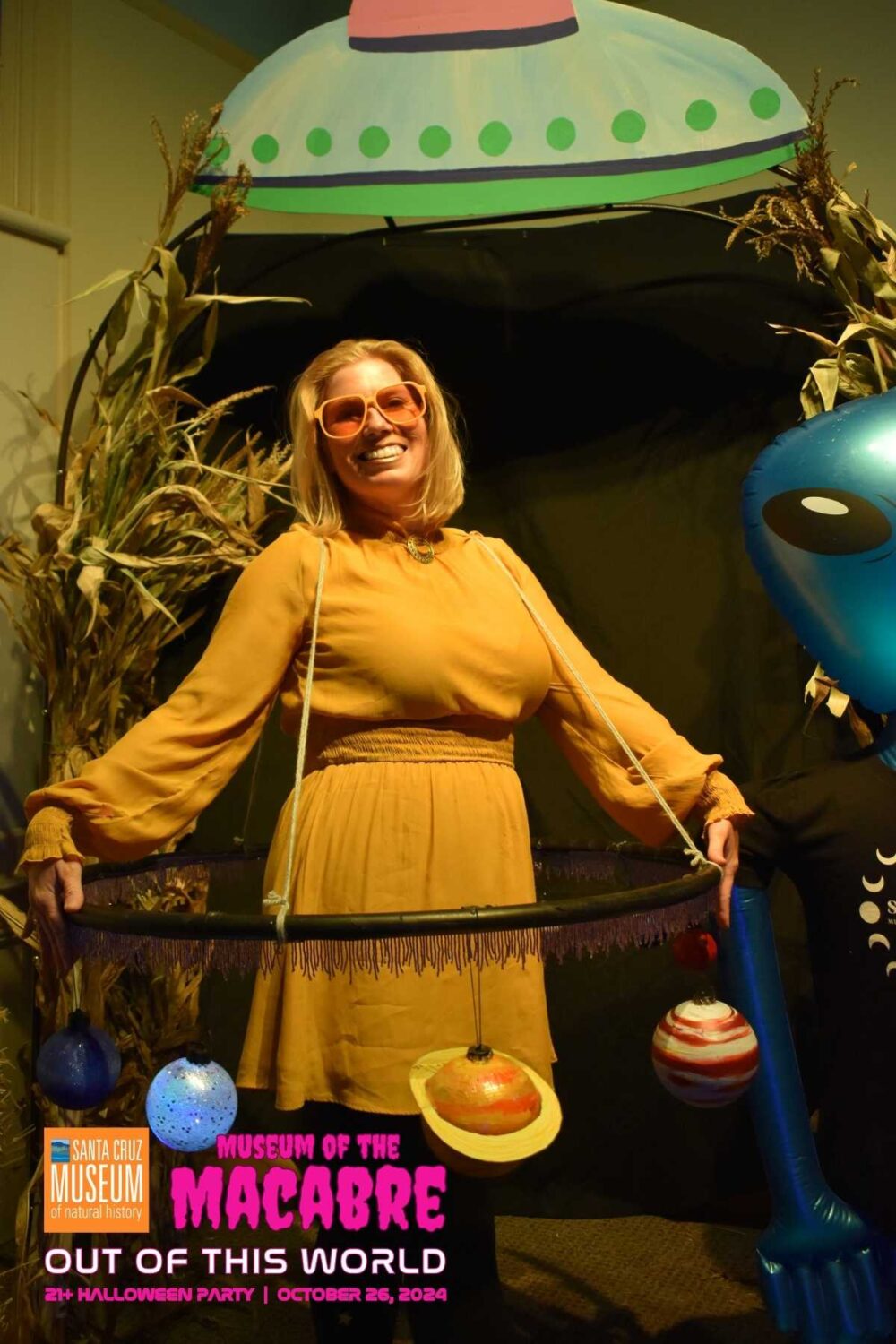
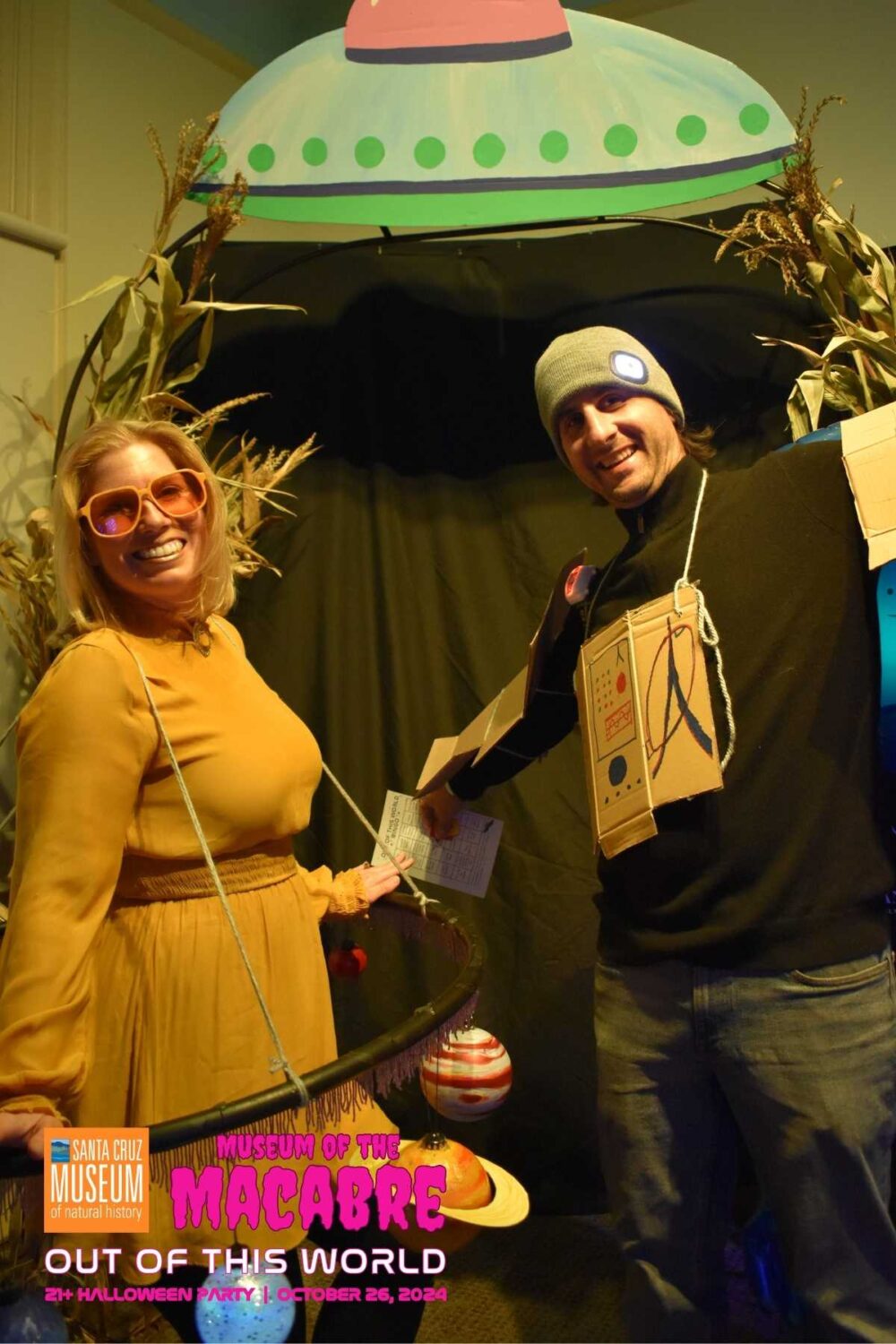
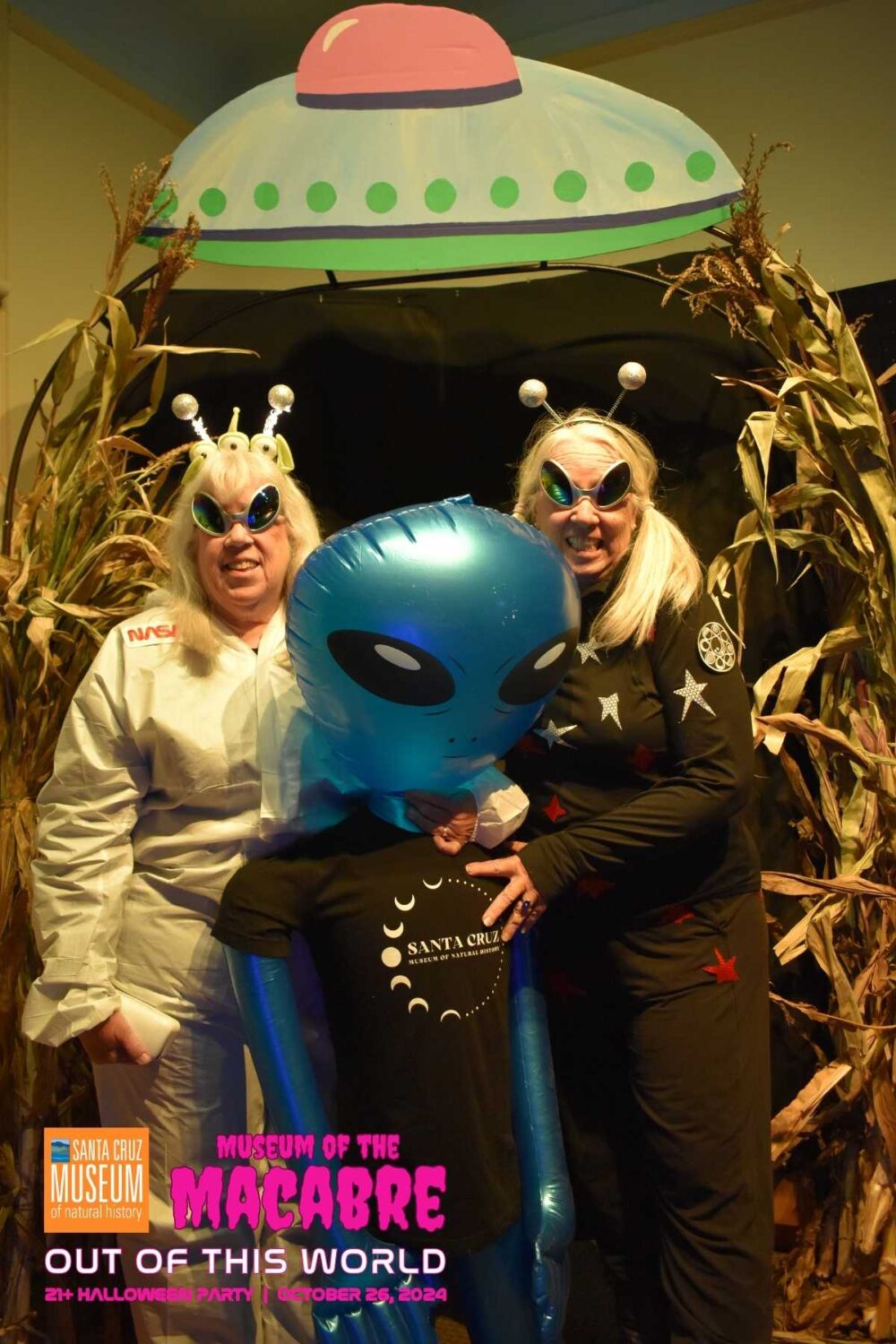
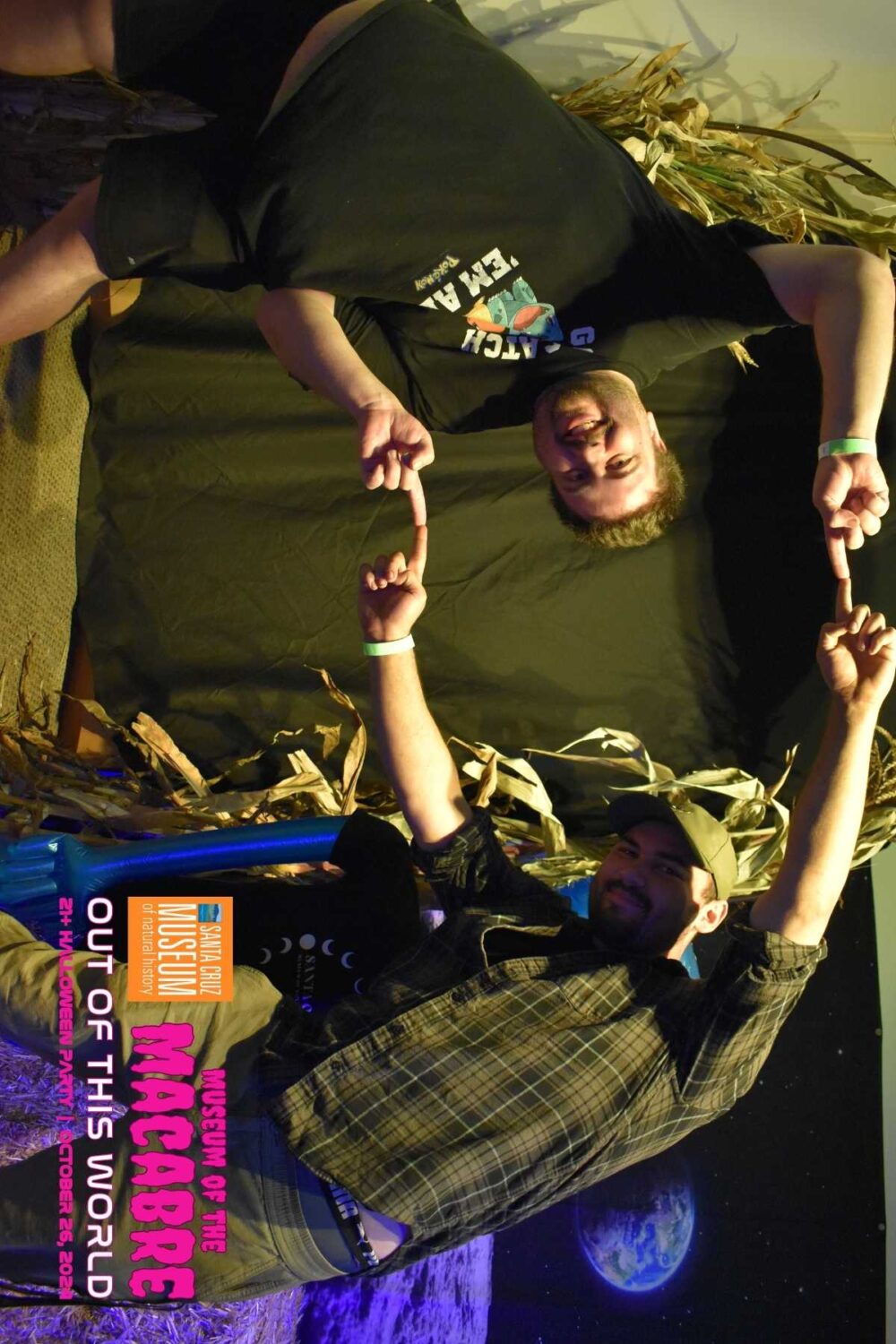

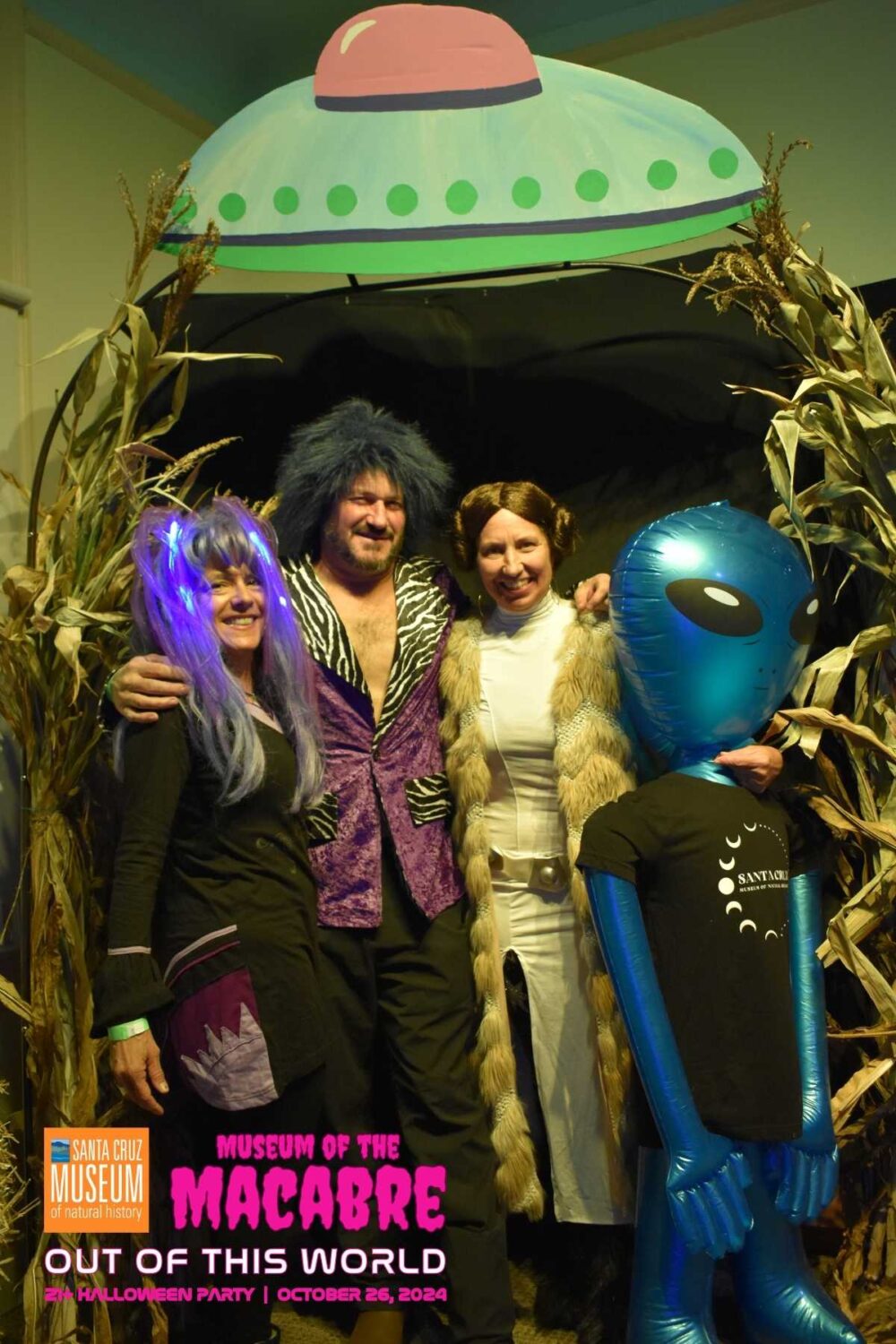
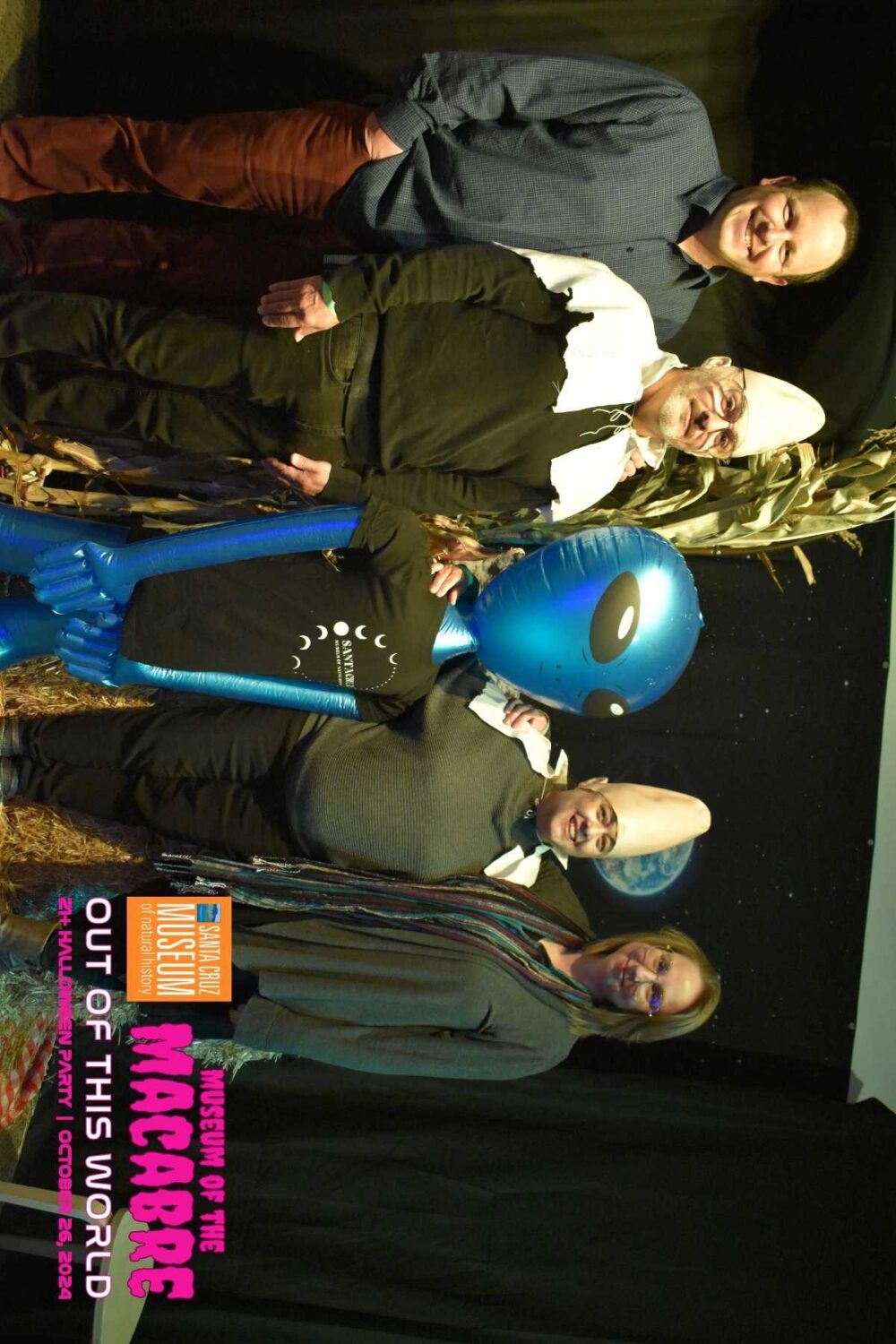

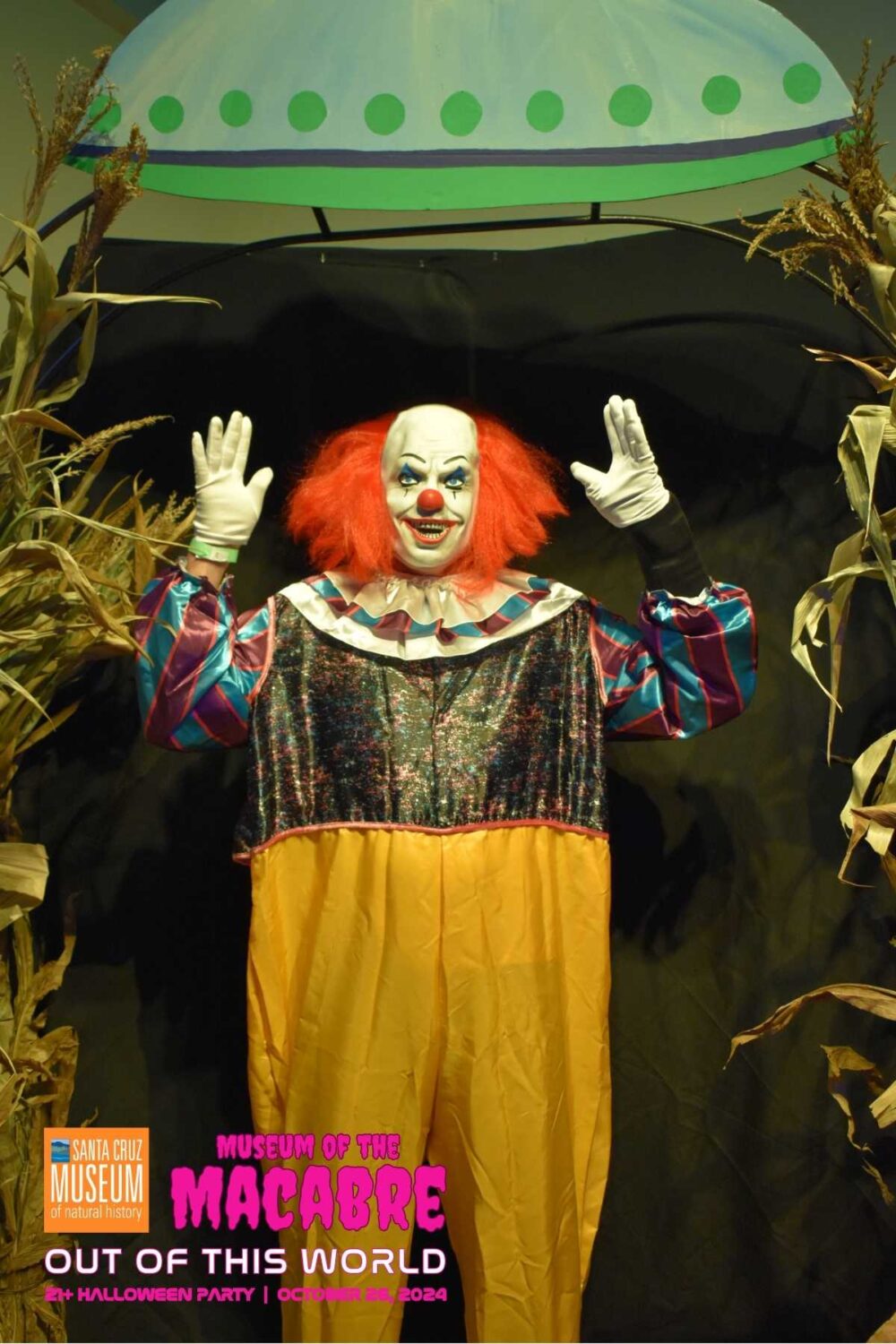
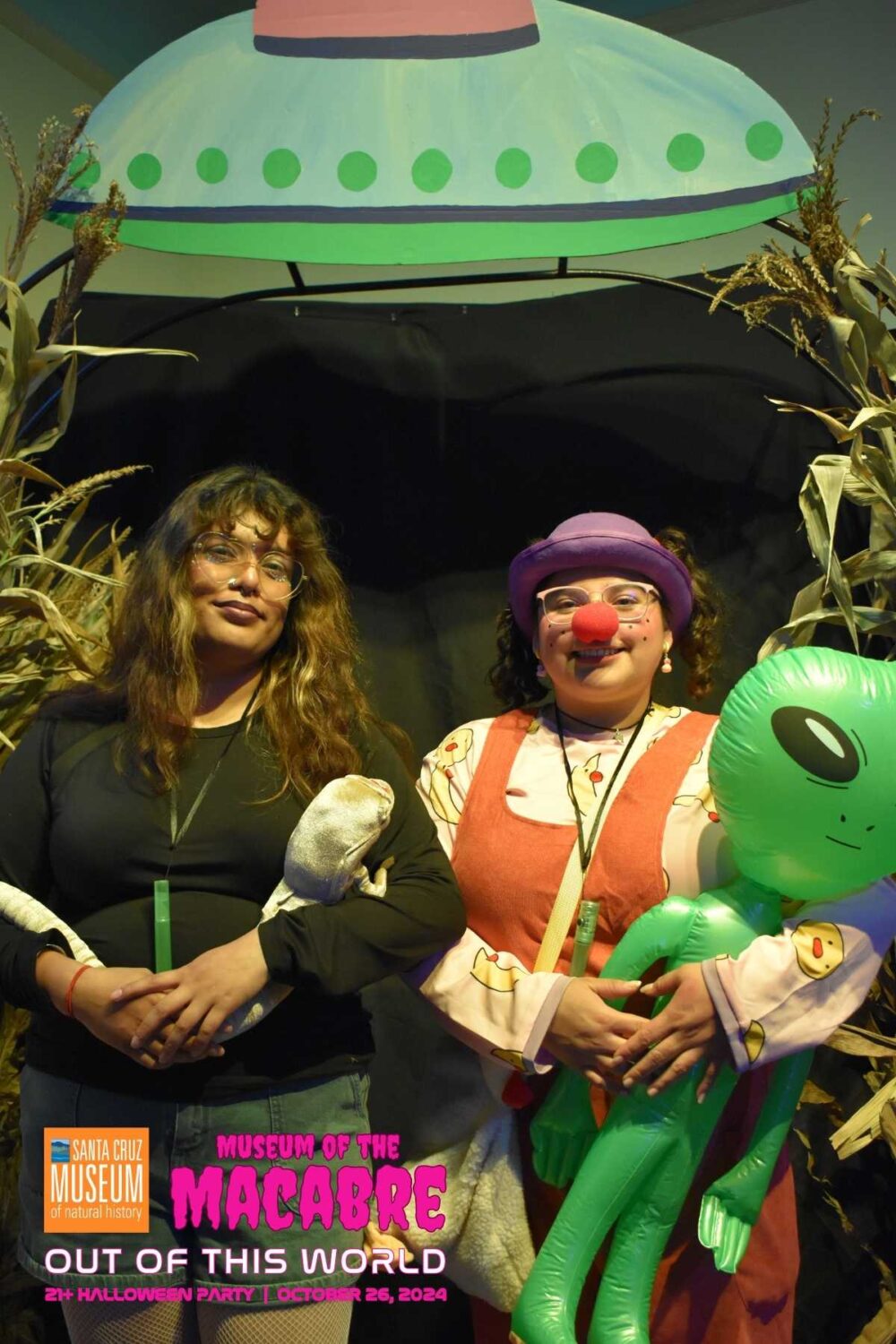
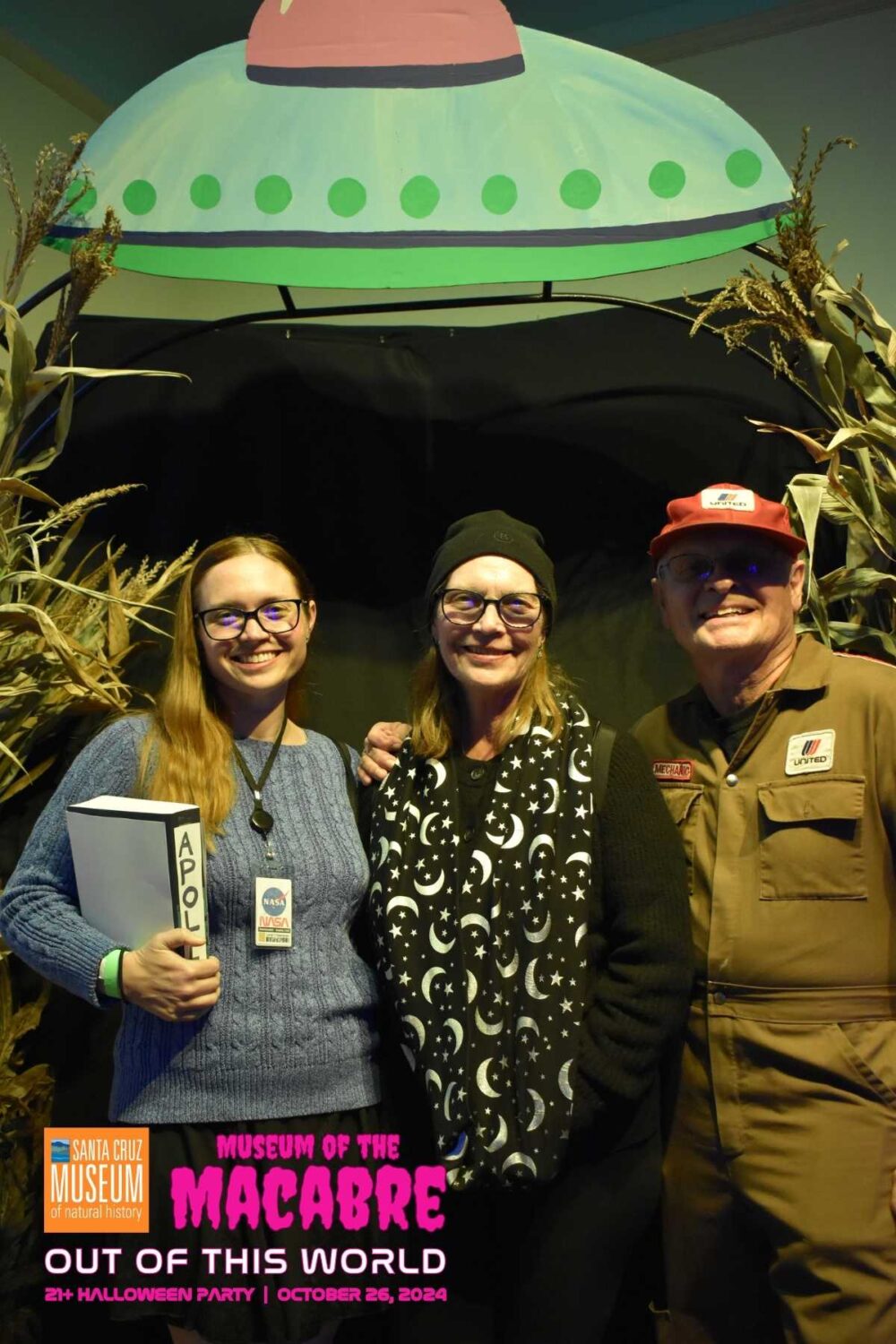
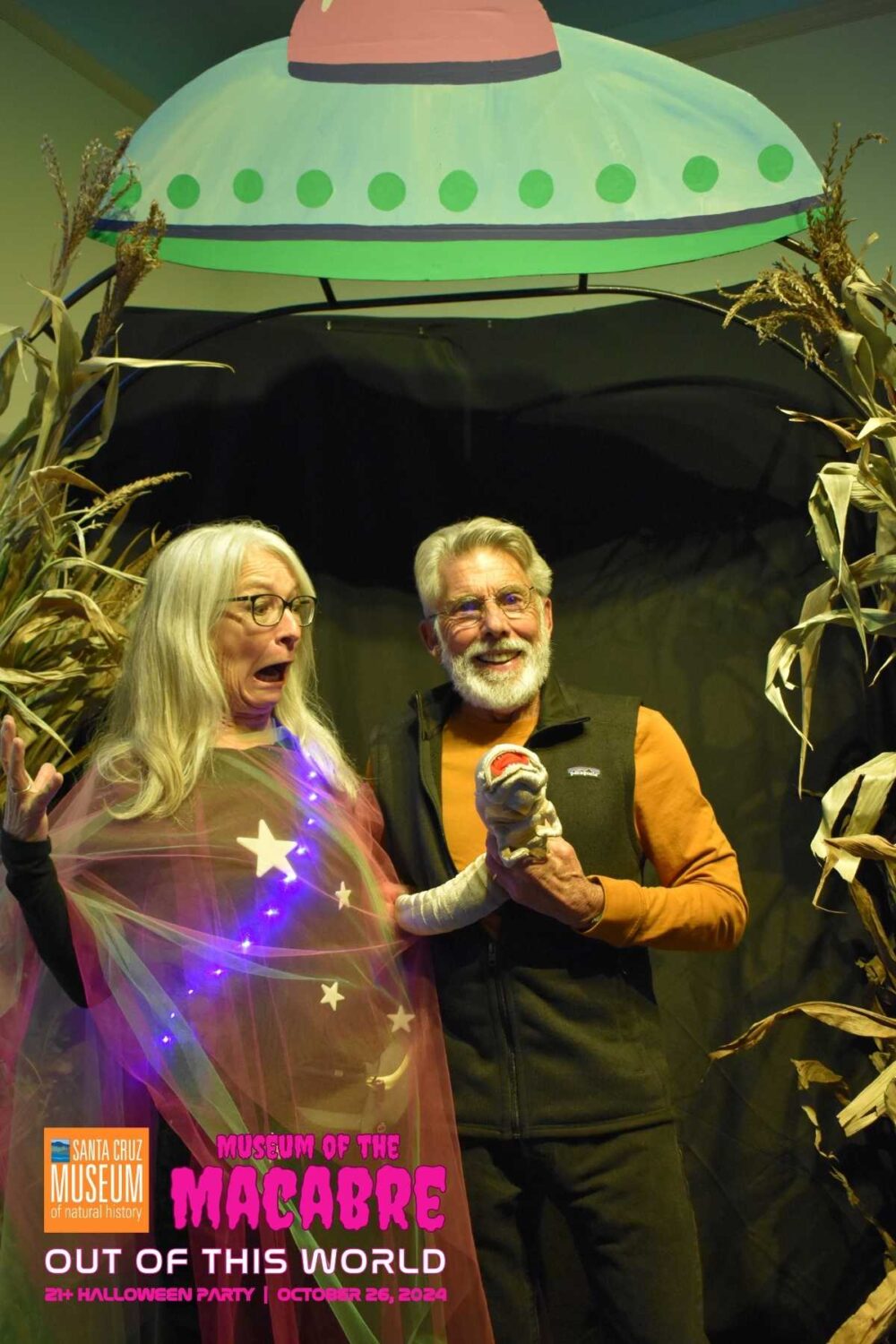
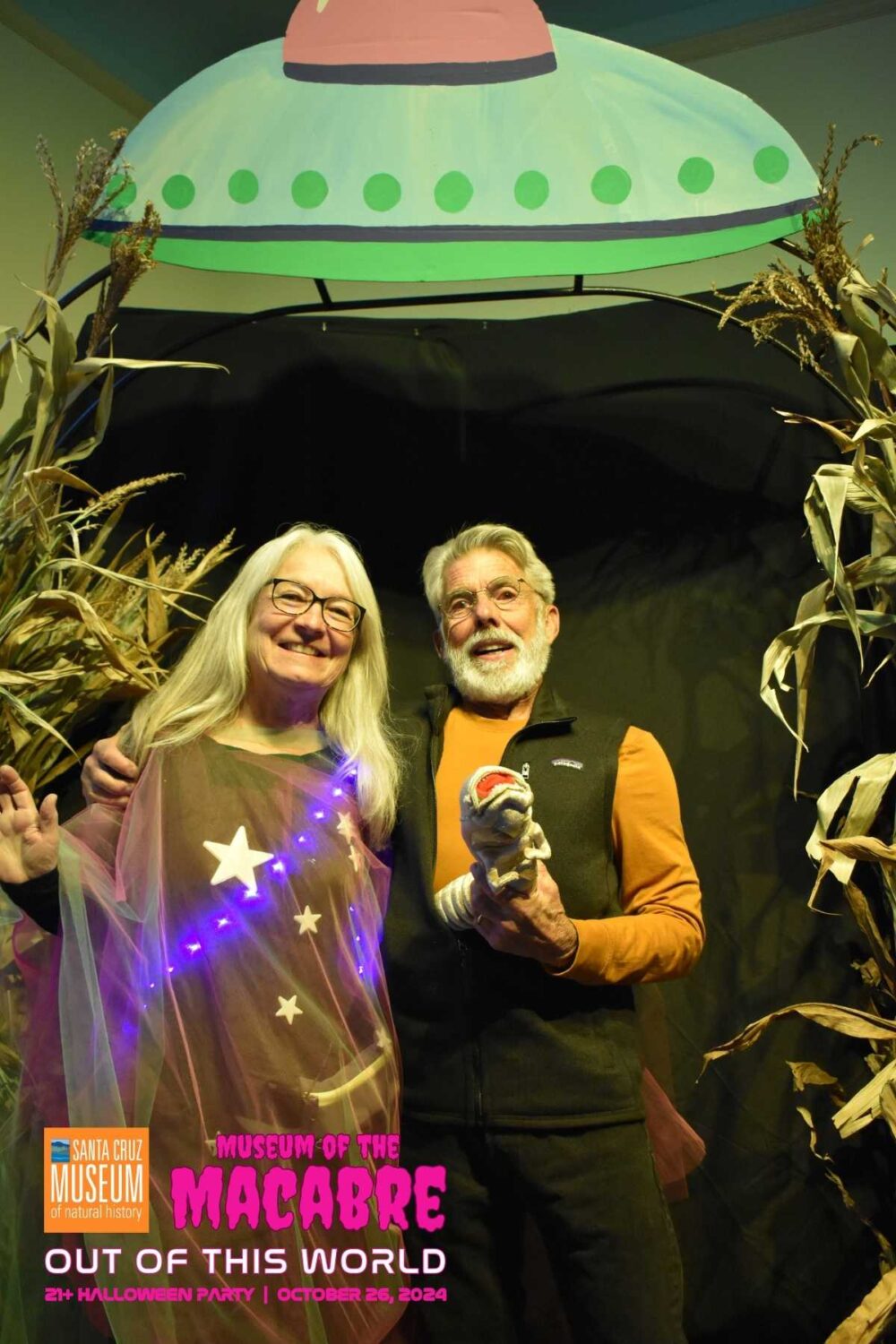
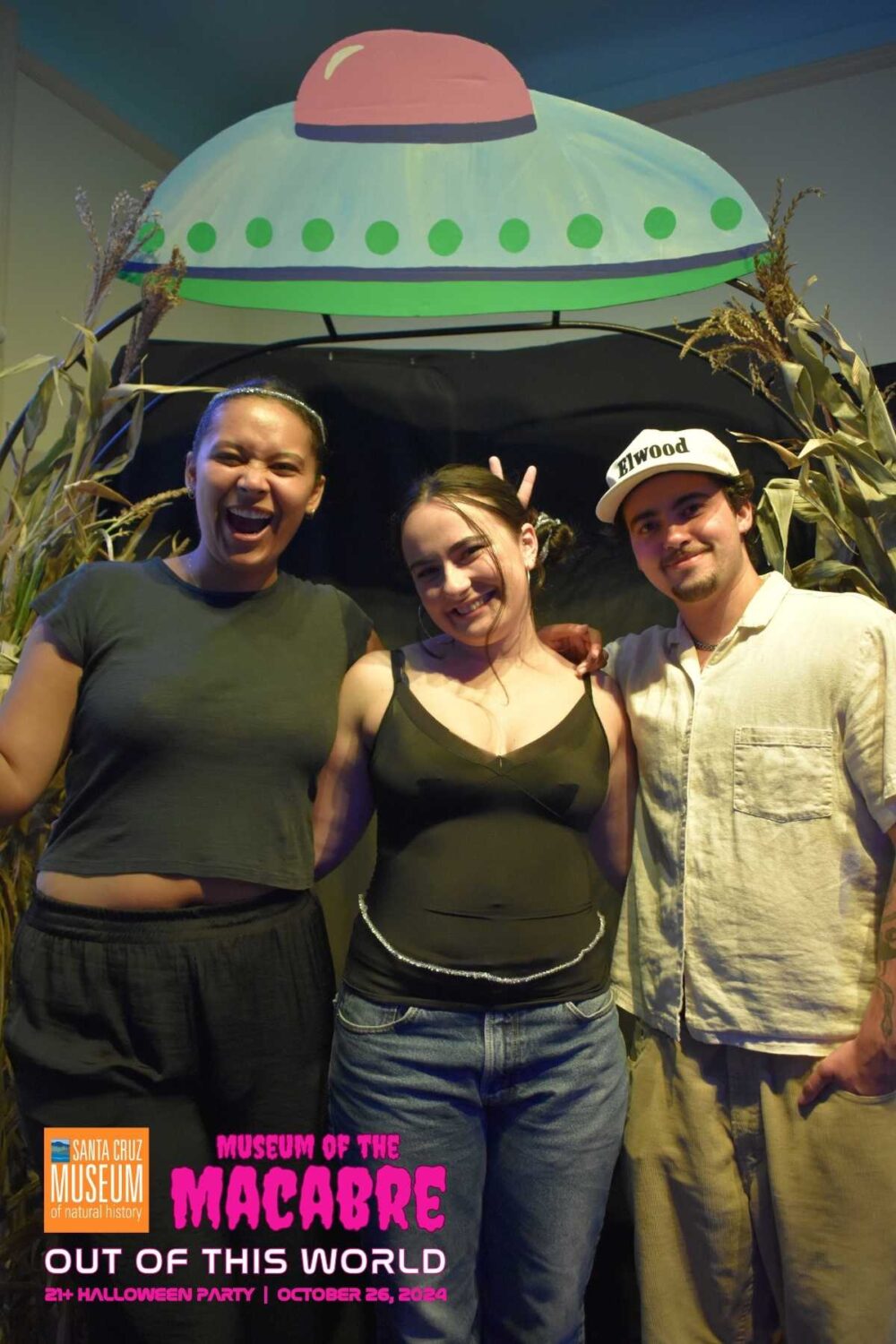
Meet Marcus: From Animal Caretaker Volunteer to Zoology Major
This past summer, the Museum bid farewell to long-time Live Animal Caretaker volunteer Marcus Anderson. As a child, Marcus visited the Museum regularly and from such a young age that studying its taxidermied specimens and live kingsnake Prometheus were among his first childhood memories. At age 13, Marcus became the Museum’s Live Animal Caretaker, looking after the Museum’s bees, Prometheus, and tidepool touch tank for five years. These experiences ignited a lifelong passion for animals, laying the groundwork for his future in zoology.
Since the age of 2, Marcus has had a profound fascination with Prometheus, who became more than just a subject of study; he became a friend and a source of inspiration.
Here they are pictured with the beloved California Kingsnake July, 2024 at the end of Marcus’ Volunteer journey.

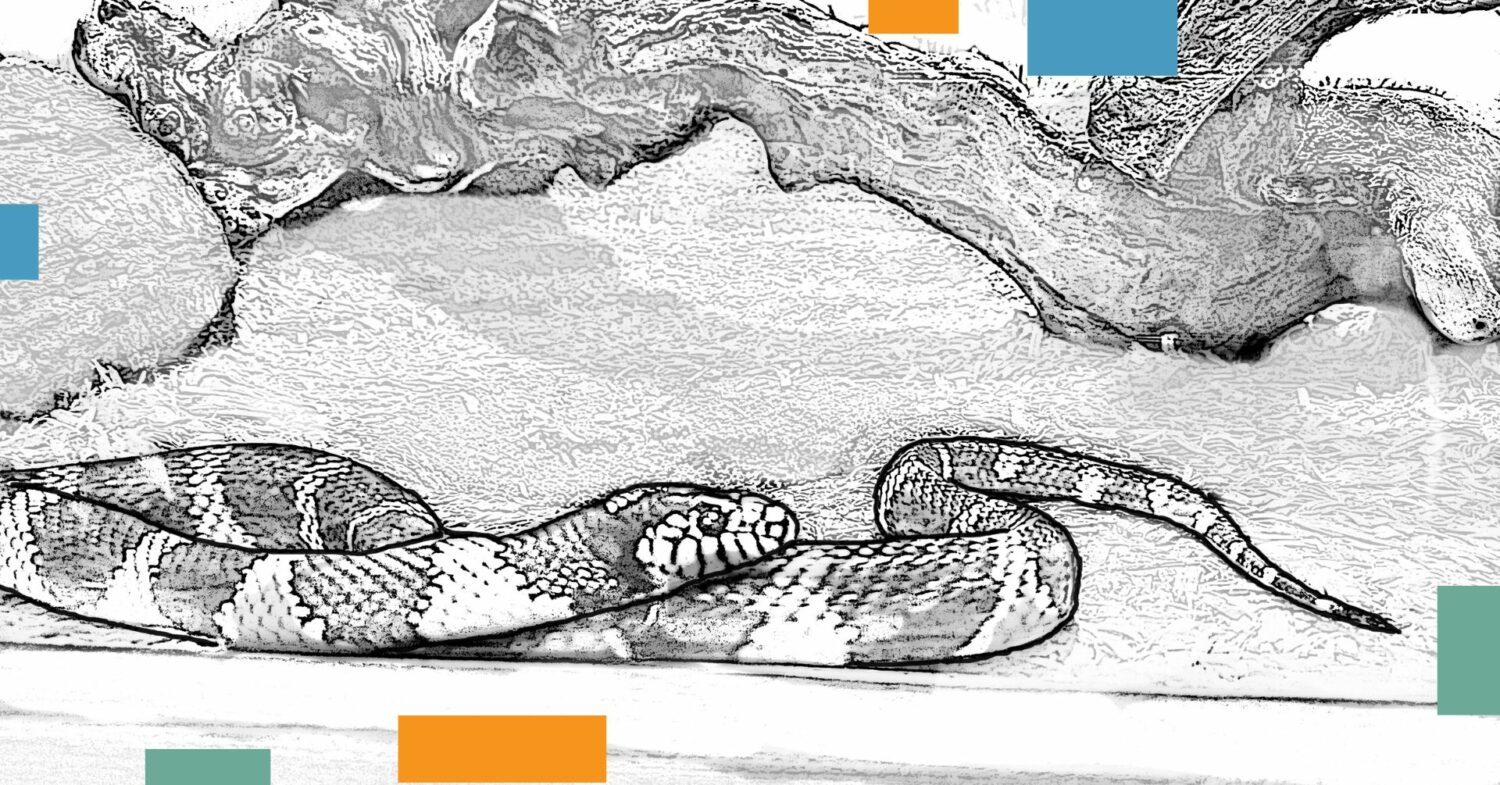
Prometheus, died October 6th, at the remarkable age of 27. A cherished member of our community since 1997, Prometheus was a beloved fixture among our exhibits, delighting generations of visitors with his striking appearance and engaging presence. Prometheus far exceeded the expected lifespan for a kingsnake in the wild, serving as a testament to the exceptional care he received from our dedicated staff. His longevity allowed him to become an integral part of the Museum’s educational mission, inspiring countless guests to learn more about reptiles and their ecosystems.
Marcus’ connection to Prometheus deepened his desire to understand reptiles, a commitment he solidified through rigorous academic pursuits. While being homeschooled, Marcus sought out additional learning opportunities, enrolling in courses at Cabrillo College. Completing an impressive 48 units per semester, he delved into subjects like Animal Behavior, enriching his understanding and fueling his passion for zoology.
Upon graduating high school, Marcus’s dedication and volunteerism did not go unnoticed. He was recruited by the University of Wyoming’s Department of Zoology and Physiology, earning a prestigious scholarship through the Tomé Scholars Program, along with a travel stipend for research. Excited about the journey ahead, he plans to travel to Australia, the Canary Islands, and Patagonia, aiming to expand his knowledge of reptiles in their natural habitats. These experiences will not only enhance his education but also empower him to become a more effective advocate for wildlife conservation.
Reflecting on his time at the Museum, Marcus shared how volunteering was his first real exposure to the field of zoology, igniting his dream of working with animals and fostering a deep respect for all living creatures.
“Volunteering at the Museum was my first introduction to zoology–when I realized I wanted to work with all the cool animals … everytime I came in I got to see the cool animals, the taxidermies, it’s always fun”
– Marcus

As a dedicated future herpetologist and ophiologist, Marcus aspires to open a reptile center after earning his BS Dual Major in Zoology & Environment & Natural Science, focusing on three core divisions: research, rescue, and education. His dream is to create a sanctuary where people can learn about reptiles, fostering a deeper understanding and appreciation for these often misunderstood creatures. He believes that education is key to changing perceptions, and he is determined to help the public connect with reptiles in a meaningful way.
The Museum is immensely proud of Marcus and his journey. His dedication and respect for living creatures serve as a powerful reminder of the impact one individual can have on the world. As he embarks on this new chapter, Marcus embodies the spirit of curiosity and commitment that inspires us all to explore the wonders of nature and strive for a brighter future in wildlife conservation.

Cotoni-Coast Dairies
For decades, local groups have fought to conserve the special cultural and natural resources on what is today the Cotoni-Coast Dairies property. Through maps, community voices and breathtaking landscapes, this exhibit explores this unique open space that is now part of the National Monument system.
A Terraced Landscape
The dynamic landscape of the Cotoni-Coast Dairies property is dominated by three cascading marine terraces. This unique topography supports a wide array of habitat types across six watersheds.
Supporting Indigenous Connections
For thousands of years, this land was inhabited by the Cotoni (Cho-toe-knee) people. Today, the Amah Mutsun Tribal Band is helping to restore Indigenous connections to the land by preserving sacred sites and protecting culturally significant plants on the property. The property’s name name honors the Cotoni people who first stewarded the land.
Preserving the Past
The rich history of this land is preserved in archeological sites throughout the property. In the late 1800s and early 1900s, the land was shaped by the expansion of Euro-American industries and technologies, including farming, cattle grazing, dairying, logging, and mining. These cultural resources help us understand the past, and can help shape the future.
Looking Ahead
In the late 1900s and early 2000s, diverse community groups and government agencies fought to protect the land from threats of development, ultimately securing public ownership of the property through a national monument designation. As the property is made more accessible to the public, what do you most want to know about it? What hopes and dreams do you have for the property’s future?
Photos courtesy BLM and Santa Cruz Mountains Trails Stewardship
This Exhibit Made Possible With Support From
FOSSIL SLOTH BONE FOUND IN THE SANTA CRUZ MOUNTAINS, THE FIRST OF ITS KIND REPORTED IN THIS REGION
March 20, 2024
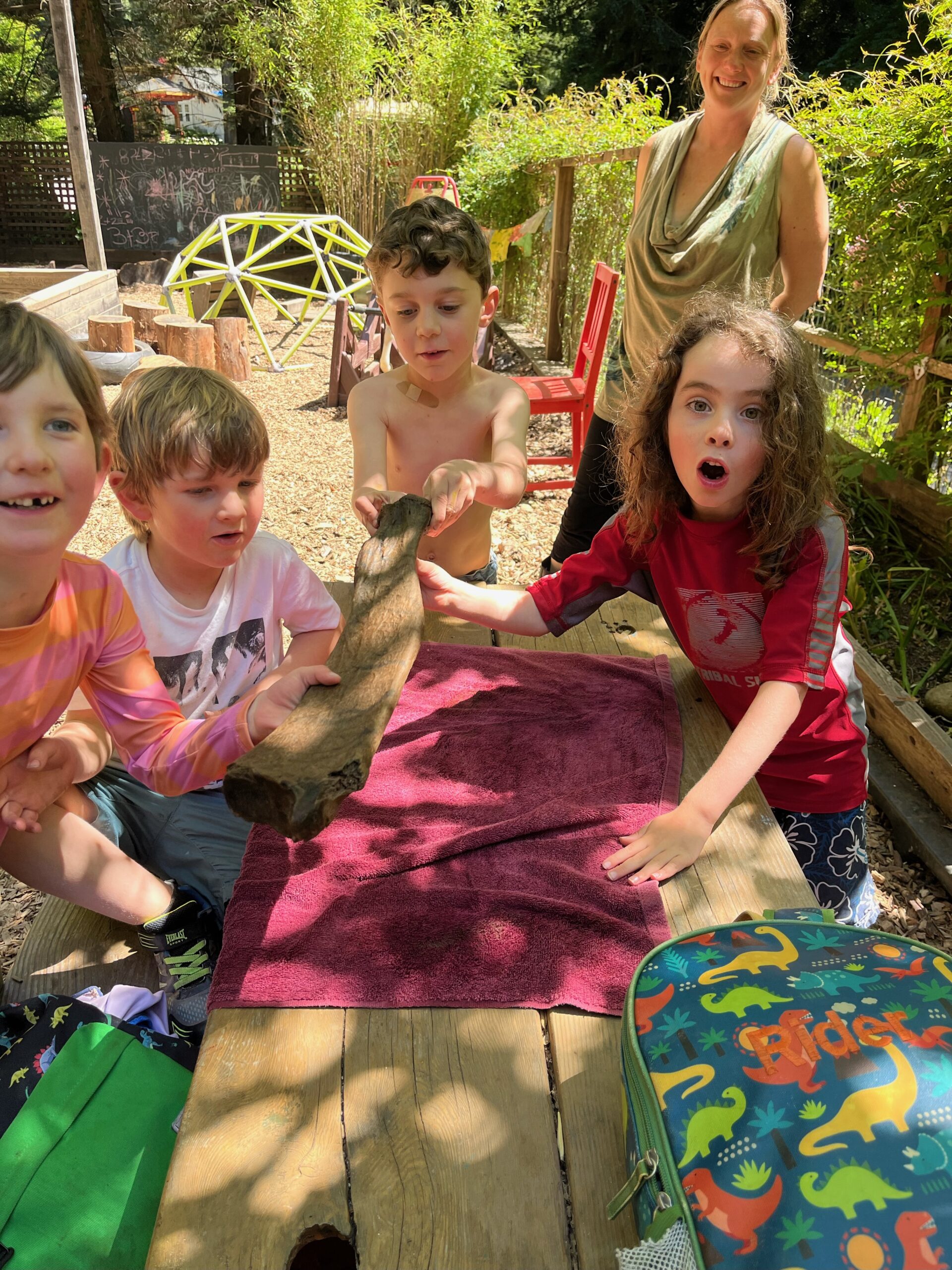
Local students from Tara Redwood School playing in a Santa Cruz Mountains creek last spring found a strange object that they suspected was a bone from a large animal. This bone was brought to the Santa Cruz Museum of Natural History where their Paleontology Collections Advisor, Wayne Thompson, recognized it as a fossil arm bone (left radius), likely belonging to an ancient sloth. Thompson called in fossil sloth experts who confirmed that this bone came from a Jefferson’s ground sloth (Megalonyx jeffersonii), making this specimen the first reported fossil evidence for this species in Santa Cruz County.
“Megalonyx jeffersonii is one of the very first fossils documented in North America – it’s just one of those iconic animals that more people should know about,” states ground sloth expert Melissa Macias on the importance of this discovery.
The Museum of Natural History is currently working with local scientists to determine whether it is possible to come up with a precise age for this specimen. In the meantime, they know it was found in an Ice Age river bank deposit, placing it in a ballpark of between 11,500 years and 300,000 years old. This find follows on the heels of the mastodon tooth that was discovered on Rio Del Mar beach in 2023. Both of these fossils are from a similar era and their discoveries increase our understanding of what this region would have looked like in the Pleistocene.
“Fossils are a great way to engage people with the deep past,” said Felicia Van Stolk, the Museum’s Executive Director, “and we’re so excited students made this important discovery that will continue to inspire generations of museum visitors and scientists.”



About Megalonyx jeffersonii
1. What is a sloth ?
Sloths are members of a group of mammals called Xenarthrans. The name Xenarthran comes from ancient Greek words meaning “strange” and “joint”, which refers to the unusual and unique shape of these animals’ vertebral joints. They are closely related to anteaters and armadillos.
2. Comparison with modern sloths
Ground sloths are distant cousins of today’s modern sloths inhabiting central and south America. The two modern groups of tree-dwelling sloths evolved independently from land-dwelling ancestors.
3. What is Jefferson’s ground sloth ?
Jefferson’s ground sloths were large herbivorous mammals with blunt snouts that roamed the earth in the past. Comparable to an ox in size, they could grow up to three meters long and weigh between 2200 and 2425 lbs. They inhabited woodlands and forests near rivers and lakes, using their long, sharp claws to forage for food, such as stripping leaves from branches. They were capable of walking on all fours as well as standing on their hind legs, and used caves for shelter.
4. The origin of its name
The term ‘Megalonyx’ is Greek for ‘great claw’, describing the distinctive claws of sloths in this genus. The species name ‘jeffersonii’ pays homage to Thomas Jefferson who presented a scientific paper on Megalonyx to the American Philosophical Society in 1797, marking the dawn of vertebrate paleontology in North America.
5. When did ground sloths inhabit the Earth?
Megalonyx is part of a family group of sloths that appears to have emerged in South America about 30 million years ago, migrating onto the North American continent as early as 8 million years ago by crossing the Isthmus of Panama Land Bridge. Several species of ground sloths were found across North and South America during the Ice Age, during which time they were sometimes hunted by Indigenous people who shared the landscape with these mega mammals.
Jefferson’s ground sloth remains are commonly found in the western United States, the Great Lakes region, and Florida, but specimens of this species from California are rare. They went extinct around 11,000 years ago and scientists are still investigating the cause of their extinction.
6. What was the Jefferson ground sloth’s habitat?
Jefferson’s ground sloth lived in cool, wet, spruce-dominated forests in riparian settings and gallery forests associated with rivers, much like the American Mastodon, Mammut americanum.
7. Presence of sloths in the SF-Monterey bay areas
The remains of Megalonyx jeffersonii are rarely found in California, with a higher concentration of findings in Shasta County and Los Angeles County. This specimen marks the first confirmed ground sloth discovery in Santa Cruz County and is one of the few confirmed specimens in California.

Today’s rainforest sloths are very different in size and look from the ancient ground sloth.
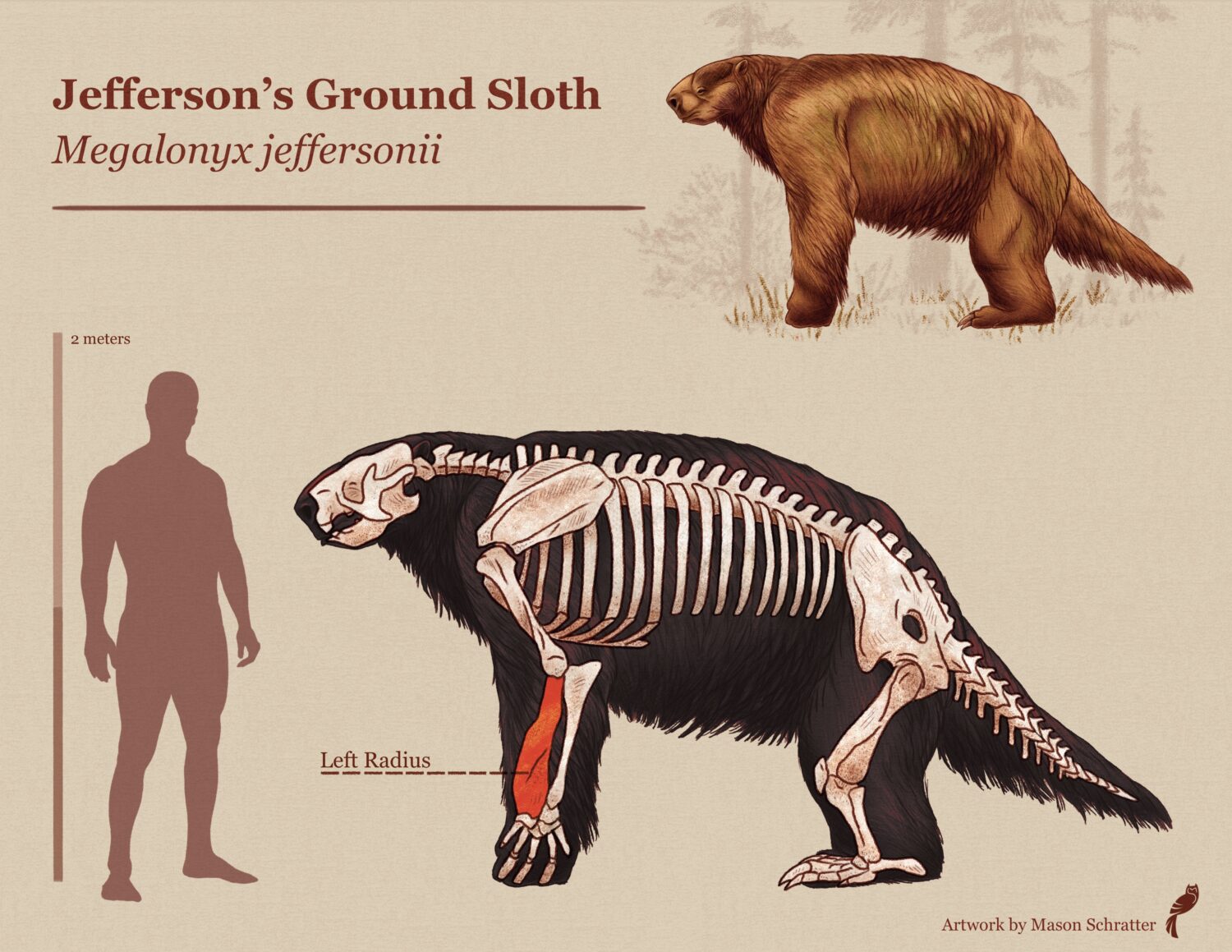
Artwork by Mason Schratter
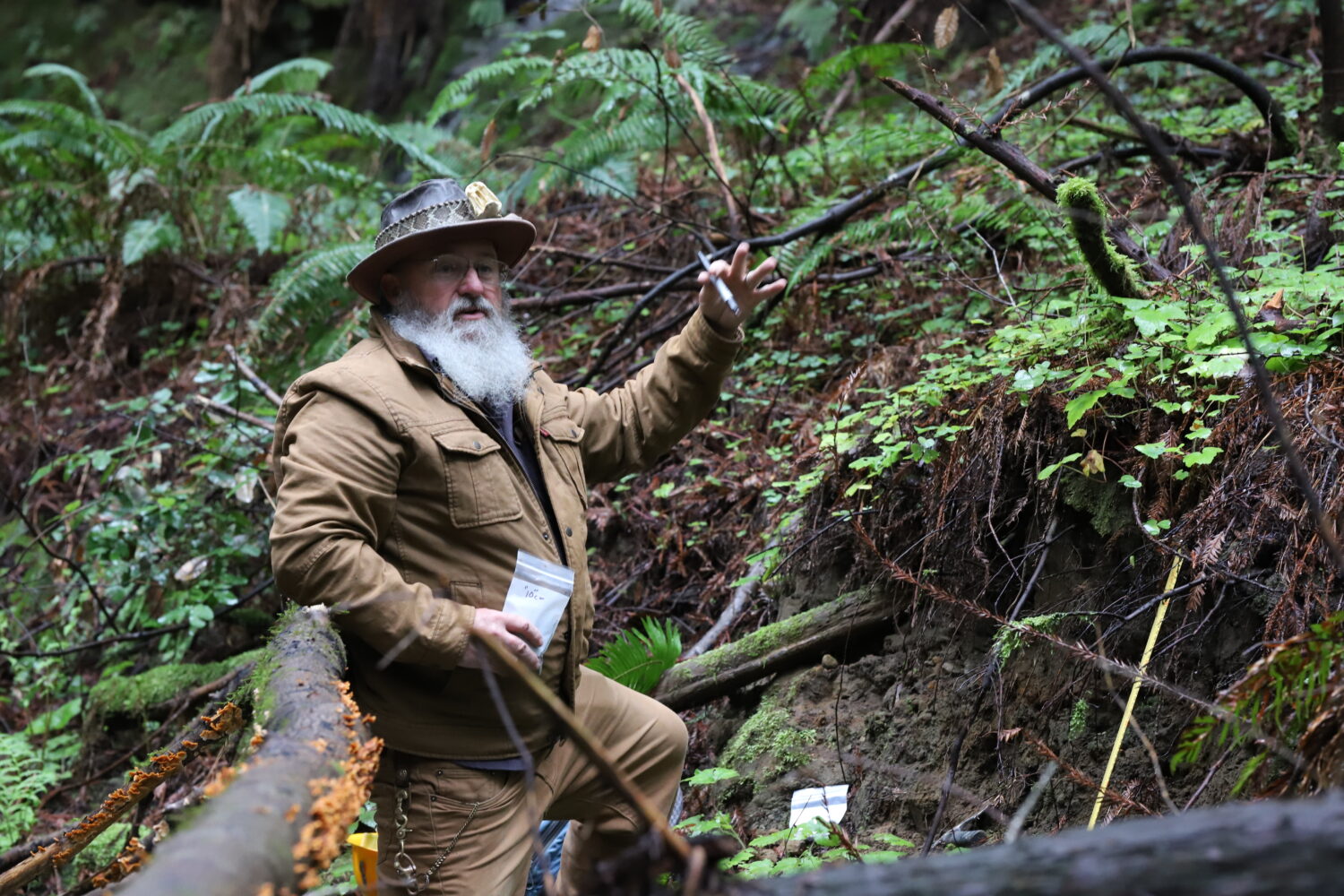
Wayne Thompson, Paleontology advisor for the Museum’s collection
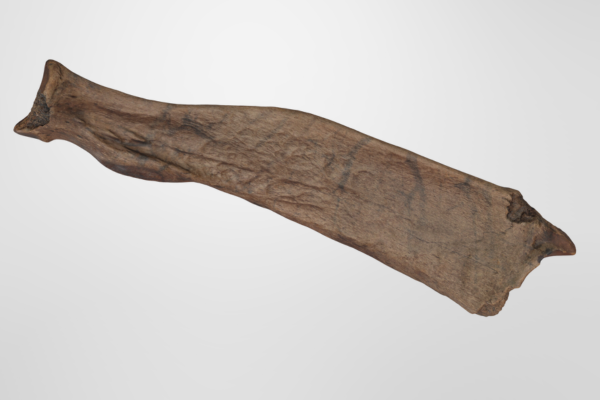
3-D image scan of the Jefferson sloth bone at the Santa Cruz Museum of Natural History
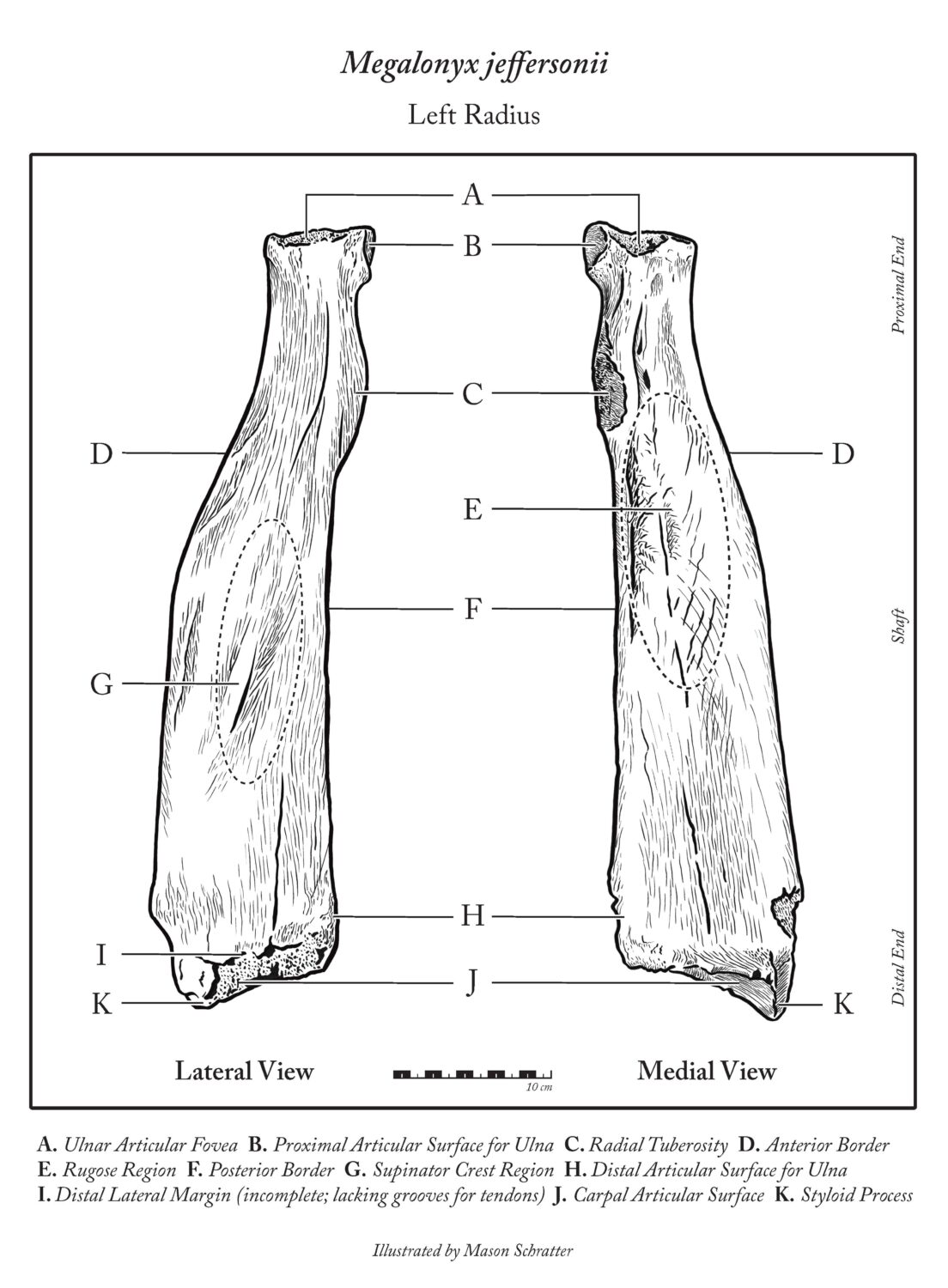
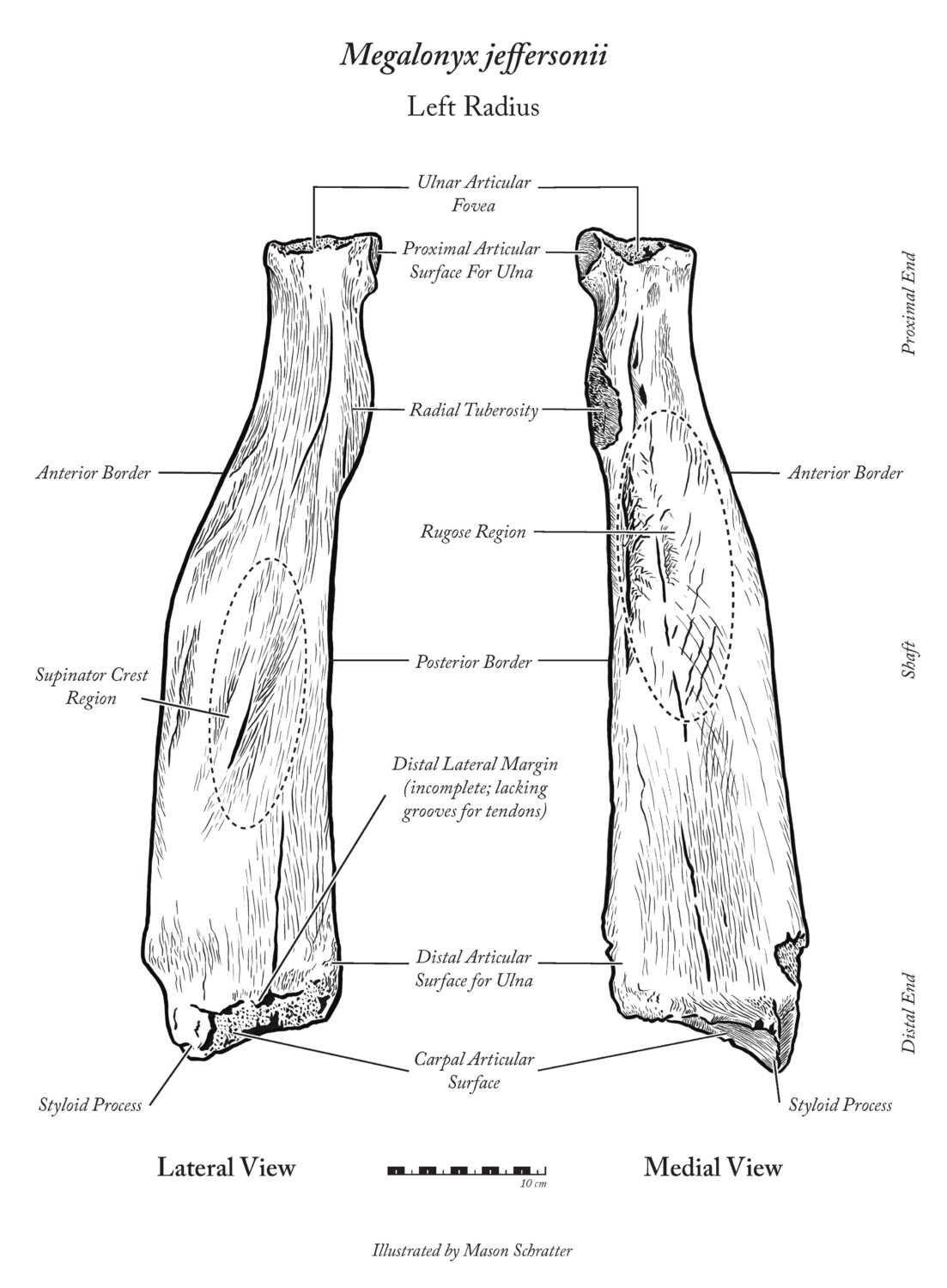
3-D image video from Wayne Thompson, Paleontology Advisor for the Museum
The Museum worked with local science illustrator Mason Schratter to bring this species back to life in a gorgeous depiction of Santa Cruz in the Pleistocene. This artwork will be exhibited alongside the fossil in the Museum’s annual exhibit of science illustration, The Art of Nature, open March 23- May 26, 2024. After the exhibit, the fossil will be carefully stored in the Museum’s collection where it will be accessible for research and future publication.
Ethics of Collecting
- Always know before you go when collecting.
- Determine whose property you are on and what their rules are for collecting.
- Generally, collecting fossils is not allowed on most public land.
Fast Facts
- The fossil bone is a left radius found in Santa Cruz County
- The species is Megalonyx jeffersonii, Jefferson’s ground sloth
- Dates 11,500 – 300,000 years old, from the Pleistocene Epoch
- On exhibit March 23 – May 26, 2024
For more information, check out our guide to collecting fossils
Unearthing Local Geology
“What on earth,” asks Frank Perry, “could tiny plankton drifting in the sea have in common with arrowheads and spear points made by people who lived here thousands of years ago?”
In his new book, Geology of the Northern Monterey Bay Region, local author Frank Perry delves deeply into the ways that geology consists of surprising connections. Grounding the reader in the stories of the rocks that underlie our lives, he artfully weaves together ancient origins, childhood nostalgia, fun facts, fossil finds, and more. The book goes above and beyond straightforward storytelling, with themed activities and field trips thrown into the mix.
This richly varied and engaging approach is especially important when unearthing the geology of a place like the Monterey Bay area. Complex and largely obscured by thick soils and dense vegetation, “our rocks” as Frank notes “have not given up their secrets easily.” Our area has more than 14 geologic formations, the units that geologists use to study rocks, several of which are famous for their fossils. In the face of this complexity, the book illuminates the history of how we have come to know the world beneath our feet – whether through observing ancient sand ripples, encountering cave creatures, or finding local faults.
Readers of the book will also find their way into the Museum’s collections, photographs of which are featured throughout the book. Similar to many of our more subtle local geologic features, our collections are often out of sight and out of mind for all but our staff. Nonetheless, they are rich in stories that connect people to nature, and Frank finds a place for many of these, including the commonalities between plankton and spear points.

Beginning with the quote at the opening of this blog, chapter seventeen of the book is illustrated in part by the following artifacts: a carved diatomite specimen, a chert cobble, and a chert point. The carving is light and airy, and it is difficult to imagine how the artist managed to inscribe an image without crushing the medium to dust. The cobble has a stark heft in comparison, with a hardness that isn’t hard to imagine being useful in the spear point of the same material. Despite these differences, the rock types are cozy bedfellows in certain parts of the Monterey Formation, a local oil-rich sedimentary formation that ranges locally between 12 to 15 million years old.



In addition to their common formation origin, these artifacts have other commonalities: we’ve used each of them in exhibits to tell stories about how people connect to nature. In this case, we have different stories of carved stone, from the First Peoples to more recent European immigrants.
But what about the crux of the original question, the connection between plankton and points? For that, you’ll have to grab a copy of Frank’s book from the Museum Store, either online or in person. Better yet, join us for the launch party on March 15, 2024, to see these specimens and others used in the book on display while the author himself treats us to a talk on more of the interesting connections carved out by local geology.

Making Mastodons Come to Life
Fossils bring the past to life, but they can’t always take us there. While the smallest sliver of ancient bone can hold the key to scientific mysteries, it can’t always immerse us in the ancient world itself.
Enter the work of the paleoartist, the illustrator who excels at engaging contemporary science to create vivid depictions of forgotten worlds. The museum is delighted to share brand new imagery from one such local artist, Mason Schratter. Mason, a graduate of Cal State University Monterey Bay’s Science Illustration certificate program, spent this fall focused on bringing our Pacific mastodon skull to life.
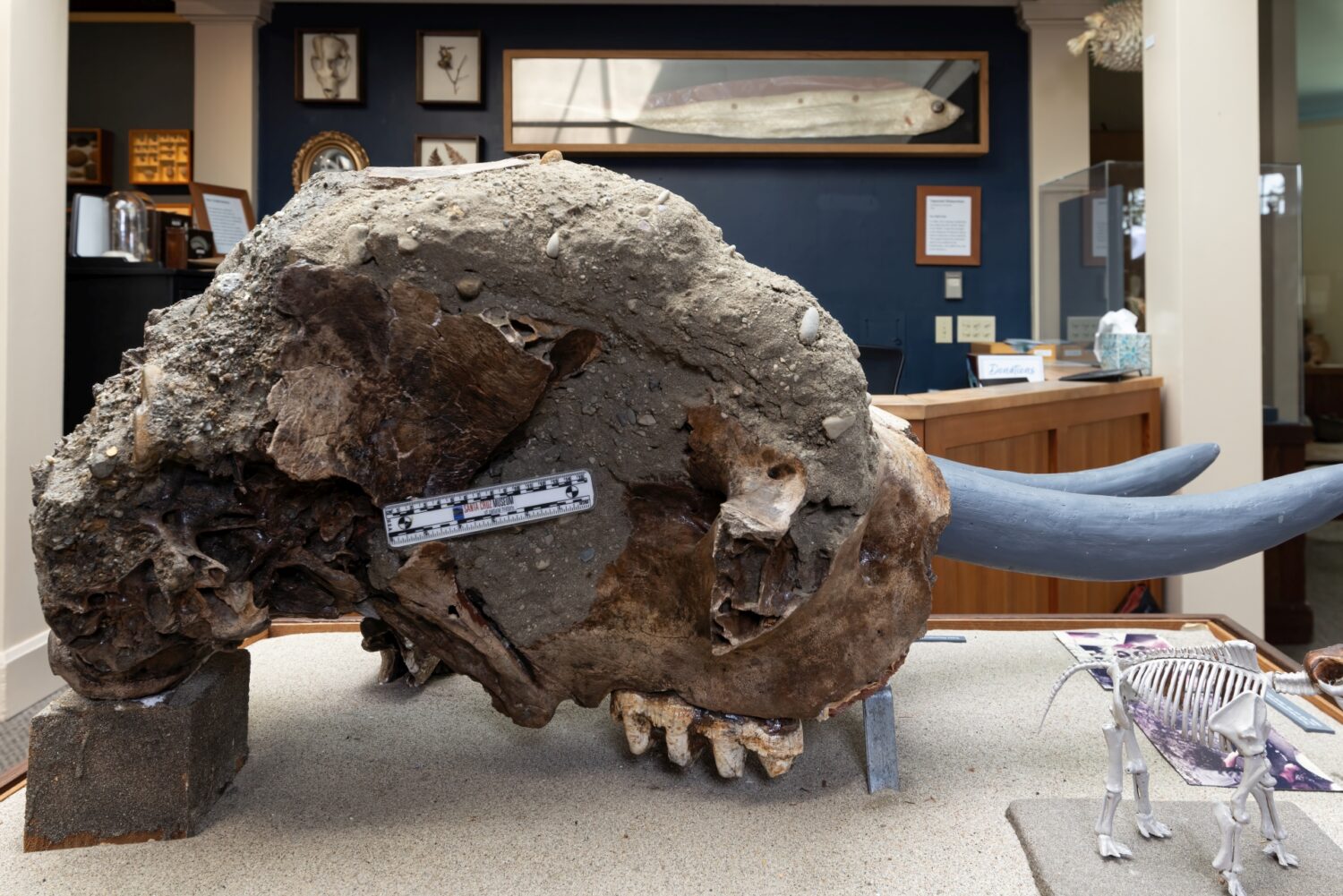
A long time fan favorite, the mastodon skull has presided over our exhibit halls since it was first wrenched from a local creekbed in 1980. One of the few documented mastodon finds from Santa Cruz County, the skull is also the most complete mastodon fossil found locally. In the illustration below, you can see Mason’s straightforward depiction of the mastodon as a specimen.
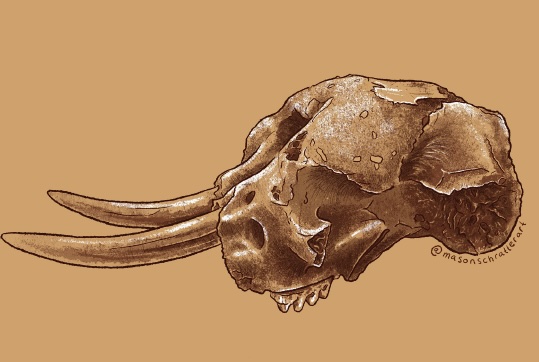
Specimen illustrations like this are incredibly useful for exhibiting extinct animals to the general public. They help us envision aspects that are missing, such as the tusks that had to be recreated for the display. It also helps us focus on significant anatomical elements that might be harder to discern for the average viewer, such as a clear visualization of the proper orientation of a mastodon tooth: it is the lumpy parts that peak out of the jaw bone, rather than the longer, more stalk-like roots of the tooth. Detailed specimen depictions can be useful for scientific papers, while stylized illustrations can be useful for posters and merchandise.
But paleoart is more than just illustrating specimens, it is the art of using science to inform the viewer of prehistoric life – living creatures in their environments. Enter the lush landscape of Mason’s mastodon scene, depicting a juvenile mastodon at play alongside a stream. Dappled sunlight drifts across the soft textures of rich flora and furry fauna, luring the viewer into the hazy ambiance of an ancient forest. The playful pose of the young mastodon is especially enchanting, reminding museum goers that despite the hulking size of our mastodon skull, the animal it came from was not even fully grown.
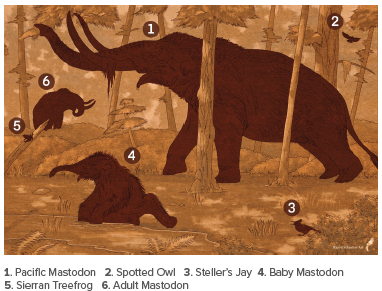
The immersive aspects of this landscape wouldn’t be worthwhile if not for the science that informs the artistic choices – Mason has adult mastodons browsing for food amongst Douglas firs because pollen records show that Douglas firs were prominent in local forests during the Pleistocene epoch (2.58 million to 11,700 years ago). He chose to include animals such as the Steller’s jay and the Sierran treefrog, known from the fossil record to have existed contemporaneously in comparable habitats, to emphasize that while these mastodons may feel impossibly stuck in the past, they co-existed with animals that are part of our present.
Paleoart can do more than transport us, it can also surprise us, upending misplaced notions of distant eras. Viewers may notice the absence of ice in this vision of the “ice age”, the nickname by which the Pleistocene epoch is more commonly known. Rather than being a single stable cold period, the Pleistocene was characterized by cool periods of advancing glaciers across the globe, with warmer interglacial periods. Despite not being frosted with a constant layer of ice, Pleistocene Santa Cruz would still have been generally cooler than it is today.
We love these depictions of our mastodon, but we’d love help expanding our mental landscape of Pleistocene Santa Cruz. To help us out, make like Mason and the mastodon, and explore illustrating your own ice age creatures!
Get started by going to the contest page on the museum’s website. Need inspiration? Check out this video by museum educator Hannah Caisse on drawing dinosaurs for a deeper dive into paleoart’s depiction of dinosaurs, or explore these hands on guides and classic examples of paleoart outside of the dino mold.

